Exxon Valdez
description: an oil tanker that spilled 10.8 million gallons of crude oil into Alaska's Prince William Sound in 1989, causing one of the largest environmental disasters in U.S. history
129 results
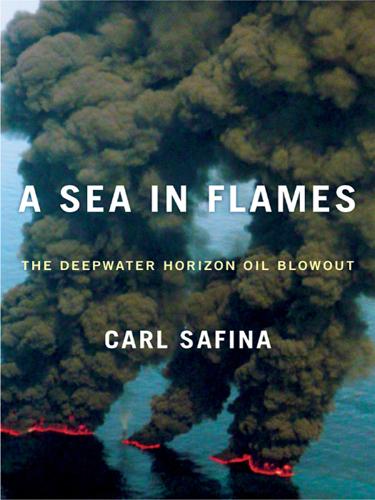
A Sea in Flames: The Deepwater Horizon Oil Blowout
by
Carl Safina
Published 18 Apr 2011
New Brunswick, NJ: Rutgers University Press, 1997. 53 Herring egg and larval mortality following Exxon Valdez M. D. McGurk and Evelyn D. Brown, “Egg–Larval Mortality of Pacific Herring in Prince William Sound, Alaska, After the Exxon Valdez Oil Spill,” Canadian Journal of Fisheries and Aquatic Science 53, no. 10 (1996): 2343–54. See also B. L. Norcross et al., “Distribution, Abundance, Morphological Condition, and Cytogenetic Abnormalities of Larval Herring in Prince William Sound, Alaska, Following the Exxon Valdez Oil Spill,” Canadian Journal of Fisheries and Aquatic Science 53, no. 10 (1996): 2376–87. See also J. E. Hose et al., “Sublethal Effects of the Exxon Valdez Oil Spill on Herring Embryos and Larvae: Morphological, Cytogenetic, and Histopathological Assessments, 1989–1991,” Canadian Journal of Fisheries and Aquatic Science 53, no. 10 (1996): 2355–65. 54 Different things get hurt at different rates C.
…
But can they protect sea turtles? Can they avoid interrupting dolphins and whales? Two decades after the Exxon Valdez ran aground, its oil can still be found under rocks along Prince William Sound. Scratch and sniff. There’s that terror here—that it will never be back to normal. Or that in the years it takes, communities will die and families disintegrate. But others begin saying maybe not. This isn’t Alaska crude. Gulf crude is “sweet crude”—gotta love these funky terms—while the Exxon Valdez disgorged heavy crude. This isn’t Prince William Sound. It’s hot here. What’s different is different. “You have warm temperatures, strong sunlight, microbial action.
…
With 800,000 gallons of this, we can only imagine the death that will be caused.” But that’s the problem: we can only imagine. It causes harm in laboratory tests at certain concentrations, but the dose makes the poison, and we have no clarity on what it’s doing in the Gulf. Panacea? The Exxon Valdez disaster is what first linked Corexit to respiratory, nerve, liver, kidney, and blood disorders. Exxon Valdez cleanup workers reported blood in their urine. EPA data shows Corexit more toxic and less effective than other approved dispersants. A BP spokesman calls Corexit “pretty effective,” adding, “I’m not sure about the others.” BP’s main reason for continuing to use Corexit appears to be its close ties to the manufacturer.
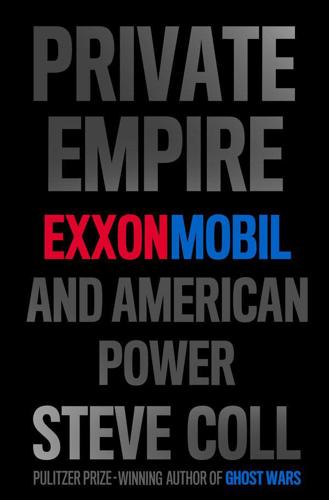
Private Empire: ExxonMobil and American Power
by
Steve Coll
Published 30 Apr 2012
Evidently we’re leaking some oil and we’re going to be here for a while.”10 The watch stander in Valdez telephoned the Coast Guard’s commander, Steve McCall. “I’ve got the Exxon Valdez hard aground Bligh Reef.” “Are you serious?” “I’m serious as a heart attack.” Just over thirty minutes later McCall pulled off the Valdez dock in a fast boat with two other Coast Guard officers, a representative of the state Department of Environmental Conservation, and two local pilots. The night had turned crisp and clear, and when they reached the Exxon Valdez, “you could see oil bubbling out from underneath,” recalled Mark Delozier, one of the Coast Guard officers aboard.
…
Browne sensed that the spill’s “repercussions for the industry would be huge. It was the start of a new chapter.” The Exxon Valdez had “damaged not just a fragile environment but also the flimsy trust in oil companies.” Environmental groups would “have a field day,” he expected. Unfortunately, “it was no use” saying to them “that B.P. was better than its competitors. The industry was now measured by its weakest member, the one with the worst reputation. That oil company was now Exxon.”24 A few days before the Exxon Valdez ran onto Bligh Reef, tens of thousands of Hungarians marched through Budapest. The demonstrators turned the commemoration of an 1848 uprising against Austrian rule into a revolt against Soviet-backed communism.
…
Mike Williams put it this way: “All the things they told us could never happen, happened.”1 BP’s catastrophe soon surpassed the Exxon Valdez wreck as the worst oil spill in American history. The Valdez had released 257,000 barrels of oil into Prince William Sound. The amount of oil released by the Deepwater Horizon’s blown well proved harder to measure, but eventually, the best scientific estimates held that almost 5 million barrels spilled before the well could be plugged. The Exxon Valdez had jolted America’s largest oil corporation to remake its safety, operations, and management systems. Over the ensuing two decades, within ExxonMobil, the wreck on Bligh Reef provided a kind of origins myth for internal reform and redemption, one repeated at employee meetings and safety minute rituals, as well as to journalists and shareholder audiences.

Vultures' Picnic: In Pursuit of Petroleum Pigs, Power Pirates, and High-Finance Carnivores
by
Greg Palast
Published 14 Nov 2011
Here’s what the oily eliders left out: In 1971, eighteen years before the Exxon Valdez hit Bligh Reef, the Alaska State Legislature passed a very un-insane law requiring the use of double-hulled tankers on the Valdez oil route. But Chevron, Exxon and Mobil sued to block the double-hull law. They won. In other words, had the oil companies not killed the law, the Exxon Valdez would have had two hulls and the spill would never have occurred. Mobil built its much-ballyhooed double-hull tanker in 1996 simply because the company had no choice. Double hulls were written into federal law right after the Exxon Valdez disaster. Back in 1971, British Petroleum was still the baby sister of the oil giants.
…
The tanker spill illustration is from the BP-Exxon official OSRP (Oil Spill Response Plan) for Prince William Sound, Alaska, published two years before the Exxon Valdez grounding at Bligh Island, Tatitlek. The oil companies’ top executives swore to this plan under oath before Congress. It was, I admit, a beautiful plan. It had everything: suckers and rubbers all over the place, and round-the-clock emergency crews ready to roll. Simple simple: Surround with rubber and suck. The Tatitlek Natives could have done that lickety-split and you would have never heard of the Exxon Valdez. But could have are the two most heartbreaking words in the English language. The Natives were the firemen with the equipment.
…
At the reception desk, I had picked up an envelope with a Delta ticket to Anchorage. “Palast”—O’Neill grinned some more—“I’m telling you: This will be your Vietnam.” Well, at least the ticket was first class. The first thing our new Chugach clients ordered our gold-plated legal team to do was sue to prevent the Exxon Valdez from returning to their Alaskan waters. Not any other tanker, just the Exxon Valdez. The Natives hoped to ward off the return of the Tanker of Death, the vessel of the Deceiver, the Raven, the one who had killed his grandchildren with broken promises. You can call it goofy, you can call it superstitious. But the U.S. Congress did not find the Natives’ demand to bar the Devil Ship as insane as you might find it.
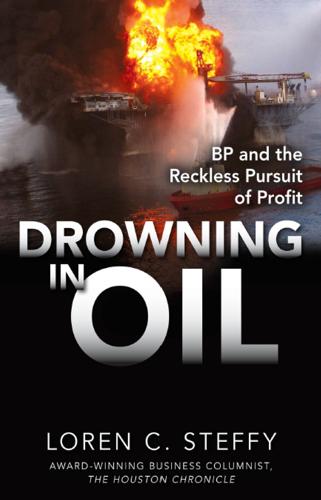
Drowning in Oil: BP & the Reckless Pursuit of Profit
by
Loren C. Steffy
Published 5 Nov 2010
Initial estimates put the amount of oil leaking from the mangled well at only about 1,000 barrels a day, a relatively modest amount that would mean that the well could leak for the better part of a year before matching the environmental damage from the Exxon Valdez spill. One of the conclusions of the commission that investigated the Valdez spill was that a spiller should not be in charge of the response.2 Yet the Macondo well site, 40 miles from shore, was remote, and most of the early information about the damage was controlled by BP. R Oil spills occupy a prominent position in America’s rogues’ gallery of corporate villainy. Perhaps only the clubbing of baby seals is more detested by the public. America’s revulsion with the damage from oil on the water predates the Exxon Valdez spill by almost two decades. In 1969, a Union Oil platform off the coast of Santa Barbara, California, blew out, and an attempt to cap it resulted in an even bigger disaster—the opening of a fault along the ocean floor that spewed oil into the Pacific.
…
A blowout from an offshore platform near Santa Barbara, California, gave rise to the environmental movement, and oil companies xv xvi P R E F A C E became its most reliable villain. As prices soared under the foreign oil embargoes of the 1970s, the public began to believe that Big Oil was in cahoots with OPEC, the Middle Eastern cartel that suddenly demonstrated it could bring the world’s greatest industrialized nation to its knees with the turn of spigot. In 1989, the Exxon Valdez ran aground in Alaska’s Prince William Sound, spilling 11 million gallons of oil and cementing the oil industry’s demonic public image. BP was the biggest owner of the consortium that operated the pipeline feeding the Valdez terminal. Still, BP remained little more than a logo on a Matchbox truck to most Americans.
…
The company had helped develop the Trans-Alaska Pipeline during his time there, and it continued to pump millions of gallons of crude hundreds of miles across the frozen tundra from the Arctic Ocean to the southern port of Valdez. Browne was running BP’s U.S. exploration division and was on the verge of a promotion to lead its global operation from London when the Exxon Valdez tanker ran aground in Prince William Sound. Browne was on Alaska’s North Slope at the time, at a base camp, when he was awakened at five in the morning with the news. He flew over the spill in a small plane and was struck by the slow response to the crisis, thinking that more boats and containment booms would be deployed more rapidly.9 Ironically, BP controlled the industry consortium that was responsible for containing spills around the Valdez terminal.

Oil: Money, Politics, and Power in the 21st Century
by
Tom Bower
Published 1 Jan 2009
One note in small print in Exxon’s accounts embodied the seemingly disparate threads linking the public’s dislike of Big Oil. At the end of 1990 it became apparent that Exxon had reduced its liability for taxation by setting off some costs caused by the Exxon Valdez disaster in Alaska against taxes. That calamity, and the reaction of Lawrence Rawl, the chairman, further damaged the industry’s credibility. Rawl had been telephoned at 8:30 a.m. on Good Friday, March 24, 1989, and told that the Exxon Valdez, a 900-foot tanker, had hit the Bligh Reef while maneuvering through Prince William Sound. By daybreak over 10 million gallons of Alaskan crude oil had leaked out of the tanker and was edging toward 1,100 miles of pristine coastline.
…
Identified at the outset of his career by an internal code as destined for the board of directors, Raymond specialized in negotiating Exxon out of problems: selling a refinery in the Caribbean, or a nuclear plant in Washington State after a dangerously unfit chief executive had been removed; facing down threats from Venezuela to pay more for crude; and directing the cleanup after the Exxon Valdez oil spill. In the spotlight for the first time in Alaska, he had been asked by a lawyer during the preliminaries of a civil trial to assess the Exxon Valdez damages to describe his background. “I hope this doesn’t get too boring,” Raymond replied. “It kind of bores me.” Asked later about his low profile, he explained, “I don’t think much about it. I’ve never had a focus group to decide what my persona is out there.”
…
Unaware of the technological achievements involved, the oil industry was taken for granted by a generation of Americans who had grown up regarding cheap gasoline as their God-given birthright. Filling their gas tank did not make anyone feel good. Ever since nearly 11 million gallons of oil had spilled from the tanker the Exxon Valdez into Alaska’s pristine waters in March 1989, the public’s antagonism toward Big Oil had become entrenched. Big Oil had overtaken Big Tobacco as a focus of hatred. Within the American public’s DNA was a belief that oil was a decrepit rust industry unfairly extracting tax from honest citizens. Few appreciated that Thunder Horse would fractionally reduce America’s dependence on imported oil, which provided 60 percent of its daily consumption.
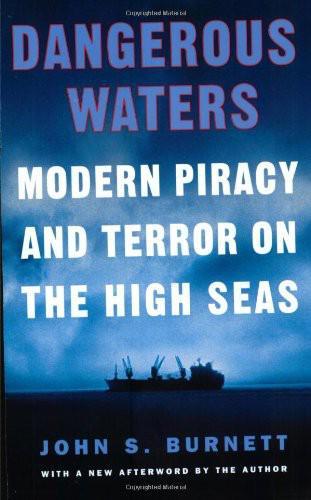
Dangerous Waters: Modern Piracy and Terror on the High Seas
by
John S. Burnett
Published 1 Jan 2002
During the day many of the officers work twelve hours from 0800 to 2000 but the ratings, during a passage, keep banker’s hours. The Alaska Oil Spill Commission, in its final report on the 1989 Exxon Valdez disaster, was critical of Exxon for claiming that modern automated vessel technology permitted reduced manning without compromise of safety or function. “Manning policies also may have affected crew fatigue,” the report stated. “Whereas tankers in the 1950s carried a crew of 40 to 42 to manage about 6.3 million gallons of oil . . . the Exxon Valdez carried a crew of 19 to transport 53 million gallons of oil.”13 The Montrose carries a crew of 17 to transport 84 million gallons of oil.
…
The Montrose carries two million barrels of crude, nearly ten times the amount spilled by the Exxon Valdez and about fifty times the amount of oil washed onto the Alaska coastline.29 The devastation from a VLCC breaking up in the Straits would be inconceivable. Not accounting for natural degradation, evaporation, and containment efforts, were the oil that we carry to reach land, seventy-five thousand miles of coastline, the equivalent of nearly three times the circumference of the globe, could be affected. Using the formula for the damage caused by the Exxon Valdez, were the Montrose to spill all of her oil—84 million gallons of it—five-hundred thousand square miles, twice the size of the state of Texas, could be covered.
…
He knew, however, it would not be long before he had an even bigger job on his hands. And it came on the third day, when traces of unburned oil began escaping into the sea from the tanker’s open wound. The collision had the potential to become an environmental crisis. Few people involved with oil tankers have not learned a lesson or two from the grounding of the Exxon Valdez, the nation’s greatest environmental disaster since Three Mile Island. Betts knew what a similar spill of crude oil would mean to the coral beaches of Thailand and Malaysia only a couple hundred miles to the east; when his office filled out the Lloyd Open Forms—the standard no-cure-no-pay salvage agreement with the vessels’ owners to save both ships—he was committing his company legally to “use their best endeavors to prevent or minimize damage to the environment.”
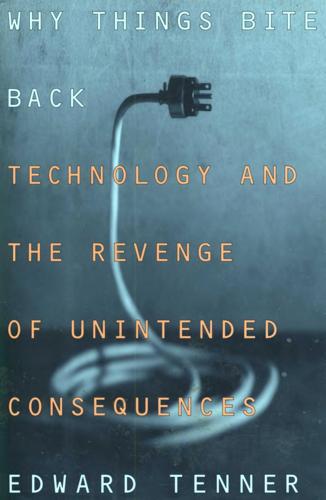
Why Things Bite Back: Technology and the Revenge of Unintended Consequences
by
Edward Tenner
Published 1 Sep 1997
On land, too, it is smaller leaks, seepage, and waste-oil storage—not catastrophe—that pose the most dangerous threats to both wildlife and human health. The U.S. Fish and Wildlife Service has estimated that more than twice as many migratory birds died after landing in open ponds and containers of waste oil in five Southwestern states alone in one year as were lost in the Exxon Valdez spill. Tank farms and pipelines on a Brooklyn site have been slowly leaking over one and a half times the spill of the Exxon Valdez. Another tank farm in Indiana is being forced to remedy leaks that could have been three times as large. Rusting pipes, bad welding, leaking valves, and sloppy maintenance account for most of the loss. Leak detectors are so unreliable that in January 199o, 567,00o gallons of heating oil were discharged from an Exxon facility in New Jersey where warnings had been ignored after twelve years of false alarms.
…
Ancient Rome had large apartment buildings, too, but while its public baths, bridges, and aqueducts have lasted for two thousand years, its big residential blocks collapsed with appalling regularity. Not one is left in modern Rome, even as a ruin. Not every technological catastrophe is, strictly speaking, a revenge effect. The Exxon Valdez oil spill, the release of radioactive material at Three Mile Island, and the Challenger explosion, to name only three of the most celebrated recent disasters of advanced technology, are system-related " normal accidents" in Perrow's sense, but only one of them may be regarded as an indirect result of trying to make things safer.
…
In the end it may have been not only the NAPAP report but the Rio Summit that devalued acid rain as an issue. Acid rain receded as concern over global warming advanced. The tall stacks movement shows how ironic the results can be of attacking a symbol like the dirty plume of a low smokestack. 36 Oil Spills: Dispersing Pollution When the Exxon Valdez hit Bligh Reef off the Alaska Coast in 1988, the murky discharge of 35,000 tons of crude oil was an ethical Rorschach test. To some it was simply another example of human failure—resulting from flaws of character and responsibility, and of course from drinking on the job. To others it expressed the heedlessness of corporate capitalism at its worst, the inevitable outcome of putting profits above safe operation.
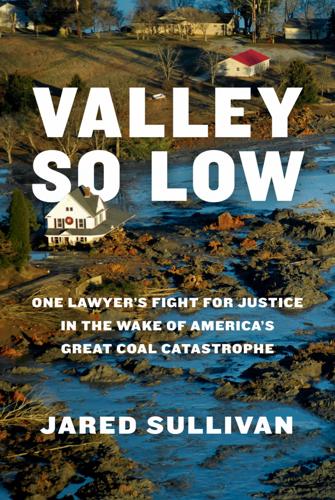
Valley So Low: One Lawyer's Fight for Justice in the Wake of America's Great Coal Catastrophe
by
Jared Sullivan
Published 15 Oct 2024
GO TO NOTE REFERENCE IN TEXT thirty-two thousand fishermen: Robert E. Jenkins and Jill Watry, “Running Aground in a Sea of Complex Litigation: A Case Comment on the Exxon Valdez Litigation,” UCLA Journal of Environmental Law and Policy 18, no. 151 (1999): 166; James Vicini, “Exxon Valdez $2.5 Billion Oil Spill Ruling Overturned,” Reuters, June 25, 2008. GO TO NOTE REFERENCE IN TEXT $287 million: “Exxon Valdez Jury Awards $287 Million,” AP via Pittsburgh Post-Gazette, August 12, 1994. GO TO NOTE REFERENCE IN TEXT $20 million: “Plaintiffs Say Exxon Owes More,” AP via Enterprise-Journal, August 23, 1994.
…
* * * — Hours later, standing at the top of the wooded bluff, Ansol Clark wasn’t aware of any of this, but, as he surveyed the ruined landscape, it was clear that TVA had made a tremendous mess. By sunup, helicopters whirled overhead, as local, state, and federal agencies assessed the biblical scope of the breach. Three hundred acres lay buried in ash, a foot deep in spots, six or more in others. The spill would prove to be nearly a hundred times larger than the 1989 Exxon Valdez oil spill, and it would rank as the single largest industrial disaster in U.S. history in terms of volume. The sludge could have filled the Empire State Building nearly four times over. Wanting to see more, Ansol and Henry, the general foreman, drove around the site’s perimeter. Thirty-foot chunks of ash towered over the sludge.
…
He had flowing white hair and a long white mustache, in the style of an old-time riverboat captain. Lending him further flair, he often wore showy three-piece suits, which he tended to complete with colorful geometric ties and cowboy boots that boosted his height by several critical inches. After the Exxon Valdez supertanker ran aground on March 24, 1989, and spewed eleven million gallons of oil into Alaska’s Prince William Sound, Exxon had called Jimmy Sanders for help. The energy giant relied on him for “its most risky, sensitive jury cases,” the journalist Steve Coll wrote in his definitive history of the company.
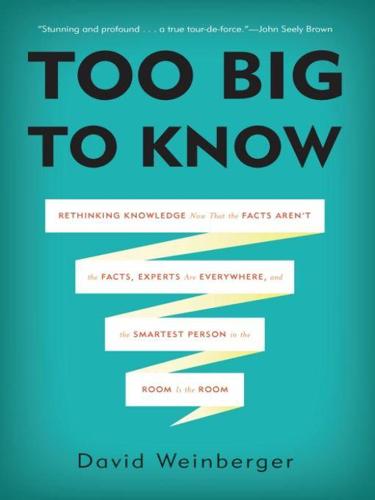
Too Big to Know: Rethinking Knowledge Now That the Facts Aren't the Facts, Experts Are Everywhere, and the Smartest Person in the Room Is the Room
by
David Weinberger
Published 14 Jul 2011
(The ORR is part of the National Oceanic and Atmospheric Administration.) 21 Kermit Pattison, “Crowdsourcing Innovation: Q&A with Dwayne Spradlin of InnoCentive,” FastCompany, December 15, 2008, http://www.fastcompany.com/blog/kermit-pattison/fast-talk/millions-eyes-prize-qa-dwayne-spradlin-innocentive. 22 “InnoCentive Solver Develops Solution to Help Clean Up Remaining Oil from the 1989 Exxon Valdez Disaster,” InnoCentive press release, November 14, 2007, http://www.marketwire.com/press-release/InnoCentive-Solver-Develops-Solution-Help-Clean-Up-Remaining-Oil-From-1989-Exxon-Valdez-792827.htm. 23 “2010 International Contest on LTPP Data Analysis,” http://www.fhwa.dot.gov/pavement/ltpp/contest.cfm. 24 Stefanie Olsen, “DOT Proposes Contest to ‘Green’ Jet Fuel Industry,” July 10, 2008, http://news.cnet.com/8301–11128_3–9987675–54.html. 25 Adam Ash, “Deep Thoughts: The Internet, Is It a Stupid Hive Mind, or the Potential Savior of Mankind?”
…
The Internet has many different types of people in it John Davis was a chemist in Bloomington, Illinois, who didn’t know a lot about oil. But it turned out that he knew enough about cement to solve a problem that had the oil experts stumped. In 2007, the Oil Spill Recovery Institute, a nonprofit created by Congress in response to the 1989 Exxon Valdez oil disaster,20 offered $20,000 to the first person who could figure out how to get the oil from that spill out of the bottom of the ocean where it had been sitting for eighteen years. Simply pumping it up did not work because when it got to the surface, the Alaskan air solidified the mix of oil and water, making it impossible to pump off the barges.21 But Davis knew that cement wouldn’t harden so long as you keep vibrating it.
…
This is, of course, easier in the areas of science that do not require building, say, a large hadron particle collider ($7.2 billion) or an international space station ($120 billion). We’ve already seen examples of amateurs like John Davis solving engineering problems—how to pump oil up from the Exxon Valdez—via contests. But amateurs are contributing in yet more structured ways. For example: • Volunteers at Galaxy Zoo, a science crowdsourcing Web site, have created what it claims is “the world’s largest database of galaxy shapes.”24 Beginning in July 2007 it posted images of a million galaxies from the Sloan Digital Sky Survey and asked people to do a simple categorization of each one: spiral-shaped or elliptical?

This Changes Everything: Capitalism vs. The Climate
by
Naomi Klein
Published 15 Sep 2014
The largest class of tanker that Northern Gateway plans to use in BC waters has a maximum capacity of 2.2 million barrels of oil, about 74 percent more than the 1,264,155 barrels carried by the Exxon Valdez: “Section 3.9: Ship Specifications,” TERMPOL Surveys and Studies, Northern Gateway Partnership Inc., Enbridge Northern Gateway Project, January 20, 2010, pp. 2–7; “Oil Spill Facts: Questions and Answers,” Exxon Valdez Oil Spill Trustee Council, http://www.evostc.state.ak.us. 4. Jess Housty, “Transformations,” Coast, April 1, 2013. 5. “Protesters Blamed for Cancelled Pipeline Hearing,” CTV News Vancouver, April 2, 2012. 6.
…
Since the doors to foreign investors were flung open near the end of British colonial rule, oil companies have pumped hundreds of billions of dollars’ worth of crude out of Nigeria, most from the Niger Delta, while consistently treating its land, water, and people with undisguised disdain. Wastewater was dumped directly into rivers, streams, and the sea; canals from the ocean were dug willy-nilly, turning precious freshwater sources salty, and pipelines were left exposed and unmaintained, contributing to thousands of spills. In an often cited statistic, an Exxon Valdez–worth of oil has spilled in the Delta every year for about fifty years, poisoning fish, animals, and humans.25 But none of this compares with the misery that is gas flaring. Over the course of extracting oil, a large amount of natural gas is also produced. If the infrastructure for capturing, transporting, and using that gas were built in Nigeria, it could meet the electricity needs of the entire country.
…
Bella Bella is not directly on the oil pipeline’s route (that is 200 kilometers even further north). However, the Pacific ocean waters that are its front yard are in the treacherous path of the oil tankers that the pipeline would load up with diluted tar sands oil—up to 75 percent more oil in some supertankers than the Exxon Valdez was carrying in 1989 when it spilled in Alaska’s Prince William Sound, devastating marine life and fisheries across the region.3 A spill in these waters could be even more damaging, since the remoteness would likely make reaching an accident site difficult, especially during winter storms. The appointed members of the Joint Review Panel—one woman and two men, aided by support staff—had been holding hearings about the pipeline impacts for months now and would eventually present the federal government with their recommendation on whether the project should go ahead.
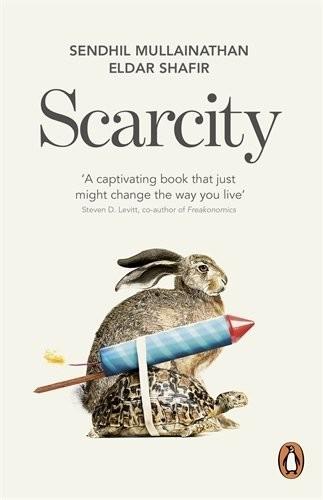
Scarcity: The True Cost of Not Having Enough
by
Sendhil Mullainathan
Published 3 Sep 2014
Thomas, D. R. Thorne, and N. J. Wesensten, “Sustaining Performance During Continuous Operations: The U.S. Army’s Sleep Management System,” in Managing Fatigue in Transportation. Proceedings of the 3rd Fatigue in Transportation Conference (1998). The oil tanker Exxon Valdez: See Alaska Oil Spill Commission, Spill: The Wreck of the Exxon Valdez, vol. 3 (State of Alaska, 1990). An approachable discussion of the sleep literature as a whole can be found in William C. Dement and Christopher Vaughan, The Promise of Sleep: A Pioneer in Sleep Medicine Explores the Vital Connection Between Health, Happiness, and a Good Night’s Sleep (New York: Dell, 1999).
…
Studies of the lonely show that they sleep less well and get fewer hours. These effects are quite strong for the poor: they too have lower-quality sleep. And not sleeping enough can be disastrous. The U.S. Army has shown how lack of sleep can lead soldiers to fire on their own troops. The oil tanker Exxon Valdez crashed in Alaska in 1989 arguably in part because of the crew’s sleep deprivation and sleep debt. These effects cumulate. Studies show that sleeping four to six hours a night for two weeks leads to a decay in performance comparable to going without sleep for two nights in a row. Insufficient sleep further compromises bandwidth.
…
arousal, and performance artificial scarcity Asia Atkins diet attention bottom-up processing capture of performance and top-down processing attentional blink Australia automatic bill pay automatic impulse bandwidth building cognitive capacity and comes at a price economizing on executive control and tax terminology timeline Banerjee, Abhijit Bangladesh Bank of America bankruptcy banks bargaining basketball beer bees behavioral economics Benihana restaurants Berra, Yogi Bertrand, Marianne bills automatic payment late payment of Bjorkegren, Dan Bohn, Roger Bolivia borrowing Family Feud and payday loans traps tunneling and See also borrowing; debt Boston bottom-up processing Bowen, Bruce brain development lateralization perception See also mind bridges Bryan, Chris buffer stock cabinet castaways cancer carbohydrates carbon dioxide Carlin, George cars accidents cell phone use and eating in impulse purchases insurance registration repairs repossession shopping for traffic cash transfer programs castaways cell phones Center for Responsible Lending Chapanis, Alphonse checker-shadow illusion chemistry Chennai, India Chevys restaurant child care China choices burden of one-off choking Christmas Churchill, Winston cigarettes taxes clothing packing professional purchase mistakes cockpit errors cocktails cognitive capacity cognitive science Cohen, Amanda college deadlines exams financial aid programs loans tuition communal tables commuters computers shopping for software computer vision syndrome conditional cash transfers consistency Consumer Reports contextual cues control impulses cortisol Covey, Stephen creativity credit cards crop insurance crop yields culture customer service dating, online daycare deadlines benefits of focus dividend and debt in India leveraged buyout payday loans rolled-over traps tunneling and See also borrowing; loans decisions, linking and the timing of declarative memory Dempsey, Christy diabetes dichotic listening task Dickinson, Charlie dieting diminishing marginal utility discretion, lack of disease divorce Dominican Republic DOTS (directly observed therapy) DVD players economics behavioral expertise and in India scarcity and 2008 recession edema education college financial literacy noise and Eisenhower, Dwight Eliot, T. S. e-mail emergencies hospital empathy bridge employment scarcity work hours entrepreneurship errors pilot slack and everyday life, scarcity in excise taxes executive control exercise experimental psychology expertise Exxon Valdez E-ZPass failure organizational to plan poverty and Family Feud (TV show) farming behavior crop insurance crop yields harvests organic subsistence weeding fatigue fault tolerance Faye, Michael Ferraro, Paul fertilizer financial literacy education firefighting trap fluid intelligence fMRI focus focus dividend food dieting eating while driving fast impulsivity and junk kitchen pantry labels neglect packing prices restaurant scarcity snacks food stamps Ford, Henry 401(k) plan frugality future neglect of game shows gasoline genetics Gennetian, Lisa Germany Gersick, Connie GlowCaps glucocorticoids goal inhibition golf grandparents Great Britain Grondin, Simon guess scarcity Hall, Crystal Handey, Jack Harris, Sandra harvests Hastings, Max Head Start health insurance heart rate Heschel, Abraham Joshua hibachi high school graduates HIV hospitals housing messy Hunton, Brian hyperbolic discounting IFMR Trust impulse control impulse purchases incentives, ineffective India bargaining in poverty street vendors Indonesia indoor plumbing ineffective incentives inefficiency infrastructure inhibition goal Institute for Healthcare Improvement insurance car crop deductibles health unemployment intelligence, fluid interest rates internal disruptions iPhone iPod IQ tests Iron Chef (TV show) Jaikumar, Ramchandran Japan Jenkins, Richard jewel loans Jewish Sabbath Jiaying Zhao juggling junk food Kahneman, Daniel Karlan, Dean Keep the Change program Kenya Killeen, Peter Kimes, Sheryl kitchen pantry Koyambedu vendors Kurtz, Jaime Larson, Dr.
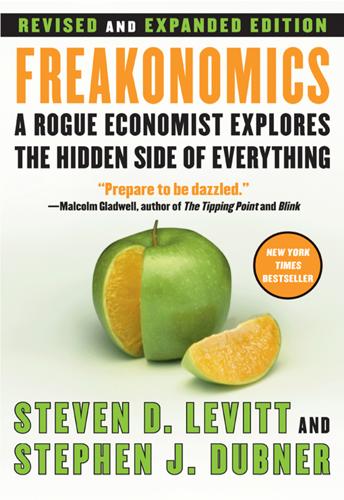
Freakonomics: A Rogue Economist Explores the Hidden Side of Everything
by
Steven D. Levitt
and
Stephen J. Dubner
Published 11 Apr 2005
Bouza, The Police Mystique: An Insider’s Look at Cops, Crime, and the Criminal Justice System (New York: Plenum, 1990). / 130 $9 million to save a spotted owl: See Gardner M. Brown and Jason F. Shogren, “Economics of the Endangered Species Act,” Journal of Economic Perspectives 12, no. 3 (1998), pp. 3–20. / 130 $31 to prevent another Exxon Valdez –type spill: See Glenn W. Harrison, “Assessing Damages for the Exxon Valdez Oil Spill,” University of Central Florida working paper, 2004. / 130–31 Body-part price list: Drawn from the state of Connecticut’s Workers’ Compensation Information Packet, p. 27, available as of this writing at wcc.state.ct.us/ download/acrobat/info-packet.pdf. 5.
…
Consider the effort to save the northern spotted owl from extinction. One economic study found that in order to protect roughly five thousand owls, the opportunity costs—that is, the income surrendered by the logging industry and others—would be $46 billion, or just over $9 million per owl. After the Exxon Valdez oil spill in 1989, another study estimated the amount that the typical American household would be willing to pay to avoid another such disaster: $31. An economist can affix a value even to a particular body part. Consider the schedule that the state of Connecticut uses to compensate for work-related injuries.
…
Ehrlich, Isaac Ehrlich, Paul Eight Men Out: The Black Sox and the 1919 World Series (Asinof) Eisner, Manuel elections campaign spending in campaign spending on candidate appeal in of 1948 of 1989 of 1990 of 2004 race and employment Enron environmental hazards Epstein, Richard ESPN Everson, Mark evil, resisting of experts: conventional wisdom and exploitation and abuse by incentives of information of media and on parenting predictions of self-interest of shrinking gap between public and Exxon Valdez Ezzo, Gary Feldman, Paul Fields, W. C. fines flame-retardant pajamas Food and Drug Administration (FDA) football Foote, Chris Forbes, Steve Foreign Correspondents’ Club (Tokyo) Fox, James Alan Francis, Andrew freakonomics Freakonomics Blog freakonomics.com/blog/ French Roast Friedman, Milton fructose, granulated Fryer, Roland G., Jr.
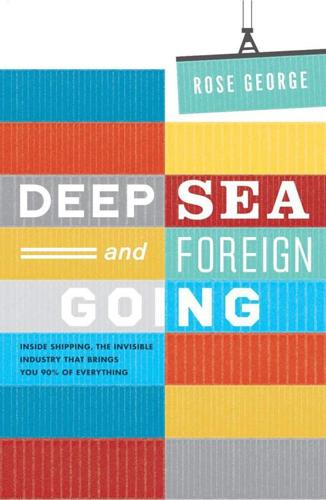
Deep Sea and Foreign Going
by
Rose George
Published 4 Sep 2013
They want a better public image for an industry that in the UK alone employs 634,900 people, contributes £8.45 billion in tax and generates two per cent of the national economy, more than restaurants, take-away food and civil engineering combined, and only just behind the construction industry. They despair that shipping only emerges with drama and disaster: a cruise ship sinking, or another oil spill and blackened birds. They would like people to know such names as the Wec Vermeer, arrived from Leixões and heading for Rotterdam, or the Zim Genoa, due in from Ashdod, not just Exxon Valdez and Titanic. They provide statistics showing how the dark days of oil spills are over. Between 1972 and 1981, there were 223 spills. Over the last decade, there were 63. Each year, a shipping publicist told me, ‘more oil is poured down the drain by car mechanics changing engine oil than is spilled by the world’s fleet of oil tankers’.
…
That’s still twice the maximum recommended in the EU’s Working Time Directive. A 2006 study found that half of seafarers worked at least 85 hours a week and one in four had fallen asleep while on watch. That level of fatigue is as dangerous as drinking seven times the legal limit of alcohol. Sixty per cent of shipping accidents are due to human error. When Exxon Valdez struck Alaska’s Bligh Reef in 1989, spilling 11 million gallons of crude oil, an investigation found that the watch officer had been mostly awake for 18 hours before his shift. Kendal’s captain knows this, but what can he do? He knows, as do maritime academics, that fatigue can be alleviated by a quiet environment and good nutrition, but victualling is a cost that can be more easily cut than fuel or insurance.
…
– Zero Recruitment in Europe ‘Piracy as a business’, Lloyd’s List, 1 December 2009. 6 Falsifying papers Select Committee on Transport, Eighth Report, July 2006, p.68. 7 Sixty per cent of shipping accidents are due to human error The International Union of Maritime Insurance (IUMI) reported that in the 15-year period up to 2008, 60 per cent of accidents involving the serious or total loss of vessels over 500 gross tonnes were due to human error. That works out at two serious incidents a day. Maritime and Coastguard Agency, The Human Element: a guide to human behaviour in the shipping industry, April 2010, p.v. – Exxon Valdez Maritime and Coastguard Agency, op. cit., p.47. – I shot the cook Seamen’s Church Institute of New York, The Lookout, vol. 33, no. 5, May 1942. 8 SL-7 ships – Levinson, op. cit., pp.229–230. 9 Scatter the painted ashes Burial at sea is permitted in the United States under the Ocean Dumping Act.
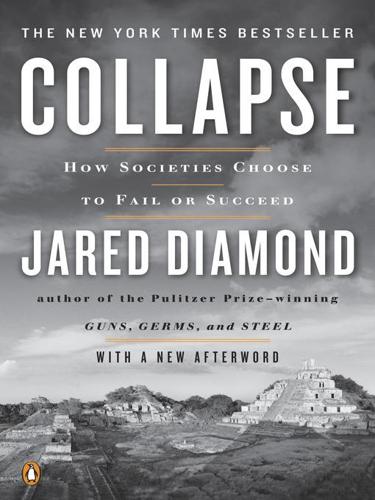
Collapse: How Societies Choose to Fail or Succeed
by
Jared Diamond
Published 2 Jan 2008
However, in conversations over the last six years with dozens of lower-level as well as senior Chevron employees, employees of other oil companies, and people outside the oil industry, I have come to realize that many other factors as well have contributed to these environmental policies. One such factor is the importance of avoiding very expensive environmental disasters. When I asked a Chevron safety representative who happened to be a bird-watcher what had prompted these policies, his short answer was: “Exxon Valdez, Piper Alpha, and Bhopal.” He was referring to the huge oil spill from the running aground off Alaska of Exxon’s oil tanker the Exxon Valdez in 1989, the 1988 fire on Occidental Petroleum’s Piper Alpha oil platform in the North Sea that killed 167 people (Plate 33), and the 1984 escape of chemicals at Union Carbide’s Bhopal chemical plant in India that killed 4,000 people and injured 200,000 (Plate 34).
…
Oil pollution problems arise mainly from quick and visible spills, many of which it has been possible to avoid by careful maintenance and inspections and by improved engineering design (such as double-hulled rather than single-hulled tankers), so that the oil spills that still occur today are mainly ones due to human error (such as the Exxon Valdez tanker accident), which can in turn be minimized by rigorous training procedures. Oil spills can generally be cleaned up within a few years or less, and oil degrades naturally. While mine pollution problems also occasionally appear as a quick visible pulse that suddenly kills lots of fish or birds (like the fish-killing cyanide overflow from the Summitville mine), more often they take the form of a chronic leak of toxic but invisible metals and acid that don’t degrade naturally, continue to leak for centuries, and leave slowly weakened people rather than a sudden pile of carcasses.
…
On the other hand, coal occurs in pure seams up to 10 feet thick stretching for miles, so that the ratio of dumped wastes to product extracted is only about one for a coal mine, far less than the already-mentioned figures of 400 for a copper mine and 5,000,000 for a gold mine. The lethal Buffalo Creek disaster at a U.S. coal mine in 1972 served as a wake-up call for the coal industry, much as the Exxon Valdez and North Sea oil rig disasters did for the oil industry. While the hardrock mining industry has had its share of disasters in the Third World, those have occurred too far from the eyes of the First World public to have served as a comparable wake-up call. Stimulated by Buffalo Creek, the U.S. federal government in the 1970s and 1980s instituted tighter regulation, and required stricter operating plans and financial assurance, for coal mining than for hardrock mining.
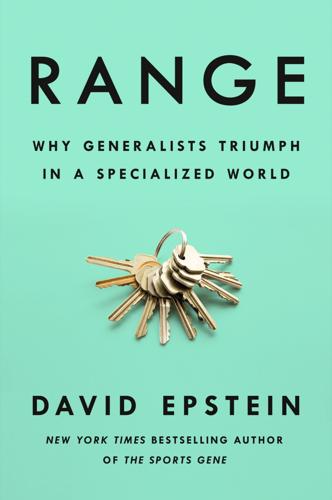
Range: Why Generalists Triumph in a Specialized World
by
David Epstein
Published 1 Mar 2019
Other outside-in solvers thrive because they have none at all. * * * • • • In 1989, the Exxon Valdez oil tanker famously hit a reef and leaked its payload into the Prince William Sound. It was a monumental environmental and commercial fishing disaster. When oil mixes with water, spill workers refer to the resulting goop as “chocolate mousse.” Throw in low temperature and spill responders are working with material that has the viscosity of peanut butter. It is devilishly difficult to remove. Almost twenty years after the Exxon Valdez spill, thirty-two thousand gallons of oil remained stubbornly stuck along Alaska’s coast.
…
“using procedures” question types, 82–85, 90 See also learning fast and slow “eduction,” 43 Ehrlich, Paul, 215–18, 220, 221 Einstein, Albert, 229 Einstellung effect, 177 Eli Lilly, 172–73 Ellington, Duke, 9, 69–70 employment and careers changing, 130–32, 131n, 136–37, 154n, 160–61 compensation in, 9 and corporate HR policies, 213 high-risk opportunities, 136, 137 “match quality” in, 128–29, 130–31, 135–36, 138–140 and personal changes, 156 sampling opportunity in, 130 and winding paths of dark horses, 154 error correction, 74, 75 experience-expertise link, 18–21, 53 experimentation, 269–273, 287–89, 290, 291 Exxon Valdez oil tanker disaster, 175–77 fame, 220 Federer, Roger, 3–4, 31 Fermi, Enrico, 52, 52n Fermi problems, 52–53 Feynman, Richard, 249 figlie del coro of Venice, 56–64 and composers, 62–63 multi-instrument approach of, 61–62, 64 music program of, 61 and names of children, 59, 63 financial crisis of 2008, 12, 279 Finster, Howard, 169 firefighting in novel circumstances, 21, 30 pattern recognition in, 19, 20, 30, 112 wilderness firefighting, 245–47, 248 Fischer, Bobby, 16 Fleisher, Leon, 76 flu predictions, 29–30 Flynn, James, 37–40, 44, 45, 47–50, 275, 277 Flynn effect, 37–40, 45–46 Flyvbjerg, Bent, 110–11 Foles, Nick, 8 food preservation, 173–74 Frances Hesselbein Leadership Institute, 152 Freakonomics (Levitt), 131 Gaiman, Neil, 210 Game Boy by Nintendo, 196–97 Garg, Abhimanyu, 188 Gauguin, Paul, 128 Gawande, Atul, 6 Geim, Andre, 273 generation effect, 85–86 Gentner, Dedre, 102–3, 104, 113–14, 115, 119 Geveden, Rex, 261–63, 264 Gigerenzer, Gerd, 226 Gilbert, Dan, 156 Girl Scouts, 148–151, 153 Gleason, Paul, 248 global financial crisis of 2008, 12, 279 Gobet, Fernand, 26, 34 Godin, Seth, 136, 143 golf, 1–2, 5–6, 18, 20, 21, 30 Good Judgment Project, 222–23, 224, 258 Google Flu Trends, 29–30 Gorbachev, Mikhail, 220–21 Gore, Bill, 286 Graham, Paul, 163 Grant, Adam, 77 graphene, 273 Gravity Probe B project, 260–63 Great Britain, 6, 227–28 Greve, Henrich, 208–10 Griffin, Abbie, 211–12, 213 grit, 121–145 in athletics, 141–42, 143 and changing course, 142 and context principle, 159–160 Duckworth’s concept of, 133–35 and marshmallow test, 157–59, 159n and match quality, 135, 143 and officer training, 132–35, 137–140, 142 and spelling bee competitors, 133, 134, 142 of Van Gogh, 121–27, 144 and youthful ambition, 142–43 Gruber, Howard, 212–13 Hamilton (musical), 281 happiness, 131, 131n, 162 Haydn, Joseph, 63 Head Start early childhood education programs, 96–97, 97n head starts and changing course, 162 cult of, 67, 97, 162, 275 in music training, 67 of the Polgar sisters, 15–18 hedgehog/foxes model of expertise, 221, 223, 225, 228, 229–231 Hendrix, Jimi, 73 Henslow, John Stevens, 229 Hernandez, Nelson, 23–24 Hesselbein, Frances, 147–153, 161–62, 264 high-risk opportunities, 136, 137 Hinds, Ciarán, 166–67 hint-giving practices, 82–83, 85, 87 hiring practices, 213 HIV/AIDS, 283–84 Hogarth, Robin, 20–21, 31, 34 Holley, Lonnie, 168 Holmes, Oliver Wendell, 291 household rules, 77 Hutchison, Kay Bailey, 284–85 hypercorrection effect, 86 Ibarra, Herminia, 160–64, 290 Ibn Khaldun, 47 “if-then signatures,” 159 Ig Nobel Prizes, 273 immigration, 281n impressionism, 127 improvisational skills, 74–76 influenza predictions, 29–30 infrastructure projects, 110–11 InnoCentive, 173, 175, 177–78, 189 innovation and innovators in art world, 127–28 comic book creators, 209–10 and corporate hiring practices, 213 disorderly path of, 287–89 and immigration, 281n and medieval guilds, 278 and Nintendo’s Wii, 199–200 outsider advantage in, 178 and R&D spending, 206 routines as an impediment to, 211 and savants, 32 serial, 211–13 of specialists, 205 in teams and individual creators, 209–10 traits of, 211–12 “inside view” concept of Kahneman and Tversky, 108 instinctive decisions, 19 instructors, 91–92 Integrated Science Program at Northwestern University, 114–15, 119 Intelligence Advanced Research Projects Activity (IARPA), 222–23 interdisciplinary approaches, 180–81, 276–77, 278n, 279, 281 “interleaving” (mixed practice), 94–96 inventors failures and breakthroughs of, 288 impacts of specialist vs. generalist, 9, 203–4, 205 See also innovation and innovators IQ scores and the Flynn effect, 37–40, 45–46 Israel Defense Forces, 19–20 Jackson, Kirabo, 132 Japan, 83–84, 281n jazz musicians, 68, 75–76 Jentleson, Katherine, 168–69 Jeopardy!
…
“using procedures” question types, 82–85, 90, 92–94 and mistakes, 86–87, 86n and mixed practice/“interleaving,” 94–96 and open/closed skills, 97 and short/long term performance, 85, 87–88, 89–92, 97 and testing/self-testing, 87–88, 89, 96 Ledecká, Ester, 8 Lee, Stan, 208 Lefai, Etienne, 189 Lemke, Leslie, 27 Lesmes, Tony, 250–55, 258, 264 Levitt, Steven, 131, 131n Lewis, Sarah, 273–74 Liberia, Kpelle people of, 44 Limb, Charles, 75 local search strategies, 173 Logic, The Theory of Inquiry (Dewey), 115 Lomachenko, Vasyl, 8–9 Lopes-Schliep, Priscilla, 182, 186–88 Lovallo, Dan, 109, 112–13 Lucas, William, 259 Luria, Alexander, 41–44, 47, 49 Lyell, Charles, 229 Ma, Yo-Yo, 65 Mackie, Glen, 229 Maclean, Norman, 245, 247 “making connections” question type, 82–85, 90, 91 Malamud, Ofer, 128–131 Mann Gulch fire, 245–46 Marcus, Gary, 29 Mars, orbit of, 116 marshmallow test, 157–59, 159n Marvel Comics, 208 match quality about, 128 in Army officer training, 135, 138–140, 140n of early and late specializers, 129–130, 157 and grit/persistence, 135, 143 and personal changes, 157, 160 process for, 136 sampling as means of maximizing, 161 and Smithies, 271 and value of experimentation, 290 and Van Gogh, 144 and winding career paths of dark horses, 154 math-skills acquisition, 79–85 McDonald, Allan, 242–43, 244, 245, 249, 255, 259 medical field, 6, 11, 12, 210–11, 266, 277 Melero, Eduardo, 207–8 Mellers, Barbara, 222–23, 230, 256 memories, 24–25, 27 Metcalfe, Janet, 85–86 Michelangelo, 164, 290 military servicemen, 10–11 Millennial generation, 154n Miller, Robert A., 135, 144 Miranda, Lin-Manuel, 213 Mirzakhani, Maryam, 9, 166 Mischel, Walter, 158, 159 mistakes, benefits of, 86–87, 86n mixed practice (“interleaving”), 94–96 Miyazaki, Hayao, 210 modern world, exposure to, 45–46 Monet, Claude, 127 Moore, Joanne, 140n Moravec’s paradox, 22 motor skills learning, correcting, 86n mountain climbers, Himalayan, 265 movie industry forecasts, 111 Mozart, Wolfgang, 6, 63 Mudbound (Jordan), 166 Mulloy, Larry, 244, 245, 249, 256, 257 multilayer optical film, 201–3 Murakami, Haruki, 165 The Musical Mind (Sloboda), 65–66 music and musicians, 55–77 backgrounds of legendary artists, 69–74 and creativity, 77 and deliberate practice, 64, 74 early specialization of, 65, 67–68, 289 figlie del coro of Venice, 56–64 and improvisation, 74–76, 289 and inability to read music, 70, 71, 73, 74, 75, 77 and instrument selection, 64–65, 66 jazz, 68, 75–76 and lessons, 66–67 and multi-instrument approach, 61–62, 64, 67, 74 quitting, 66 and role of practice, 61, 66–67 and sampling period, 65, 67 self-taught, 69, 76, 77 and Suzuki Method, 76 traits of exceptional musicians, 66–67 Mutual of America insurance company, 151–52 Naifeh, Steven, 127, 144, 152, 167–68 The Name of the Wind (Rothfuss), 165–66 Napoleon, 173–74 NASA and Challenger disaster, 239–245, 247–48, 249, 254, 257, 258 and Columbia disaster, 259–260 communication in, 258–59, 262 culture of, 243–45, 247–48, 255, 257–260, 262, 263 and Gravity Probe B project, 260–63 and InnoCentive solutions, 175 Nash, Steve, 289 National Assessment of Educational Progress, 92 National Spelling Bee, 133, 134, 135 naturalistic decision making (NDM), 18 nature vs. nurture, 159 Netflix’s recommendation algorithm, 111–12 Nicolas, Ashley, 135, 139 Nike, 154–55 Nintendo, 191–97, 198–200 Nobel laureates, 32–33 Northwestern University, 114, 119 Novoselov, Konstantin, 273, 274–75 officer training, military, 132–35, 137–140 Ogas, Ogi, 153–54, 155, 159, 160 Ohsumi, Yoshinori, 285–86 Okada, Satoru, 198 O’Neal, Shaquille, 95–96 open/closed skills, 97 open-ended problem solving, 28–30 open-mindedness, active, 227, 228 ospedali, 58–61, 63 Ouderkirk, Andy, 201–6, 207, 211, 213 outsider advantage, 171–189 and Appert’s food preservation solutions, 173–74 and Bingham, 172–73, 174–75 in Eli Lilly’s chemistry problems, 172–73 and Exxon Valdez oil tanker disaster, 175–77 and InnoCentive solutions, 173, 175, 177–78, 189 and interdisciplinary opportunities, 180–81, 189 in Kaggle competitions, 178–79 and Viles’s genetics sleuthing, 181–89 overpopulation debate, 215–18 Palomeras, Neus, 207–8 parents and household rules, 77 Pasteur, Louis, 285 patents, 204, 205, 207–8 Patil, Shefali, 256, 260 pattern repetition and recognition in chess, 18–19, 20, 22–26, 112 and chunking, 25–26 and cognitive entrenchment, 32, 34 computer aided, 22–24 in firefighting, 19, 20, 30, 112 and forecasting, 29–30 in golf, 21 and kind learning environments, 20–21, 24–25, 112 of military commanders, 19 of savants, 27–28 Pat Tillman Foundation, 10, 13, 144–45 Paul, Les, 75 Peele, Jordan, 210 Pegau, Scott, 175–77 Pelegrina della Pietà, 61–62 The Perfect Storm (Junger), 165 persistence.

Everything Under the Sun: Toward a Brighter Future on a Small Blue Planet
by
Ian Hanington
Published 13 May 2012
We’ve seen oil spilled in dozens of other collisions, blowouts, deliberate releases (in 1991, Iraq released up to 1.9 billion litres of crude oil into the Persian Gulf), and storms (in 2005, Hurricane Katrina caused the release of more than 25 million litres). In 1970, the Arrow spilled almost 10 million litres of oil into Chedabucto Bay in Nova Scotia, and, in 1988, the Odyssey dumped 159 million litres off the coast of Nova Scotia. And in 1989, the Exxon Valdez spilled more than 40 million litres of crude oil into the pristine waters of Prince William Sound off the Alaska coast. Today, tens of thousands of wells operate on land and at sea, massive supertankers move huge quantities of oil across oceans, and pipelines and trucks transport oil over land.
…
We should also learn that relying so heavily on non-renewable fossil fuels for most of our energy needs carries numerous risks, from devastating spills to catastrophic climate change. In 1979, I hosted a program called Tankerbomb that warned of the hazards of supertanker traffic from Alaska past the treacherous B.C. coast. A decade later, the Exxon Valdez spill confirmed that warning. More recently, a ferry, the Queen of the North, ran into Gil Island on B.C.’s north coast. Human beings are fallible, and the B.C. coast is marked by numerous rocks and reefs. That’s why coastal First Nations are unanimous in their opposition to the proposed Enbridge pipeline to transport oil from the Alberta tar sands to the west coast where it would be loaded onto ships.
…
It takes three kilometres and fourteen minutes for such a vessel going at full speed to stop and reverse direction. Although most newer supertankers are equipped with double hulls to reduce the threat of a spill in the event of a collision, many ships still sport single hulls. Corporations don’t focus enough on prevention nor do they consider victims of their accidents a high priority. The Exxon Valdez spill led to litigation by several citizens’ groups, including fishermen, tour guides, and First Nations. The courts awarded them money, but the oil company appealed numerous decisions. During almost two decades of stalling, Exxon Mobil continued to earn record profits. Supertanker accidents and the Gulf spill reveal how little attention is paid to prevention.

Collapse
by
Jared Diamond
Published 25 Apr 2011
However, in conversa-tions over the last six years with dozens of lower-level as well as senior Chevron employees, employees of other oil companies, and people outside the oil industry, I have come to realize that many other factors as well have contributed to these environmental policies. One such factor is the importance of avoiding very expensive environmental disasters. When I asked a Chevron safety representative who happened to be a bird-watcher what had prompted these policies, his short answer was: "Exxon Valdez, Piper Alpha, and Bhopal." He was referring to the huge oil spill from the running aground off Alaska of Exxon's oil tanker the Exxon Valdez in 1989, the 1988 fire on Occidental Petroleum's Piper Alpha oil platform in the North Sea that killed 167 people (Plate 33), and the 1984 escape of chemicals at Union Carbide's Bhopal chemical plant in India that killed 4,000 people and injured 200,000 (Plate 34).
…
Oil pollution problems arise mainly from quick and visible spills, many of which it has been possible to avoid by careful maintenance and inspections and by improved engineering design (such as double-hulled rather than single-hulled tankers), so that the oil spills that still occur today are mainly ones due to human error (such as the Exxon Valdez tanker accident), which can in turn be minimized by rigorous training procedures. Oil spills can generally be cleaned up within a few years or less, and oil degrades naturally. While mine pollution problems also occasionally appear as a quick visible pulse that suddenly kills lots of fish or birds (like the fish-killing cyanide overflow from the Summitville mine), more often they take the form of a chronic leak of toxic but invisible metals and acid that don't degrade naturally, continue to leak for centuries, and leave slowly weakened people rather than a sudden pile of carcasses.
…
On the other hand, coal occurs in pure seams up to 10 feet thick stretching for miles, so that the ratio of dumped wastes to product extracted is only about one for a coal mine, far less than the already-mentioned figures of 400 for a copper mine and 5,000,000 for a gold mine. The lethal Buffalo Creek disaster at a U.S. coal mine in 1972 served as a wake-up call for the coal industry, much as the Exxon Valdez and North Sea oil rig disasters did for the oil industry. While the hardrock mining industry has had its share of disasters in the Third World, those have occurred too far from the eyes of the First World public to have served as a comparable wake-up call. Stimulated by Buffalo Creek, the U.S. federal government in the 1970s and 1980s instituted tighter regulation, and required stricter operating plans and financial assurance, for coal mining than for hardrock mining.
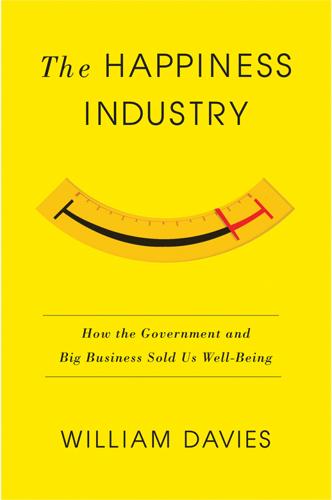
The Happiness Industry: How the Government and Big Business Sold Us Well-Being
by
William Davies
Published 11 May 2015
But over the second half of the twentieth century this economic theory became increasingly expanded, until it came to serve the same broader public function that Bentham’s original utilitarianism sought to achieve. What began as a theory of market exchange was gradually inflated until it became a theory of justice. Consider the following example. On 24 March 1989, the Exxon Valdez oil tanker ran aground off the coast of Alaska, while carrying 55 million gallons of oil, resulting in what was then the largest oil spill in US history. Over one hundred thousand sea-birds were killed, and the populations of various fish, sea otters and other wildlife were still below their previous level over twenty years later.
…
How to counterbalance what they’d done? One of the answers to this question was produced by the state of Alaska. Using a technique known as a ‘willingness to pay survey’, a representative sample of citizens in all of the other forty-nine US states were interviewed on how much they would be ‘willing to pay’ for the Exxon Valdez disaster not to have taken place.24 They were each provided with information about the extent and impact of the disaster to inform this mental calculation. The answer, so it turned out, was an average of $31 per household. Multiplied by 91 million households, this produced the calculation that Exxon owed the American public $2.8 billion.
…
See Chicago School of economics divorce of from psychology, 61, 69 evolution of discipline of, 54 exceptional status attributed to, 26 function of, according to Coase, 156 happiness economics, 5, 74, 229, 252 as mathematical problem, 51 neo-classical economists/economics, 113, 123, 181 as phenomenon of the mind, 59 pop-economics, 152 reunion of with psychology, 64, 182 subjective sensation and, 55 as winner take all, 160 economies classical political economy, 49–50, 57 knowledge-based economy, 136 political economy, 50, 56 sharing economy, 188 social economy, 190 Edgeworth, Francis, 60, 84 Eisenhower, Dwight David, 255 Ello, 213 emotion definition, 75 as market research industry’s preferred version of happiness/pleasure, 74 emotional contagion, 225 empiricism, 27, 30, 152, 269 employee engagement, 106–9, 113, 126 employee fitness-tracking programmes, 240 employee-owned businesses, advantages of, 272 end of theory, 237 Enlightenment, 7, 19, 23, 27, 47, 85, 251 ennui, costs of, 108 enthusiasm, 251 entropy, law of, 115 ergonomics, 50, 116, 137 Essay on Government (Priestley), 13 European Commission, 255 European Management Forum, 1 evidence-based policy-making, 17 existentialism, 38 experience medicine, 126 experienced utility, measurement of, 64 experimental psychology, 81 Exxon Valdez oil spill, 62–3 eye tracking, 72, 97 eyes, focus on by Wundt, 79–81 Facebook, 10, 74, 100, 189, 204, 206, 207, 208, 209, 210, 213, 220, 221, 224, 225, 238, 239, 257, 269 face-reading software, 222 facial coding, 76, 97 facial scanning/face-scanning technology, 72, 222, 276 farm experiences, benefits of, 246 fatigue, businesses’ concern about, 50, 116, 120 Fatigue Laboratory (Harvard Business School), 120, 122 FearFighter, 222 Fechner, Gustav as coining pleasure principle, 29 distrust of language, 32 dualism of, 28, 30, 265 on energy, 29, 115 as influenced by Hegel, 30 as monist, 33 as new age thinker, 28 parallels in English psychology to, 48 psychophysical methods of, 60 psychophysical parallelism, 259 as representing relationships between mind and world as numerical ratio, 35 on solving mind–body problem using mathematics, 27, 28 on theory of psychology, 29 weight-lifting experiments of, 30–1, 38, 49, 50, 59, 78 Federal Drug, Food and Cosmetic Act (US) (1938), 170 feedback loops/feedback mechanisms, 95, 103, 230, 276 feelings, adjustment of, 31–2 Ferriss, Tim, 112 fit notes, 112 Fitbit, 240 fitness-tracking ticket machine, 240 fMRI, 32, 231, 237, 241, 261, 262 focus groups, 102, 125 Foucault, Michel, 280n22 FP7 research (European Commission), 255 Freakonomics (Levitt and Dubner), 152 free markets, 19, 49, 57, 69, 140, 154, 181, 185, 274 Free: The Future of a Radical Price (Anderson), 185 Freud, Sigmund, 29, 164, 169, 198, 200, 203 Friedman, Milton, 149, 150, 154, 156–7, 159, 160, 161 friendship, 186, 187, 188, 191, 197, 201, 205, 208, 211, 212, 222, 225, 243, 258 friendvertising, 189 Gale, Harlow, 83, 85 Gallup (poll), 9, 106, 146, 219, 272 Gallup, George, 101 gaming, 205–6 The Genealogy of Morals (Nietzsche), 84 General Adaptation Syndrome, 129 General Medical Council (Britain), 110 General Motors (GM), 215–16 General Phonograph Manufacturing Company, 200 General Sentiment, 223 generosity, 185, 196 Georgetown University, 142 German Automobile Manufacturers’ Association, 217 Germany, influx of Americans taking university degrees and research training in, 83 Gershon, Michael, 231 Gilbert, Jeremy, 213 Gladwell, Malcolm, 72 global economic management, 3 Google, 37, 193 Graham, Richard, 205, 206 gratitude, 33, 131, 186, 187, 194, 196, 210, 276 group identity, 123 group psychology, 124, 125 Growing Well, 246, 247, 248, 250 Guze, Samuel, 169 Hague, William, 139–40, 141, 142, 144 Haidt, Jonathan, 73 Hall, G.
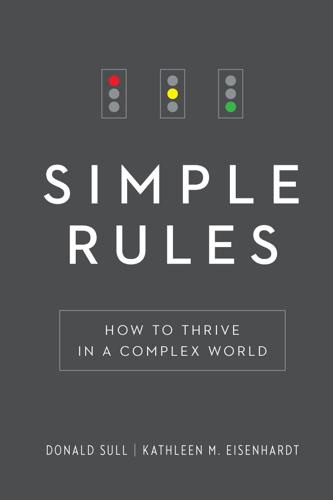
Simple Rules: How to Thrive in a Complex World
by
Donald Sull
and
Kathleen M. Eisenhardt
Published 20 Apr 2015
Coordination rules, however, do not deal with when to do things. For that, we turn now to the third process rule, timing, which addresses when to act. TIMING RULES Insomnia affects one-third of all adults, and is a condition that can severely reduce one’s quality of life and create major hazards for others. The Exxon Valdez oil spill, the Challenger space shuttle explosion, and the Chernobyl nuclear meltdown have all been attributed to sleep-deprived humans making errors. Insomnia particularly affects older adults, who have greater difficulty sleeping than younger people and are also more likely to experience the adverse side effects of common sleep medications.
…
While most lists contain the odd esoteric rule like “Never underestimate or condescend to your audience,” they converge on a handful of rules. See Charna Halpern, Del Close, and Kim Johnson, Truth in Comedy: The Manual of Improvisation (Colorado Springs, CO: Meriwether, 1994), and Tina Fey, Bossypants (New York: Little, Brown, 2011). [>] The Exxon Valdez: Australasian Broadcasting Corporation, “40 Facts About Sleep You Probably Didn’t Know,” accessed February 6, 2014, http://www.abc.net.au/science/facts/htm. [>] Thankfully, recent research: Daniel J. Buysse et al., “The Efficacy of Brief Behavioral Treatment for Chronic Insomnia in Older Adults,” Archives of Internal Medicine 171, no. 10 (2011): 887–95. [>] Timing rules sometimes: Kathleen M.
…
See dieting/eating economic value creation/simple rules, [>]–[>], [>]–[>], [>]–[>] n definition, [>] Eisenhardt, Kathleen background, [>] edge-of-chaos phenomenon and, [>], [>] improving simple rules lab study, [>]–[>] internationalization decisions of entrepreneurs and, [>] rule improvement pattern/strengthening, [>]–[>], [>]–[>] Start-Up Chile, [>] ESPN, [>] eToro description, [>]–[>] Popular Investors and, [>], [>], [>], [>], [>] simple rules program/YPO and, [>]–[>], [>], [>], [>], [>], [>] Everest, Mount/climbing, [>], [>]–[>] execution of strategy challenge of executing strategy, [>]–[>] crafting rules to guide strategy execution, [>]–[>] identifying a bottleneck impeding execution, [>]–[>] process to develop simple rules for strategy execution (summary), [>]–[>] simple rules to execute strategy, [>] simplifying strategy for execution, [>]–[>] Executive Education (London Business School), [>]–[>] experience and simple rules, [>]–[>], [>], [>]–[>] Exxon Valdez oil spill, [>] “fast thinking,” [>] Federal Reserve Board, [>] Fey, Tina, [>], [>], [>]–[>], [>] Filigran Trägersysteme, [>] Financial Times, [>], [>] Fincher, David, [>], [>], [>] fires (wildfires), [>]–[>] Fischer, Scott, [>], [>]–[>] “fixed-threshold strategy/with last chance option,” [>] Fleener, Coby, [>] Forest Service (US) rules on wildfires, [>]–[>] Francis, Pope, [>] Freiman, Nate, [>] Friz, Martin, [>], [>] Frontier Dental Laboratories, [>]–[>] Furr, Nathan, [>] Gebbia, Joe, [>], [>], [>]–[>] Gigerenzer, Gerd, [>] Glass-Steagall Act, [>] Glasser, Debbie, [>] go (Chinese game), [>]–[>] Google, [>], [>] Graham, Paul, [>] Great Depression, [>] Grupo Multimedia, [>] Guardian, [>] Haldane, Andy, [>] Harbaugh, Jim, [>] Harvard Business Review, [>], [>] Hastings, Reed, [>]–[>] Hawthorne, Nathaniel, [>] Hayek, Friedrich, [>] heuristics, [>], [>], [>] See also simple rules Hillary, Sir Edmund, [>] historical data and predictions, [>]–[>] H.
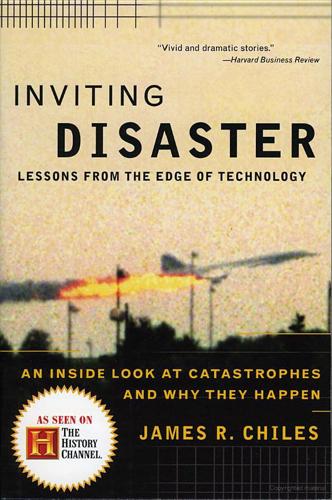
Inviting Disaster
by
James R. Chiles
Published 7 Jul 2008
These techniques attempt to sort through the most pressing probabilities. But there’s always a way to tilt the figures, and the history of these methods shows some attempts over the years to label worrisome events as extremely remote as a way of expediting a particular project; it happened before the DC-10 cargo-door blowouts and the Exxon Valdez oil spill. Before the Challenger disaster, NASA used a “probabilistic risk analysis” (PRA) method to report the odds of a disaster on any given shuttle mission. There were several outcomes depending on technique, but the most commonly cited one was one failure in one hundred thousand flights.
…
British Midlands 737 airliner: crash Near Kegworth, Leicestershire, United Kingdom January 8, 1989 Flight crew concluded from noise and vibration, and from use of throttles, that right-hand engine on twin-engined airliner was about to fail, so crew shut down that engine and relied on left-hand engine. In fact, left-hand engine had been failing due to ingestion of broken fan blade and lost all power short of airport. Crew did not have time to restart right-hand engine and crashed during approach. Deaths: 47. Exxon Valdez (American oil tanker): grounded Bligh Reef, Prince William Sound, Alaska, United States March 24, 1989 Outbound tanker left marked channel in attempt to avoid pack ice, with captain leaving bridge before difficult maneuver approached. Tanker failed to make turn in time and grounded on Bligh Reef.
…
Aircrash Detective—The Quest for Aviation Safety: An International Report. London: Hamish Hamilton, 1969. Bates, Warren. “Shattered Windows, Lives.” Las Vegas Review-Journal, May 3, 1998. Burcham, Frank. 2000. Personal communication with author. 16 August. Campion-Smith, Bruce. Boeing 777. Shepperton, England: Ian Allan, 1997. Davidson, Art. In the Wake of the Exxon Valdez: The Devastating Impact of the Alaska Oil Spill. San Francisco: Sierra Club Books, 1990. Eddy, Paul, Elaine Potter, and Bruce Page. Destination Disaster: From the Tri-Motor to the DC-10: The Risk of Flying. NewYork: Quadrangle Press, 1976. Faith, Nicholas. Black Box. London: Macmillian, 1997.
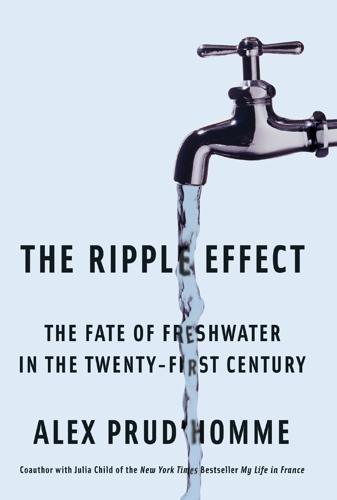
The Ripple Effect: The Fate of Fresh Water in the Twenty-First Century
by
Alex Prud'Homme
Published 6 Jun 2011
• • • By 2010, the oil spill beneath Brooklyn was estimated to contain at least 17 million to 30 million gallons of hydrocarbons and other toxic compounds, in pockets up to twenty-five feet deep, though the exact amount remains unknown. At the low end, this estimate represents 6 million more gallons of oil than the 10.8 million gallons of crude spilled by the Exxon Valdez in 1989, and 9 million more gallons than the oil spills that coated New Orleans after Hurricane Katrina in 2005. Until April 2010—when the drill rig Deepwater Horizon exploded, spewing 185 million gallons of oil into the Gulf of Mexico—the Newtown Creek oil spill was the largest in US history.
…
THE WORST OIL SPILL IN HISTORY On April 20, 2010, the Deepwater Horizon, a drill rig contracted by BP to prospect for oil miles beneath the Gulf of Mexico, suffered a catastrophic blowout and exploded in a giant fireball that could be seen from thirty-five miles away. The disaster killed eleven men, sank one of the world’s most sophisticated drilling platforms, and spewed at least 2.5 million gallons of oil per day into the Gulf—equivalent to an Exxon Valdez spill every four days. Eighty-six days later, BP managed to cap the well. The Coast Guard predicted it could take years to remediate the giant oil slick, which threatened seashores in Louisiana, Mississippi, Alabama, and Florida, and freshwater supplies as it entered tributary rivers. The Justice Department initiated a criminal investigation to determine if environmental laws had been violated, and BP’s CEO was forced to resign.
…
The crowd muttered, then shuffled out into the cold to think it over. SACRIFICING ONE RESOURCE FOR ANOTHER Miners and fishermen are not the only ones with their eyes on Bristol Bay. In 2007, President George W. Bush lifted a moratorium on drilling for oil there, which had been imposed by his father in 1990 in response to the Exxon Valdez disaster. The 2007 decision was yet another reminder of the growing competition for resources, and it enraged fishermen, environmentalists, and Native groups, who sued and delayed oil exploration in the bay. Drilling in Bristol Bay would generate an estimated $7.7 billion worth of oil and gas over twenty-five to forty years, which is a relatively modest return.
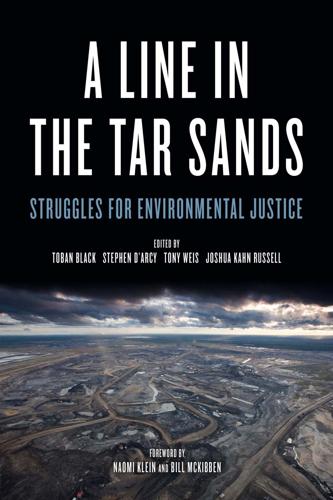
A Line in the Tar Sands: Struggles for Environmental Justice
by
Tony Weis
and
Joshua Kahn Russell
Published 14 Oct 2014
In British Columbia, the proposed Northern Gateway pipeline not only runs through one of the world’s largest remaining temperate rainforests, the Great Bear Rainforest, but it would also involve especially treacherous tanker shipping routes out of its terminus near Kitimat, weaving through coastal inlets and around the Haida Gwaii archipelago and territory of the Haida First Nation. At the same time, companies are attempting to increase the flow of tar sands bitumen through Kinder Morgan’s Trans Mountain pipeline in southern British Columbia, where Vancouver likewise may serve as a port for tar sands tanker traffic. The Exxon Valdez disaster is a forewarning of the potential risks of these plans. Although rail shipments are more expensive than pipelines, the tar sands industry has increasingly been utilizing railways in response to the limits of existing pipeline capacity, which lags behind the scale of extraction. As increasing pipeline capacity is taken up to pump tar sands, greater volumes of conventional oil are now being moved by rail, and it is ominous to note that there has been a dramatic surge in spills and accidents around US rail cars carrying oil since 2009.24 A further aspect of transport impacts relates to the attempt to establish a “megaload” corridor through the US Northwest and the northern Rocky Mountains.
…
In British Columbia, a number of proposed pipelines lead back to the tar sands: the Keystone XL route through the central US to Port Arthur, Texas; the Kinder Morgan Trans Mountain pipeline over the Rocky Mountains to the port of Vancouver; and the proposed Enbridge Northern Gateway line, which would run from Bruderheim, Alberta, to a marine port near Kitimat over the Rocky Mountains, crossing boreal forests, wild watersheds, and Indigenous territory. The proposed pipelines would intersect over seven hundred rivers and streams, including salmon-spawning habitat in the upper Fraser, Skeena, and Kitimat watersheds. Once received on British Columbia’s coast, oil tankers larger than the Exxon Valdez would have to navigate the treacherous waters of the Inside Passage. The pipeline would end at Kitimat, where oil tankers would travel through Haisla territory 150 kilometres down the narrow Douglas Channel, past the Gitga’at Nation at Hartley Bay and through Squally Channel into Hecate Strait, and on to the North Pacific.
…
For instance, the US federal government provides dozens of different recommendations for maximum safe exposure to benzene—a chemical found in oil that is known to cause cancer and neurological problems at high exposure rates—but none of these are specific to oil spills in residential areas.24 Despite these gaps in knowledge and policy, it is important to recognize that similar symptoms have been observed in many communities affected by oil spills, according to Dr. Riki Ott, a marine toxicologist, author, and activist who has been studying the subject since the 1989 Exxon Valdez spill in Alaska. Ott first visited Michigan in 2011 at the request of affected residents, and noted how she “was shocked at the similarity of the illnesses that were reported and documented by people” in Michigan to what she had seen in Alaska.25 After the Kalamazoo River spill, public health officials scrambled to grasp the extent of the potential health risks and respond accordingly.
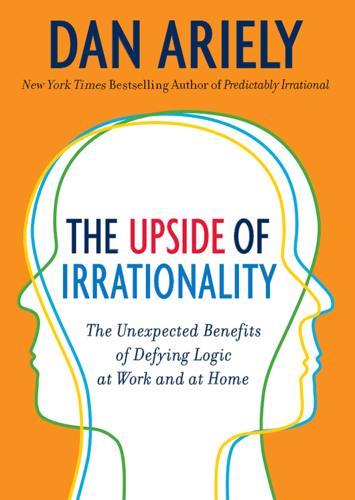
The Upside of Irrationality: The Unexpected Benefits of Defying Logic at Work and at Home
by
Dan Ariely
Published 31 May 2010
I’m sure Forgea was adorable and didn’t deserve to die, but one can ask whether, in the grand scheme of things, saving her was worth a twenty-five-day rescue mission that cost $48,000 of taxpayers’ money—an amount that might have been better spent caring for desperately needy humans. In a similar vein, consider the disastrous oil spill from the wrecked Exxon Valdez. The estimates for cleaning and rehabilitating a single bird were about $32,000 and for each otter about $80,000.19 Of course, it’s very hard to see a suffering dog, bird, or otter. But does it really make sense to spend so much money on an animal when doing so takes away resources from other things such as immunization, education, and health care?
…
Schelling, “The Life You Save May Be Your Own,” in Problems in Public Expenditure Analysis, ed. Samuel Chase (Washington, D.C.: Brookings Institution, 1968). 18. See Paul Slovic, “ ‘If I Look at the Mass I Will Never Act’: Psychic Numbing and Genocide,” Judgment and Decision Making 2, no. 2 (2007): 79–95. 19. James Estes, “Catastrophes and Conservation: Lessons from Sea Otters and the Exxon Valdez,” Science 254, no. 5038 (1991): 1596. 20. Samuel S. Epstein, “American Cancer Society: The World’s Wealthiest ‘Nonprofit’ Institution,” International Journal of Health Services 29, no. 3 (1999): 565–578. 21. Catherine Spence, “Mismatching Money and Need,” in Keith Epstein, “Crisis Mentality: Why Sudden Emergencies Attract More Funds than Do Chronic Conditions, and How Nonprofits Can Change That,” Stanford Social Innovation Review, spring 2006: 48–57. 22.
…
mismatching of money and need and, 250–51 motivating people to take action and, 252–56 Chat Circles, 225 cheating, 76 childbirth, pain of, 168, 169n children: in growing and preparing of food, 121 parents’ overvaluation of, 97–98 chimpanzees, sense of fairness in, 127 chores, taking breaks in, 177–79, 180 civil liberties, erosion of, 158 Clark, Andrew, 169 climate change, 251–52 closeness, empathy and, 243, 245, 254 clutch abilities, 39–41 CNN, 238 Coates, Dan, 170 cockroaches, social pressure in, 45–46 commercial breaks, enjoyment of television and, 181n comparisons, hedonic adaptation and, 189 compensation, 47 changes in, job satisfaction and, 169–70 see also bonuses completion: employees’ sense of, 77, 79–80 Loewenstein’s analysis of mountaineering and, 80–81 computers, 233 consumer purchases, 185–88 happiness derived from transient experiences vs., 187–88 hedonic treadmill and, 175 placing limits on, 186–87 reducing, 185–86 spacing of, 185, 186 contrafreeloading, 60–63 Jensen’s study of, 60–62, 63 standard economic view at odds with, 62–63 Converse, 95 cooking: children’s involvement in, 121 enjoyment factor and, 62n, 105–6 semi-preprepared food and, 85–88 CO2 emissions, 251–52 counting strategies, 282–83 Count of Monte Cristo, The (Dumas), 123 creation, pride of: ideas and, see Not-Invented-Here (NIH) bias self-made goods and, see IKEA effect creativity, bonuses and improvements in, 47–48 Csíkszentmihályi, Mihály, 49 cultures, organizational: acronyms and, 120 Not-Invented-Here bias and, 119–21 customer revenge, 131–51 against airlines, 142–43 apologies and, 149–51, 152 author’s experience with Audi customer service and, 131–36, 137, 147–49, 153–54 distinction between agents and principals and, 144–47 Farmer and Shane’s “Yours Is a Very Bad Hotel” and, 140–41, 146 fictional case study for Harvard Business Review on, 147–49 increase in, 143 Neistat brothers’ video on Apple’s customer service and, 141–42 passage of time and, 151 phone call interruption experiments on, 135–39, 145–46, 150–51 customization, 94–96 of cars, 88, 89, 94 effort expended in, 89, 95–96 overvaluation despite removing possibility of, 96 of shoes, 95, 96 D Dallaire, Roméo, 255 Darfur, 238, 253 Dart Ball game, 23, 34 Darwin, Charles, 157 dating, 191–235 market failures in, 213–15, 216–17, 220–21, 230–32, 233–35 playing hard to get and, 104 standard practice of, 224–25, 227–28 yentas (matchmakers) and, 213 see also assortative mating; online dating; speed dating decision making: author’s medical care and, 284–88 cooling off before, 257, 279 emotions and, 261–77 gender differences and, 274–76 irreversible decisions and, 285, 286 rationalization of choices in, 287 from rational perspective, 5–6 short-term, long-term decisions affected by, 264–65, 270–74, 276–77 stability of strategies for, 261–65; see also self-herding ultimatum game and, 265–70, 275–76 dentistry, adaptation to pain and, 161–62 design, taking people’s physical limitations into account in, 230–32 destroying work in front of workers, 74–76 Dichter, Ernest, 86 disease: adaptation to pain and, 165, 167 preventative health care and, 251, 256 “survivor” rhetoric and, 241–42 Disney, 154 distraction, performance-based incentives and, 30, 36 division of labor, 77–80 IT infrastructure and, 77, 79–80 Marx’s alienation notion and, 79 Smith’s observations on, 77–78 divorce, foreseeing outcome of, 173 Dodson, John, 18–20, 22, 31, 47 do-it-yourself projects, see IKEA effect Donath, Judith, 225 Dostoyevsky, Fyodor, 157 Doubletree Club, Houston, 140–41, 146 dreams, author’s self-image in, 182–83 DreamWorks SKG, 154 driving: momentary anger during, 261 safety precautions and, 6–7 texting during, 6, 7, 8 see also cars drop-in-the-bucket effect, 244–45, 252, 254–55 Dumas, Alexandre, 123 E Eastwick, Paul, 172–73 Edison, Thomas, 117–19, 122 effort: increase in value related to, 89, 90, 95–96, 105–6; see also IKEA effect joy derived from activity and, 71–72 meaningful work conditions and, 72 ownership of ideas and, 114–16 see also labor egg theory, 86–88 Eisner, Michael, 154 electric chair, 119 electricity, alternating current (AC) vs. direct current (DC), 117–19 emotional cascades, 265–78 gender differences and, 274–76 romantic relationships and, 277–78 ultimatum game and, 265–76 emotional priming: empathy for plight of others and, 246–48 ultimatum game and, 268–70 emotions, 43, 237–79 appeals to, willingness to help others and, 240–42, 248–50, 253–54, 256 decision making and, 261–77; see also decision making in past, humans’ poor memory of, 264 transience of, 257, 261, 270 see also empathy; negative feelings, acting on empathy: animals’ suffering and, 249, 252 apathy toward statistical victims and, 238–41, 242, 246, 247–49, 252–53 Baby Jessica saga and, 237–38 calculating vs. emotional priming and, 246–48 clear moral principles and, 255 closeness and, 243, 245, 254 drop-in-the-bucket effect and, 244–45, 252, 254–55 emotional appeals and, 240���42, 248–50, 253–54, 256 global warming and, 251–52 identifiable victim effect and, 239–42, 248, 256 overcoming barriers to, 252–56 rules to guide our behavior and, 254–55 thought experiment of drowning girl and, 242–43, 245 toward one person vs. many in need, 237–56 vividness and, 24, 243n, 244, 245 endowment effect, 285, 286 Enron, 216 evolution, mismatch between speed of technological development and, 8–9 experiments, 10–11, 288–95 business or public policy and, 292–94, 295 of Gideon, 288–89 medical practice and, 289–92 rational economists’ criticisms of, 49–51 see also specific topics Exxon Valdez oil spill, 249 F fairness, sense of: in chimpanzees, 127 decision making and, 266–67; see also ultimatum game gender differences and, 275–76 Fallows, James, 158 Farmer, Tom, 140–41, 146, 148–49 FedEx, 108–9 feedback, about work, 74–76 Feeks, John, 118–19 Fehr, Ernst, 125–26 financial incentives: meaning of labor and, 72–73, 76 see also bonuses financial markets, safety measures for, 7 financial meltdown of 2008, 7, 21, 216 chronology of events in, 129–30 desire for revenge in wake of, 128–31 lack of experimental approach to, 293 outraged public reaction to bailout in, 128–29, 130 Finkel, Eli, 172–73 First Knight, 50 fixation, pride in creation and ownership and, 89, 122 food: animals’ preference for working for, 59–63 semi-preprepared, 85–88 shortages of, identifiable victim effect and, 239–41 see also cooking Food and Drug Administration (FDA), 292 Ford, Henry, 78–79, 94 Forgea (white terrier), 249 Fox, Michael J., 254 “Fox and the Grapes, The” (Aesop), 198–99 Frank, Barney, 41 Frankl, Viktor, 45 free food, animals’ preference for working for food vs., 60–62 Frenk, Hanan, 161–65, 300 Friends, ultimatum game and, 269, 270–71, 272 frog experiment, 157–58 Frost, Jeana, 219–20, 229, 300 Fryer, Bronwyn, 148 furniture, do-it-yourself, 83–84, 96, 105, 106 future, foreseeing adaptation to changes in, 160, 171–74 G gardening: children growing food and, 121 enjoyment factor and, 105–6 gender differences: assortative mating and, 209, 211 decision making and, 274–76 pain threshold and tolerance and, 168–69 Gideon, 288–89 global warming, 158, 251–52 Gneezy, Ayelet, 135, 144–45, 150, 300–301 Gneezy, Uri, 21, 44, 301 Gore, Al, 158, 252 government policies, experimental approach to, 292–94, 295 H happiness: comparisons to other people and, 189 consumer purchases and, 175, 185–88 inaccurate predictions about, 170–71 return to baseline of, 170 transient vs. constant experiences and, 187–88 Harvard Business Review (HBR), 147–49 health care, see medical care hedonic adaptation, 160–84 to annoying experiences, 177–79, 180 author’s personal history and, 181–84, 189 blindness and, 172–74 breaking up experiences and, 177–81 changes in workers’ pay and, 169–70 comparisons to other people and, 189 consumer purchases and, 175, 185–88 extending pleasurable experiences and, 176–78, 179–81, 185, 186 in future, foreseeing of, 160, 171–74 happiness baseline and, 170 life-altering injuries and, 171–72, 174 moving to California and, 176 new houses and, 168–69 pain and, 160–67 romantic breakups and, 172–73 to transient vs. constant experiences, 187–88 using our understanding of, 176–81, 184–90 hedonic disruptions, 177–81 hedonic treadmill, 175 Heingartner, Alexander, 45–46 Henry, O., 98 herding, 262 see also self-herding Herman, Edward, 45–46 Hippocrates, 82 Hogerty, Megan, 81 homeostatic mechanisms, 81 Hong, James, 201, 203 HOT or NOT study, 201–5, 208 gender differences in, 209, 211 Meet Me feature and, 204–5, 208, 209 humor, sense of, 199, 200, 207, 208, 228 Hurricane Katrina, 250, 251 I ideas: attachment to, see Not-Invented-Here (NIH) bias idiosyncratic fit and, 111–12 identifiable victim effect, 239–42, 248, 256 American Cancer Society and, 241–42 identity, connection between work and, 53–55, 79 idiosyncratic fit, ideas and, 111–12 ignoring workers, 74–76 IKEA, 83–84, 106 IKEA effect, 83–106 author’s creations in rehabilitation center and, 100–101 completion of project and, 101–4, 105 do-it-yourself furniture and, 83–84, 96, 106 effort expended and, 89, 90, 95–96, 105–6 four principles in, 104–5 and lack of awareness of overvaluation, 99 Legos experiment and, 96, 97 Local Motors cars and, 88, 89 Not-Invented-Here (NIH) bias and, 109–10, 121 origami experiments and, 91–94, 97, 98–99, 102–4 parents’ overvaluation of their children and, 97–98 practical implications of, 121–22 relaxation notion and, 105–6 removal of individual customization and, 96 semi-preprepared food and, 85–88 shoe design and, 95, 96 immediate gratification, 5 Inconvenient Truth, An, 252 initiation into social groups, 89 injuries: association of pain with getting better after, 166–67 author’s dating prospects and, 191–96, 210–11 author’s decisions about his medical care and, 284–88 author’s personal history related to, 1–4, 13, 107, 160–62, 166–67, 181–84, 189, 191–96, 210–11, 281–88 battlefield vs. civilian, 167 foreseeing future after, 160 life-altering, adaptation to, 160, 171–72, 174 pain thresholds and tolerance related to severity of, 161–65 Institute for Evolutionary Anthropology, Leipzig, Germany, 126–27 insurance products, 233–34 interruptions: in pleasant vs. painful experiences, 177–81 TV commercials and, 181n see also phone call interruption experiments intuitions: bonuses and, 36–37 received medical wisdom and, 289–92 romantic, 172–73 testing of, 10n, 288–95 inverse-U relationship, defined, 19 iPods and iPhones, battery replacement in, 141–42 irrationality: summary of findings on, 288 upside as well as downside of, 11–12, 294 irreversible decisions, 285, 286 IT infrastructure, division and meaning of labor and, 77, 79–80 J Janoff-Bulman, Ronnie, 170 Jensen, Glen, 60–62, 63 Jensen, Keith, 127 Jewish tradition, 254–55 Johns Hopkins Bloomberg School of Public Health, Baltimore, 152 Joyless Economy, The (Scitovsky), 188 justice, see fairness, sense of K Kahneman, Danny, 32n, 175–76 Kamenica, Emir, 66, 301 Katzenberg, Jeffrey, 154 Kemmler, William, 119 kinship, empathy and, 243 Krishnamurti, Tamar, 172–73 Krzyzewski, Mike, 39 L labor: connection between identity and, 53–55, 79 contrafreeloading and, 60–63 economic model of, 55, 62–63, 105 financial incentives and, see bonuses meaning of, see meaning of labor overvaluation resulting from, see IKEA effect on projects without meaning, 56–57, 63–72 Labyrinth game, 23 Lee, Leonard, 132, 134, 197, 201–2, 301–2 Lee, Sandra, 87–88 leeches, medicinal use of, 290–91 Legos experiments: on IKEA effect, 96, 97 on reducing meaningfulness of work, 66–74, 77, 80 letter-pairs experiment, 74–76, 80 life-altering events, hedonic adaptation and, 170 Life as a House, ultimatum game and, 268, 269, 270, 272, 276 light, adaptation to changes in, 159 Local Motors, Inc., 88, 89 Loewenstein, George, 21, 44, 80–81, 172–73, 197, 201–2, 239–41, 246–48, 302 long-term objectives, short-term enjoyments vs., 4–5 loss aversion, 32–33, 285, 286 lottery winners, hedonic adaptation of, 170, 171 “Love the One You’re With,” 197, 211–12 M malaria, 250, 251 Man’s Search for Meaning (Frankl), 45 marketing, adaptation and, 158 market mechanisms, 215–16 dating and, 213–15, 216–17, 220–21, 230–32, 233–35 Marx, Karl, 79 massages, extending pleasure of, 179–80 matchmakers (yentas), 213 Mazar, Nina, 21, 30, 44, 302 McClure, Jessica (Baby Jessica), 237–38 meals, see cooking meaning of labor, 53–82 in acknowledged, ignored, and shredded conditions, 74–76 animals’ preference for working for food and, 59–63 blogging and, 65 division of labor and, 77–80 draining work of meaning and, 55–57, 63–77 financial incentives and, 72–73, 76 joy derived from activity and, 71–72 labor-identity connection and, 53–55, 79 Legos experiment and, 66–74, 76, 80 lessons for workplace on, 80–82 letter-pairs experiment and, 74–76, 80 “meaning” vs.
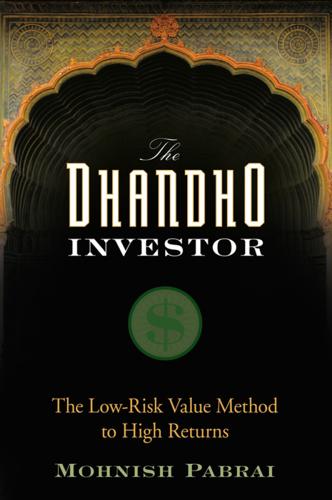
The Dhandho Investor: The Low-Risk Value Method to High Returns
by
Mohnish Pabrai
Published 17 May 2009
Table 10.1 demonstrates that in spades. The nine events outlined in Table 10.1 all led to double-digit declines in the Dow in a few days or weeks. However, a few months later, the Dow had recovered most, if not all, of the decline. Business-specific microevents for businesses, like the Tylenol scare, the Exxon Valdez oil spill, or the American Express “salad oil crisis” in the 1960s, have similar traits. They all led to big instantaneous drops as panic and fear set in. Over time, as rationality prevailed, prices did recover to more rational levels. Table 10.1 DJIA Declines and Subsequent Performance after Crisis Events Similarly, if you invest in any under- or overpriced business, it will eventually trade around its intrinsic value—leading to an appropriate profit or loss.
…
Figure 13.2 Frontline’s Highly Irrational Pricing in Q3 2002 © 2006 Yahoo! Inc. YAHOO! and the YAHOO! logo are trademarks of Yahoo! Inc. My Knightsbridge research had highlighted that there is a feedback loop in the tanker market. There are two kinds of tankers: single hull and double hull tankers. After the Exxon Valdez spill, all sorts of maritime regulations were instituted requiring all new tankers to be double hull after 2006 because they are less likely to spill oil. The entire Frontline fleet is double hull tankers. But there were a huge number of single hull rust buckets from the 1970s still being used to transport crude.
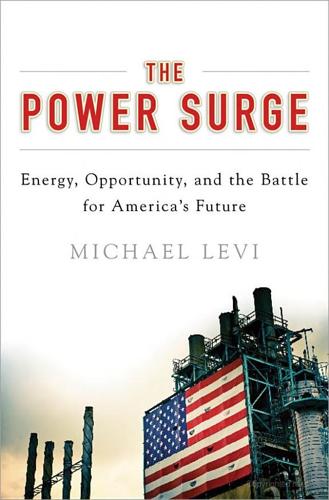
The Power Surge: Energy, Opportunity, and the Battle for America's Future
by
Michael Levi
Published 28 Apr 2013
Skeptics of mandated conservation and efficiency tasted victory in 1985 when new fuel economy standards for cars and trucks, deemed expensive, unnecessary, and dangerous, were shelved. Opponents of nuclear power successfully mobilized public fear following the Three Mile Island meltdown in 1979, which, together with rising costs, put the U.S. nuclear industry largely out of business. Adversaries of offshore oil drilling, buoyed by the Exxon Valdez disaster in 1989, sought and delivered a ban on new exploration and production off U.S. coasts. Supporters of small government and skeptics of alternative fuels nearly dismantled the Department of Energy and succeeded in starving it of cash. During the 1990s, climate change rose to join the pantheon of previously contested energy issues, yet once again opponents of action—this time by an overwhelming ninety-five to zero vote in Congress that preemptively rejected the Kyoto Protocol and, more importantly, set the tone for domestic U.S. climate policy—made sure that little if anything would be done. m m m The first years of the twenty-first century would challenge the stasis quickly.
…
Oil watchers were heralding a stunning boom in U.S. production. In North Dakota and Texas, producers were drilling down and then sideways to extract oil, using the same techniques that have been applied to natural gas. Offshore production was booming despite the Deepwater Horizon disaster, the first major U.S. oil spill since the Exxon Valdez. North of the U.S.-Canada border, in the Alberta oil sands, developers were extracting tarlike bitumen in massive mines and by heating deposits buried deep beneath the earth, producing millions of barrels a day of oil in the process and fueling excitement about potential gains further south. This time around, it seemed, the technologies that were needed to fuel resurgence in American oil were finally ready for prime time.
…
See Oil Shock (1973) energy independence, 3, 8, 51–52, 70, 79–80, 82, 196 Energy Information Administration, 54, 112, 149, 173 Energy Policy Act (1992), 14 energy security Great Recession and, 16 market-based approaches to, 14 natural gas and, 25, 35, 49, 200 oil and, 3, 16, 64–65, 72, 76–79, 111, 125, 127, 131–132, 136–137, 142, 185, 196, 209 rare-earth metals and, 111, 132–134, 136 renewable energy and, 9, 110–111, 125, 161, 163 sea lanes and, 78, 183–184, 205 September 11, 2001 terrorist attacks and, 15–16 United States and, 7, 13–14, 18–19, 163, 197–198, 200, 210 Energy Security Leadership Council, 65 Enphase Energy, 117 Envia Systems, 36, 117, 133 Environmental Defense Fund, 206 INDEX • 253 environmentalists Alaska National Wildlife Refuge (ANWR) and, 59 energy companies and, 207–208 natural gas production and, 3–4, 29, 43–44, 48, 92, 98, 208 pollution and, 14 estimated ultimate recovery (EUR), 41–43 ethane, 27–28, 35, 56 ethanol. See under biofuels ethylene, 27–28 Europe. See also individual countries natural gas and, 30–35 natural gas vehicles in, 38–39 Exxon, 10 Exxon Valdez disaster, 15, 52 Federal Reserve, 131, 183 Ferrenberg, Scott, 83–84, 87–88 FLABEG, 161–162, 167–168 food prices, biofuels impact on, 120–121, 140–141 Ford Motor Company Congressional testimony by, 9 Focus Electric model and, 114, 116, 118, 141 Mustang model and, 118–119 research and development at, 5, 114–116, 118–119, 122–123, 136 Ford, Gerald, 51 Ford, Henry, 17 Foulkes, John, 62 Fox, Josh, 4 fracking natural gas production and, 2–3, 24, 35, 44–47, 98 oil production and, 54 opposition to, 3–4, 22, 35, 92, 98, 177 France, 24, 33, 172 Frederick, Jamie, 4–5 Friedman, Tom, 163 Friendly Frackasaurus, 48 fuel cells, 114 fuel efficiency.

Bold: How to Go Big, Create Wealth and Impact the World
by
Peter H. Diamandis
and
Steven Kotler
Published 3 Feb 2015
Case Study 1: Wendy Schmidt Oil Cleanup XCHALLENGE In April 2010, British Petroleum’s Deepwater Horizon oil rig exploded and sank off the Gulf Coast of the United States, causing the largest accidental ocean oil spill in the history of the petroleum industry. Before it was capped, the leaking Macondo Prospect well spewed more than 200 million gallons of oil into the sea, exceeding the infamous 1989 Exxon Valdez spill some eighteen times over. The resulting slick covered 2,500 to 4,000 square miles of the Gulf of Mexico, approximately the size of Hawaii’s Big Island.11 Using a combination of traditional methods, cleanup teams managed to remove less than half the oil, approximately 69 million gallons.
…
Francis Beland, then my vice president of prize development, also an ocean explorer, studied the problem. The idea of a prize to cap the gusher was off the table—BP would never give us (or anyone) access to their data. Next we turned to the idea of impacting the cleanup. We quickly realized that the technology to clean up oil spills had not significantly improved in the twenty-one years since the Exxon Valdez spill. In fact, a lot of the equipment being used in the gulf was the very same equipment used decades earlier in Alaska. Why? It turned out to be a multilevel problem, with a number of perverse incentives. Cleanup teams (typically disenfranchised fishermen) often were paid by the hour, giving them no financial reason to be faster or more efficient.
…
Shaw, 129 Devitt, Scott, 132–33 Diamandis, Peter H., 202, 278, 279, 286n Digital Apparel, 61 digital cameras, 6–7, 9, 10, 12, 12, 14, 76 first model of, 4–5, 5, 9 digitalization, 8–9, 8, 10, 20 of books, 154–55 of synthetic biology, 63, 64 digital manufacturing, 33 discovery-based insights, 160, 161–62 disruption, exponential, 8, 8, 9–10, 20, 24, 25, 29, 32, 39, 41, 59, 60, 256 robotics potential for, 60, 61–62 of synthetic biology, 63–65 3–D printing’s impact of, 33–35, 37, 38, 39 DIY communities, 215–16, 219, 227, 233, 239, 241, 243 case studies of, 219–25 definition of, 215 massively transformative purpose (MTP) in, 215, 221, 230, 231, 233, 240, 242 reasons for building of, 228–29 wrong reasons for building of, 229–30 see also communities, online DIY Drones, 216–17, 229, 232, 242 DNA, 63, 64, 65 Doctorow, Cory, 38 Dogpatch, Ky., 71 doll industry, 38–39 donation funding, 172, 173 Doukas, Charalampos, 43 Downey, Robert, Jr., 117 Dragon capsules, 34, 97, 119 Drive (Pink), 79 drones, 14, 44, 61, 133, 275 dual-use crowdsourcing, 154–56 Dunn, Jason, 35–36, 37 Duolingo, 155–56 DuPont, 72 D-Wave Systems, 58, 59 Eastman, George, 3–4, 15 Eastman Dry Plate Company, 4 Eastman Kodak Company, see Kodak Corporation eBay, 118, 218 “e-discovery” software, 56 Elastec/American Marine team, 252 electric cars, 119 Ellenberg, Jordan, 255 Ellucian, 258 Engadget (blog), 177, 206 engagement strategies: in crowdfunding campaigns, 203–6, 207 early donor, 203–5 incentive competitions as, see incentive competitions for media attention, 205–6 in online communities, 224, 227, 235, 236–38, 239, 241 rating systems as, 226, 232, 236–37, 240 entitlement problem, 237 Entrepreneur, 62 entrepreneurs, exponential, xi, xii–xiv, 15, 17, 21–22, 24, 28, 41, 66–67, 73, 115–16, 123, 169, 231, 243, 274, 278 AI and, 54, 56–59 birthing projects above line of super-credibility and, 96, 98–99, 98, 100, 101–2, 107, 190, 199, 203, 266, 272 building online communities for, see communities, online choosing technology for development by, see technology, exponential crowd tools of, see crowdfunding, crowdfunding campaigns; crowdsourcing; incentive competitions incentive prizes as tools of, see incentive competitions infinite computing and, 50–52 networks and sensors trend and, 43, 47–48 passion as important in, 106–7, 119–20, 122, 125, 134, 174, 183, 184, 228 psychological tools for, see psychological tools, of entrepreneurs risk management and, 76–77, 82, 83, 84, 86, 87, 88, 92, 93, 103, 109, 121–22, 126–27, 137, 261, 270 robotics and, 60, 61, 62 solving problems as business opportunities for, xii thinking at scale and, see scale, thinking at in 3–D printing, 35–39 see also specific entrepreneurs and companies equity funding, 172, 173–74 European Space Agency (ESA), 102 experts, in crowdfunding campaigns, 193 exponential communities, xiii, 148, 182, 219, 233 case study of, 225–28 definition of, 215–16 DIY vs., 215–16 see also communities, online exponential growth curve, x, 6, 7, 9, 12, 12, 36, 37, 41, 54, 59 of biotechnology, 64 linear vs., 7, 9 Six Ds of, see Six Ds of Exponentials exponential organizations, 15–17, 18–21, 22 crowd tools of, see crowdfunding, crowdfunding campaigns; crowdsourcing; incentive competitions definition of, 15 linear vs., 15, 17, 18, 19, 20, 21 structure of, 21 see also entrepreneurs, exponential; specific exponential entrepreneurs and organizations Exponential Organizations (ExO) (Ismail), xiv, 15 extrinsic rewards, 78, 79 Exxon Valdez, 250 FAA (Federal Aviation Administration), 110, 111, 261 Facebook, 14, 16, 88, 128, 173, 182, 185, 190, 195, 196, 202, 212, 213, 217, 218, 224, 233, 234, 236, 241 facial recognition software, 58 Fairchild Semiconductor, 4 Falcon launchers, 97, 119, 122, 123 false wins, 268, 269, 271 Fast Company, 5, 248 Favreau, Jon, 117 feedback, feedback loops, 28, 77, 83, 84, 120, 176, 180 in crowdfunding campaigns, 176, 180, 182, 185, 190, 199, 200, 202, 209–10 triggering flow with, 86, 87, 90–91, 92 Festo, 61 FeverBee (blog), 233 Feynman, Richard, 268, 271 Firefox Web browser, 11 first principles, 116, 120–21, 122, 126 Fiverr, 157 fixed-funding campaigns, 185–86, 206 “flash prizes,” 250 Flickr, 14 flow, 85–94, 109, 278 creative triggers of, 87, 93 definition of, 86 environmental triggers of, 87, 88–89 psychological triggers of, 87, 89–91, 92 social triggers of, 87, 91–93 Flow Genome Project, xiii, 87, 278 Foldit, 145 Forbes, 125 Ford, Henry, 33, 112–13 Fortune, 123 Fossil Wrist Net, 176 Foster, Richard, 14–15 Foundations (Rose), 120 Fowler, Emily, 299n Foxconn, 62 Free (Anderson), 10–11 Freelancer.com, 149–51, 156, 158, 163, 165, 195, 207 Friedman, Thomas, 150–51 Galaxy Zoo, 220–21, 228 Gartner Hype Cycle, 25–26, 25, 26, 29 Gates, Bill, 23, 53 GEICO, 227 General Electric (GE), 43, 225 General Mills, 145 Gengo.com, 145 Genius, 161 genomics, x, 63, 64–65, 66, 227 Georgia Tech, 197 geostationary satellite, 100 Germany, 55 Get a Freelancer (website), 149 Gigwalk, 159 Giovannitti, Fred, 253 Gmail, 77, 138, 163 goals, goal setting, 74–75, 78, 79, 80, 82–83, 84, 85, 87, 137 in crowdfunding campaigns, 185–87, 191 moonshots in, 81–83, 93, 98, 103, 104, 110, 245, 248 subgoals in, 103–4, 112 triggering flow with, 89–90, 92, 93 Godin, Seth, 239–40 Google, 11, 14, 47, 50, 61, 77, 80, 99, 128, 134, 135–39, 167, 195, 208, 251, 286n artificial intelligence development at, 24, 53, 58, 81, 138–39 autonomous cars of, 43–44, 44, 136, 137 eight innovation principles of, 84–85 robotics at, 139 skunk methodology used at, 81–84 thinking-at-scale strategies at, 136–38 Google Docs, 11 Google Glass, 58 Google Hangouts, 193, 202 Google Lunar XPRIZE, 139, 249 Googleplex, 134 Google+, 185, 190, 202 GoogleX, 81, 82, 83, 139 Google Zeitgeist, 136 Gossamer Condor, 263 Gou, Terry, 62 graphic designers, in crowdfunding campaigns, 193 Green, Hank, 180, 200 Grepper, Ryan, 210, 211–13 Grishin, Dmitry, 62 Grishin Robotics, 62 group flow, 91–93 Gulf Coast oil spill (2010), 250, 251, 253 Gulf of Mexico, 250, 251 hackathons, 159 hacker spaces, 62, 64 Hagel, John, III, 86, 106–7 HAL (fictional AI system), 52, 53 Hallowell, Ned, 88 Hariri, Robert, 65, 66 Harrison, John, 245, 247, 267 Hawking, Stephen, 110–12 Hawley, Todd, 100, 103, 104, 107, 114n Hayabusa mission, 97 health care, x, 245 AI’s impact on, 57, 276 behavior tracking in, 47 crowdsourcing projects in, 227, 253 medical manufacturing in, 34–35 robotics in, 62 3–D printing’s impact on, 34–35 Heath, Dan and Chip, 248 Heinlein, Robert, 114n Hendy, Barry, 12 Hendy’s law, 12 HeroX, 257–58, 262, 263, 265, 267, 269, 299n Hessel, Andrew, 63, 64 Hinton, Geoffrey, 58 Hoffman, Reid, 77, 231 Hollywood, 151–52 hosting platforms, 20–21 Howard, Jeremy, 54 Howe, Jeff, 144 Hseih, Tony, 80 Hughes, Jack, 152, 225–27, 254 Hull, Charles, 29–30, 32 Human Longevity, Inc.
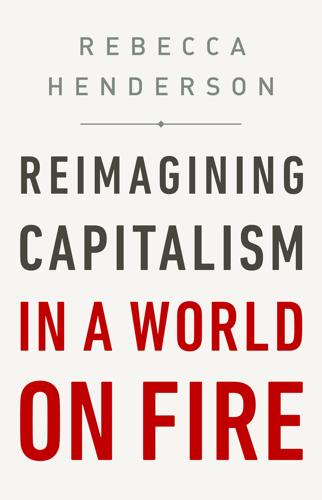
Reimagining Capitalism in a World on Fire
by
Rebecca Henderson
Published 27 Apr 2020
“ESG Sustainable Impact Metrics—MSCI,” Msci.Com, 2019, www.msci.com/esg-sustainable-impact-metrics. 15. Alan Taylor, “Bhopal: The World’s Worst Industrial Disaster, 30 Years Later,” Atlantic, December 2014; Adrien Lopez. “20 Years on from Exxon Valdez: What Progress for Corporate Responsibility?” Mar. 29, 2009, www.ethicalcorp.com/communications-reporting/20-years-exxon-valdez-what-progress-corporate-responsibility. 16. Mindy S. Lubber, “30 Years Later, Investors Still Lead the Way on Sustainability,” Ceres, Mar. 23, 2019, www.ceres.org/news-center/blog/30-years-later-investors-still-lead-way-sustainability.
…
So-called Environmental, Social, and Governance (ESG) metrics are one possible solution to this problem.14 They have their origin in the 1980s, when a number of high-profile disasters, including the 1984 leak of toxic gas in Bhopal, India, that killed at least fifteen thousand people and injured many more and the 1990 Alaskan Exxon Valdez oil spill, led several NGOs to demand that firms disclose more information about the environmental and social effects of their operations.15 In response several firms began issuing corporate social responsibility reports. These early reports contained only very limited amounts of quantitative information.
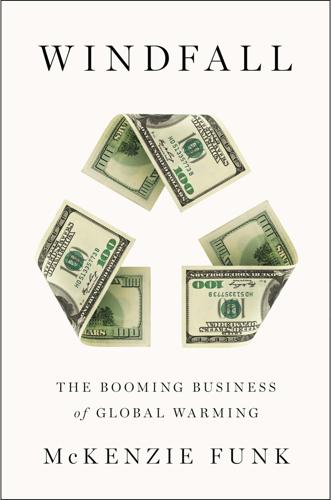
Windfall: The Booming Business of Global Warming
by
Mckenzie Funk
Published 22 Jan 2014
But the Manavgat still flows mostly to the sea and the novel remains unpublished, and for two decades Spragg has been trying to raise money for another prototype. As for the common petroleum-to-plowshares dream of shipping water with old single-hull oil tankers—which are in low demand after the Exxon Valdez—he and other experts are dismissive. Single-hull tankers may be inexpensive to buy, but they are expensive to retrofit. Not only do the ships’ holds need to be cleaned, but pipes, pumps, valves, and washers need to be replaced. “I’ve seen the numbers,” says Spragg. “Basically, it’s cheaper to take the tanker and cut it down and use it for scrap than to redo it.”
…
The geoengineering invention sessions eventually stopped; IV had dreamed up what it could, the patents were pending, and now it seemed to be up to the world what happened next. “In general, global warming is about the worst possible problem for our society to deal with,” Myhrvold told me. “Almost the worst-case problem for our psychology. We deal best with ecological problems that are severe and localized in space and time. When you have something like that or the Exxon Valdez spill or Love Canal, when the impact is immediate, local, and extreme, then it’s pretty easy. This is also true of forest fires. It’s like, ‘Oh, God, we’ve got to fix this!’” He paused. “The problem with global warming,” he said, “is that it’s not localized in space—it’s global. And it’s not localized in time, either.
…
Aamodt, Jim, 102 abiotic stress tolerance, 246–47 Acciona, 167 acid rain, 271 activation energy, 63 Acuña, René, 129 adaptation, 10, 111–12, 210–12, 222–23, 229–32, 267 Aedes aegypti mosquito, 235–36, 237 breeding places, 238, 239 genetically modified OX513A, 236, 239–40, 242, 247, 250–53 producing sterility in, 241–44 spraying, 239–40 Aedes albopictus mosquito, 236, 244, 250 Affordable H2Ousing, 227 Africa: deportations to, 174 refugees from, 172–75, 180–84, 191 African Agricultural Technology Foundation, 245 Agcapita, 153 agriculture: increased growing days, 21, 64, 152, 153 land for, 137, 139–59 and salinity, 195, 198 and water, 87, 90, 148, 205 Agrifirma, 153 Aguas de Barcelona, 21–22 AIG (American International Group), 98, 99, 103–5, 109, 110, 113, 115 alarm fatigue, 52 Alaska: and Arctic claims, 32, 36 endangered villages in, 19, 65 and lease sale, 49, 53, 55–57, 286–87 and oil, 46, 48–49 water contracts in, 122 Alaska Gas Pipeline Project, 46 albedo, 21, 262, 266 Al-Faisal, Prince Mohamed, 122 Algodones Dunes, 126, 128 All-American Canal, 125–29, 130, 167, 264 All-Assam Students Union (AASU), 190, 191, 206 Alliance of Small Island States (AOSIS), 215–16, 226 Al Maktoum, Sheikh Mohammed bin Rashid, 227 Alphey, Luke, 241–44, 250–53 Alps, melting glaciers in, 65–66, 79–83, 86 American Enterprise Institute (AEI), 267, 276, 279 American Society of Civil Engineers (ASCE), 232 American Society of Tropical Medicine and Hygiene, 243 Andermatt, Switzerland, 80 Anderson, Terry, 132–33 Angus and Ross, 73 Anopheles gambiae mosquito, 247 Anthropocene epoch, 5, 252 Aquaterra, 222 aqueducts, 125 Aqueous, 124 aquifers, 205 Arad, Elisha, 89–91 Arcadis, 229, 230–31, 233–34 Arctic: development plans for, 45–46, 47 melting sea ice in, 21, 32, 35, 45, 47, 48, 56, 64–66, 77–78, 118, 194, 203, 284, 287–88 national claims on, 32, 35–37, 38 new shipping lanes in, 16–18, 25–26, 31–32, 54, 284 and petroleum, 16, 31, 32–33, 47, 286 Arctic Climate Impact Assessment, 46 Arctic Council, 194 Arctic Frontiers conference, 45–47 Arctic Ocean, and Law of the Sea, 36 Argentina, land deals in, 153 ARIS (Automatic Rice Imaging System), 248–49 Aristotle, 66 Arrhenius, Svante, 5 Ashkelon, Israel, 88–91 Assam, 189–92, 205–6 Assam Movement, 206 Athabasca tar sands, 21, 52, 58, 263–64 Atkin, Carl, 152, 154 Atmocean, 273 Aurora Flight Sciences, 269 Australia: drought in, 88, 92, 101, 119, 132, 133, 135, 144, 152, 203, 221, 261 Number 1 Rabbit-Proof Fence, 177 water markets in, 132, 133–37 Austria, melting glaciers in, 79–81 Ayles Ice Shelf, 19–20 Baffin Bay, 63 Bahama Islands, 64, 220 Ballou, Rip, 245 Bangladesh, 189–213 border fence, 190–92, 206–9, 212–13 borders of, 191 crops grown in, 195 cyclones in, 196 and flooding, 64, 192, 196–97, 199, 203, 233, 280 foreign aid to, 212 and India, 167, 190–92, 197, 204–9, 210, 212 population growth in, 204, 209 poverty of, 191 refugees from, 191, 204, 206–12 and war games, 203–4 water salinity in, 195, 198 Bangladesh Rice Research Institute (BRRI), 198–99 Bar, Etan, 92–93, 119 Barbon, Nicholas, 112–14 Barents Sea, 37, 53 BASF, 246–47, 249–50 Bashir, Omar, 147, 149 Bay of Bengal, 191, 195, 196 Beatrix, queen of Netherlands, 229 Beaufort Sea, 36, 48, 49 Beckett, Margaret, 20 Ben-Gurion, David, 84, 87 Bentham, Jeremy, 50–51, 52, 58–59 Bidwells, 152 Bikini Atoll, 216 biofuels, 52, 59 biotechnology, 249–50 Blaauw, Robert Jan, 45, 47–49 Black, George, 210 Black Angel fjord, 73, 74, 77–78 Black Earth Farming, 153 BlackRock, 153 Blue Sky Water Partners, 134 Boeing, 269 Borlaug, Norman, 249 BP, 43, 104, 230 BRAC, 210 Brahmaputra River, 189–90, 193, 195, 196, 199 Brazil: and land deals, 140, 144, 153 and mosquitoes, 243 Brock, Stan, 103 Buffett, Warren, 263 Buiter, Willem, 118, 121 Buoyant Foundation Project, 231 Buriganga River, 197–98 Burma, border of, 191 Bush, George W., 29, 55 Busuttil, Simon, 171–74 Byers, Michael, 24, 25, 26–27, 128 Cain, James P., 71 Caldeira, Ken, 265, 266, 268, 272, 273, 275 Cal Fire, 102 California: drought in, 100 fires in, 97–107 insurance in, 108–9 water for, 125, 127–28, 130 Cambodia, and land deals, 144 Cameroon, and land deals, 144 Campbell-Purdie, Wendy, 163, 177 Canada: and Arctic claims, 32 and Arctic traffic control, 25 First Nations tribes, 153 increased growing days in, 21, 152, 153 Inuit in, 67–68 and Kyoto Protocol, 21 and Law of the Sea, 36 and natural gas, 22 and Northwest Passage, 15–19, 25–27, 32 sovereignty of, 15–19, 27, 67 tar sands in, 21, 52, 58, 263–64 and U.S. cooperation, 26 water in, 24–25 Canary Islands, 164, 165, 168, 172 Cancún Climate Change Conference (2010), 10 Cantwell, Maria, 255–59 cap-and-trade system, 44, 45, 59 Cape York Peninsula, 136 carbon dioxide emissions: and CCS, 49–51, 53, 58, 59 cutting, 7, 10, 217 and lawsuits, 110 levels of, 5, 32, 52, 92, 199, 210 and melting sea ice, 45 and plant growth, 21 sources of, 52, 191, 204–5 trading scheme, 151–52, 212 Carteret Islands, 64, 65 Cassar, Joseph, 181 Cato Institute, 133 Causeway Water Fund, 134 Cayman Islands, 243–44 CCS (carbon capture and storage), 49–51, 53, 58, 59 Center for a New American Security, 203–4 Center for Naval Analysis, 30 Centra Technology, 204 CH2M Hill, 123 Chacaltaya glacier, 80 Chaffey, George, 125 Chernobyl, 260 Cherrapunji, 213 Chevron, 63, 65 Chilingarov, Artur, 35, 36, 37 China: cloud seeding in, 87–88, 260 energy demands of, 47, 50 floods in, 119 Great Wall of, 176–77 and Greenland, 72 and land deals, 144 megadams in, 195 and Northwest Passage, 31 rivers diverted in, 87 water shortages in, 144, 152 Chowdhury, Atiqul Islam (Atique), 197–202, 205, 209 Chubb insurance, 103 Chukchi Sea, 36, 48, 285–87 Lease Sale 193: 49, 55–57, 286–87 Church, John, 194 CIA, 72, 268 Citigroup, 118, 121 Climatic Consequences: Investment Implications of a Changing Climate, 21 Citizens Property Insurance Corporation, 238 Clean Air Act, 271 Climate Change Vulnerability Index, 205, 222 Climate Corporation, 109 climate lawsuits, 65, 110, 218, 263 climate refugee law, 219 climate remediation, 266–69 cloud seeding: and hurricane modification, 110, 260 and rainmaking, 87–88, 92, 259–61 and rain prevention, 260 and snowmaking, 261 and solar radiation management, 266 Club of Rome, Limits to Growth, 3 coal, sources of, 32, 46, 52 COAST, 197, 210 Colbert Report, The, 203 Coles, Terry, 108 Colorado River, 86, 117–18, 121, 125–26, 131 Colorado River Compact (1922), 125 Columbia Law School, island nations conference, 215–21 ConocoPhillips, 45, 46, 57, 65 continental shelf, 32, 36 Copenhagen Climate Change Conference (2009), 10, 68, 110, 217, 226, 266, 274 Corrections Corporation of America, 174 Credit Suisse, 118, 120 CropDesign, 249–50 Cyclone Aila, 196, 201 Cyclone Sidr, 196, 200, 201–3 Cypress Mountain, Canada, 85 Daffern, Tim, 74–75 Davidge, Ric, 124 Dead Sea, 90 Deepwater Horizon, 55 Delta Works, 221 dengue fever, 217, 235–43, 244, 250 Dengue Vaccine Initiative, 245 Denmark: and Arctic claims, 32 and Greenland, 36, 61, 67–68, 70–71, 73 and Law of the Sea, 36 desalination, 58, 83, 84, 85, 88–91, 122, 167, 221 desertification, 131, 146, 162–63, 167, 233 Deutsche Bank, 5 “The Investment Climate Is Changing” event, 1–3 investment funds of, 2, 3, 88, 153, 245 Devon Island, 17, 23, 27–29, 33–35, 39–40 Dickerson, John, 118, 119–21, 129–33 DiGiovanna, Chief Sam, 97–107, 110–11, 114, 115–16 Dircke, Piet, 229, 231, 232, 233 directional drilling, 48 Disney, Walt, 259 Doyle, Michael, 238–41 drought, 118, 144, 203 and cloud seeding, 261 and desalination, 88, 221 and desertification, 131, 167 engineering solutions for, 86, 92–93 and fires, 100, 101–2 and food crisis, 133 and food prices, 152 and sale of water rights, 131–36 and volcanoes, 279–80 Dubai, coastline of, 227 Dubner, Stephen, 275 Duncan, Sara, 247 Duoyuan Global Water, 3 Dutch Docklands, 225–28 DynCorp International, 102 Ecofin fund, 134 Egede, Hans, 67 Egypt: famine in, 280 farmland in, 147–48 Ellesmere Island, 19, 32, 36 Emergent Asset Management, 153–54 Emma Maersk, 233 Endangered Species Act, 46 energy independence, 52 energy sources, 47–48, 50–52, 58 Enewetak Atoll, 220 Enlightenment, 86 Enoksen, Hans, 71 Eqecat, 108 Ethiopia: Blue Nile in, 148 food aid to, 148 and land deals, 140, 144, 148 European Border Surveillance System, 167 Exercise Frozen Beaver, 17 extinction, 208, 252 ExxonMobil, 45, 63, 65, 104, 267 Exxon Valdez, 123, 278 F&C Global Climate Opportunities Fund, 4, 108 Farakka Barrage, India, 195 Farmers Insurance, 103, 104–6, 115 Feinstein, Dianne, 127 FEMA, 238 fire, 99–102 Great Fire of London, 112, 114 and insurance, 98, 102–10, 114 Firebreak Spray Systems, 102–4, 105, 109, 275 firefighting, public vs. for-profit, 97-107, 111–12, 114–15 FireIce gel, 103 Fireman’s Fund, 103 Fireprotec, 103 fishing: in Greenland, 63–64, 68 in Senegal, 165–66 and small island states, 218–19 Fleming, James, Fixing the Sky, 260 Floating Proverb, 227 FloodBreak, 233 food crisis, 133, 140, 144, 146, 201, 210 food prices, 52, 58, 144, 152, 161, 201 forests: deforestation, 58 and parasitic larvae, 101 and wildfire, 101–2 fossil fuels, 47, 52 fracking, 131–32 Francis, Pope, 172 Franco, Francisco, 167 Franklin, Benjamin, 266, 280 Friends of the Earth, 66, 240 Friis, Janus, 109 Frontex, 167, 171, 173–74 Fulton, Mark, 2–3 Fund for Innovative Climate and Energy Research (FICER), 268, 269 futurism, 43, 58–59 G4S, 174 Gabriel, Peter, 43 Gadet, Peter, 150–51, 157, 159 Gadhafi, Moammar, 171, 173, 183 Galahad Gold, 153 gambusia (fish), 238 Ganges (Padma) River, 195, 196, 199 Gates, Bill, 244–45, 256, 263, 268, 269, 275 Gates Foundation, 244–45, 247, 256, 257 GelTech fire retardant, 103 genetic modification (GM): abiotic stress tolerance, 246–47 crops, 3, 199, 210, 243, 246–50, 252 mosquitoes, 236–45, 247, 250–53 opponents of, 246 patents on, 246 production facilities, 248–53 reengineering humans, 252 RIDL, 242–44 suicide genes, 236 genomics, 247 geoengineering, 30, 258–59, 262–81 Gerrard, Michael, 215, 217 Gershonowitz, Yitzhak, 92, 93 GEUS, 69–71, 73, 74 Ghoramara Island, 19 Gingrich, Newt, 267 glacier melt, 65–66, 79–83, 86, 87, 205 GlaxoSmithKline (GSK), 245 Gobi Desert, 176–77 Golden Valley Fire Suppression, 103 Goldman Sachs, 118, 145, 234 Goodell, Jeff, How to Cool the Planet, 268 Gore, Al, 2, 146 An Inconvenient Truth, 5, 21, 118, 119 Grayback Forestry (GFP Enterprises), 102 Great Green Wall, 162–64, 167–71, 175–79, 184–86 Greece, 101, 173 Greenberg, Maurice “Hank,” 113, 143 greenhouse gases: accounting for, 20, 44 and CCS, 49–51, 53, 58, 59 Kyoto Protocol on, 21, 44 threat of, 32, 45, 47, 51 Greenland, 61–78 and climate change profitability, 62, 74, 76 and Denmark, 36, 61, 67–68, 70–71, 73 fish in, 63–64, 68 land rising in, 66, 77–78 melting ice cap of, 64–66, 77, 194, 284 Niaqornat meeting, 75–77 petroleum and minerals in, 63, 72–75, 76, 154 and self-governance, 62–64, 66–67, 68, 71–72, 77, 78, 122, 154, 216 Thule Air Base in, 72 Greenlandic language, 63 Greenland Minerals and Energy, 73 Greenland Sustainable Mineral and Petroleum Development Conference, 72–73 Greenpeace, 57 Green Revolution, 249 Greenstar, 228 Gurdjieff, Georges, 41 Hadley cell, 131, 194 Hall, Nick, 73 Hammerfest, Norway, 53–55 Hammond, Aleqa, 71 Hansen, James, 5 Hans Island, 17, 22, 24, 34, 36, 217 Hanson, Ann Meekitjuk, 23 Harman, Willis, 43 Harper, Stephen, 17, 21, 58 Heffernan, Bill, 136–37 Heilberg, Phil, 139–51, 152, 154–59 Himalayas, glacier melt in, 86 Holland America Line, 229, 230 Hollis, Leo, 112 Homestead Acts, 129–30 Hoover Institution, 258 Hoque, Enamul, 189–91, 200, 205–9, 212 Horner, Jack, 270 Horsfall, Sophie, 4 Howard, John, 136 Hudson Institute, 42 Hudson Resources, 73 Human Rights Watch, 149, 192 hurricanes: Hurricane Andrew, 108 Hurricane Ivan, 239 Hurricane Katrina, 108, 222, 238 Hurricane King, 260 Hurricane Sandy, 215, 219, 232, 233–34, 284, 287 and insurance, 4, 98, 108, 110, 238 and ocean temperatures, 196 research into, 110 suppression of, 260, 273–75 and windborne debris, 231 hydrogen energy, 58 hydropower, 64, 86 hyperbolic discounting, 7 IBM, 230 ice albedo feedback effect, 21 Iceberg Transport International Ltd., 122 Iceland: volcanic eruptions in, 280 water from, 122 IDE (Israel Desalination Enterprises), 82–85, 88–89 All Weather Snowmaker, 81–82, 85 creation of, 84 IID (Imperial Irrigation District), 126 India: and Bangladesh, 167, 190–92, 197, 204–9, 210, 212 Border Security Force (BSF), 192–93, 207–9 carbon emissions of, 191, 204–5 drought in, 280 energy demands of, 47, 50 and land deals, 144, 162 and melting glaciers, 66, 205 and refugees, 191, 204, 206–10 Indian Ocean, rising waters of, 194 Indonesia, and land deals, 144 Inherent Land Quality Assessment, 152 insurance: and climate change, 4, 98, 99, 107–10 FEMA/flood, 238 and fire, 98, 102–10, 114 and hurricanes, 4, 98, 108, 110, 238 policies dropped, 108, 238 rate hikes, 108 reinsurance, 108–10 windstorm, 238 Intellectual Ventures (IV), 256–57, 260, 261–65, 266, 268, 270–74, 278–79, 280 Intergovernmental Panel on Climate Change (IPCC), 2, 20, 66, 194, 266, 267, 276 International Food Policy Research Institute, 146 International Organization for Migration (IOM), 210, 219 Inuit: Canadian and U.S. treatment of, 67–68 and climate change, 23–24 lawsuit of, 110 and Northwest Passage, 17, 23, 33–34 Inupiat Eskimos, 55, 56, 285 investment opportunities, 2–4, 21–22, 88, 118–21, 151–54, 263–64, 269 island nations, disappearing, 64–65, 215–21, 226 islands, artificial, 217, 225–28 Israel: cloud seeding in, 92 desalination in, 84, 88–91, 221 and IDE, 82, 84, 88–89 and immigrants, 167 water technology in, 91–93 Italy: borders of, 66, 85 immigrants to, 173–74 Jacob, Klaus, 219 Jarch Capital, 143, 148–49, 150 JASONs, 268–69 Jesuit Refugee Service (JRS), 180 John Deere, 22 Jordan River, 87, 90 Joseph, Doctor, 156–57 Kahn, Herman, 42 Karimov, Islam, 143 Kazakhstan, and land deals, 144, 152 Kennedy, Don, 65 Kenya: drought in, 149 and land deals, 144 Keynes, John Maynard, 6 Key West, 236–38, 240–41, 243, 250 Khosla, Vinod, 109 Kiewit Corporation, 264 Kiir, Salva, 140–41, 154 Kiribati (Gilbert Islands), 64, 65, 220, 226 Kissinger, Henry A., 25 Kitzbühel, Austria, 80 Kleist, Mininnguaq (Minik), 62–64, 66–69, 71, 75–78, 194, 216 Knights of Malta, 179 Koch brothers, 104, 133 Koonin, Steve, 268–69 Korea, and land deals, 144 Kulluk, 48, 216, 286–87 Kuwait, and land deals, 144 Kyl, Jon, 127 Kyoto Protocol (1997), 21, 44, 50, 53, 54, 212, 267 Lake Havasu, 117 Landkom, 153 Langmuir, Irving, 259 Latham, John, 266, 269, 275 Law of the Sea treaty, 31–32 Article 76 submissions under, 36–37 and island states, 217, 218, 220 Levitt, Steven, 275 Liao, S.
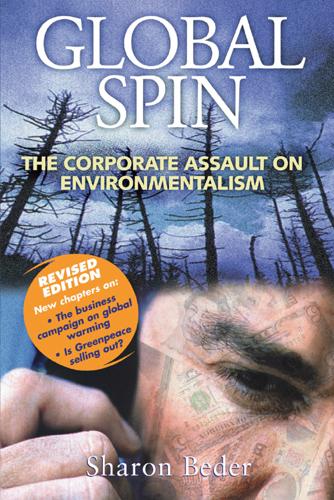
Global Spin: The Corporate Assault on Environmentalism
by
Sharon Beder
Published 1 Jan 1997
Crisis PR manages public perception following industrial accidents, the public uncovering of adverse effects of a product, and corporate mistakes. In their literature, these crisis experts frequently cite the aftermath of the Exxon Valdez shipwreck, which spewed tons of oil over pristine arctic wilderness, as a prime example of PR gone wrong. The aftermath they refer to is Exxon’s fallen reputation rather than the oil-soaked coastline and damage to marine life. In the world of PR, problems arise from the failure to communicate strategically, not from wrongful activity. The hundreds of articles in PR magazines and books that cover the Exxon Valdez accident almost invariably focus on how Exxon could have handled their PR better. However, as journalist Craig Mellow points out; “For all the stress on strategic counseling, no one talked about whether Exxon should have had better hiring or emergency-response policies beforehand.”12 The advice that crisis communicators give is therefore aimed at restoring reputation rather than preventing reoccurrences or fixing the physical consequences of the disaster: the problem is not reality but the perception of reality.
…
For work such as this they make hundreds of millions of dollars each year (over $300 million each in 2000).17 Hill & Knowlton’s clients have included governments from all over the world including Turkey, Peru, Israel, Egypt, Indonesia, Slovenia, the Czech Government, the Duvalier regime in Haiti and the People’s Republic of China after Tiananmen Square.18 Burson-Marsteller has represented national governments including Nigeria during the Biafran War, Romania during the reign of Nicolae Ceausescu, the ruling military junta of Argentina in the late 1970s and the South Korean government.19 Each firm advises Wise Use groups in the US and Canada, as well as a range of transnational corporations. Both have been involved in protecting some of the worst industries of our times, downplaying the health effects of smoking on behalf of the Tobacco Institute, keeping public concern at a minimum after the Three Mile Island nuclear accident, and helping to clean up Exxon’s image after the Exxon Valdez oil spill.20 Hill & Knowlton have helped to keep petrol taxes low on behalf of the American Petroleum Institute, have campaigned for deregulation for the American Truckers Association, been retained by apple growers to fight claims about Alar, worked with the American Association of Advertising Agencies to clean up the image of advertising, helped the National Conference of Catholic Bishops oppose abortion, and advised supporters of the Rev.
…
ref1, ref2 Earth Summit, Rio (1992) ref1, ref2, ref3, ref4–ref5, ref6–ref7, ref8, ref9 Easterbrook, Greg ref1 Eastman Kodak ref1 Ecology Channel ref1 Economic Affairs, Institute see Institute of Economic Affairs Economic Development Committee (Australian) ref1 economic environmentalism ref1–ref2, ref3 Economic Incentives Taskforce ref1 The Economist ref1, ref2, ref3–ref4, ref5 economists, use of ref1–ref2, ref3 Ecos Corporation ref1, ref2–ref3 ecoterrorists ref1, ref2, ref3 Edelman Medical Communications ref1 Edelman PR Worldwide ref1 Edison Electric Institute ref1 education ref1 advertising campaigns ref1–ref2, ref3–ref4, ref5–ref6 commercialism in ref1–ref2, ref3–ref4 conservative ref1–ref2 corporate propaganda ref1 corporate sponsorship ref1–ref2, ref3 environmental ref1–ref2 learning materials ref1–ref2 PR campaigns ref1, ref2, ref3, ref4 privatisation ref1 Educational Alternative Inc ref1 EIJ ref1 Eisenhower, Dwight ref1 Ekins, Paul ref1 Electric Mutual Liability ref1 Electric Power System ref1 electric-utility industry ref1, ref2 electronics industry ref1 Eli Lilly ref1 ‘élite transfer’ see ‘revolving door’ syndrome employee activism ref1–ref2, ref3, ref4 Employer’s Education Consortium of Victoria ref1 Empower America ref1 endangered species ref1, ref2, ref3, ref4–ref5, ref6 Endangered Species Act ref1, ref2, ref3, ref4, ref5 energy bill ref1, ref2, ref3 Enterprise Australia ref1–ref2 Entman, Robert ref1–ref2 ENVIRON Corporation ref1 environment legislation ref1–ref2 public concern ref1, ref2–ref3, ref4–ref5, ref6–ref7 regulation ref1, ref2, ref3–ref4, ref5, ref6–ref7, ref8–ref9, ref10, ref11–ref12 Environment Agency ref1 Environment Writer ref1–ref2 Environmental Defense Fund ref1, ref2, ref3 environmental impact statement (EIS) ref1 Environmental Law Foundation ref1 Environmental Protection Agency (EPA) dioxin assessment ref1, ref2–ref3 environmental regulation ref1–ref2, ref3, ref4 and GEC ref1, ref2 National Dioxin Study ref1 risk assessment ref1–ref2, ref3–ref4, ref5 Superfund legislation ref1, ref2 Environmental Research Foundation ref1 environmentalism activism ref1, ref2–ref3, ref4, ref5, ref6–ref7, ref8, ref9 advertising campaigns ref1–ref2, ref3–ref4, ref5–ref6 as ‘bearing witness’ ref1, ref2 children learning ref1–ref2 Clean Air Act (1968) ref1 Clean Air Act (1990) ref1, ref2, ref3, ref4 Clean Water Act ref1, ref2 Clean Water Act (1973) ref1 as communism ref1, ref2 and conflict of interest ref1 as conservation ref1–ref2 Control of Pollution Act (1974) ref1 corporate activism ref1–ref2 corporate cooperation ref1–ref2, ref3, ref4, ref5, ref6, ref7–ref8 corporate influence ref1, ref2, ref3, ref4 cost benefit analysis ref1–ref2, ref3, ref4 costs of ref1–ref2, ref3, ref4, ref5, ref6 debunking ref1, ref2, ref3–ref4, ref5, ref6–ref7, ref8–ref9 dirty tricks campaigns ref1–ref2 ‘ecofreaks’ ref1 economic instruments ref1–ref2, ref3 as ecoterrorism ref1, ref2, ref3 educational ref1–ref2 Endangered Species Act ref1, ref2, ref3, ref4, ref5 as extremism ref1, ref2–ref3 free-market ref1–ref2 front group strategies ref1–ref2 future of ref1 General Electric ref1–ref2 Global Warming Prevention Act ref1 journalists’ treatment ref1, ref2–ref3, ref4–ref5 lawsuits ref1–ref2, ref3–ref4 legislation ref1, ref2, ref3 marketing ref1, ref2–ref3 in the media ref1–ref2, ref3, ref4, ref5–ref6, ref7–ref8, ref9–ref10 merchandising ref1 ‘name-calling’ ref1, ref2, ref3–ref4, ref5–ref6, ref7 newsworthiness ref1–ref2 ‘paganism’ ref1, ref2 political influence ref1–ref2, ref3 PR campaigns ref1–ref2, ref3–ref4, ref5–ref6, ref7–ref8, ref9–ref10 as preservation ref1–ref2, ref3–ref4 of Procter & Gamble ref1–ref2 property rights ref1, ref2–ref3, ref4–ref5 ‘racism’ ref1 as radicalism ref1, ref2, ref3, ref4 as a religion ref1, ref2, ref3 revisionist ref1–ref2 in the 1990s ref1–ref2 Solid Waste Disposal Act ref1 and a solutions-oriented approach ref1–ref2 sponsored ref1–ref2 on TV ref1–ref2 unemployment caused by ref1–ref2, ref3, ref4 EPA see Environmental Protection Agency Epley, Joe ref1 Epstein, Richard ref1 Estonia ref1 Europe ref1, ref2–ref3, ref4 European Parliament ref1 experiments animal ref1–ref2, ref3, ref4, ref5, ref6–ref7 human ref1, ref2 in PR ref1–ref2 Exxon Corporation ref1, ref2 Exxon Valdez ref1, ref2 Fairness and Accuracy in Reporting (FAIR) ref1–ref2, ref3, ref4–ref5 Falk, Jim ref1 Fallows, James ref1 Farm Bureau Federation (American) ref1 Farmers Federation (National)77 fast food industry ref1, ref2, ref3 fax campaigns ref1, ref2 Federal Trade Commission ref1 Festival Records ref1 Feulner, Edwin ref1, ref2, ref3–ref4 Filene, Edward ref1–ref2 Financial Times ref1, ref2 Fingerhut, Marilyn ref1 Fischer, Tim ref1 Fitzpatrick, George ref1–ref2 Fletcher Challenge ref1, ref2 food industry ref1, ref2, ref3, ref4, ref5 see also fast food industry Forbes ref1–ref2 Ford, Gerald ref1 Ford Motor Company ref1, ref2, ref3 Forest Alliance of British Columbia ref1–ref2 Forest Industries Council (BC) ref1 Forest Industry Campaign Association ref1 Forest Protection Society ref1 forestry industry ref1, ref2 Fortune ref1, ref2, ref3, ref4–ref5 fossil fuel industry ref1, ref2 Foundation for Clean Air Progress ref1 Foundation for Public Affairs ref1 Fox Network ref1 Fraser Institute ref1–ref2 free enterprise ref1, ref2, ref3–ref4 environmental ref1–ref2 propaganda ref1, ref2 Free Enterprise Press ref1 free market see free enterprise Freedom of Information Act (FOIA) ref1, ref2, ref3 Friedman, Andy ref1, ref2 Friedman, Milton ref1, ref2, ref3 Friends of the Earth ref1, ref2, ref3–ref4, ref5, ref6 front groups ref1 anti-environmentalism ref1–ref2 in Australia ref1 in chlorine industry ref1 corporate funding ref1, ref2–ref3, ref4, ref5, ref6–ref7, ref8–ref9 dioxin defence ref1, ref2, ref3 ‘experts’ ref1, ref2, ref3, ref4 fighting legislation ref1 grassroots organisations ref1–ref2 lobbying ref1, ref2, ref3–ref4, ref5, ref6–ref7 in the media ref1–ref2 PR support ref1, ref2, ref3, ref4 pseudo-environmentalism ref1–ref2 scientific ‘evidence’ ref1–ref2 strategies ref1–ref2 Frontiers of Freedom Institute ref1 fuel consumption ref1, ref2, ref3, ref4 Fumento, Michael ref1 Gaffey, Bill ref1 Gardner, James ref1 gas industry ref1, ref2 Gelbspan, Ross ref1, ref2 General Electric Company ref1–ref2 General Foods Corporation ref1 General Motor Corporation ref1, ref2 George C.
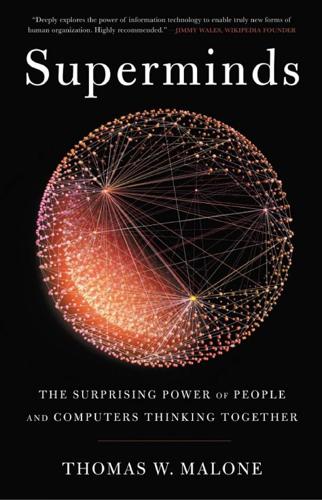
Superminds: The Surprising Power of People and Computers Thinking Together
by
Thomas W. Malone
Published 14 May 2018
Read,” (1958; repr., Irvington-on-Hudson, NY: Foundation for Economic Education, 1999), http://www.econlib.org/library/Essays/rdPncl1.html; Stephen J. Dubner, “How Can This Possibly Be True?” Freakonomics, February 18, 2016, http://freakonomics.com/podcast/i-pencil/. 14. “InnoCentive Solver Develops Solution to Help Clean up Remaining Oil from the 1989 Exxon Valdez Disaster,” November 7, 2007, https://www.innocentive.com/innocentive-solver-develops-solution-to-help-clean-up-remaining-oil-from-the-1989-exxon-valdez-disaster; Cornelia Dean, “If You Have a Problem, Ask Everyone,” New York Times, July 22, 2008, http://www.nytimes.com/2008/07/22/science/22inno.html. 15. Lars Bo Jeppesen and Karim R. Lakhani, “Marginality and Problem-Solving Effectiveness in Broadcast Search,” Organization Science 21, no. 5 (2010): 1,016–33, http://pubsonline.informs.org/doi/pdf/10.1287/orsc.1090.0491, doi:10.1287/orsc.1090.0491. 16.
…
One good example is InnoCentive (see here), the company that uses open online contests to help companies find solutions for difficult problems. One of InnoCentive’s clients was the Alaska-based Oil Spill Recovery Institute (OSRI), which created contests asking for methods to deal with crude oil when it spills into frigid ocean waters (which is what happened in 1989 during the Exxon Valdez oil spill). One specific challenge was how to separate oil from water on oil-recovery barges after the oil and water had frozen into a viscous mass.14 If this problem had been easy to solve, someone in the oil industry would have solved it long ago. But no one did. So OSRI decided to find out whether anyone in InnoCentive’s global community of scientists, technologists, and other problem solvers could help.

Markets, State, and People: Economics for Public Policy
by
Diane Coyle
Published 14 Jan 2020
Economists picked up on the engineers’ work again in developing the modern approach to CBA. More recently in public policy, the spread of CBA techniques far beyond infrastructure projects dates back to one of the biggest environmental disasters in US history, the spillage of over ten million gallons of oil by the Exxon Valdez container ship in the pristine Prince William Sound in Alaska on March 24, 1989. The question of compensation, involving legal action, prompted renewed attention to the empirical assessment of costs and benefits. In particular, how should figures be put on environmental benefits and damage, with no market for beauty or healthy seabirds, and potentially large externalities?
…
Hedonic regressions are also used in the context of other types of public policy evaluation as well as CBA, discussed further below. Stated Preference Methods The stated preference or contingent value approach derives estimates from surveys or questionnaires (box 8.3). Although CBA techniques date back to the nineteenth century, the Exxon Valdez disaster on March 24, 1989, when almost 11 million gallons of crude oil spilled from the ship into a pristine Alaskan bay, was a trigger for the development of the contingent valuation methods widely in use today. There were some straightforward cost elements, such as fishers’ loss of livelihood.
…
See fairness equivalent variation, 339–41 equivalization, 212–13 Essays: Moral, Political and Literary (Hume), 262 estate taxes, 231, 232 Estonia, 264 European Commission, 55–56, 93, 94 European Timber Regulation (2010), 270 European Union (EU), 49, 50, 133 evaluation: appraisal distinguished from, 299; econometric, 300–301; rarity of, 297; research on, 298, 300 exchange efficiency (allocative efficiency; consumption efficiency), 10 executive compensation, 223, 225, 240–41 existence (intrinsic) value, 321 exit, voice, and loyalty, 138, 159–61, 168 experience goods, 29, 76, 211 exponential discounting, 183, 315 externalities, 1, 8, 174, 209, 293, 303; in electric industry, 84; environmental, 13, 25, 80, 126; in health care, 211; Pigouvian taxes to correct, 25, 26, 31, 32, 141, 165, 252; prices distorted by, 291; public goods as, 29; in production vs. consumption, 161, 168; research on, 24; responses to, 18–19, 31–32; symmetrical vs. asymmetrical, 31–32 Exxon Valdez oil spill, 305, 319–20 Facebook, 52, 59, 91, 94, 124, 197 fairness (equity), 6, 168, 303; efficiency vs., 7–8, 137, 197, 202, 228; inequality and, 224; through rationing, 167 false positives, false negatives, 302 farm subsidies, 267, 268 fascism, 20 fashion industry, 163 fast thinking, 176, 179 Federal Navigation Act (1936), 304 Federal Trade Commission, 55 The Fifth Risk (Lewis), 303 Financial Conduct Authority (FCA), 69, 187, 189 financial crisis of 2008.
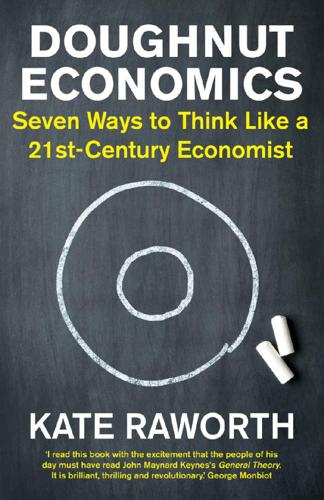
Doughnut Economics: Seven Ways to Think Like a 21st-Century Economist
by
Kate Raworth
Published 22 Mar 2017
The TV images that flashed daily into our living room took me far beyond my London schoolgirl life, and those images stuck. The unforgettable silent stare of pot-bellied children born into Ethiopia’s famine. Lines of bodies knocked down like matchsticks by the Bhopal gas disaster. A purple-tinted hole gaping in the ozone layer. A vast oil slick swirling out of the Exxon Valdez into Alaska’s pristine waters. By the end of the decade, I knew simply that I wanted to work for an organisation like Oxfam or Greenpeace – campaigning to end poverty and environmental destruction – and I thought that the best way to equip myself was to study economics and put its tools to work for such causes.
…
Page numbers in italics denote illustrations A Aalborg, Denmark, 290 Abbott, Anthony ‘Tony’, 31 ABCD group, 148 Abramovitz, Moses, 262 absolute decoupling, 260–61 Acemoglu, Daron, 86 advertising, 58, 106–7, 112, 281 Agbodjinou, Sénamé, 231 agriculture, 5, 46, 72–3, 148, 155, 178, 181, 183 Alaska, 9 Alaska Permanent Fund, 194 Alperovitz, Gar, 177 alternative enterprise designs, 190–91 altruism, 100, 104 Amazon, 192, 196, 276 Amazon rainforest, 105–6, 253 American Economic Association, 3 American Enterprise Institute, 67 American Tobacco Corporation, 107 Andes, 54 animal spirits, 110 Anthropocene epoch, 48, 253 anthropocentrism, 115 Apertuso, 230 Apple, 85, 192 Archer Daniels Midland (ADM), 148 Arendt, Hannah, 115–16 Argentina, 55, 274 Aristotle, 32, 272 Arrow, Kenneth, 134 Articles of Association and Memoranda, 233 Arusha, Tanzania, 202 Asia Wage Floor Alliance, 177 Asian financial crisis (1997), 90 Asknature.org, 232 Athens, 57 austerity, 163 Australia, 31, 103, 177, 180, 211, 224–6, 255, 260 Austria, 263, 274 availability bias, 112 AXIOM, 230 Axtell, Robert, 150 Ayres, Robert, 263 B B Corp, 241 Babylon, 13 Baker, Josephine, 157 balancing feedback loops, 138–41, 155, 271 Ballmer, Steve, 231 Bangla Pesa, 185–6, 293 Bangladesh, 10, 226 Bank for International Settlements, 256 Bank of America, 149 Bank of England, 145, 147, 256 banking, see under finance Barnes, Peter, 201 Barroso, José Manuel, 41 Bartlett, Albert Allen ‘Al’, 247 basic income, 177, 194, 199–201 basic personal values, 107–9 Basle, Switzerland, 80 Bauwens, Michel, 197 Beckerman, Wilfred, 258 Beckham, David, 171 Beech-Nut Packing Company, 107 behavioural economics, 11, 111–14 behavioural psychology, 103, 128 Beinhocker, Eric, 158 Belgium, 236, 252 Bentham, Jeremy, 98 Benyus, Janine, 116, 218, 223–4, 227, 232, 237, 241 Berger, John, 12, 281 Berlin Wall, 141 Bermuda, 277 Bernanke, Ben, 146 Bernays, Edward, 107, 112, 281–3 Bhopal gas disaster (1984), 9 Bible, 19, 114, 151 Big Bang (1986), 87 billionaires, 171, 200, 289 biodiversity, 10, 46, 48–9, 52, 85, 115, 155, 208, 210, 242, 299 as common pool resource, 201 and land conversion, 49 and inequality, 172 and reforesting, 50 biomass, 73, 118, 210, 212, 221 biomimicry, 116, 218, 227, 229 bioplastic, 224, 293 Birmingham, West Midlands, 10 Black, Fischer, 100–101 Blair, Anthony ‘Tony’, 171 Blockchain, 187, 192 blood donation, 104, 118 Body Shop, The, 232–4 Bogotá, Colombia, 119 Bolivia, 54 Boston, Massachusetts, 3 Bowen, Alex, 261 Bowles, Sam, 104 Box, George, 22 Boyce, James, 209 Brasselberg, Jacob, 187 Brazil, 124, 226, 281, 290 bread riots, 89 Brisbane, Australia, 31 Brown, Gordon, 146 Brynjolfsson, Erik, 193, 194, 258 Buddhism, 54 buen vivir, 54 Bullitt Center, Seattle, 217 Bunge, 148 Burkina Faso, 89 Burmark, Lynell, 13 business, 36, 43, 68, 88–9 automation, 191–5, 237, 258, 278 boom and bust, 246 and circular economy, 212, 215–19, 220, 224, 227–30, 232–4, 292 and complementary currencies, 184–5, 292 and core economy, 80 and creative destruction, 142 and feedback loops, 148 and finance, 183, 184 and green growth, 261, 265, 269 and households, 63, 68 living metrics, 241 and market, 68, 88 micro-businesses, 9 and neoliberalism, 67, 87 ownership, 190–91 and political funding, 91–2, 171–2 and taxation, 23, 276–7 workers’ rights, 88, 91, 269 butterfly economy, 220–42 C C–ROADS (Climate Rapid Overview and Decision Support), 153 C40 network, 280 calculating man, 98 California, United States, 213, 224, 293 Cambodia, 254 Cameron, David, 41 Canada, 196, 255, 260, 281, 282 cancer, 124, 159, 196 Capital Institute, 236 carbon emissions, 49–50, 59, 75 and decoupling, 260, 266 and forests, 50, 52 and inequality, 58 reduction of, 184, 201, 213, 216–18, 223–7, 239–41, 260, 266 stock–flow dynamics, 152–4 taxation, 201, 213 Cargill, 148 Carney, Mark, 256 Caterpillar, 228 Catholic Church, 15, 19 Cato Institute, 67 Celts, 54 central banks, 6, 87, 145, 146, 147, 183, 184, 256 Chang, Ha-Joon, 82, 86, 90 Chaplin, Charlie, 157 Chiapas, Mexico, 121–2 Chicago Board Options Exchange (CBOE), 100–101 Chicago School, 34, 99 Chile, 7, 42 China, 1, 7, 48, 154, 289–90 automation, 193 billionaires, 200, 289 greenhouse gas emissions, 153 inequality, 164 Lake Erhai doughnut analysis, 56 open-source design, 196 poverty reduction, 151, 198 renewable energy, 239 tiered pricing, 213 Chinese Development Bank, 239 chrematistics, 32, 273 Christianity, 15, 19, 114, 151 cigarettes, 107, 124 circular economy, 220–42, 257 Circular Flow diagram, 19–20, 28, 62–7, 64, 70, 78, 87, 91, 92, 93, 262 Citigroup, 149 Citizen Reaction Study, 102 civil rights movement, 77 Cleveland, Ohio, 190 climate change, 1, 3, 5, 29, 41, 45–53, 63, 74, 75–6, 91, 141, 144, 201 circular economy, 239, 241–2 dynamics of, 152–5 and G20, 31 and GDP growth, 255, 256, 260, 280 and heuristics, 114 and human rights, 10 and values, 126 climate positive cities, 239 closed systems, 74 coffee, 221 cognitive bias, 112–14 Colander, David, 137 Colombia, 119 common-pool resources, 82–3, 181, 201–2 commons, 69, 82–4, 287 collaborative, 78, 83, 191, 195, 196, 264, 292 cultural, 83 digital, 82, 83, 192, 197, 281 and distribution, 164, 180, 181–2, 205, 267 Embedded Economy, 71, 73, 77–8, 82–4, 85, 92 knowledge, 197, 201–2, 204, 229, 231, 292 commons and money creation, see complementary currencies natural, 82, 83, 180, 181–2, 201, 265 and regeneration, 229, 242, 267, 292 and state, 85, 93, 197, 237 and systems, 160 tragedy of, 28, 62, 69, 82, 181 triumph of, 83 and values, 106, 108 Commons Trusts, 201 complementary currencies, 158, 182–8, 236, 292 complex systems, 28, 129–62 complexity science, 136–7 Consumer Reaction Study, 102 consumerism, 58, 102, 121, 280–84 cooking, 45, 80, 186 Coote, Anna, 278 Copenhagen, Denmark, 124 Copernicus, Nicolaus, 14–15 copyright, 195, 197, 204 core economy, 79–80 Corporate To Do List, 215–19 Costa Rica, 172 Council of Economic Advisers, US, 6, 37 Cox, Jo, 117 cradle to cradle, 224 creative destruction, 142 Cree, 282 Crompton, Tom, 125–6 cross-border flows, 89–90 crowdsourcing, 204 cuckoos, 32, 35, 36, 38, 40, 54, 60, 159, 244, 256, 271 currencies, 182–8, 236, 274, 292 D da Vinci, Leonardo, 13, 94–5 Dallas, Texas, 120 Daly, Herman, 74, 143, 271 Danish Nudging Network, 124 Darwin, Charles, 14 Debreu, Gerard, 134 debt, 37, 146–7, 172–3, 182–5, 247, 255, 269 decoupling, 193, 210, 258–62, 273 defeat device software, 216 deforestation, 49–50, 74, 208, 210 degenerative linear economy, 211–19, 222–3, 237 degrowth, 244 DeMartino, George, 161 democracy, 77, 171–2, 258 demurrage, 274 Denmark, 180, 275, 290 deregulation, 82, 87, 269 derivatives, 100–101, 149 Devas, Charles Stanton, 97 Dey, Suchitra, 178 Diamond, Jared, 154 diarrhoea, 5 differential calculus, 131, 132 digital revolution, 191–2, 264 diversify–select–amplify, 158 double spiral, 54 Doughnut model, 10–11, 11, 23–5, 44, 51 and aspiration, 58–9, 280–84 big picture, 28, 42, 61–93 distribution, 29, 52, 57, 58, 76, 93, 158, 163–205 ecological ceiling, 10, 11, 44, 45, 46, 49, 51, 218, 254, 295, 298 goal, 25–8, 31–60 and governance, 57, 59 growth agnosticism, 29–30, 243–85 human nature, 28–9, 94–128 and population, 57–8 regeneration, 29, 158, 206–42 social foundation, 10, 11, 44, 45, 49, 51, 58, 77, 174, 200, 254, 295–6 systems, 28, 129–62 and technology, 57, 59 Douglas, Margaret, 78–9 Dreyfus, Louis, 148 ‘Dumb and Dumber in Macroeconomics’ (Solow), 135 Durban, South Africa, 214 E Earning by Learning, 120 Earth-system science, 44–53, 115, 216, 288, 298 Easter Island, 154 Easterlin, Richard, 265–6 eBay, 105, 192 eco-literacy, 115 ecological ceiling, 10, 11, 44, 45, 46, 49, 51, 218, 254, 295, 298 Ecological Performance Standards, 241 Econ 101 course, 8, 77 Economics (Lewis), 114 Economics (Samuelson), 19–20, 63–7, 70, 74, 78, 86, 91, 92, 93, 262 Economy for the Common Good, 241 ecosystem services, 7, 116, 269 Ecuador, 54 education, 9, 43, 45, 50–52, 85, 169–70, 176, 200, 249, 279 economic, 8, 11, 18, 22, 24, 36, 287–93 environmental, 115, 239–40 girls’, 57, 124, 178, 198 online, 83, 197, 264, 290 pricing, 118–19 efficient market hypothesis, 28, 62, 68, 87 Egypt, 48, 89 Eisenstein, Charles, 116 electricity, 9, 45, 236, 240 and Bangla Pesa, 186 cars, 231 Ethereum, 187–8 and MONIAC, 75, 262 pricing, 118, 213 see also renewable energy Elizabeth II, Queen of the United Kingdom, 145 Ellen MacArthur Foundation, 220 Embedded Economy, 71–93, 263 business, 88–9 commons, 82–4 Earth, 72–6 economy, 77–8 finance, 86–8 household, 78–81 market, 81–2 power, 91–92 society, 76–7 state, 84–6 trade, 89–90 employment, 36, 37, 51, 142, 176 automation, 191–5, 237, 258, 278 labour ownership, 188–91 workers’ rights, 88, 90, 269 Empty World, 74 Engels, Friedrich, 88 environment and circular economy, 220–42, 257 conservation, 121–2 and degenerative linear economy, 211–19, 222–3 degradation, 5, 9, 10, 29, 44–53, 74, 154, 172, 196, 206–42 education on, 115, 239–40 externalities, 152 fair share, 216–17 and finance, 234–7 generosity, 218–19, 223–7 green growth, 41, 210, 243–85 nudging, 123–5 taxation and quotas, 213–14, 215 zero impact, 217–18, 238, 241 Environmental Dashboard, 240–41 environmental economics, 7, 11, 114–16 Environmental Kuznets Curve, 207–11, 241 environmental space, 54 Epstein, Joshua, 150 equilibrium theory, 134–62 Ethereum, 187–8 ethics, 160–62 Ethiopia, 9, 226, 254 Etsy, 105 Euclid, 13, 15 European Central Bank, 145, 275 European Commission, 41 European Union (EU), 92, 153, 210, 222, 255, 258 Evergreen Cooperatives, 190 Evergreen Direct Investing (EDI), 273 exogenous shocks, 141 exponential growth, 39, 246–85 externalities, 143, 152, 213 Exxon Valdez oil spill (1989), 9 F Facebook, 192 fair share, 216–17 Fama, Eugene, 68, 87 fascism, 234, 277 Federal Reserve, US, 87, 145, 146, 271, 282 feedback loops, 138–41, 143, 148, 155, 250, 271 feminist economics, 11, 78–81, 160 Ferguson, Thomas, 91–2 finance animal spirits, 110 bank runs, 139 Black–Scholes model, 100–101 boom and bust, 28–9, 110, 144–7 and Circular Flow, 63–4, 87 and complex systems, 134, 138, 139, 140, 141, 145–7 cross-border flows, 89 deregulation, 87 derivatives, 100–101, 149 and distribution, 169, 170, 173, 182–4, 198–9, 201 and efficient market hypothesis, 63, 68 and Embedded Economy, 71, 86–8 and financial-instability hypothesis, 87, 146 and GDP growth, 38 and media, 7–8 mobile banking, 199–200 and money creation, 87, 182–5 and regeneration, 227, 229, 234–7 in service to life, 159, 234–7 stakeholder finance, 190 and sustainability, 216, 235–6, 239 financial crisis (2008), 1–4, 5, 40, 63, 86, 141, 144, 278, 290 and efficient market hypothesis, 87 and equilibrium theory, 134, 145 and financial-instability hypothesis, 87 and inequality, 90, 170, 172, 175 and money creation, 182 and worker’s rights, 278 financial flows, 89 Financial Times, 183, 266, 289 financial-instability hypothesis, 87, 146 First Green Bank, 236 First World War (1914–18), 166, 170 Fisher, Irving, 183 fluid values, 102, 106–9 food, 3, 43, 45, 50, 54, 58, 59, 89, 198 food banks, 165 food price crisis (2007–8), 89, 90, 180 Ford, 277–8 foreign direct investment, 89 forest conservation, 121–2 fossil fuels, 59, 73, 75, 92, 212, 260, 263 Foundations of Economic Analysis (Samuelson), 17–18 Foxconn, 193 framing, 22–3 France, 43, 165, 196, 238, 254, 256, 281, 290 Frank, Robert, 100 free market, 33, 37, 67, 68, 70, 81–2, 86, 90 free open-source hardware (FOSH), 196–7 free open-source software (FOSS), 196 free trade, 70, 90 Freeman, Ralph, 18–19 freshwater cycle, 48–9 Freud, Sigmund, 107, 281 Friedman, Benjamin, 258 Friedman, Milton, 34, 62, 66–9, 84–5, 88, 99, 183, 232 Friends of the Earth, 54 Full World, 75 Fuller, Buckminster, 4 Fullerton, John, 234–6, 273 G G20, 31, 56, 276, 279–80 G77, 55 Gal, Orit, 141 Gandhi, Mohandas, 42, 293 Gangnam Style, 145 Gardens of Democracy, The (Liu & Hanauer), 158 gender equality, 45, 51–2, 57, 78–9, 85, 88, 118–19, 124, 171, 198 generosity, 218–19, 223–9 geometry, 13, 15 George, Henry, 149, 179 Georgescu-Roegen, Nicholas, 252 geothermal energy, 221 Gerhardt, Sue, 283 Germany, 2, 41, 100, 118, 165, 189, 211, 213, 254, 256, 260, 274 Gessel, Silvio, 274 Ghent, Belgium, 236 Gift Relationship, The (Titmuss), 118–19 Gigerenzer, Gerd, 112–14 Gintis, Herb, 104 GiveDirectly, 200 Glass–Steagall Act (1933), 87 Glennon, Roger, 214 Global Alliance for Tax Justice, 277 global material footprints, 210–11 Global Village Construction Set, 196 globalisation, 89 Goerner, Sally, 175–6 Goffmann, Erving, 22 Going for Growth, 255 golden rule, 91 Goldman Sachs, 149, 170 Gómez-Baggethun, Erik, 122 Goodall, Chris, 211 Goodwin, Neva, 79 Goody, Jade, 124 Google, 192 Gore, Albert ‘Al’, 172 Gorgons, 244, 256, 257, 266 graffiti, 15, 25, 287 Great Acceleration, 46, 253–4 Great Depression (1929–39), 37, 70, 170, 173, 183, 275, 277, 278 Great Moderation, 146 Greece, Ancient, 4, 13, 32, 48, 54, 56–7, 160, 244 green growth, 41, 210, 243–85 Greenham, Tony, 185 greenhouse gas emissions, 31, 46, 50, 75–6, 141, 152–4 and decoupling, 260, 266 and Environmental Kuznets Curve, 208, 210 and forests, 50, 52 and G20, 31 and inequality, 58 reduction of, 184, 201–2, 213, 216–18, 223–7, 239–41, 256, 259–60, 266, 298 stock–flow dynamics, 152–4 and taxation, 201, 213 Greenland, 141, 154 Greenpeace, 9 Greenspan, Alan, 87 Greenwich, London, 290 Grenoble, France, 281 Griffiths, Brian, 170 gross domestic product (GDP), 25, 31–2, 35–43, 57, 60, 84, 164 as cuckoo, 32, 35, 36, 38, 40, 54, 60, 159, 244, 256, 271 and Environmental Kuznets Curve, 207–11 and exponential growth, 39, 53, 246–85 and growth agnosticism, 29–30, 240, 243–85 and inequality, 173 and Kuznets Curve, 167, 173, 188–9 gross national product (GNP), 36–40 Gross World Product, 248 Grossman, Gene, 207–8, 210 ‘grow now, clean up later’, 207 Guatemala, 196 H Haifa, Israel, 120 Haldane, Andrew, 146 Han Dynasty, 154 Hanauer, Nick, 158 Hansen, Pelle, 124 Happy Planet Index, 280 Hardin, Garrett, 69, 83, 181 Harvard University, 2, 271, 290 von Hayek, Friedrich, 7–8, 62, 66, 67, 143, 156, 158 healthcare, 43, 50, 57, 85, 123, 125, 170, 176, 200, 269, 279 Heilbroner, Robert, 53 Henry VIII, King of England and Ireland, 180 Hepburn, Cameron, 261 Herbert Simon, 111 heuristics, 113–14, 118, 123 high-income countries growth, 30, 244–5, 254–72, 282 inequality, 165, 168, 169, 171 labour, 177, 188–9, 278 overseas development assistance (ODA), 198–9 resource intensive lifestyles, 46, 210–11 trade, 90 Hippocrates, 160 History of Economic Analysis (Schumpeter), 21 HIV/AIDS, 123 Holocene epoch, 46–8, 75, 115, 253 Homo economicus, 94–103, 109, 127–8 Homo sapiens, 38, 104, 130 Hong Kong, 180 household, 78 housing, 45, 59, 176, 182–3, 269 Howe, Geoffrey, 67 Hudson, Michael, 183 Human Development Index, 9, 279 human nature, 28 human rights, 10, 25, 45, 49, 50, 95, 214, 233 humanistic economics, 42 hydropower, 118, 260, 263 I Illinois, United States, 179–80 Imago Mundi, 13 immigration, 82, 199, 236, 266 In Defense of Economic Growth (Beckerman), 258 Inclusive Wealth Index, 280 income, 51, 79–80, 82, 88, 176–8, 188–91, 194, 199–201 India, 2, 9, 10, 42, 124, 164, 178, 196, 206–7, 242, 290 Indonesia, 90, 105–6, 164, 168, 200 Indus Valley civilisation, 48 inequality, 1, 5, 25, 41, 63, 81, 88, 91, 148–52, 209 and consumerism, 111 and democracy, 171 and digital revolution, 191–5 and distribution, 163–205 and environmental degradation, 172 and GDP growth, 173 and greenhouse gas emissions, 58 and intellectual property, 195–8 and Kuznets Curve, 29, 166–70, 173–4 and labour ownership, 188–91 and land ownership, 178–82 and money creation, 182–8 and social welfare, 171 Success to the Successful, 148, 149, 151, 166 inflation, 36, 248, 256, 275 insect pollination services, 7 Institute of Economic Affairs, 67 institutional economics, 11 intellectual property rights, 195–8, 204 interest, 36, 177, 182, 184, 275–6 Intergovernmental Panel on Climate Change, 25 International Monetary Fund (IMF), 170, 172, 173, 183, 255, 258, 271 Internet, 83–4, 89, 105, 192, 202, 264 Ireland, 277 Iroquois Onondaga Nation, 116 Israel, 100, 103, 120 Italy, 165, 196, 254 J Jackson, Tim, 58 Jakubowski, Marcin, 196 Jalisco, Mexico, 217 Japan, 168, 180, 211, 222, 254, 256, 263, 275 Jevons, William Stanley, 16, 97–8, 131, 132, 137, 142 John Lewis Partnership, 190 Johnson, Lyndon Baines, 37 Johnson, Mark, 38 Johnson, Todd, 191 JPMorgan Chase, 149, 234 K Kahneman, Daniel, 111 Kamkwamba, William, 202, 204 Kasser, Tim, 125–6 Keen, Steve, 146, 147 Kelly, Marjorie, 190–91, 233 Kennedy, John Fitzgerald, 37, 250 Kennedy, Paul, 279 Kenya, 118, 123, 180, 185–6, 199–200, 226, 292 Keynes, John Maynard, 7–8, 22, 66, 69, 134, 184, 251, 277–8, 284, 288 Kick It Over movement, 3, 289 Kingston, London, 290 Knight, Frank, 66, 99 knowledge commons, 202–4, 229, 292 Kokstad, South Africa, 56 Kondratieff waves, 246 Korzybski, Alfred, 22 Krueger, Alan, 207–8, 210 Kuhn, Thomas, 22 Kumhof, Michael, 172 Kuwait, 255 Kuznets, Simon, 29, 36, 39–40, 166–70, 173, 174, 175, 204, 207 KwaZulu Natal, South Africa, 56 L labour ownership, 188–91 Lake Erhai, Yunnan, 56 Lakoff, George, 23, 38, 276 Lamelara, Indonesia, 105–6 land conversion, 49, 52, 299 land ownership, 178–82 land-value tax, 73, 149, 180 Landesa, 178 Landlord’s Game, The, 149 law of demand, 16 laws of motion, 13, 16–17, 34, 129, 131 Lehman Brothers, 141 Leopold, Aldo, 115 Lesotho, 118, 199 leverage points, 159 Lewis, Fay, 178 Lewis, Justin, 102 Lewis, William Arthur, 114, 167 Lietaer, Bernard, 175, 236 Limits to Growth, 40, 154, 258 Linux, 231 Liu, Eric, 158 living metrics, 240–42 living purpose, 233–4 Lomé, Togo, 231 London School of Economics (LSE), 2, 34, 65, 290 London Underground, 12 loss aversion, 112 low-income countries, 90, 164–5, 168, 173, 180, 199, 201, 209, 226, 254, 259 Lucas, Robert, 171 Lula da Silva, Luiz Inácio, 124 Luxembourg, 277 Lyle, John Tillman, 214 Lyons, Oren, 116 M M–PESA, 199–200 MacDonald, Tim, 273 Machiguenga, 105–6 MacKenzie, Donald, 101 macroeconomics, 36, 62–6, 76, 80, 134–5, 145, 147, 150, 244, 280 Magie, Elizabeth, 149, 153 Malala effect, 124 malaria, 5 Malawi, 118, 202, 204 Malaysia, 168 Mali, Taylor, 243 Malthus, Thomas, 252 Mamsera Rural Cooperative, 190 Manhattan, New York, 9, 41 Mani, Muthukumara, 206 Manitoba, 282 Mankiw, Gregory, 2, 34 Mannheim, Karl, 22 Maoris, 54 market, 81–2 and business, 88 circular flow, 64 and commons, 83, 93, 181, 200–201 efficiency of, 28, 62, 68, 87, 148, 181 and equilibrium theory, 131–5, 137, 143–7, 155, 156 free market, 33, 37, 67–70, 90, 208 and households, 63, 69, 78, 79 and maxi-max rule, 161 and pricing, 117–23, 131, 160 and rational economic man, 96, 100–101, 103, 104 and reciprocity, 105, 106 reflexivity of, 144–7 and society, 69–70 and state, 84–6, 200, 281 Marshall, Alfred, 17, 98, 133, 165, 253, 282 Marx, Karl, 88, 142, 165, 272 Massachusetts Institute of Technology (MIT), 17–20, 152–5 massive open online courses (MOOCs), 290 Matthew Effect, 151 Max-Neef, Manfred, 42 maxi-max rule, 161 maximum wage, 177 Maya civilisation, 48, 154 Mazzucato, Mariana, 85, 195, 238 McAfee, Andrew, 194, 258 McDonough, William, 217 Meadows, Donella, 40, 141, 159, 271, 292 Medusa, 244, 257, 266 Merkel, Angela, 41 Messerli, Elspeth, 187 Metaphors We Live By (Lakoff & Johnson), 38 Mexico, 121–2, 217 Michaels, Flora S., 6 micro-businesses, 9, 173, 178 microeconomics, 132–4 microgrids, 187–8 Micronesia, 153 Microsoft, 231 middle class, 6, 46, 58 middle-income countries, 90, 164, 168, 173, 180, 226, 254 migration, 82, 89–90, 166, 195, 199, 236, 266, 286 Milanovic, Branko, 171 Mill, John Stuart, 33–4, 73, 97, 250, 251, 283, 284, 288 Millo, Yuval, 101 minimum wage, 82, 88, 176 Minsky, Hyman, 87, 146 Mises, Ludwig von, 66 mission zero, 217 mobile banking, 199–200 mobile phones, 222 Model T revolution, 277–8 Moldova, 199 Mombasa, Kenya, 185–6 Mona Lisa (da Vinci), 94 money creation, 87, 164, 177, 182–8, 205 MONIAC (Monetary National Income Analogue Computer), 64–5, 75, 142, 262 Monoculture (Michaels), 6 Monopoly, 149 Mont Pelerin Society, 67, 93 Moral Consequences of Economic Growth, The (Friedman), 258 moral vacancy, 41 Morgan, Mary, 99 Morogoro, Tanzania, 121 Moyo, Dambisa, 258 Muirhead, Sam, 230, 231 MultiCapital Scorecard, 241 Murphy, David, 264 Murphy, Richard, 185 musical tastes, 110 Myriad Genetics, 196 N national basic income, 177 Native Americans, 115, 116, 282 natural capital, 7, 116, 269 Natural Economic Order, The (Gessel), 274 Nedbank, 216 negative externalities, 213 negative interest rates, 275–6 neoclassical economics, 134, 135 neoliberalism, 7, 62–3, 67–70, 81, 83, 84, 88, 93, 143, 170, 176 Nepal, 181, 199 Nestlé, 217 Netherlands, 211, 235, 224, 226, 238, 277 networks, 110–11, 117, 118, 123, 124–6, 174–6 neuroscience, 12–13 New Deal, 37 New Economics Foundation, 278, 283 New Year’s Day, 124 New York, United States, 9, 41, 55 Newlight Technologies, 224, 226, 293 Newton, Isaac, 13, 15–17, 32–3, 95, 97, 129, 131, 135–7, 142, 145, 162 Nicaragua, 196 Nigeria, 164 nitrogen, 49, 52, 212–13, 216, 218, 221, 226, 298 ‘no pain, no gain’, 163, 167, 173, 204, 209 Nobel Prize, 6–7, 43, 83, 101, 167 Norway, 281 nudging, 112, 113, 114, 123–6 O Obama, Barack, 41, 92 Oberlin, Ohio, 239, 240–41 Occupy movement, 40, 91 ocean acidification, 45, 46, 52, 155, 242, 298 Ohio, United States, 190, 239 Okun, Arthur, 37 onwards and upwards, 53 Open Building Institute, 196 Open Source Circular Economy (OSCE), 229–32 open systems, 74 open-source design, 158, 196–8, 265 open-source licensing, 204 Organisation for Economic Co-operation and Development (OECD), 38, 210, 255–6, 258 Origin of Species, The (Darwin), 14 Ormerod, Paul, 110, 111 Orr, David, 239 Ostrom, Elinor, 83, 84, 158, 160, 181–2 Ostry, Jonathan, 173 OSVehicle, 231 overseas development assistance (ODA), 198–200 ownership of wealth, 177–82 Oxfam, 9, 44 Oxford University, 1, 36 ozone layer, 9, 50, 115 P Pachamama, 54, 55 Pakistan, 124 Pareto, Vilfredo, 165–6, 175 Paris, France, 290 Park 20|20, Netherlands, 224, 226 Parker Brothers, 149 Patagonia, 56 patents, 195–6, 197, 204 patient capital, 235 Paypal, 192 Pearce, Joshua, 197, 203–4 peer-to-peer networks, 187, 192, 198, 203, 292 People’s QE, 184–5 Perseus, 244 Persia, 13 Peru, 2, 105–6 Phillips, Adam, 283 Phillips, William ‘Bill’, 64–6, 75, 142, 262 phosphorus, 49, 52, 212–13, 218, 298 Physiocrats, 73 Pickett, Kate, 171 pictures, 12–25 Piketty, Thomas, 169 Playfair, William, 16 Poincaré, Henri, 109, 127–8 Polanyi, Karl, 82, 272 political economy, 33–4, 42 political funding, 91–2, 171–2 political voice, 43, 45, 51–2, 77, 117 pollution, 29, 45, 52, 85, 143, 155, 206–17, 226, 238, 242, 254, 298 population, 5, 46, 57, 155, 199, 250, 252, 254 Portugal, 211 post-growth society, 250 poverty, 5, 9, 37, 41, 50, 88, 118, 148, 151 emotional, 283 and inequality, 164–5, 168–9, 178 and overseas development assistance (ODA), 198–200 and taxation, 277 power, 91–92 pre-analytic vision, 21–2 prescription medicines, 123 price-takers, 132 prices, 81, 118–23, 131, 160 Principles of Economics (Mankiw), 34 Principles of Economics (Marshall), 17, 98 Principles of Political Economy (Mill), 288 ProComposto, 226 Propaganda (Bernays), 107 public relations, 107, 281 public spending v. investment, 276 public–private patents, 195 Putnam, Robert, 76–7 Q quantitative easing (QE), 184–5 Quebec, 281 Quesnay, François, 16, 73 R Rabot, Ghent, 236 Rancière, Romain, 172 rating and review systems, 105 rational economic man, 94–103, 109, 111, 112, 126, 282 Reagan, Ronald, 67 reciprocity, 103–6, 117, 118, 123 reflexivity of markets, 144 reinforcing feedback loops, 138–41, 148, 250, 271 relative decoupling, 259 renewable energy biomass energy, 118, 221 and circular economy, 221, 224, 226, 235, 238–9, 274 and commons, 83, 85, 185, 187–8, 192, 203, 264 geothermal energy, 221 and green growth, 257, 260, 263, 264, 267 hydropower, 118, 260, 263 pricing, 118 solar energy, see solar energy wave energy, 221 wind energy, 75, 118, 196, 202–3, 221, 233, 239, 260, 263 rentier sector, 180, 183, 184 reregulation, 82, 87, 269 resource flows, 175 resource-intensive lifestyles, 46 Rethinking Economics, 289 Reynebeau, Guy, 237 Ricardo, David, 67, 68, 73, 89, 250 Richardson, Katherine, 53 Rifkin, Jeremy, 83, 264–5 Rise and Fall of the Great Powers, The (Kennedy), 279 risk, 112, 113–14 Robbins, Lionel, 34 Robinson, James, 86 Robinson, Joan, 142 robots, 191–5, 237, 258, 278 Rockefeller Foundation, 135 Rockford, Illinois, 179–80 Rockström, Johan, 48, 55 Roddick, Anita, 232–4 Rogoff, Kenneth, 271, 280 Roman Catholic Church, 15, 19 Rombo, Tanzania, 190 Rome, Ancient, 13, 48, 154 Romney, Mitt, 92 Roosevelt, Franklin Delano, 37 rooted membership, 190 Rostow, Walt, 248–50, 254, 257, 267–70, 284 Ruddick, Will, 185 rule of thumb, 113–14 Ruskin, John, 42, 223 Russia, 200 rust belt, 90, 239 S S curve, 251–6 Sainsbury’s, 56 Samuelson, Paul, 17–21, 24–5, 38, 62–7, 70, 74, 84, 91, 92, 93, 262, 290–91 Sandel, Michael, 41, 120–21 Sanergy, 226 sanitation, 5, 51, 59 Santa Fe, California, 213 Santinagar, West Bengal, 178 São Paolo, Brazil, 281 Sarkozy, Nicolas, 43 Saumweder, Philipp, 226 Scharmer, Otto, 115 Scholes, Myron, 100–101 Schumacher, Ernst Friedrich, 42, 142 Schumpeter, Joseph, 21 Schwartz, Shalom, 107–9 Schwarzenegger, Arnold, 163, 167, 204 ‘Science and Complexity’ (Weaver), 136 Scotland, 57 Seaman, David, 187 Seattle, Washington, 217 second machine age, 258 Second World War (1939–45), 18, 37, 70, 170 secular stagnation, 256 self-interest, 28, 68, 96–7, 99–100, 102–3 Selfish Society, The (Gerhardt), 283 Sen, Amartya, 43 Shakespeare, William, 61–3, 67, 93 shale gas, 264, 269 Shang Dynasty, 48 shareholders, 82, 88, 189, 191, 227, 234, 273, 292 sharing economy, 264 Sheraton Hotel, Boston, 3 Siegen, Germany, 290 Silicon Valley, 231 Simon, Julian, 70 Sinclair, Upton, 255 Sismondi, Jean, 42 slavery, 33, 77, 161 Slovenia, 177 Small Is Beautiful (Schumacher), 42 smart phones, 85 Smith, Adam, 33, 57, 67, 68, 73, 78–9, 81, 96–7, 103–4, 128, 133, 160, 181, 250 social capital, 76–7, 122, 125, 172 social contract, 120, 125 social foundation, 10, 11, 44, 45, 49, 51, 58, 77, 174, 200, 254, 295–6 social media, 83, 281 Social Progress Index, 280 social pyramid, 166 society, 76–7 solar energy, 59, 75, 111, 118, 187–8, 190 circular economy, 221, 222, 223, 224, 226–7, 239 commons, 203 zero-energy buildings, 217 zero-marginal-cost revolution, 84 Solow, Robert, 135, 150, 262–3 Soros, George, 144 South Africa, 56, 177, 214, 216 South Korea, 90, 168 South Sea Bubble (1720), 145 Soviet Union (1922–91), 37, 67, 161, 279 Spain, 211, 238, 256 Spirit Level, The (Wilkinson & Pickett), 171 Sraffa, Piero, 148 St Gallen, Switzerland, 186 Stages of Economic Growth, The (Rostow), 248–50, 254 stakeholder finance, 190 Standish, Russell, 147 state, 28, 33, 69–70, 78, 82, 160, 176, 180, 182–4, 188 and commons, 85, 93, 197, 237 and market, 84–6, 200, 281 partner state, 197, 237–9 and robots, 195 stationary state, 250 Steffen, Will, 46, 48 Sterman, John, 66, 143, 152–4 Steuart, James, 33 Stiglitz, Joseph, 43, 111, 196 stocks and flows, 138–41, 143, 144, 152 sub-prime mortgages, 141 Success to the Successful, 148, 149, 151, 166 Sugarscape, 150–51 Summers, Larry, 256 Sumner, Andy, 165 Sundrop Farms, 224–6 Sunstein, Cass, 112 supply and demand, 28, 132–6, 143, 253 supply chains, 10 Sweden, 6, 255, 275, 281 swishing, 264 Switzerland, 42, 66, 80, 131, 186–7, 275 T Tableau économique (Quesnay), 16 tabula rasa, 20, 25, 63, 291 takarangi, 54 Tanzania, 121, 190, 202 tar sands, 264, 269 taxation, 78, 111, 165, 170, 176, 177, 237–8, 276–9 annual wealth tax, 200 environment, 213–14, 215 global carbon tax, 201 global financial transactions tax, 201, 235 land-value tax, 73, 149, 180 non-renewable resources, 193, 237–8, 278–9 People’s QE, 185 tax relief v. tax justice, 23, 276–7 TED (Technology, Entertainment, Design), 202, 258 Tempest, The (Shakespeare), 61, 63, 93 Texas, United States, 120 Thailand, 90, 200 Thaler, Richard, 112 Thatcher, Margaret, 67, 69, 76 Theory of Moral Sentiments (Smith), 96 Thompson, Edward Palmer, 180 3D printing, 83–4, 192, 198, 231, 264 thriving-in-balance, 54–7, 62 tiered pricing, 213–14 Tigray, Ethiopia, 226 time banking, 186 Titmuss, Richard, 118–19 Toffler, Alvin, 12, 80 Togo, 231, 292 Torekes, 236–7 Torras, Mariano, 209 Torvalds, Linus, 231 trade, 62, 68–9, 70, 89–90 trade unions, 82, 176, 189 trademarks, 195, 204 Transatlantic Trade and Investment Partnership (TTIP), 92 transport, 59 trickle-down economics, 111, 170 Triodos, 235 Turkey, 200 Tversky, Amos, 111 Twain, Mark, 178–9 U Uganda, 118, 125 Ulanowicz, Robert, 175 Ultimatum Game, 105, 117 unemployment, 36, 37, 276, 277–9 United Kingdom Big Bang (1986), 87 blood donation, 118 carbon dioxide emissions, 260 free trade, 90 global material footprints, 211 money creation, 182 MONIAC (Monetary National Income Analogue Computer), 64–5, 75, 142, 262 New Economics Foundation, 278, 283 poverty, 165, 166 prescription medicines, 123 wages, 188 United Nations, 55, 198, 204, 255, 258, 279 G77 bloc, 55 Human Development Index, 9, 279 Sustainable Development Goals, 24, 45 United States American Economic Association meeting (2015), 3 blood donation, 118 carbon dioxide emissions, 260 Congress, 36 Council of Economic Advisers, 6, 37 Earning by Learning, 120 Econ 101 course, 8, 77 Exxon Valdez oil spill (1989), 9 Federal Reserve, 87, 145, 146, 271, 282 free trade, 90 Glass–Steagall Act (1933), 87 greenhouse gas emissions, 153 global material footprint, 211 gross national product (GNP), 36–40 inequality, 170, 171 land-value tax, 73, 149, 180 political funding, 91–2, 171 poverty, 165, 166 productivity and employment, 193 rust belt, 90, 239 Transatlantic Trade and Investment Partnership (TTIP), 92 wages, 188 universal basic income, 200 University of Berkeley, 116 University of Denver, 160 urbanisation, 58–9 utility, 35, 98, 133 V values, 6, 23, 34, 35, 42, 117, 118, 121, 123–6 altruism, 100, 104 anthropocentric, 115 extrinsic, 115 fluid, 28, 102, 106–9 and networks, 110–11, 117, 118, 123, 124–6 and nudging, 112, 113, 114, 123–6 and pricing, 81, 120–23 Veblen, Thorstein, 82, 109, 111, 142 Venice, 195 verbal framing, 23 Verhulst, Pierre, 252 Victor, Peter, 270 Viner, Jacob, 34 virtuous cycles, 138, 148 visual framing, 23 Vitruvian Man, 13–14 Volkswagen, 215–16 W Wacharia, John, 186 Wall Street, 149, 234, 273 Wallich, Henry, 282 Walras, Léon, 131, 132, 133–4, 137 Ward, Barbara, 53 Warr, Benjamin, 263 water, 5, 9, 45, 46, 51, 54, 59, 79, 213–14 wave energy, 221 Ways of Seeing (Berger), 12, 281 Wealth of Nations, The (Smith), 74, 78, 96, 104 wealth ownership, 177–82 Weaver, Warren, 135–6 weightless economy, 261–2 WEIRD (Western, educated, industrialised, rich, democratic), 103–5, 110, 112, 115, 117, 282 West Bengal, India, 124, 178 West, Darrell, 171–2 wetlands, 7 whale hunting, 106 Wiedmann, Tommy, 210 Wikipedia, 82, 223 Wilkinson, Richard, 171 win–win trade, 62, 68, 89 wind energy, 75, 118, 196, 202–3, 221, 233, 239, 260, 263 Wizard of Oz, The, 241 Woelab, 231, 293 Wolf, Martin, 183, 266 women’s rights, 33, 57, 107, 160, 201 and core economy, 69, 79–81 education, 57, 124, 178, 198 and land ownership, 178 see also gender equality workers’ rights, 88, 91, 269 World 3 model, 154–5 World Bank, 6, 41, 119, 164, 168, 171, 206, 255, 258 World No Tobacco Day, 124 World Trade Organization, 6, 89 worldview, 22, 54, 115 X xenophobia, 266, 277, 286 Xenophon, 4, 32, 56–7, 160 Y Yandle, Bruce, 208 Yang, Yuan, 1–3, 289–90 yin yang, 54 Yousafzai, Malala, 124 YouTube, 192 Yunnan, China, 56 Z Zambia, 10 Zanzibar, 9 Zara, 276 Zeitvorsoge, 186–7 zero environmental impact, 217–18, 238, 241 zero-hour contracts, 88 zero-humans-required production, 192 zero-interest loans, 183 zero-marginal-cost revolution, 84, 191, 264 zero-waste manufacturing, 227 Zinn, Howard, 77 PICTURE ACKNOWLEDGEMENTS Illustrations are reproduced by kind permission of: archive.org
…
Page numbers in italics denote illustrations A Aalborg, Denmark, 290 Abbott, Anthony ‘Tony’, 31 ABCD group, 148 Abramovitz, Moses, 262 absolute decoupling, 260–61 Acemoglu, Daron, 86 advertising, 58, 106–7, 112, 281 Agbodjinou, Sénamé, 231 agriculture, 5, 46, 72–3, 148, 155, 178, 181, 183 Alaska, 9 Alaska Permanent Fund, 194 Alperovitz, Gar, 177 alternative enterprise designs, 190–91 altruism, 100, 104 Amazon, 192, 196, 276 Amazon rainforest, 105–6, 253 American Economic Association, 3 American Enterprise Institute, 67 American Tobacco Corporation, 107 Andes, 54 animal spirits, 110 Anthropocene epoch, 48, 253 anthropocentrism, 115 Apertuso, 230 Apple, 85, 192 Archer Daniels Midland (ADM), 148 Arendt, Hannah, 115–16 Argentina, 55, 274 Aristotle, 32, 272 Arrow, Kenneth, 134 Articles of Association and Memoranda, 233 Arusha, Tanzania, 202 Asia Wage Floor Alliance, 177 Asian financial crisis (1997), 90 Asknature.org, 232 Athens, 57 austerity, 163 Australia, 31, 103, 177, 180, 211, 224–6, 255, 260 Austria, 263, 274 availability bias, 112 AXIOM, 230 Axtell, Robert, 150 Ayres, Robert, 263 B B Corp, 241 Babylon, 13 Baker, Josephine, 157 balancing feedback loops, 138–41, 155, 271 Ballmer, Steve, 231 Bangla Pesa, 185–6, 293 Bangladesh, 10, 226 Bank for International Settlements, 256 Bank of America, 149 Bank of England, 145, 147, 256 banking, see under finance Barnes, Peter, 201 Barroso, José Manuel, 41 Bartlett, Albert Allen ‘Al’, 247 basic income, 177, 194, 199–201 basic personal values, 107–9 Basle, Switzerland, 80 Bauwens, Michel, 197 Beckerman, Wilfred, 258 Beckham, David, 171 Beech-Nut Packing Company, 107 behavioural economics, 11, 111–14 behavioural psychology, 103, 128 Beinhocker, Eric, 158 Belgium, 236, 252 Bentham, Jeremy, 98 Benyus, Janine, 116, 218, 223–4, 227, 232, 237, 241 Berger, John, 12, 281 Berlin Wall, 141 Bermuda, 277 Bernanke, Ben, 146 Bernays, Edward, 107, 112, 281–3 Bhopal gas disaster (1984), 9 Bible, 19, 114, 151 Big Bang (1986), 87 billionaires, 171, 200, 289 biodiversity, 10, 46, 48–9, 52, 85, 115, 155, 208, 210, 242, 299 as common pool resource, 201 and land conversion, 49 and inequality, 172 and reforesting, 50 biomass, 73, 118, 210, 212, 221 biomimicry, 116, 218, 227, 229 bioplastic, 224, 293 Birmingham, West Midlands, 10 Black, Fischer, 100–101 Blair, Anthony ‘Tony’, 171 Blockchain, 187, 192 blood donation, 104, 118 Body Shop, The, 232–4 Bogotá, Colombia, 119 Bolivia, 54 Boston, Massachusetts, 3 Bowen, Alex, 261 Bowles, Sam, 104 Box, George, 22 Boyce, James, 209 Brasselberg, Jacob, 187 Brazil, 124, 226, 281, 290 bread riots, 89 Brisbane, Australia, 31 Brown, Gordon, 146 Brynjolfsson, Erik, 193, 194, 258 Buddhism, 54 buen vivir, 54 Bullitt Center, Seattle, 217 Bunge, 148 Burkina Faso, 89 Burmark, Lynell, 13 business, 36, 43, 68, 88–9 automation, 191–5, 237, 258, 278 boom and bust, 246 and circular economy, 212, 215–19, 220, 224, 227–30, 232–4, 292 and complementary currencies, 184–5, 292 and core economy, 80 and creative destruction, 142 and feedback loops, 148 and finance, 183, 184 and green growth, 261, 265, 269 and households, 63, 68 living metrics, 241 and market, 68, 88 micro-businesses, 9 and neoliberalism, 67, 87 ownership, 190–91 and political funding, 91–2, 171–2 and taxation, 23, 276–7 workers’ rights, 88, 91, 269 butterfly economy, 220–42 C C–ROADS (Climate Rapid Overview and Decision Support), 153 C40 network, 280 calculating man, 98 California, United States, 213, 224, 293 Cambodia, 254 Cameron, David, 41 Canada, 196, 255, 260, 281, 282 cancer, 124, 159, 196 Capital Institute, 236 carbon emissions, 49–50, 59, 75 and decoupling, 260, 266 and forests, 50, 52 and inequality, 58 reduction of, 184, 201, 213, 216–18, 223–7, 239–41, 260, 266 stock–flow dynamics, 152–4 taxation, 201, 213 Cargill, 148 Carney, Mark, 256 Caterpillar, 228 Catholic Church, 15, 19 Cato Institute, 67 Celts, 54 central banks, 6, 87, 145, 146, 147, 183, 184, 256 Chang, Ha-Joon, 82, 86, 90 Chaplin, Charlie, 157 Chiapas, Mexico, 121–2 Chicago Board Options Exchange (CBOE), 100–101 Chicago School, 34, 99 Chile, 7, 42 China, 1, 7, 48, 154, 289–90 automation, 193 billionaires, 200, 289 greenhouse gas emissions, 153 inequality, 164 Lake Erhai doughnut analysis, 56 open-source design, 196 poverty reduction, 151, 198 renewable energy, 239 tiered pricing, 213 Chinese Development Bank, 239 chrematistics, 32, 273 Christianity, 15, 19, 114, 151 cigarettes, 107, 124 circular economy, 220–42, 257 Circular Flow diagram, 19–20, 28, 62–7, 64, 70, 78, 87, 91, 92, 93, 262 Citigroup, 149 Citizen Reaction Study, 102 civil rights movement, 77 Cleveland, Ohio, 190 climate change, 1, 3, 5, 29, 41, 45–53, 63, 74, 75–6, 91, 141, 144, 201 circular economy, 239, 241–2 dynamics of, 152–5 and G20, 31 and GDP growth, 255, 256, 260, 280 and heuristics, 114 and human rights, 10 and values, 126 climate positive cities, 239 closed systems, 74 coffee, 221 cognitive bias, 112–14 Colander, David, 137 Colombia, 119 common-pool resources, 82–3, 181, 201–2 commons, 69, 82–4, 287 collaborative, 78, 83, 191, 195, 196, 264, 292 cultural, 83 digital, 82, 83, 192, 197, 281 and distribution, 164, 180, 181–2, 205, 267 Embedded Economy, 71, 73, 77–8, 82–4, 85, 92 knowledge, 197, 201–2, 204, 229, 231, 292 commons and money creation, see complementary currencies natural, 82, 83, 180, 181–2, 201, 265 and regeneration, 229, 242, 267, 292 and state, 85, 93, 197, 237 and systems, 160 tragedy of, 28, 62, 69, 82, 181 triumph of, 83 and values, 106, 108 Commons Trusts, 201 complementary currencies, 158, 182–8, 236, 292 complex systems, 28, 129–62 complexity science, 136–7 Consumer Reaction Study, 102 consumerism, 58, 102, 121, 280–84 cooking, 45, 80, 186 Coote, Anna, 278 Copenhagen, Denmark, 124 Copernicus, Nicolaus, 14–15 copyright, 195, 197, 204 core economy, 79–80 Corporate To Do List, 215–19 Costa Rica, 172 Council of Economic Advisers, US, 6, 37 Cox, Jo, 117 cradle to cradle, 224 creative destruction, 142 Cree, 282 Crompton, Tom, 125–6 cross-border flows, 89–90 crowdsourcing, 204 cuckoos, 32, 35, 36, 38, 40, 54, 60, 159, 244, 256, 271 currencies, 182–8, 236, 274, 292 D da Vinci, Leonardo, 13, 94–5 Dallas, Texas, 120 Daly, Herman, 74, 143, 271 Danish Nudging Network, 124 Darwin, Charles, 14 Debreu, Gerard, 134 debt, 37, 146–7, 172–3, 182–5, 247, 255, 269 decoupling, 193, 210, 258–62, 273 defeat device software, 216 deforestation, 49–50, 74, 208, 210 degenerative linear economy, 211–19, 222–3, 237 degrowth, 244 DeMartino, George, 161 democracy, 77, 171–2, 258 demurrage, 274 Denmark, 180, 275, 290 deregulation, 82, 87, 269 derivatives, 100–101, 149 Devas, Charles Stanton, 97 Dey, Suchitra, 178 Diamond, Jared, 154 diarrhoea, 5 differential calculus, 131, 132 digital revolution, 191–2, 264 diversify–select–amplify, 158 double spiral, 54 Doughnut model, 10–11, 11, 23–5, 44, 51 and aspiration, 58–9, 280–84 big picture, 28, 42, 61–93 distribution, 29, 52, 57, 58, 76, 93, 158, 163–205 ecological ceiling, 10, 11, 44, 45, 46, 49, 51, 218, 254, 295, 298 goal, 25–8, 31–60 and governance, 57, 59 growth agnosticism, 29–30, 243–85 human nature, 28–9, 94–128 and population, 57–8 regeneration, 29, 158, 206–42 social foundation, 10, 11, 44, 45, 49, 51, 58, 77, 174, 200, 254, 295–6 systems, 28, 129–62 and technology, 57, 59 Douglas, Margaret, 78–9 Dreyfus, Louis, 148 ‘Dumb and Dumber in Macroeconomics’ (Solow), 135 Durban, South Africa, 214 E Earning by Learning, 120 Earth-system science, 44–53, 115, 216, 288, 298 Easter Island, 154 Easterlin, Richard, 265–6 eBay, 105, 192 eco-literacy, 115 ecological ceiling, 10, 11, 44, 45, 46, 49, 51, 218, 254, 295, 298 Ecological Performance Standards, 241 Econ 101 course, 8, 77 Economics (Lewis), 114 Economics (Samuelson), 19–20, 63–7, 70, 74, 78, 86, 91, 92, 93, 262 Economy for the Common Good, 241 ecosystem services, 7, 116, 269 Ecuador, 54 education, 9, 43, 45, 50–52, 85, 169–70, 176, 200, 249, 279 economic, 8, 11, 18, 22, 24, 36, 287–93 environmental, 115, 239–40 girls’, 57, 124, 178, 198 online, 83, 197, 264, 290 pricing, 118–19 efficient market hypothesis, 28, 62, 68, 87 Egypt, 48, 89 Eisenstein, Charles, 116 electricity, 9, 45, 236, 240 and Bangla Pesa, 186 cars, 231 Ethereum, 187–8 and MONIAC, 75, 262 pricing, 118, 213 see also renewable energy Elizabeth II, Queen of the United Kingdom, 145 Ellen MacArthur Foundation, 220 Embedded Economy, 71–93, 263 business, 88–9 commons, 82–4 Earth, 72–6 economy, 77–8 finance, 86–8 household, 78–81 market, 81–2 power, 91–92 society, 76–7 state, 84–6 trade, 89–90 employment, 36, 37, 51, 142, 176 automation, 191–5, 237, 258, 278 labour ownership, 188–91 workers’ rights, 88, 90, 269 Empty World, 74 Engels, Friedrich, 88 environment and circular economy, 220–42, 257 conservation, 121–2 and degenerative linear economy, 211–19, 222–3 degradation, 5, 9, 10, 29, 44–53, 74, 154, 172, 196, 206–42 education on, 115, 239–40 externalities, 152 fair share, 216–17 and finance, 234–7 generosity, 218–19, 223–7 green growth, 41, 210, 243–85 nudging, 123–5 taxation and quotas, 213–14, 215 zero impact, 217–18, 238, 241 Environmental Dashboard, 240–41 environmental economics, 7, 11, 114–16 Environmental Kuznets Curve, 207–11, 241 environmental space, 54 Epstein, Joshua, 150 equilibrium theory, 134–62 Ethereum, 187–8 ethics, 160–62 Ethiopia, 9, 226, 254 Etsy, 105 Euclid, 13, 15 European Central Bank, 145, 275 European Commission, 41 European Union (EU), 92, 153, 210, 222, 255, 258 Evergreen Cooperatives, 190 Evergreen Direct Investing (EDI), 273 exogenous shocks, 141 exponential growth, 39, 246–85 externalities, 143, 152, 213 Exxon Valdez oil spill (1989), 9 F Facebook, 192 fair share, 216–17 Fama, Eugene, 68, 87 fascism, 234, 277 Federal Reserve, US, 87, 145, 146, 271, 282 feedback loops, 138–41, 143, 148, 155, 250, 271 feminist economics, 11, 78–81, 160 Ferguson, Thomas, 91–2 finance animal spirits, 110 bank runs, 139 Black–Scholes model, 100–101 boom and bust, 28–9, 110, 144–7 and Circular Flow, 63–4, 87 and complex systems, 134, 138, 139, 140, 141, 145–7 cross-border flows, 89 deregulation, 87 derivatives, 100–101, 149 and distribution, 169, 170, 173, 182–4, 198–9, 201 and efficient market hypothesis, 63, 68 and Embedded Economy, 71, 86–8 and financial-instability hypothesis, 87, 146 and GDP growth, 38 and media, 7–8 mobile banking, 199–200 and money creation, 87, 182–5 and regeneration, 227, 229, 234–7 in service to life, 159, 234–7 stakeholder finance, 190 and sustainability, 216, 235–6, 239 financial crisis (2008), 1–4, 5, 40, 63, 86, 141, 144, 278, 290 and efficient market hypothesis, 87 and equilibrium theory, 134, 145 and financial-instability hypothesis, 87 and inequality, 90, 170, 172, 175 and money creation, 182 and worker’s rights, 278 financial flows, 89 Financial Times, 183, 266, 289 financial-instability hypothesis, 87, 146 First Green Bank, 236 First World War (1914–18), 166, 170 Fisher, Irving, 183 fluid values, 102, 106–9 food, 3, 43, 45, 50, 54, 58, 59, 89, 198 food banks, 165 food price crisis (2007–8), 89, 90, 180 Ford, 277–8 foreign direct investment, 89 forest conservation, 121–2 fossil fuels, 59, 73, 75, 92, 212, 260, 263 Foundations of Economic Analysis (Samuelson), 17–18 Foxconn, 193 framing, 22–3 France, 43, 165, 196, 238, 254, 256, 281, 290 Frank, Robert, 100 free market, 33, 37, 67, 68, 70, 81–2, 86, 90 free open-source hardware (FOSH), 196–7 free open-source software (FOSS), 196 free trade, 70, 90 Freeman, Ralph, 18–19 freshwater cycle, 48–9 Freud, Sigmund, 107, 281 Friedman, Benjamin, 258 Friedman, Milton, 34, 62, 66–9, 84–5, 88, 99, 183, 232 Friends of the Earth, 54 Full World, 75 Fuller, Buckminster, 4 Fullerton, John, 234–6, 273 G G20, 31, 56, 276, 279–80 G77, 55 Gal, Orit, 141 Gandhi, Mohandas, 42, 293 Gangnam Style, 145 Gardens of Democracy, The (Liu & Hanauer), 158 gender equality, 45, 51–2, 57, 78–9, 85, 88, 118–19, 124, 171, 198 generosity, 218–19, 223–9 geometry, 13, 15 George, Henry, 149, 179 Georgescu-Roegen, Nicholas, 252 geothermal energy, 221 Gerhardt, Sue, 283 Germany, 2, 41, 100, 118, 165, 189, 211, 213, 254, 256, 260, 274 Gessel, Silvio, 274 Ghent, Belgium, 236 Gift Relationship, The (Titmuss), 118–19 Gigerenzer, Gerd, 112–14 Gintis, Herb, 104 GiveDirectly, 200 Glass–Steagall Act (1933), 87 Glennon, Roger, 214 Global Alliance for Tax Justice, 277 global material footprints, 210–11 Global Village Construction Set, 196 globalisation, 89 Goerner, Sally, 175–6 Goffmann, Erving, 22 Going for Growth, 255 golden rule, 91 Goldman Sachs, 149, 170 Gómez-Baggethun, Erik, 122 Goodall, Chris, 211 Goodwin, Neva, 79 Goody, Jade, 124 Google, 192 Gore, Albert ‘Al’, 172 Gorgons, 244, 256, 257, 266 graffiti, 15, 25, 287 Great Acceleration, 46, 253–4 Great Depression (1929–39), 37, 70, 170, 173, 183, 275, 277, 278 Great Moderation, 146 Greece, Ancient, 4, 13, 32, 48, 54, 56–7, 160, 244 green growth, 41, 210, 243–85 Greenham, Tony, 185 greenhouse gas emissions, 31, 46, 50, 75–6, 141, 152–4 and decoupling, 260, 266 and Environmental Kuznets Curve, 208, 210 and forests, 50, 52 and G20, 31 and inequality, 58 reduction of, 184, 201–2, 213, 216–18, 223–7, 239–41, 256, 259–60, 266, 298 stock–flow dynamics, 152–4 and taxation, 201, 213 Greenland, 141, 154 Greenpeace, 9 Greenspan, Alan, 87 Greenwich, London, 290 Grenoble, France, 281 Griffiths, Brian, 170 gross domestic product (GDP), 25, 31–2, 35–43, 57, 60, 84, 164 as cuckoo, 32, 35, 36, 38, 40, 54, 60, 159, 244, 256, 271 and Environmental Kuznets Curve, 207–11 and exponential growth, 39, 53, 246–85 and growth agnosticism, 29–30, 240, 243–85 and inequality, 173 and Kuznets Curve, 167, 173, 188–9 gross national product (GNP), 36–40 Gross World Product, 248 Grossman, Gene, 207–8, 210 ‘grow now, clean up later’, 207 Guatemala, 196 H Haifa, Israel, 120 Haldane, Andrew, 146 Han Dynasty, 154 Hanauer, Nick, 158 Hansen, Pelle, 124 Happy Planet Index, 280 Hardin, Garrett, 69, 83, 181 Harvard University, 2, 271, 290 von Hayek, Friedrich, 7–8, 62, 66, 67, 143, 156, 158 healthcare, 43, 50, 57, 85, 123, 125, 170, 176, 200, 269, 279 Heilbroner, Robert, 53 Henry VIII, King of England and Ireland, 180 Hepburn, Cameron, 261 Herbert Simon, 111 heuristics, 113–14, 118, 123 high-income countries growth, 30, 244–5, 254–72, 282 inequality, 165, 168, 169, 171 labour, 177, 188–9, 278 overseas development assistance (ODA), 198–9 resource intensive lifestyles, 46, 210–11 trade, 90 Hippocrates, 160 History of Economic Analysis (Schumpeter), 21 HIV/AIDS, 123 Holocene epoch, 46–8, 75, 115, 253 Homo economicus, 94–103, 109, 127–8 Homo sapiens, 38, 104, 130 Hong Kong, 180 household, 78 housing, 45, 59, 176, 182–3, 269 Howe, Geoffrey, 67 Hudson, Michael, 183 Human Development Index, 9, 279 human nature, 28 human rights, 10, 25, 45, 49, 50, 95, 214, 233 humanistic economics, 42 hydropower, 118, 260, 263 I Illinois, United States, 179–80 Imago Mundi, 13 immigration, 82, 199, 236, 266 In Defense of Economic Growth (Beckerman), 258 Inclusive Wealth Index, 280 income, 51, 79–80, 82, 88, 176–8, 188–91, 194, 199–201 India, 2, 9, 10, 42, 124, 164, 178, 196, 206–7, 242, 290 Indonesia, 90, 105–6, 164, 168, 200 Indus Valley civilisation, 48 inequality, 1, 5, 25, 41, 63, 81, 88, 91, 148–52, 209 and consumerism, 111 and democracy, 171 and digital revolution, 191–5 and distribution, 163–205 and environmental degradation, 172 and GDP growth, 173 and greenhouse gas emissions, 58 and intellectual property, 195–8 and Kuznets Curve, 29, 166–70, 173–4 and labour ownership, 188–91 and land ownership, 178–82 and money creation, 182–8 and social welfare, 171 Success to the Successful, 148, 149, 151, 166 inflation, 36, 248, 256, 275 insect pollination services, 7 Institute of Economic Affairs, 67 institutional economics, 11 intellectual property rights, 195–8, 204 interest, 36, 177, 182, 184, 275–6 Intergovernmental Panel on Climate Change, 25 International Monetary Fund (IMF), 170, 172, 173, 183, 255, 258, 271 Internet, 83–4, 89, 105, 192, 202, 264 Ireland, 277 Iroquois Onondaga Nation, 116 Israel, 100, 103, 120 Italy, 165, 196, 254 J Jackson, Tim, 58 Jakubowski, Marcin, 196 Jalisco, Mexico, 217 Japan, 168, 180, 211, 222, 254, 256, 263, 275 Jevons, William Stanley, 16, 97–8, 131, 132, 137, 142 John Lewis Partnership, 190 Johnson, Lyndon Baines, 37 Johnson, Mark, 38 Johnson, Todd, 191 JPMorgan Chase, 149, 234 K Kahneman, Daniel, 111 Kamkwamba, William, 202, 204 Kasser, Tim, 125–6 Keen, Steve, 146, 147 Kelly, Marjorie, 190–91, 233 Kennedy, John Fitzgerald, 37, 250 Kennedy, Paul, 279 Kenya, 118, 123, 180, 185–6, 199–200, 226, 292 Keynes, John Maynard, 7–8, 22, 66, 69, 134, 184, 251, 277–8, 284, 288 Kick It Over movement, 3, 289 Kingston, London, 290 Knight, Frank, 66, 99 knowledge commons, 202–4, 229, 292 Kokstad, South Africa, 56 Kondratieff waves, 246 Korzybski, Alfred, 22 Krueger, Alan, 207–8, 210 Kuhn, Thomas, 22 Kumhof, Michael, 172 Kuwait, 255 Kuznets, Simon, 29, 36, 39–40, 166–70, 173, 174, 175, 204, 207 KwaZulu Natal, South Africa, 56 L labour ownership, 188–91 Lake Erhai, Yunnan, 56 Lakoff, George, 23, 38, 276 Lamelara, Indonesia, 105–6 land conversion, 49, 52, 299 land ownership, 178–82 land-value tax, 73, 149, 180 Landesa, 178 Landlord’s Game, The, 149 law of demand, 16 laws of motion, 13, 16–17, 34, 129, 131 Lehman Brothers, 141 Leopold, Aldo, 115 Lesotho, 118, 199 leverage points, 159 Lewis, Fay, 178 Lewis, Justin, 102 Lewis, William Arthur, 114, 167 Lietaer, Bernard, 175, 236 Limits to Growth, 40, 154, 258 Linux, 231 Liu, Eric, 158 living metrics, 240–42 living purpose, 233–4 Lomé, Togo, 231 London School of Economics (LSE), 2, 34, 65, 290 London Underground, 12 loss aversion, 112 low-income countries, 90, 164–5, 168, 173, 180, 199, 201, 209, 226, 254, 259 Lucas, Robert, 171 Lula da Silva, Luiz Inácio, 124 Luxembourg, 277 Lyle, John Tillman, 214 Lyons, Oren, 116 M M–PESA, 199–200 MacDonald, Tim, 273 Machiguenga, 105–6 MacKenzie, Donald, 101 macroeconomics, 36, 62–6, 76, 80, 134–5, 145, 147, 150, 244, 280 Magie, Elizabeth, 149, 153 Malala effect, 124 malaria, 5 Malawi, 118, 202, 204 Malaysia, 168 Mali, Taylor, 243 Malthus, Thomas, 252 Mamsera Rural Cooperative, 190 Manhattan, New York, 9, 41 Mani, Muthukumara, 206 Manitoba, 282 Mankiw, Gregory, 2, 34 Mannheim, Karl, 22 Maoris, 54 market, 81–2 and business, 88 circular flow, 64 and commons, 83, 93, 181, 200–201 efficiency of, 28, 62, 68, 87, 148, 181 and equilibrium theory, 131–5, 137, 143–7, 155, 156 free market, 33, 37, 67–70, 90, 208 and households, 63, 69, 78, 79 and maxi-max rule, 161 and pricing, 117–23, 131, 160 and rational economic man, 96, 100–101, 103, 104 and reciprocity, 105, 106 reflexivity of, 144–7 and society, 69–70 and state, 84–6, 200, 281 Marshall, Alfred, 17, 98, 133, 165, 253, 282 Marx, Karl, 88, 142, 165, 272 Massachusetts Institute of Technology (MIT), 17–20, 152–5 massive open online courses (MOOCs), 290 Matthew Effect, 151 Max-Neef, Manfred, 42 maxi-max rule, 161 maximum wage, 177 Maya civilisation, 48, 154 Mazzucato, Mariana, 85, 195, 238 McAfee, Andrew, 194, 258 McDonough, William, 217 Meadows, Donella, 40, 141, 159, 271, 292 Medusa, 244, 257, 266 Merkel, Angela, 41 Messerli, Elspeth, 187 Metaphors We Live By (Lakoff & Johnson), 38 Mexico, 121–2, 217 Michaels, Flora S., 6 micro-businesses, 9, 173, 178 microeconomics, 132–4 microgrids, 187–8 Micronesia, 153 Microsoft, 231 middle class, 6, 46, 58 middle-income countries, 90, 164, 168, 173, 180, 226, 254 migration, 82, 89–90, 166, 195, 199, 236, 266, 286 Milanovic, Branko, 171 Mill, John Stuart, 33–4, 73, 97, 250, 251, 283, 284, 288 Millo, Yuval, 101 minimum wage, 82, 88, 176 Minsky, Hyman, 87, 146 Mises, Ludwig von, 66 mission zero, 217 mobile banking, 199–200 mobile phones, 222 Model T revolution, 277–8 Moldova, 199 Mombasa, Kenya, 185–6 Mona Lisa (da Vinci), 94 money creation, 87, 164, 177, 182–8, 205 MONIAC (Monetary National Income Analogue Computer), 64–5, 75, 142, 262 Monoculture (Michaels), 6 Monopoly, 149 Mont Pelerin Society, 67, 93 Moral Consequences of Economic Growth, The (Friedman), 258 moral vacancy, 41 Morgan, Mary, 99 Morogoro, Tanzania, 121 Moyo, Dambisa, 258 Muirhead, Sam, 230, 231 MultiCapital Scorecard, 241 Murphy, David, 264 Murphy, Richard, 185 musical tastes, 110 Myriad Genetics, 196 N national basic income, 177 Native Americans, 115, 116, 282 natural capital, 7, 116, 269 Natural Economic Order, The (Gessel), 274 Nedbank, 216 negative externalities, 213 negative interest rates, 275–6 neoclassical economics, 134, 135 neoliberalism, 7, 62–3, 67–70, 81, 83, 84, 88, 93, 143, 170, 176 Nepal, 181, 199 Nestlé, 217 Netherlands, 211, 235, 224, 226, 238, 277 networks, 110–11, 117, 118, 123, 124–6, 174–6 neuroscience, 12–13 New Deal, 37 New Economics Foundation, 278, 283 New Year’s Day, 124 New York, United States, 9, 41, 55 Newlight Technologies, 224, 226, 293 Newton, Isaac, 13, 15–17, 32–3, 95, 97, 129, 131, 135–7, 142, 145, 162 Nicaragua, 196 Nigeria, 164 nitrogen, 49, 52, 212–13, 216, 218, 221, 226, 298 ‘no pain, no gain’, 163, 167, 173, 204, 209 Nobel Prize, 6–7, 43, 83, 101, 167 Norway, 281 nudging, 112, 113, 114, 123–6 O Obama, Barack, 41, 92 Oberlin, Ohio, 239, 240–41 Occupy movement, 40, 91 ocean acidification, 45, 46, 52, 155, 242, 298 Ohio, United States, 190, 239 Okun, Arthur, 37 onwards and upwards, 53 Open Building Institute, 196 Open Source Circular Economy (OSCE), 229–32 open systems, 74 open-source design, 158, 196–8, 265 open-source licensing, 204 Organisation for Economic Co-operation and Development (OECD), 38, 210, 255–6, 258 Origin of Species, The (Darwin), 14 Ormerod, Paul, 110, 111 Orr, David, 239 Ostrom, Elinor, 83, 84, 158, 160, 181–2 Ostry, Jonathan, 173 OSVehicle, 231 overseas development assistance (ODA), 198–200 ownership of wealth, 177–82 Oxfam, 9, 44 Oxford University, 1, 36 ozone layer, 9, 50, 115 P Pachamama, 54, 55 Pakistan, 124 Pareto, Vilfredo, 165–6, 175 Paris, France, 290 Park 20|20, Netherlands, 224, 226 Parker Brothers, 149 Patagonia, 56 patents, 195–6, 197, 204 patient capital, 235 Paypal, 192 Pearce, Joshua, 197, 203–4 peer-to-peer networks, 187, 192, 198, 203, 292 People’s QE, 184–5 Perseus, 244 Persia, 13 Peru, 2, 105–6 Phillips, Adam, 283 Phillips, William ‘Bill’, 64–6, 75, 142, 262 phosphorus, 49, 52, 212–13, 218, 298 Physiocrats, 73 Pickett, Kate, 171 pictures, 12–25 Piketty, Thomas, 169 Playfair, William, 16 Poincaré, Henri, 109, 127–8 Polanyi, Karl, 82, 272 political economy, 33–4, 42 political funding, 91–2, 171–2 political voice, 43, 45, 51–2, 77, 117 pollution, 29, 45, 52, 85, 143, 155, 206–17, 226, 238, 242, 254, 298 population, 5, 46, 57, 155, 199, 250, 252, 254 Portugal, 211 post-growth society, 250 poverty, 5, 9, 37, 41, 50, 88, 118, 148, 151 emotional, 283 and inequality, 164–5, 168–9, 178 and overseas development assistance (ODA), 198–200 and taxation, 277 power, 91–92 pre-analytic vision, 21–2 prescription medicines, 123 price-takers, 132 prices, 81, 118–23, 131, 160 Principles of Economics (Mankiw), 34 Principles of Economics (Marshall), 17, 98 Principles of Political Economy (Mill), 288 ProComposto, 226 Propaganda (Bernays), 107 public relations, 107, 281 public spending v. investment, 276 public–private patents, 195 Putnam, Robert, 76–7 Q quantitative easing (QE), 184–5 Quebec, 281 Quesnay, François, 16, 73 R Rabot, Ghent, 236 Rancière, Romain, 172 rating and review systems, 105 rational economic man, 94–103, 109, 111, 112, 126, 282 Reagan, Ronald, 67 reciprocity, 103–6, 117, 118, 123 reflexivity of markets, 144 reinforcing feedback loops, 138–41, 148, 250, 271 relative decoupling, 259 renewable energy biomass energy, 118, 221 and circular economy, 221, 224, 226, 235, 238–9, 274 and commons, 83, 85, 185, 187–8, 192, 203, 264 geothermal energy, 221 and green growth, 257, 260, 263, 264, 267 hydropower, 118, 260, 263 pricing, 118 solar energy, see solar energy wave energy, 221 wind energy, 75, 118, 196, 202–3, 221, 233, 239, 260, 263 rentier sector, 180, 183, 184 reregulation, 82, 87, 269 resource flows, 175 resource-intensive lifestyles, 46 Rethinking Economics, 289 Reynebeau, Guy, 237 Ricardo, David, 67, 68, 73, 89, 250 Richardson, Katherine, 53 Rifkin, Jeremy, 83, 264–5 Rise and Fall of the Great Powers, The (Kennedy), 279 risk, 112, 113–14 Robbins, Lionel, 34 Robinson, James, 86 Robinson, Joan, 142 robots, 191–5, 237, 258, 278 Rockefeller Foundation, 135 Rockford, Illinois, 179–80 Rockström, Johan, 48, 55 Roddick, Anita, 232–4 Rogoff, Kenneth, 271, 280 Roman Catholic Church, 15, 19 Rombo, Tanzania, 190 Rome, Ancient, 13, 48, 154 Romney, Mitt, 92 Roosevelt, Franklin Delano, 37 rooted membership, 190 Rostow, Walt, 248–50, 254, 257, 267–70, 284 Ruddick, Will, 185 rule of thumb, 113–14 Ruskin, John, 42, 223 Russia, 200 rust belt, 90, 239 S S curve, 251–6 Sainsbury’s, 56 Samuelson, Paul, 17–21, 24–5, 38, 62–7, 70, 74, 84, 91, 92, 93, 262, 290–91 Sandel, Michael, 41, 120–21 Sanergy, 226 sanitation, 5, 51, 59 Santa Fe, California, 213 Santinagar, West Bengal, 178 São Paolo, Brazil, 281 Sarkozy, Nicolas, 43 Saumweder, Philipp, 226 Scharmer, Otto, 115 Scholes, Myron, 100–101 Schumacher, Ernst Friedrich, 42, 142 Schumpeter, Joseph, 21 Schwartz, Shalom, 107–9 Schwarzenegger, Arnold, 163, 167, 204 ‘Science and Complexity’ (Weaver), 136 Scotland, 57 Seaman, David, 187 Seattle, Washington, 217 second machine age, 258 Second World War (1939–45), 18, 37, 70, 170 secular stagnation, 256 self-interest, 28, 68, 96–7, 99–100, 102–3 Selfish Society, The (Gerhardt), 283 Sen, Amartya, 43 Shakespeare, William, 61–3, 67, 93 shale gas, 264, 269 Shang Dynasty, 48 shareholders, 82, 88, 189, 191, 227, 234, 273, 292 sharing economy, 264 Sheraton Hotel, Boston, 3 Siegen, Germany, 290 Silicon Valley, 231 Simon, Julian, 70 Sinclair, Upton, 255 Sismondi, Jean, 42 slavery, 33, 77, 161 Slovenia, 177 Small Is Beautiful (Schumacher), 42 smart phones, 85 Smith, Adam, 33, 57, 67, 68, 73, 78–9, 81, 96–7, 103–4, 128, 133, 160, 181, 250 social capital, 76–7, 122, 125, 172 social contract, 120, 125 social foundation, 10, 11, 44, 45, 49, 51, 58, 77, 174, 200, 254, 295–6 social media, 83, 281 Social Progress Index, 280 social pyramid, 166 society, 76–7 solar energy, 59, 75, 111, 118, 187–8, 190 circular economy, 221, 222, 223, 224, 226–7, 239 commons, 203 zero-energy buildings, 217 zero-marginal-cost revolution, 84 Solow, Robert, 135, 150, 262–3 Soros, George, 144 South Africa, 56, 177, 214, 216 South Korea, 90, 168 South Sea Bubble (1720), 145 Soviet Union (1922–91), 37, 67, 161, 279 Spain, 211, 238, 256 Spirit Level, The (Wilkinson & Pickett), 171 Sraffa, Piero, 148 St Gallen, Switzerland, 186 Stages of Economic Growth, The (Rostow), 248–50, 254 stakeholder finance, 190 Standish, Russell, 147 state, 28, 33, 69–70, 78, 82, 160, 176, 180, 182–4, 188 and commons, 85, 93, 197, 237 and market, 84–6, 200, 281 partner state, 197, 237–9 and robots, 195 stationary state, 250 Steffen, Will, 46, 48 Sterman, John, 66, 143, 152–4 Steuart, James, 33 Stiglitz, Joseph, 43, 111, 196 stocks and flows, 138–41, 143, 144, 152 sub-prime mortgages, 141 Success to the Successful, 148, 149, 151, 166 Sugarscape, 150–51 Summers, Larry, 256 Sumner, Andy, 165 Sundrop Farms, 224–6 Sunstein, Cass, 112 supply and demand, 28, 132–6, 143, 253 supply chains, 10 Sweden, 6, 255, 275, 281 swishing, 264 Switzerland, 42, 66, 80, 131, 186–7, 275 T Tableau économique (Quesnay), 16 tabula rasa, 20, 25, 63, 291 takarangi, 54 Tanzania, 121, 190, 202 tar sands, 264, 269 taxation, 78, 111, 165, 170, 176, 177, 237–8, 276–9 annual wealth tax, 200 environment, 213–14, 215 global carbon tax, 201 global financial transactions tax, 201, 235 land-value tax, 73, 149, 180 non-renewable resources, 193, 237–8, 278–9 People’s QE, 185 tax relief v. tax justice, 23, 276–7 TED (Technology, Entertainment, Design), 202, 258 Tempest, The (Shakespeare), 61, 63, 93 Texas, United States, 120 Thailand, 90, 200 Thaler, Richard, 112 Thatcher, Margaret, 67, 69, 76 Theory of Moral Sentiments (Smith), 96 Thompson, Edward Palmer, 180 3D printing, 83–4, 192, 198, 231, 264 thriving-in-balance, 54–7, 62 tiered pricing, 213–14 Tigray, Ethiopia, 226 time banking, 186 Titmuss, Richard, 118–19 Toffler, Alvin, 12, 80 Togo, 231, 292 Torekes, 236–7 Torras, Mariano, 209 Torvalds, Linus, 231 trade, 62, 68–9, 70, 89–90 trade unions, 82, 176, 189 trademarks, 195, 204 Transatlantic Trade and Investment Partnership (TTIP), 92 transport, 59 trickle-down economics, 111, 170 Triodos, 235 Turkey, 200 Tversky, Amos, 111 Twain, Mark, 178–9 U Uganda, 118, 125 Ulanowicz, Robert, 175 Ultimatum Game, 105, 117 unemployment, 36, 37, 276, 277–9 United Kingdom Big Bang (1986), 87 blood donation, 118 carbon dioxide emissions, 260 free trade, 90 global material footprints, 211 money creation, 182 MONIAC (Monetary National Income Analogue Computer), 64–5, 75, 142, 262 New Economics Foundation, 278, 283 poverty, 165, 166 prescription medicines, 123 wages, 188 United Nations, 55, 198, 204, 255, 258, 279 G77 bloc, 55 Human Development Index, 9, 279 Sustainable Development Goals, 24, 45 United States American Economic Association meeting (2015), 3 blood donation, 118 carbon dioxide emissions, 260 Congress, 36 Council of Economic Advisers, 6, 37 Earning by Learning, 120 Econ 101 course, 8, 77 Exxon Valdez oil spill (1989), 9 Federal Reserve, 87, 145, 146, 271, 282 free trade, 90 Glass–Steagall Act (1933), 87 greenhouse gas emissions, 153 global material footprint, 211 gross national product (GNP), 36–40 inequality, 170, 171 land-value tax, 73, 149, 180 political funding, 91–2, 171 poverty, 165, 166 productivity and employment, 193 rust belt, 90, 239 Transatlantic Trade and Investment Partnership (TTIP), 92 wages, 188 universal basic income, 200 University of Berkeley, 116 University of Denver, 160 urbanisation, 58–9 utility, 35, 98, 133 V values, 6, 23, 34, 35, 42, 117, 118, 121, 123–6 altruism, 100, 104 anthropocentric, 115 extrinsic, 115 fluid, 28, 102, 106–9 and networks, 110–11, 117, 118, 123, 124–6 and nudging, 112, 113, 114, 123–6 and pricing, 81, 120–23 Veblen, Thorstein, 82, 109, 111, 142 Venice, 195 verbal framing, 23 Verhulst, Pierre, 252 Victor, Peter, 270 Viner, Jacob, 34 virtuous cycles, 138, 148 visual framing, 23 Vitruvian Man, 13–14 Volkswagen, 215–16 W Wacharia, John, 186 Wall Street, 149, 234, 273 Wallich, Henry, 282 Walras, Léon, 131, 132, 133–4, 137 Ward, Barbara, 53 Warr, Benjamin, 263 water, 5, 9, 45, 46, 51, 54, 59, 79, 213–14 wave energy, 221 Ways of Seeing (Berger), 12, 281 Wealth of Nations, The (Smith), 74, 78, 96, 104 wealth ownership, 177–82 Weaver, Warren, 135–6 weightless economy, 261–2 WEIRD (Western, educated, industrialised, rich, democratic), 103–5, 110, 112, 115, 117, 282 West Bengal, India, 124, 178 West, Darrell, 171–2 wetlands, 7 whale hunting, 106 Wiedmann, Tommy, 210 Wikipedia, 82, 223 Wilkinson, Richard, 171 win–win trade, 62, 68, 89 wind energy, 75, 118, 196, 202–3, 221, 233, 239, 260, 263 Wizard of Oz, The, 241 Woelab, 231, 293 Wolf, Martin, 183, 266 women’s rights, 33, 57, 107, 160, 201 and core economy, 69, 79–81 education, 57, 124, 178, 198 and land ownership, 178 see also gender equality workers’ rights, 88, 91, 269 World 3 model, 154–5 World Bank, 6, 41, 119, 164, 168, 171, 206, 255, 258 World No Tobacco Day, 124 World Trade Organization, 6, 89 worldview, 22, 54, 115 X xenophobia, 266, 277, 286 Xenophon, 4, 32, 56–7, 160 Y Yandle, Bruce, 208 Yang, Yuan, 1–3, 289–90 yin yang, 54 Yousafzai, Malala, 124 YouTube, 192 Yunnan, China, 56 Z Zambia, 10 Zanzibar, 9 Zara, 276 Zeitvorsoge, 186–7 zero environmental impact, 217–18, 238, 241 zero-hour contracts, 88 zero-humans-required production, 192 zero-interest loans, 183 zero-marginal-cost revolution, 84, 191, 264 zero-waste manufacturing, 227 Zinn, Howard, 77 PICTURE ACKNOWLEDGEMENTS Illustrations are reproduced by kind permission of: archive.org
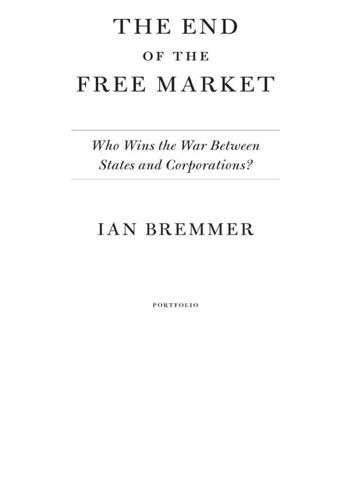
The End of the Free Market: Who Wins the War Between States and Corporations?
by
Ian Bremmer
Published 12 May 2010
.: Institute for Policy Studies, Dec. 2000), based on statistics from Forbes magazine. 10 Frances Maguire, “The New Masters of the Universe,” Banker, Jan. 2, 2006. 11 United Nations Conference on Trade and Development (UNCTAD), World Investment Report 2008: Transnational Corporations and the Infrastructure Challenge (New York/Geneva). 12 These critics had plenty of vivid stories to make their charges stick: Union Carbide’s chemical plant in Bhopal, India, which accidentally released tons of toxic gas in December 1984, killing several thousand people over a period of several years; the Exxon Valdez oil spill that badly damaged Alaska’s Prince William Sound in March 1989; the reported use of poorly paid and treated workers, and even child labor, in footwear factories producing shoes for Nike, Puma, Reebok, and Adidas in countries like Pakistan, Bangladesh, Indonesia, and Vietnam; Philip Morris’s allegedly aggressive marketing of carcinogenic cigarettes in developing countries; and the refusal of big pharmaceutical companies to allow patented HIV/AIDS drugs to be reproduced cheaply in the African countries that arguably needed them most.
…
Emergency Economic Stabilization Act (2008) emerging-markets see also specific countries Emerging Markets Century, The (Agtmael) Endiama “End of History, The” (Fukuyama) Equatorial Guinea Erdoğan, Recep Tayyip Eskom European Commission European Union Common Agricultural Policy (CAP) Excess Crude Account ExxonMobil Exxon Valdez Ezz, Ahmed Facebook Farouk I, king of Egypt Federal Anti-Monopoly Agency Fernández de Kirchner, Cristina financial crisis (2008) Financial Times Finland Formosa Plastic Group France Freedom House free-trade zone Fukuyama, Francis G20 Gandhi, Indira Gao Xiqing García Linera, Álvaro gas Gazprom General Agreement on Tariffs and Trade (GATT) General Motors Georgia Germany Giuliani, Rudolph Glass-Steagall Act (1933) global foreign direct investment in China, see China, foreign direct investment in globalization Goldman Sachs Gorbachev, Mikhail Government Investment Corporation Government Pension Fund (NGPF) Great Britain Great Depression Great Firewall Growth, Employment, and Redistribution (GEAR) program Gulf Cooperation Council Gulf of Mexico Gulf War Hamilton, Alexander Hanna, Don Harper, Stephen Hastings, Warren hedge funds He Yafei HIV/AIDS Hoover, Herbert Hormats, Robert HSBC Hudson Bay Company Hu Jintao Hume, David Hurricane Katrina Hussein, Saddam Hutchison Whampoa Hu Yaobang hypercapitalism Hyundai Iceland immigration import quotas India five-year plans of oil demand in Indonesia Industrial and Commercial Bank of China (ICBC) Industrial Revolution Institutional Revolutionary Party (PRI) intellectual-property rights (IPR) International Arbitration Center International Criminal Court International Energy Agency International Monetary Fund (IMF) Internet Iran Iran-Iraq war Iraq Ireland Israel Italy Ivanov, Sergei Japan post-World War II economic growth in Jasser, Muhammad al- Jiang Zemin Jianlong Group Jilin, China Jiwei, Lou Kant, Immanuel Kazakhstan Kazatomprom KazMunaiGas keiretsu Kemerovo Keynes, John Maynard Keynsianism Khalifa bin Zayed al Nahyan, Sheikh Khazanah Nasional Khodorkovsky, Mikhail Khrushchev, Nikita King Abdullah Economic City Kingdom Holding Company Klein, Naomi Kobaladze, Yuri Kovykta gas field Kuchma, Leonid Kudrin, Alexei Kuwait Kuwait Investment Authority Kuwait Petroleum Corporation Labour Party, British Latin America Lee Hsien Loong Lee Myung-bak Lehman Brothers Lenin, Vladimir Libya Liebknecht, Wilhelm Lincoln, Abraham Li Peng Louisiana Company Lula da Silva, Luiz Inácio McCain, John McDonald’s Maersk Magnitogorsk Metallurgical Combine Mahathir Mohammad Maktoum, Mohammed bin Rashid al- Malaysia Mali Mandela, Nelson Mao Zedong Marx, Karl Marxism Medvedev, Dmitry mercantilism end of and state capitalism Merkel, Angela Merrill Lynch Mexico military-industrial complex Ministry of International Trade and Industry (MITI) Ministry of Petroleum and Mineral Resources, Saudi Arabia Minogue, Kenneth Mississippi Bubble MITI Mitsubishi Mitsui Mitterrand, François Mohieldin, Mahmoud monopolies Morgan Stanley Mozambique Mubadala Development Company Mubarak, Gamal Mubarak, Hosni multinational corporations mutually assured economic destruction Nahyan, Khalifa bin Zayed al- Nahyan, Mohammed bin Zayed al- Nasser, Gamal Abdel National Development and Reform Commission National Development Bank (BNDES) nationalizations national oil and gas corporations (NOCs) see also specific NOCs National Petroleum Company National Petroleum Corporation (CNPC) National Savings Bank nation-state NATO Nazif, Ahmed Nehru, Jawaharlal Netherlands Network (film) New Economic Policy New World Development Co.
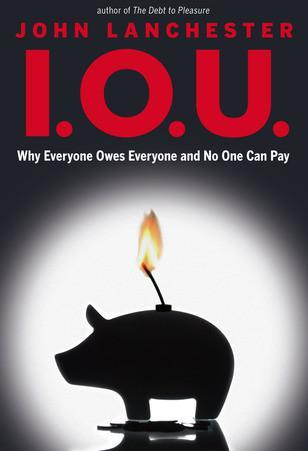
I.O.U.: Why Everyone Owes Everyone and No One Can Pay
by
John Lanchester
Published 14 Dec 2009
The new idea was a product which would resemble a kind of insurance, with the product insured being the risk of default on a specific debt. The first such deal involved the oil company Exxon, which needed to open a line of credit to cover potential damages of $5 billion resulting from the oil spillage from the Exxon Valdez in 1989. Exxon was an old client of J.P. Morgan, which was therefore reluctant to turn them down, even though the deal would take up a lot of capital which the bank could use more profitably elsewhere. Banks had rules about the amount of capital they needed to keep against the eventuality of loans going bad.
…
They could see how profitable the new mortgage-backed versions of their CDOs were. But after taking a long, hard look at the new business, they took a pass. They simply didn’t see how the risks were being engineered down to a safe level. The other banks must be seeing some way of doing it which they couldn’t work out. Blythe Masters, the woman in charge of the Exxon Valdez deal and of selling the very first BISTRO bonds, and thus one of the creators of the entire CDS industry, was baffled by the CDO boom. “How are the other banks doing it?” she asked. “How are they making so much money?”3 According to Gillian Tett in Fool’s Gold, “she was so steeped in the ways of J.P.
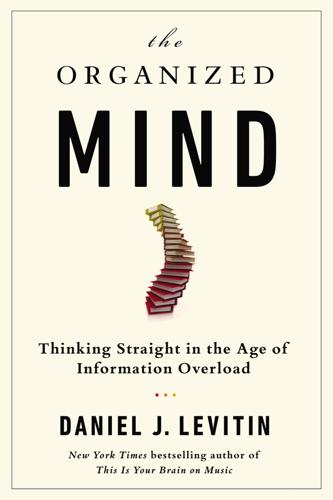
The Organized Mind: Thinking Straight in the Age of Information Overload
by
Daniel J. Levitin
Published 18 Aug 2014
Also available at http://www.ncbi.nlm.nih.gov/books/NBK19958/ some of the most well-known global disasters Harrison, Y., & Horne, J. A. (2000). The impact of sleep deprivation on decision-making: A review. Journal of Experimental Psychology: Applied, 6(3), 236–249. the oil spill from the Exxon Valdez U. S. National Transportation Safety Board. (1997). Marine accident report: Grounding of the U. S. tankship Exxon Valdez on Bligh Reeff, Prince William Sound, near Valdez, Alaska. NTSB Number MAR-90/04; PB90-916405. Washington, DC: U.S. Government Printing Office. the cruise ship Star Princess U. S. National Transportation Safety Board (1997). Marine accident report: Grounding of the Liberian passenger ship Star Princess on Poundstone Rock, Lynn Canal, Alaska.
…
Sleepiness was responsible for 250,000 traffic accidents in 2009, and is one of the leading causes of friendly fire—soldiers mistakenly shooting people on their own side. Sleep deprivation was ruled to be a contributing factor in some of the most well-known global disasters: the nuclear power plant disasters at Chernobyl (Ukraine), Three Mile Island (Pennsylvania), Davis-Besse (Ohio), and Rancho Seco (California); the oil spill from the Exxon Valdez; the grounding of the cruise ship Star Princess; and the fatal decision to launch the Challenger space shuttle. Remember that Air France plane that crashed into the Atlantic Ocean in June 2009, killing all 288 people on board? The captain had been running on only one hour of sleep, and the copilots were also sleep deprived.
…
See also central executive function exemplar object, 60–61 exercise, 211, 242 expected value, 236–37, 243–44, 396 expertise, 57, 138–39, 177–78, 205–7, 329–37 externalizing memory and airplane controls, 373 and brain extenders, 67–74 and brain physiology, 48–49, 50 and creativity, 375–76 and fuzzy categories, 370–71 and memory aids, 109–10 and neuronal clusters, xviii and organizational efficiency, 270 and social relations, 124–25 and tickler files, 124–25 and writing, xiii–xv Exxon Valdez oil spill, 191 Eysenck, Hans, 349 Facebook, 100–102, 126, 338 failure, planning for, 319–26 false positives and negatives, 232, 232, 233, 386, 386, 388 fear, 52–53, 418n126 Feinberg School of Medicine, 56 Ferguson, Jim, 178 Fermi problems, 357–58 file formats, 93, 321 filing systems, 93–94, 294–305, 376 Finkel, Eli, 131 fish oil supplements, 350–51 five-minute rule, 211–12 Fleming, Sandford, 163–64 flow state, 203–8, 209 focus, 9, 102, 170–71, 208.
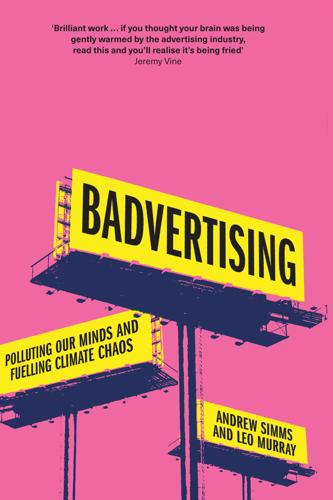
Badvertising
by
Andrew Simms
In short, SUVs are no safer for their occupants, and by some measures may be a good deal more risky than other cars. In 1998, the Sierra Club kicked off a wave of anti-SUV sentiment with a contest to rename Ford’s mammoth Excursion; ‘Ford Valdez – Have you driven a tanker lately?’ was the winning slogan, referencing the infamous huge oil spillage from the Exxon Valdez supertanker into Prince William Sound, off Alaska, and driving home the blatant discrepancy between ads for SUVs and their real ecological impact.57 ‘What car would Jesus drive?’ – a television ad campaign in the Midwest – followed in 2002. The Reverend Jim Ball, of the Washington-based Evangelical Environmental Network, said: ‘Most folks don’t think of transportation as a moral issue, but we’re called to care for kids and for the poor, and filling their lungs with pollution is the opposite of caring for them.’58 The campaign was greeted with rage of a kind that seems pretty inexplicable to a European audience.
…
Ford Fiesta, SUVs Carbon Offsetting and Reduction Scheme for International Aviation (CORSIA) 144 carbon offsets 102−4, 142−4 Carmichael Coal Mine, Australia 166 Carnegie Mellon University, Decision Sciences Department 52 Carter, Jimmy 111 CCTV (closed circuit television) 36 Champions for Earth initiative 101 Channel One (US tv programme) 39−40 Chelsea FC 98 Chesterfield cigarettes 57, 63 Chevrolet Blazer cars 113, 118 Chevron Airline 155 children 8−9, 15, 17, 33, 39, 74 China 40 Cho, J.H. 46 Cho, Su Myat 48 chocolate cigarettes 63 cigarette advertising bans on 63, 71−82 bans on television advertising 56−7, 59 campaigns against 56−7, 185−7 cigarette coupons 63 cigarette smoking 31, 54−82 depiction in films 25, 48−9 and nicotine 77 substitutes for 64 Cipollone family: case against tobacco industry by 70 Citroen cars 129 Civil Aeronautics Board (US) 149 Civil Rights Act (US 1964) 148 Clarke, Kenneth 68, 72 Clean Development Mechanism (CDM) 142, 143 Clear Channel Outdoor Company 10 Clement-Jones, Lord Tim 78, 80 climate change 5, 15−16, 41, 83, 94−5, 101 Climate Change Act (2008) 151 Climate Change Committee 138, 151 Climeworks Company 143 Coca-Cola Company 22, 23 Code of Broadcast Advertising (BCAP) 158 Code of Non-Broadcast Advertising and Direct and Promotional Marketing (CAP) 158 colour 20−2 Columbus, Christopher 57 Committee on Public Information (CPI) 30 Competition and Markets Authority (CMA) 154−5, 157, 159, 178 Conservative government (Major) 72 (Thatcher) 65, 69 Conservative Party conference 22 consumer credit 3, 43−4 Consumer Federation of America 35 consumer neuroscience 52−3 consumer psychology 53, 121 consumerism 2−9, 44 Convention on International Civil Aviation 149 cookies 34 third-party cookies 36 Coolidge, Calvin 188 COP26 Conference 97, 165 Council for Tobacco Research (US) 61 Covid-19 pandemic 48, 91, 109, 125−6, 182, 193−4 impact on airline industry 152, 154 Cowling, Keith 45 Craigie, Jill 54−5 cricket 69, 84 Cruise, Tom 25 Culture Declares Emergency (group) 100 Culture Unstained (organisation) 99 Curtis, Adam 30 cycling 87−8, 89 Daedalus (myth) 135 Daily Mail 198 Daily Mile fitness programme 88 Daily Telegraph 198 Dawson, John 54, 66, 67 Dennison, Mary-Ann 148 Department of Health and Social Security (DHSS) 67, 72 Dobson, Frank 76 Doctors for Tobacco Law (organisation) 71 Dodge Durango cars 119 Dodge Ram trucks 114 Doll, Richard 55−6, 58 Doria, João 8 Dorrell, Stephen 73 Douglas-Home, Sir Alec 59 Dreiser, Theodore A Hoosier Holiday 115−6 Drope, Jeffrey 74 drought 94 DuckDuckGo (search engine) 196 e-fuels 137−8 Earth Overshoot Day 3−4 Easyjet Airline 150−1, 154, 163−4 advertisement 163ill slogan 13 Easyjet Future Flying programme 163−4 eavesdropping devices 36 Ecclestone, Bernie 76 Eddington, Paul 69 Edell, Marc 70 Edinburgh International Festival 195 Eisenhower, Dwight D. 109 electric vehicles 92, 129−30, 131 Emirates Airline 84−5, 96 slogan of 134 energy drinks 19 Ennals, David 64 Eshel, Gidon 46 Etihad Airline 155 European Advertising Standards Alliance (EASA) 167 European Commission 103 European Court of Justice 76 European Economic Community: dispute with US 111 European Parliament 104 European Union 79 Clean Claims Directive 155 Empowering Consumers for the Green Transition 155 Evangelical Environmental Network 129 Evening Standard 151 Exxon Valdez oil spill 128 ExxonMobil 77 Facebook 27, 32, 33 content moderators for 33 facial expressions 22 Febiac Federation 173 Federal Communications Commission (FCC) 24 Federal Trade Commission (FTC) 33−4, 49 Fédération Internationale de l’Automobile (FIA) 77 Fédération Internationale de Football Association (FIFA) 98, 102, 103 Ferrari Formula 1 cars 24 Fiat Chrysler Company 129 films: depiction of smoking in 25, 48−9 Financial Conduct Authority 178 Financial Times 75 fingerprinting 35, 36 Finland 93, 190 ban on tobacco advertising in 65, 75 Finnair airline 63 FIRES research programme 138 Fletcher, Charles 58−9 floods 94 food advertising: use of colour in 21 Foot, Michael 54−5, 58, 59−60, 67, 69 Forbes (magazine) 11 Ford, Bill 118 Ford, Edsell II: 112 Ford Explorer cars 112, 113, 117, 118, 124, 128 Ford Fiesta cars 107 Ford Model T cars 110, 118 Ford Motor Company: No Boundaries campaign 117−8 FOREST (campaign group) 62 Forest Green Rovers FC 104 Formula One racing 76, 77, 88 fossil fuels 77, 80−1, 97−8, 99−105 Foxley-Norris, Sir Christopher 62 fracking 88−9 France 173, 198 Jury de Déontologie Publicitaire 173 Résistance à l’Aggression (tv network) 11, 189 smoking ban in 79 Freiburg FC 104 Freud, Sigmund 29, 30 Frick, Vivian 51 Gahagan, Fritz 54 Galbraith, John Kenneth 160 The Affluent Society 16 The Great Crash 157 Gazprom Company 84, 97−9 football sponsorship by 98−9 General Motors Company 95−6 Geneva 193 George, Susan 192 Germany 11, 189 Deutsche Umwelthilfe (NGO) 11 Nazi era 30, 58, 116 smoking ban in 79 Werbefrei (organisation) 11, 189 Gillett, Lizzie xii Glantz, Stanton 49 Goebbels, Joseph 30 Global Financial Crisis (2008) 151 Global Footprint Network 3−4 Google 26, 27, 32 Gore, Al 24 graffiti art 7−8 Grahame, Kenneth The Wind in the Willows 116 Greenberg, Bradley 39−40 Greenpeace 99, 140, 172 greenwashing 85, 103, 155 Greenwood, Tony x Grenoble 194 Guardian 11, 144, 161 Gulf War (1990−91) 113 Gunster, Shane 123−4 Haarlem 189 Harris, Ralph, Baron of High Cross 62 Hauer, Ezra 121−2 Havard, John 66, 67 health campaigns 6, 60 Health Education Council 63, 68, 69 Red Book 68 Health Security Agency 131 Hidalgo, Anne 83, 102 High, Hugh 73−4 Hill, Austin Bradford 58 Hillary, Sir Edmund 127 Hind, Dan The Return of the Public 199, 200 Honda cars 120 House of Lords 176 Environment Committee 180 HSBC 71, 158, 165−7 advertisement 165ill Hubbard, Diane 125 Hühne, Matthias Airline Visual Identity 149 Hum Vee cars 113 Hummer cars 113, 114, 118, 126−7 hybrid vehicles 92 mild hybrid vehicles 130 Icarus (myth) 134ill, 135 Imperial Airways 146 advertisement 145ill Imperial Oil Company 81 ‘Review of Environmental Protection Activities for 1978-79’ 80 Impossible Hamster (film) xii India 194 Indian Premier League 94 induced demand 117 Ineos Company 84, 87−91, 97−8 Ineos Grenadiers cycling team 87, 89−90 Ineos Team UK 87, 105 Ineos Upstream Ltd 88 Infiniti QX4 cars 123 Inflation Reduction Act (US 2022) 5 Institute of Economic Affairs (IEA) 73, 75 internal combustion engine (ICE) 4−5, 92, 96 International Air Transport Association (IATA) 85−6, 142, 152 International Civil Aviation Organization 135, 144 Icarus mural 134ill International Energy Agency 138 International Olympic Committee (IOC) 93 International Ski and Snowboard Federation (FIS) 101 International Travel Association 142 Iran 194 Iraq war 151, 199 Ireland: smoking ban in 79 Jacobi, Derek 69 James I, King Counterblaste to Tobacco 57 Japanese car market 93, 114 Jardine Glanville Company 66 J.C.
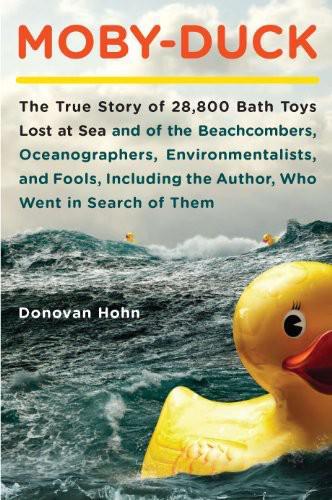
Moby-Duck: The True Story of 28,800 Bath Toys Lost at Sea and of the Beachcombers, Oceanographers, Environmentalists, and Fools, Including the Author, Who Went in Search of Them
by
Donovan Hohn
Published 1 Jan 2010
“On the west side of it the forest is pristine, but on the east side all the lower branches are stripped off. You can tell that hellacious winter storms have pounded the crap out of it.” The windward shore of that isthmus is what’s known to beachcombers and oceanographers as “a collector beach.” According to the Anchorage Daily News, of the 10.8 million gallons of oil that spilled from the Exxon Valdez in 1989, more ended up on the windward shore of Gore Point than on any other beach in Alaska. In a single month workers there had filled six thousand plastic bags with toxic goulash—“oily sand and gravel, patties of emulsified crude, tar coated flotsam and jetsam, and the oil coated carcasses of birds and sea otters,” the Daily News reported at the time.
…
Although Pallister scorns organized religion, considering it the enemy of reason, there is something puritanical about his brand of conservationism, which is in large part a crusade against idiotic hominids. Like many conservationists in Alaska, he dates the beginning of his activism to March 24, 1989, the day the Exxon Valdez ran aground on Bligh Reef. What troubled Pallister the most wasn’t the spilled oil, however; it was the crowds—the volunteers, the cameramen, the news anchors, the oilmen, the politicians. “All of a sudden there were literally thousands of people in places where I’d never seen people before,” he told me.
…
Thirty years ago in Coming into the Country, John McPhee wrote memorably about what he called “the Alaskan paradox,” the irreconcilable cohabitation in Alaska of “the Sierra Club syndrome” and “the Dallas scenario”—of the impulse to sanctify the wilderness and to exploit it. Those two impulses are still at war in Alaska, but the allegiances have shifted and the plotlines have blurred. On the one hand, after the Exxon Valdez fulfilled the dire prophecies of environmental Cassandras, threatening Alaska’s fisheries and tourism industry as well as the ecosystem of Prince William Sound, fewer Alaskans now regard the Sierra Club as “a netherworld force” than when McPhee visited the state in the early seventies. On the other hand, in Alaska, as everywhere else in America, it’s no longer quite so easy to tell who’s on the Sierra Club’s team and who’s playing for Dallas, which is why it pissed off Shavelson so much that Pallister and GoAK had obfuscatorily appropriated the Waterkeeper brand.
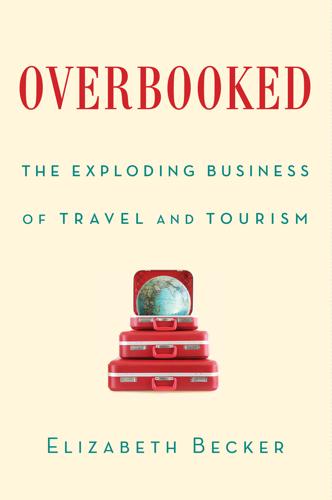
Overbooked: The Exploding Business of Travel and Tourism
by
Elizabeth Becker
Published 16 Apr 2013
Disasters continued. The Exxon Valdez spilled 32 million gallons of oil in Prince William Sound, Alaska, in 1989. The Prestige, a Greek ship registered in the Bahamas and Liberia, spilled 77,000 tons of fuel off the Galician coast of northwestern Spain in 2002. Despite the MARPOL convention, the owners of the Prestige escaped responsibility. Furious, the Europeans sharpened their own laws and stepped up surveillance of the coast. Against this backdrop, cruise ships were largely ignored, considered harmless for carrying tourists rather than oil. The awakening came in Alaska ten years after the Exxon Valdez spill.
…
.: of 2008, 366 of 2012, 364–65, 366–67 elephants: poaching of, 214, 219–21, 234–35 threatened extinction of, 220–21, 223, 235 El Salvador, civil war in, 254 Emanuel, Rahm, 370–71, 373–74 Emirates Airlines, 172–73, 174, 184 Emirates Palace Hotel, 191 Emmrich, Stuart, 7, 30–31 Eng, Roland, 90–91, 92, 105 environmental degradation: from cruise ships, 134, 153–55 tourism and, 20, 30, 35, 38, 195–96, 272 in UAE, 195–96 see also pollution environmentalism, 21, 249–50, 266 see also ecotourism; green tourism Environmental Protection Agency (EPA), U.S., 156–57, 161, 163–64 Ephron, Nora, 13 Etihad Airways, 192 Euromic, 372 Europe: Chinese tourists in, 308–9 meetings and conventions business in, 372–73 paid vacations in, 55 tourism in, 14, 19 European trading system, 38 European Union, 55, 68 Europe on $5 a Day (Frommer), 11, 12–13 Evans, Graham, 199 Explorer sinking, 162 Exxon Valdez oil spill, 158 Fain, Richard, 140 Falcone, Patrick, 68–69, 72 falcons, 198 Farmer, Greg, 352 FBI, 164 Federal Aviation Administration, 351 Fiedler, Tom, 32, 33 Figueres Ferrer, José, 250 Fine Art Registry, 147–48 flags of convenience, 139, 142, 256 Florianópolis, Brazil, 270 Florida, tourism industry in, 32, 125, 134, 135, 384 fondacos, 78 Footprint Dubai (Gilmore), 175 Forbes, 72 40xVenezia, 78, 80–81 Four Seasons Resort and Spa, Costa Rica, 262 France, 43–75 Agriculture Ministry of, 57, 67–68, 69, 72 American tourists in, 49–50, 53–54 British tourists in, 49, 50–51 Chinese tourists in, 66–67, 309, 310 cultural richness of, 47–48, 56, 68 Culture Ministry of, 47, 67 dependence on tourism as contrary to self-image of, 46–47 foreign retirees in, 72–73 governmental tourism policy in, 44–45, 47, 48, 57–58, 66–69 landscape preservation in, 68–69 Marshall Plan rebuilding of tourism industry in, 52–54 as most visited country, 44 museum system in, 56 national lifestyle of, 45, 53, 68 nineteenth-century tourism in, 49–51 paid vacations in, 47, 52 railway system in, 56–57, 59, 68 Tourism Board of, 51 tourism as largest economic sector in, 44, 46–47, 66–67 tourism problems in, 47, 48, 69–75 tourism’s pressure on housing markets in, 71–75 wine tourism in, 58–66 Franco, Francisco, 8 Frangialli, Francesco, 16, 48 Frankel, Amy, 163 Franks, Theresa, 147–48 Frantzius, Alexander von, 250–51 Freeman, Geoff, 355, 359, 360–61, 367 Free Tibet movement, 302 frequent-flyer miles, total value of, 17, 174–75 Friendship Hotel, Beijing, 296 Frommer, Arthur, 11–13, 26 Fuller, Ed, 172, 179, 271, 274, 276 Fundingsland, David, 320 fund-raising, tourism and, 19 Gabbrielli, Matteo, 76–78, 82, 84, 310 Gabon, 235 Gad, David, 149 Galabru, Kek, 110 Galápagos islands, 241 Galle, Sri Lanka, 282, 283, 284–85 Gambia, 242 Gander, Rhoda M., 231–32 gay and lesbian tourism, 37 Gebrselassie, Haile, 333 Gehry, Frank, 191 Gelb, Arthur, 28 General Services Administration, U.S., 373 genocide museums, 106–7 George Washington University, 268, 380 geotourism, 266–68 see also ecotourism; green tourism Geotourism Map Guide program, 267 Germany, 372 Ghana, 242 Gifford, Kathie Lee, 137–38 Giles, Rick, 356 Gilmore, Zee, 175 Gingrich, Newt, 350, 352, 365, 367 Gironde River, 58 G.I.’s Guide to Travelling in Europe, The (Frommer), 11 Giverny, France, 70 Glacier Bay National Park, 160 Glenny, Misha, 115 Global Footprint Network, 196 Global Heritage Fund, 98 globalization, labor unions and, 141–42 Global Sustainable Tourism Council, 247, 255–56, 260, 262, 264–66 Global Tourism Business Award, 271 Goldstein, Adam M., 143–44, 148, 150, 152, 154, 155 golf courses, water usage by, 200 Golfo Dulce Bay, 252, 258 Goodman, Carolyn, 371 Goodwin, Harold, 269 Goonetilleke, Bernard, 282 Gore, Al, 350 Gorée island, 243 Gorongosa National Park, 238–39 Gourevitch, Philip, 239 governments: tourism marketing by, 33–34, 66, 69, 347 Graff, Roy, 311 Graves, Michael, 113 Great Depression, 384 Great Exposition, London (1851), 49 Great Recession (2008), 17, 19, 67, 116, 138–39, 149, 294, 366 Dubai and, 169, 175, 178, 179, 186 tourism industry and, 271, 273–74, 360 Great Rift Valley, 238 Great Wall Hotel, 304 Green Globe, 266 Greenhouse, Carol, 202 green tourism, 193–203, 263 see also ecotourism; geotourism Gregori, Flavio, 78–79, 82 Groslier, Bernard-Philippe, 95 Groslier, George, 95 Guardian (London), 356 Guatemala, postwar tourism in, 279 Guggenheim Museum, Abu Dhabi, 191, 192–93 Guilin, China, 302 Gulf Air, 171, 172 habitat destruction, 20, 198–99 Habitat for Humanity, 268 Hajj pilgrimage, 17–18, 167, 170, 181–85 Haley, Alex, 242–43 Haley, William, 243 Hamm, Catharine, 30 Hanks, Douglas, III, 32 Harms, Erika, 264–65 Harté, Yves, 62–63 Hawaii: Conservation and Coastal Lands Office of, 385–86 Land and Natural Resources Department of, 385 sea rise and, 385–88 Tourism Authority of, 387 Hawaii, University of, 385 Hawkins, Donald, 268, 380–81 health care costs, medical tourism and, 18, 376, 378–79 Hegazy, Ashraf Faisal, 195 hema, 198 Heng-Shan Group, 325 Heng-Shan Moller Villa, 324–25 Herscowitz, Herb and Ellen, 294 Hiaasen, Carl, 384 Hickton, George, 307–8, 310 Hill, Isabel, 360 Hilton hotels, 314 Historic Shanghai, 325–27 HIV/AIDS, 230 Ho, Dean, 304 Ho, Stanley, 369 Hoffmann, Carl, 250–51 Hogg, Andy, 216–17, 218–19, 223–24, 225–27 Hogg, Jerry, 217, 218 Hoh Rain Forest, 383–84 Holdridge, Leslie, 251 Homeland Security Department, U.S., 161, 353, 354, 357 Honey, Martha, 268–69 Hong Kong, 295, 306, 369 Ho Renzhi, 298 hospitality, as foreign to Chinese tourism industry, 302–3, 315–16, 317 hospitality schools and academic programs, 10, 379–80 housing markets, tourism and, 20, 71–75, 80 howler monkeys, 247, 248, 252, 261 Huangpu River, 323, 324 Hughes, Trevor, 162 Human Rights Watch, 187, 192 Hunas Falls, 285, 286 Hun Sen, 91, 99, 101, 104, 108, 109–11 Hyatt Hotels Corporation, 314, 374 Hydropolis Hotel, 177 Iceland Water Park, 201 India, 116, 189, 375 Indonesia, 183 Innocents Abroad (Twain), 49–50 InterContinental Hotels Group, 359 International Centre for Responsible Tourism, 269 International Convention for the Prevention of Pollution from Ships (MARPOL), 158 International Coordinating Committee for the Safeguarding and Development of the Historic Site of Angkor (ICC-Angkor), 96–97 International Ecotourism Society, 251 International Institute for Peace Through Tourism, 229–34 International Justice Mission (IJM), 119–20 International Olympic Committee, 362 International Transport Workers’ Federation, 142, 143 International Union for Conservation of Nature, 198 Internet: tourism and, 381 travel writing and, 30 U.S. national travel website on, 363 U.S. tourism policy criticized on, 356 Iraq War, 349, 353, 355 Ireland, 19 Israel, 35, 141 Italy, 83 ITB International Tourism Bourse, 229 ivory trade, illegal, 220–21, 234–35 Jacobs, Susan, 358 Japanese tourists, in Venice, 76 Jarrett, Valerie, 360 Jayavarman VII, Angkor emperor, 95 Jebel Ali International Hotels, 201 Jeddah, Saudi Arabia, 182, 184, 185 Jenanyan, Gary, 257 Jerusalem, pilgrimages to, 182 Jerusalem and Its Surroundings (Baedeker guide), 23 Jetwing, 279, 285, 286 Johannesburg airport, 209 Johnston, Tess, 326 Joly, Hubert, 271–72 Juma Sustainable Development Preserve, 271, 274–76 Jumeirah Group, 195, 196 Juppé, Alain, 58–59, 61–62, 63, 64–65 Justice Department, U.S., 115, 116 J.
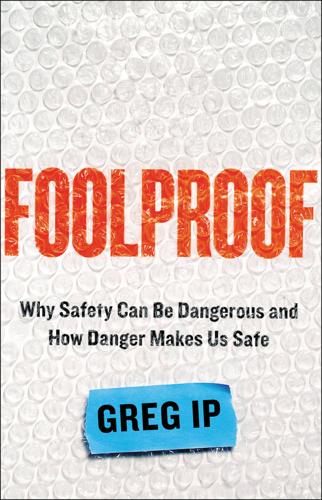
Foolproof: Why Safety Can Be Dangerous and How Danger Makes Us Safe
by
Greg Ip
Published 12 Oct 2015
This became apparent when, twenty years later, an almost identical problem erupted over the use of another financial innovation: credit default swaps, or CDSs. J.P. Morgan hit upon the idea of the credit default swap in 1994. As Gillian Tett recounts in her book Fool’s Gold, Exxon (now Exxon Mobil) had asked for a $4.8 billion credit line to handle an expected fine for the Exxon Valdez oil spill. This was more than J.P. Morgan was comfortable committing to a single client, but it didn’t want to say no, so it asked the European Bank for Reconstruction and Development to take on the credit risk of the loan in exchange for a fee. The loan remained on J.P. Morgan’s books, but the firm now had an insurance policy against default.
…
Subsequent inquiries found that BP had a culture of cutting corners and sacrificing safety for speed. Engineers knew that the Macondo well was difficult to control but they kept trying rather than abandon it. That evening the well suffered a blowout and the escaping gas exploded, destroying the rig, killing eleven, and causing one of the worst oil spills in history. In 1989, the supertanker Exxon Valdez ran aground in Prince William Sound, Alaska, spilling eleven million gallons of crude oil, soiling more than a thousand miles of coastline, and killing thousands of birds, otters, seals, and whales. The reputational and financial damage caused by that catastrophe was enormous. For years afterward the first word that people in focus groups thought of when they heard “Exxon” was “Valdez.”
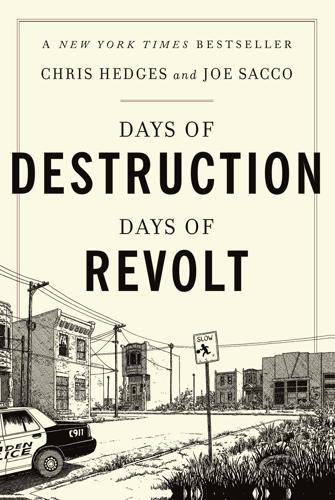
Days of Destruction, Days of Revolt
by
Chris Hedges
and
Joe Sacco
Published 7 Apr 2014
In December 2008 the coal ash spill at the Tennessee Valley Authority’s Kingston Fossil Plant in Roane County, Tennessee, released 1.1 billion gallons of waste across three hundred acres and into nearby rivers. The ash-filled sludge had accumulated for decades from the Kingston coal-fired plant. The spill was a hundred times larger than the Exxon Valdez oil spill.21 The 1972 Buffalo Creek disaster, caused by the bursting of a slurry impoundment dam at the Pittston Coal Company in Logan County, West Virginia, sent more than 132 million gallons of swirling poison into the valley towns below.22 The flooding left one hundred and twenty-five people dead and more than twelve hundred injured.
…
Emanuel, Rahm, 264 Employment Authorization cards, 200–201 “Ending Wal-Mart’s Rural Stranglehold” (United Food and Commercial Workers), 182 Engels, Friedrich, 232 Enron, 89 Environmental damage, 10, 77, 120, 151, 165 Environmental Protection Agency (EPA), 165, 183, 234 Erika (prostitute), interview of, 100–101 Estabrook, Barry, 183–184 Evans, Ron, 204–205 Exxon Valdez oil spill, 144 ExxonMobil, 69, 266 Fair Food Agreement, 206, 207 Fair Food Code of Conduct, 222 Faison, Gwendolyn, 88, 95 Famine, 151, 270 Farmer, John, 89 Farmington disaster, 171 Fast-food industry, buying power of, 182 FBI, 18, 46, 48, 50, 51, 52, 109, 264 Federal Emergency Management Authority, 155 Fertilizers, impact of, 183 Fieldworkers, 186, 218, 222 abuse of, 180, 187 debt peonage for, 197 illustration of, 178–179, 181, 188–189 undocumented, 199 Walmart and, 182 Fifth Amendment, 263–264 Flenley, John, 151 Flores, Miguel, 198, 199 Florida Fruit & Vegetable Association, 204 Florida Rural Legal Services, 204 Flowers, Margaret: Occupy movement and, 234 Food stamps, 20, 67, 69, 153, 194 Forced labor, 196, 205–206 Foreclosures, 227, 237, 239 Fort White, Florida: lynching at, 195 Fossil fuels dirty politics of, 182 exhaustion of, 130 exploitation of, 261–262 standards of living and, 261–262 Frazier, Ian: on Crazy Horse, 41 Free market, wages and, 194 Freedom of speech, 263 Freedom Plaza, 234, 235 Friesen, John, 248, 251, 252 described, 247 illustration of, 249 on surviving, 249–250 Fully Informed Jury Association, 261 Furia, Alice, 89 Gallagher, Lou, 89 Gamer, Robert E.: on revolt, 38 Gandhi, Mahatma, 55 Gandhi, Mohandas, 40 Gangs, 38, 64, 73 member of, 39 (illus.)
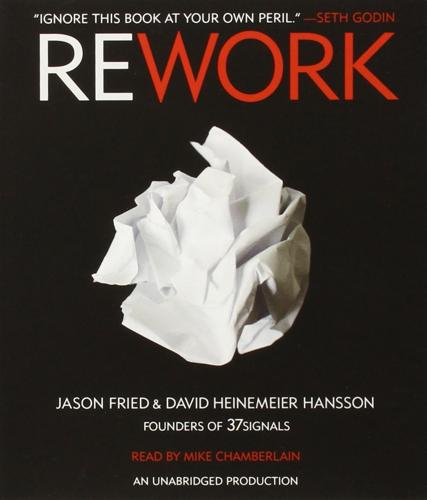
Rework
by
Jason Fried
and
David Heinemeier Hansson
Published 9 Mar 2010
They’ll post about it online and everyone will know. There are no more secrets. People will respect you more if you are open, honest, public, and responsive during a crisis. Don’t hide behind spin or try to keep your bad news on the down low. You want your customers to be as informed as possible. Back in 1989, the Exxon Valdez oil tanker spilled 11 million gallons of oil into Alaska’s Prince William Sound. Exxon made the mistake of waiting a long time before responding to the spill and sending aid to Alaska. Exxon’s chairman failed to go there until two weeks after the spill. The company held news briefings in Valdez, a remote Alaskan town that was difficult for the press to reach.
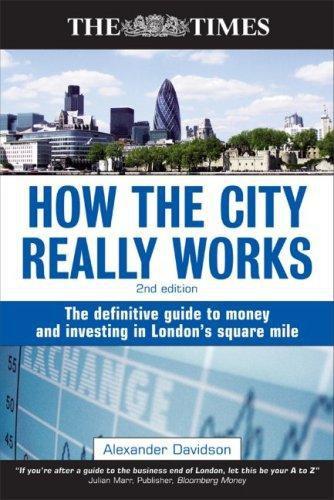
How the City Really Works: The Definitive Guide to Money and Investing in London's Square Mile
by
Alexander Davidson
Published 1 Apr 2008
A third slice would be passed to another reinsurer, and the spiral would continue through the market, sometimes winding back to the original insurer or reinsurer, which might take another slice, effectively reinsuring itself. A series of major catastrophes happened. In 1988, the Piper Alpha oil platform caught fire and fell into the North Sea. In 1989, Hurricane Hugo struck Puerto Rico, St Croix, South Carolina and North Carolina and, in the same year, oil tanker Exxon Valdez ran aground off the Alaskan coast. In 1990, there were severe storms across Europe. Lloyd’s Names ended up paying many of the claims. Some loss-making Names alleged that certain members’ agents had known of pending legal actions affecting the syndicates that they advised them to join. The claim was never proven.
…
Index 419 fraud 204 9/11 terrorist attacks 31, 218, 242, 243, 254, 257 Abbey National 22 ABN AMRO 103 accounting and governance 232–38 scandals 232 Accounting Standards Board (ASB) 236 administration 17 Allianz 207 Alternative Investment Market (AIM) 44–45, 131, 183, 238 Amaranth Advisors 170 analysts 172–78 fundamental 172–74 others 177–78 Spitzer impact 174–75 technical 175–77 anti-fraud agencies Assets Recovery Agency 211–13 City of London Police 209 Financial Services Authority 208 Financial Crime and Intelligence Division 208 Insurance Fraud Bureau 209 Insurance Fraud Investigators Group 209 International Association of Insurance Fraud Agencies 207, 210, 218 National Criminal Intelligence Service 210 Serious Fraud Office 213–15 Serious Organised Crime Agency 210–11 asset finance 24–25 Association of Investment Companies 167 backwardation 101 bad debt, collection of 26–28 Banco Santander Central Hispano 22 Bank for International Settlements (BIS) 17, 27, 85, 98, 114 bank guarantee 23 Bank of Credit and Commerce International (BCCI) 10, 214 Bank of England 6, 10–17 Court of the 11 credit risk warning 98 framework for sterling money markets 81 Governor 11, 13, 14 history 10, 15–16 Inflation Report 14 inflation targeting 12–13 interest rates and 12 international liaison 17 lender of last resort 15–17 Market Abuse Directive (MAD) 16 monetary policy and 12–15 Monetary Policy Committee (MPC) 13–14 Open-market operations 15, 82 repo rate 12, 15 role 11–12 RTGS (Real Time Gross Settlement) 143 statutory immunity 11 supervisory role 11 Bank of England Act 1988 11, 12 Bank of England Quarterly Model (BEQM) 14 Banking Act 1933 see Glass-Steagall Act banks commercial 5 investment 5 Barclays Bank 20 Barings 11, 15, 68, 186, 299 Barlow Clowes case 214 Barron’s 99 base rate see repo rate Basel Committee for Banking Supervision (BCBS) 27–28 ____________________________________________________ INDEX 303 Basel I 27 Basel II 27–28, 56 Bear Stearns 95, 97 BearingPoint 97 bill of exchange 26 Bingham, Lord Justice 10–11 Blue Arrow trial 214 BNP Paribas 145, 150 bond issues see credit products book runners 51, 92 Borsa Italiana 8, 139 bps 90 British Bankers’ Association 20, 96, 97 building societies 22–23 demutualisation 22 Building Societies Association 22 Capital Asset Pricing Model (CAPM) see discounted cash flow analysis capital gains tax 73, 75, 163, 168 capital raising markets 42–46 mergers and acquisitions (M&A) 56–58 see also flotation, bond issues Capital Requirements Directive 28, 94 central securities depository (CSD) 145 international (ICSD) 145 Central Warrants Trading Service 73 Chancellor of the Exchequer 12, 13, 229 Chicago Mercantile Exchange 65 Citigroup 136, 145, 150 City of London 4–9 Big Bang 7 definition 4 employment in 8–9 financial markets 5 geography 4–5 history 6–7 services offered 4 world leader 5–6 clearing 140, 141–42 Clearing House Automated Payment System (CHAPS) 143 Clearstream Banking Luxembourg 92, 145 commercial banking 5, 18–28 bad loans and capital adequacy 26–28 banking cards 21 building societies 22–23 credit collection 25–26 finance raising 23–25 history 18–19 overdrafts 23 role today 19–21 commodities market 99–109 exchange-traded commodities 101 fluctuations 100 futures 100 hard commodities energy 102 non-ferrous metals 102–04 precious metal 104–06 soft commodities cocoa 107 coffee 106 sugar 107 Companies Act 2006 204, 223, 236 conflict of interests 7 consolidation 138–39 Consumer Price Index (CPI) 13 contango 101 Continuous Linked Settlement (CLS) 119 corporate governance 223–38 best practice 231 Cadbury Code 224 Combined Code 43, 225 compliance 230 definition 223 Directors’ Remuneration Report Regulations 226 EU developments 230 European auditing rules 234–35 Greenbury Committee 224–25 Higgs and Smith reports 227 International Financial Reporting Standards (IFRS) 237–38 Listing Rules 228–29 Model Code 229 Myners Report 229 OECD Principles 226 operating and financial review (OFR) 235– 36 revised Combined Code 227–28 Sarbanes–Oxley Act 233–34 Turnbull Report 225 credit cards 21 zero-per-cent cards 21 credit collection 25–26 factoring and invoice discounting 26 trade finance 25–26 credit derivatives 96–97 back office issues 97 credit default swap (CDS) 96–97 credit products asset-backed securities 94 bonds 90–91 collateralised debt obligations 94–95 collateralised loan obligation 95 covered bonds 93 equity convertibles 93 international debt securities 92–93 304 INDEX ____________________________________________________ junk bonds 91 zero-coupon bonds 93 credit rating agencies 91 Credit Suisse 5, 136, 193 CREST system 141, 142–44 dark liquidity pools 138 Debt Management Office 82, 86 Department of Trade and Industry (DTI) 235, 251, 282 derivatives 60–77 asset classes 60 bilateral settlement 66 cash and 60–61 central counterparty clearing 65–66 contracts for difference 76–77, 129 covered warrants 72–73 futures 71–72 hedging and speculation 67 on-exchange vs OTC derivatives 63–65 options 69–71 Black-Scholes model 70 call option 70 equity option 70–71 index options 71 put option 70 problems and fraud 67–68 retail investors and 69–77 spread betting 73–75 transactions forward (future) 61–62 option 62 spot 61 swap 62–63 useful websites 75 Deutsche Bank 136 Deutsche Börse 64, 138 discounted cash flow analysis (DCF) 39 dividend 29 domestic financial services complaint and compensation 279–80 financial advisors 277–78 Insurance Mediation Directive 278–79 investments with life insurance 275–76 life insurance term 275 whole-of-life 274–75 NEWICOB 279 property and mortgages 273–74 protection products 275 savings products 276–77 Dow theory 175 easyJet 67 EDX London 66 Egg 20, 21 Elliott Wave Theory 176 Enron 67, 114, 186, 232, 233 enterprise investment schemes 167–68 Equiduct 133–34, 137 Equitable Life 282 equities 29–35 market indices 32–33 market influencers 40–41 nominee accounts 31 shares 29–32 stockbrokers 33–34 valuation 35–41 equity transparency 64 Eurex 64, 65 Euro Overnight Index Average (EURONIA) 85 euro, the 17, 115 Eurobond 6, 92 Euroclear Bank 92, 146, 148–49 Euronext.liffe 5, 60, 65, 71 European Central Bank (ECB) 16, 17, 84, 148 European Central Counterparty (EuroCCP) 136 European Code of Conduct 146–47, 150 European Exchange Rate Mechanism 114 European Harmonised Index of Consumer Prices 13 European Union Capital Requirements Directive 199 Market Abuse Directive (MAD) 16, 196 Market in Financial Instruments Directive (MiFID) 64, 197–99 Money Laundering Directive 219 Prospectus Directive 196–97 Transparency Directive 197 exchange controls 6 expectation theory 172 Exxon Valdez 250 factoring see credit collection Factors and Discounters Association 26 Fair & Clear Group 145–46 Federal Deposit Insurance Corporation 17 Federation of European Securities Exchanges 137 Fighting Fraud Together 200–01 finance, raising 23–25 asset 24–25 committed 23 project finance 24 recourse loan 24 syndicated loan 23–24 uncommitted 23 Financial Action Task Force on Money Laundering (FATF) 217–18 financial communications 179–89 ____________________________________________________ INDEX 305 advertising 189 corporate information flow 185 primary information providers (PIPs) 185 investor relations 183–84 journalists 185–89 public relations 179–183 black PR’ 182–83 tipsters 187–89 City Slickers case 188–89 Financial Ombudsman Service (FOS) 165, 279–80 financial ratios 36–39 dividend cover 37 earnings per share (EPS) 36 EBITDA 38 enterprise multiple 38 gearing 38 net asset value (NAV) 38 price/earnings (P/E) 37 price-to-sales ratio 37 return on capital employed (ROCE) 38 see also discounted cash flow analysis Financial Reporting Council (FRC) 224, 228, 234, 236 Financial Services Act 1986 191–92 Financial Services Action Plan 8, 195 Financial Services and Markets Act 2001 192 Financial Services and Markets Tribunal 94 Financial Services Authority (FSA) 5, 8, 31, 44, 67, 94, 97, 103, 171, 189, 192–99 competition review 132 insurance industry 240 money laundering and 219 objectives 192 regulatory role 192–95 powers 193 principles-based 194–95 Financial Services Compensation Scheme (FSCS) 17, 165, 280 Financial Services Modernisation Act 19 financial services regulation 190–99 see also Financial Services Authority Financial Times 9, 298 First Direct 20 flipping 53 flotation beauty parade 51 book build 52 early secondary market trading 53 grey market 52, 74 initial public offering (IPO) 47–53 pre-marketing 51–52 pricing 52–53 specialist types of share issue accelerated book build 54 bought deal 54 deeply discounted rights issue 55 introduction 55 placing 55 placing and open offer 55 rights issues 54–55 underwriting 52 foreign exchange 109–120 brokers 113 dealers 113 default risk 119 electronic trading 117 exchange rate 115 ICAP Knowledge Centre 120 investors 113–14 transaction types derivatives 116–17 spot market 115–16 Foreign Exchange Joint Standing Committee 112 forward rate agreement 85 fraud 200–15 advanced fee frauds 204–05 boiler rooms 201–04 Regulation S 202 future regulation 215 identity theft 205–06 insurance fraud 206–08 see also anti-fraud agencies Fraud Act 2006 200 FTSE 100 32, 36, 58, 122, 189, 227, 233 FTSE 250 32, 122 FTSE All-Share Index 32, 122 FTSE Group 131 FTSE SmallCap Index 32 FTSE Sterling Corporate Bond Index 33 Futures and Options Association 131 Generally Accepted Accounting Principles (GAAP) 237, 257 gilts 33, 86–88 Giovanni Group 146 Glass-Steagall Act 7, 19 Global Bond Market Forum 64 Goldman Sachs 136 government bonds see gilts Guinness case 214 Halifax Bank 20 hedge funds 8, 77, 97, 156–57 derivatives-based arbitrage 156 fixed-income arbitrage 157 Hemscott 35 HM Revenue and Customs 55, 211 HSBC 20, 103 Hurricane Hugo 250 306 INDEX ____________________________________________________ Hurricane Katrina 2, 67, 242 ICE Futures 5, 66, 102 Individual Capital Adequacy Standards (ICAS) 244 inflation 12–14 cost-push 12 definition 12 demand-pull 12 quarterly Inflation Report 14 initial public offering (IPO) 47–53 institutional investors 155–58 fund managers 155–56 hedge fund managers 156–57 insurance companies 157 pension funds 158 insurance industry London and 240 market 239–40 protection and indemnity associations 241 reform 245 regulation 243 contingent commissions 243 contract certainty 243 ICAS and Solvency II 244–45 types 240–41 underwriting process 241–42 see also Lloyd’s of London, reinsurance Intercontinental Exchange 5 interest equalisation tax 6 interest rate products debt securities 82–83, 92–93 bill of exchange 83 certificate of deposit 83 debt instrument 83 euro bill 82 floating rate note 83 local authority bill 83 T-bills 82 derivatives 85 forward rate agreements (FRAs) 85–86 government bonds (gilts) 86–89 money markets 81–82 repos 84 International Financial Reporting Standards (IFRS) 58, 86, 173, 237–38 International Financial Services London (IFSL) 5, 64, 86, 92, 112 International Monetary Fund 17 International Securities Exchange 138 International Swap Dealers Association 63 International Swaps and Derivatives Association 63 International Underwriting Association (IUA) 240 investment banking 5, 47–59 mergers and acquisitions (M&A) 56–58 see also capital raising investment companies 164–69 real estate 169 split capital 166–67 venture capital 167–68 investment funds 159–64 charges 163 investment strategy 164 fund of funds scheme 164 manager-of-managers scheme 164 open-ended investment companies (OEICs) 159 selection criteria 163 total expense ratio (TER) 164 unit trusts 159 Investment Management Association 156 Investment Management Regulatory Organisation 11 Johnson Matthey Bankers Limited 15–16 Joint Money Laundering Steering Group 221 KAS Bank 145 LCH.Clearnet Limited 66, 140 letter of credit (LOC) 23, 25–26 liability-driven investment 158 Listing Rules 43, 167, 173, 225, 228–29 Lloyd’s of London 8, 246–59 capital backing 249 chain of security 252–255 Central Fund 253 Corporation of Lloyd’s 248–49, 253 Equitas Reinsurance Ltd 251, 252, 255–56 Franchise Performance Directorate 256 future 258–59 Hardship Committee 251 history 246–47, 250–52 international licenses 258 Lioncover 252, 256 Member’s Agent Pooling Arrangement (MAPA) 249, 251 Names 248, one-year accounting 257 regulation 257 solvency ratio 255 syndicate capacity 249–50 syndicates 27 loans 23–24 recourse loan 24 syndicated loan 23–24 London Interbank Offered Rate (LIBOR) 74, 76 ____________________________________________________ INDEX 307 London Stock Exchange (LSE) 7, 8, 22, 29, 32, 64 Alternative Investment Market (AIM) 32 Main Market 42–43, 55 statistics 41 trading facilities 122–27 market makers 125–27 SETSmm 122, 123, 124 SETSqx 124 Stock Exchange Electronic Trading Service (SETS) 122–25 TradElect 124–25 users 127–29 Louvre Accord 114 Markets in Financial Instruments Directive (MiFID) 64, 121, 124, 125, 130, 144, 197–99, 277 best execution policy 130–31 Maxwell, Robert 186, 214, 282 mergers and acquisitions 56–58 current speculation 57–58 disclosure and regulation 58–59 Panel on Takeovers and Mergers 57 ‘white knight’ 57 ‘white squire’ 57 Merrill Lynch 136, 174, 186, 254 money laundering 216–22 Egmont Group 218 hawala system 217 know your client (KYC) 217, 218 size of the problem 222 three stages of laundering 216 Morgan Stanley 5, 136 multilateral trading facilities Chi-X 134–35, 141 Project Turquoise 136, 141 Munich Re 207 Nasdaq 124, 138 National Strategy for Financial Capability 269 National Westminster Bank 20 Nationwide Building Society 221 net operating cash flow (NOCF) see discounted cash flow analysis New York Federal Reserve Bank (Fed) 16 Nomads 45 normal market share (NMS) 132–33 Northern Rock 16 Nymex Europe 102 NYSE Euronext 124, 138, 145 options see derivatives Oxera 52 Parmalat 67, 232 pensions alternatively secured pension 290 annuities 288–89 occupational pension final salary scheme 285–86 money purchase scheme 286 personal account 287 personal pension self-invested personal pension 288 stakeholder pension 288 state pension 283 unsecured pension 289–90 Pensions Act 2007 283 phishing 200 Piper Alpha oil disaster 250 PLUS Markets Group 32, 45–46 as alternative to LSE 45–46, 131–33 deal with OMX 132 relationship to Ofex 46 pooled investments exchange-traded funds (ETF) 169 hedge funds 169–71 see also investment companies, investment funds post-trade services 140–50 clearing 140, 141–42 safekeeping and custody 143–44 registrar services 144 settlement 140, 142–43 real-time process 142 Proceeds of Crime Act 2003 (POCA) 211, 219, 220–21 Professional Securities Market 43–44 Prudential 20 purchasing power parity 118–19 reinsurance 260–68 cat bonds 264–65 dispute resolution 268 doctrines 263 financial reinsurance 263–64 incurred but not reported (IBNR) claims insurance securitisation 265 non-proportional 261 offshore requirements 267 proportional 261 Reinsurance Directive 266–67 retrocession 262 types of contract facultative 262 treaty 262 retail banking 20 retail investors 151–155 Retail Prices Index (RPI) 13, 87 264 308 INDEX ____________________________________________________ Retail Service Provider (RSP) network Reuters 35 Royal Bank of Scotland 20, 79, 221 73 Sarbanes–Oxley Act 233–34 securities 5, 29 Securities and Futures Authority 11 self-regulatory organisations (SROs) 192 Serious Crime Bill 213 settlement 11, 31, 140, 142–43 shareholder, rights of 29 shares investment in 29–32 nominee accounts 31 valuation 35–39 ratios 36–39 see also flotation short selling 31–32, 73, 100, 157 Society for Worldwide Interbank Financial Telecommunications (SWIFT) 119 Solvency II 244–245 Soros, George 114, 115 Specialist Fund Market 44 ‘square mile’ 4 stamp duty 72, 75, 166 Sterling Overnight Index Average (SONIA) 85 Stock Exchange Automated Quotation System (SEAQ) 7, 121, 126 Stock Exchange Electronic Trading Service (SETS) see Lloyd’s of London stock market 29–33 stockbrokers 33–34 advisory 33 discretionary 33–34 execution-only 34 stocks see shares sub-prime mortgage crisis 16, 89, 94, 274 superequivalence 43 suspicious activity reports (SARs) 212, 219–22 swaps market 7 interest rates 56 swaptions 68 systematic internalisers (SI) 137–38 Target2-Securities 147–48, 150 The Times 35, 53, 291 share price tables 36–37, 40 tip sheets 33 trading platforms, electronic 80, 97, 113, 117 tranche trading 123 Treasury Select Committee 14 trend theory 175–76 UBS Warburg 103, 136 UK Listing Authority 44 Undertakings for Collective Investments in Transferable Securities (UCITS) 156 United Capital Asset Management 95 value at risk (VAR) virtual banks 20 virt-x 140 67–68 weighted-average cost of capital (WACC) see discounted cash flow analysis wholesale banking 20 wholesale markets 78–80 banks 78–79 interdealer brokers 79–80 investors 79 Woolwich Bank 20 WorldCom 67, 232 Index of Advertisers Aberdeen Asset Management PLC xiii–xv Birkbeck University of London xl–xlii BPP xliv–xlvi Brewin Dolphin Investment Banking 48–50 Cass Business School xxi–xxiv Cater Allen Private Bank 180–81 CB Richard Ellis Ltd 270–71 CDP xlviii–l Charles Schwab UK Ltd lvi–lviii City Jet Ltd x–xii The City of London inside front cover EBS Dealing Resource International 110–11 Edelman xx ESCP-EAP European School of Management vi ICAS (The Inst. of Chartered Accountants of Scotland) xxx JP Morgan Asset Management 160–62 London Business School xvi–xviii London City Airport vii–viii Morgan Lewis xxix Securities & Investments Institute ii The Share Centre 30, 152–54 Smithfield Bar and Grill lii–liv TD Waterhouse xxxii–xxxiv University of East London xxxvi–xxxviii

Choked: Life and Breath in the Age of Air Pollution
by
Beth Gardiner
Published 18 Apr 2019
By the time the first toxic inventory report was published in 1989, the political sands had shifted. George H. W. Bush was in the White House, having promised to be “the environmental president.” And with hypodermic needles washing up on the Jersey Shore and oil gushing from the wrecked tanker Exxon Valdez in Alaska, such concerns were in the news again. Waxman didn’t much like the clean air bill Bush proposed, but he could work with it. One of his biggest objections was a change to a word the 1970 bill’s drafters had chosen carefully: The White House version said the EPA “may”—not “shall”—enforce pollution standards.
…
See also Britain Environmental Protection Agency (EPA), 118–19, 152–53, 158–59, 161–65, 174–75, 177, 179–80, 183, 198–200, 256; attacks on, 166–67; cutbacks to, 166; science, sidelining of, 166 Ethiopia, 56, 123 Ethyl Gasoline Corporation, 170–71, 174, 176 Europe, 5–6, 23, 37, 55, 62–63, 68, 73, 77–79, 88–89, 98–100, 105–6, 112, 138–39, 142, 175, 178, 180, 187, 189, 228, 244–45, 247–48, 256; air pollution in, 3–4; cargo ships, pollution from, 207; diesel cars in, 70, 84, 181–82; national enforcement agencies, flaws in, 184–86 European Commission (EC), 184 European Union (EU), 64, 83, 101, 141, 182, 184, 186, 233 Exmoor, England, 71 Exxon Valdez (tanker), 157 Fairbanks, AK, 139 Farrell, Caroline, 119–20 Federal Environment Agency (Germany), 184, 186 Feldkamp, Peter, 248–50 Fields, Erika, 12, 17–18, 28 Finland, 244 Ford Motor Company, 155, 172 Fort Lee, NJ, 2–4 France, 73–74, 78, 182, 218 Frankfurt, Germany, 3–4, 240, 247 Frantz, Tom, 109–11, 113, 117 freight industry, pollution from, 203–10 Fremont, CA, 190 Fresno, CA, 115, 117 Friedrich, Axel, 244–46 Gauderman, Jim, 13–15, 17–18, 27–28, 32, 37, 257 General Motors (GM), 155, 170–71, 173–74, 177–78 German, John, 178–84 Germany, 54, 70–71, 78, 176, 181–82, 187, 207, 248–49; coal, reliance on, 97; Federal Environmental Agency, 184, 186, 244; Transport, 184.
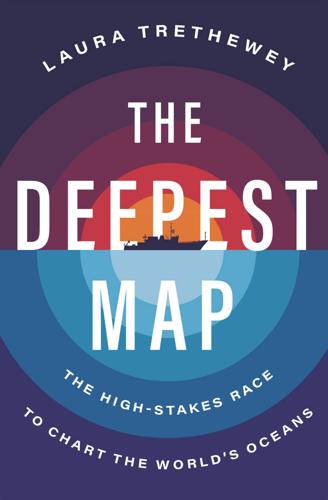
The Deepest Map
by
Laura Trethewey
Published 15 May 2023
(Prior to that, between two to seven ships crossed every year.)10 By 2040, the Arctic is expected to see a mostly ice-free summer, which will effectively open this shallow, uncharted ocean to commercial transit and development as never before. The ships are coming regardless of whether the Arctic Ocean is mapped or not. One of the worst environmental disasters in history happened in this part of the world in 1989 when the supertanker Exxon Valdez slammed into a reef off the coast of Alaska. Eleven million gallons of crude oil spilled into the pristine Prince William Sound, covering seabirds in toxic sludge and bankrupting the local fishery. The official cause of the accident was overwork and human fatigue, but what was left out of the report is how poorly charted the Arctic Ocean is.11 Less than a century earlier, a steamship crashed into the same reef and sat there abandoned for an entire decade, serving as a reminder to boaters to keep well away.12 In 2009, a safety tugboat, deployed precisely to avert another disaster in Prince William Sound, crashed into Bligh Reef and left a three-mile-long diesel oil slick shimmering on the water’s surface.
…
See also Puerto Rico Trench map of, 88 Pressure Drop itinerary and, 22, 23, 44, 47, 48 rift valley in, 71, 73, 74, 79–81, 91 spinning gyre of North Atlantic, 56 survey lines of, 84 Atlantis, myth of, 75 autonomous underwater vehicles (AUVs), 38 backscatter data, 38 Baker, Kukik, 134, 137, 139–40, 148 Ballard, Robert, 31–32, 54, 90, 124, 169, 200 Banks, Iain, 105 Barron, Gerard, 202, 205–6, 210–12 bathymetric maps, 38, 62, 95, 127–28, 149, 195 bathyscaphe, 200, 222–23 Beaman, Robin, 128, 149, 168 Bell Laboratories, 69, 79, 85, 124, 213 Benioff, Marc, 8 Berann, Heinrich, 85, 88 Bering Land Bridge, 177, 178 Bezos, Jeff, 13, 20, 237 Biden, Joe, 108 biomass, daily migration of, 36–37 Blue Origin, 224, 226, 237–38 Blue Planet II BBC series, 21 Bohan, Aileen, 63–64, 93–95, 97–98, 102, 220 Bongiovanni, Cassie on accuracy of depth measurements, 26–27, 112, 231–32 Aileen Bohan as assistant of, 63–64, 93–95, 97–98, 102, 220 Challenger Deep mapping and, 221, 231–32 education of, 7, 8–11, 60, 236 EM 124 multibeam sonar and, 21, 44, 45 employment search of, 7–8, 9, 11 family background of, 10 as Five Deeps Expedition seafloor mapper, 11, 14–15, 16, 20–21, 23, 30, 41–42, 45, 62–64, 105–6, 233–34 Java Trench mapping and, 220 media coverage of, 62–63 naming of seafloor features and, 110 personality of, 9, 10 public perception of seafloor mapping and, 90 Puerto Rico Trench mapping and, 45, 47–48, 55, 61, 97 Ring of Fire mapping and, 235–36 on satellite mapping, 19, 125 seafloor mapping expertise of, 15–17, 20, 24, 41, 45, 55, 62–63, 102, 155 Southern Ocean mapping of, 101–2 South Sandwich Trench mapping and, 94, 97–102 workstation on Pressure Drop, 41, 43, 44, 45, 47–48, 61, 62, 94, 97–102 Booth, Felix, 146 Branson, Richard, 11–12, 13, 22 Bridgewater Associates, 8 brine pools, 19 British Geological Survey, 111 Brown, Lloyd, 56, 103–4, 163–65 Buckle, Stuart, 43 Burelli, Thomas, 169n Cabot, Sebastian, 103 Caladan Oceanic Expeditions, 235–36 Calder, Brian, 142, 149, 153 Calico Early Man Site, Mojave Desert, 176 Cameron, James, 10, 12, 20, 43, 220–21, 231–32 Canadian Hydrographic Service (CHS), 144–45, 147, 150 canyons, 5, 17 Cape Town, South Africa, 92, 93, 99, 101 Caribbean Plate, 52 Carter, Howard, 175 cartography, history of, 84–85, 90–91 Casa de Contratación de las Indias, 56, 103 Cassini family, 163 Center for Coastal and Ocean Mapping (CCOM), University of New Hampshire Mariana Trench mapped by, 221 Larry Meyer on Cassie Bongiovanni’s mapping, 231 Larry Meyer on drones for ocean mapping, 152–53, 162 Nippon Foundation and, 59, 60 ocean mappers trained by, 7, 15, 20, 142 Challenger Deep deep-sea explorers in, 12, 13, 45, 74 Victor Vescovo’s dives in, 124, 221, 224, 230–31, 235, 237 Donald Walsh’s dive in, 12, 221–23, 231 Clarion-Clipperton Zone (CCZ), 193, 195, 202, 203–5, 210, 211, 213, 214 Clark, Barbara, 185, 187, 189 Clark, William, 192 Clarke, George, 78 climate change Arctic Ocean and, 131–33, 136, 137–38, 146–47 oceans sequestering carbon and, 206 Seabed 2030 Project and, 4, 129 seafloor mapping and, 58 Clipper Adventurer, 145 Clovis-first theory, 177, 178 Coffin, Mike, 107–9, 113, 122–23 Cold War, 56, 83, 118, 123, 125, 222, 228 Columbus, Christopher, 90–91, 103, 203 Commission on the Limits of the Continental Shelf (CLCS), 120, 146–47, 162, 214 Connon, Brian, 153, 160–61 Conrad, Joseph, 203 continental drift, 71–73, 75–76, 79–82, 85, 177 continental slope, 51 Cook Island, 94 Cooper, James Fenimore, 67 Cousteau, Jacques, 31, 55, 80–81, 88, 184 COVID-19 pandemic, 27–28, 29, 108, 148, 160, 207, 212, 234 Crystal Serenity, 145 Currie, Duncan, 212 Dalio, Ray, 8, 10, 21, 234 Dana, Richard Henry, Jr., 33 Darwin, Charles, 72 Data Centre for Digital Bathymetry (DCDB), 102–3 dead zones, 226–27 DeAngelis, Annamaria, 37–38 Decade of Ocean Science for Sustainable Development, 8 DeepGreen Metals, 210–11 Deep-Ocean Stewardship Initiative, 197 Deepsea Challenger, 12 Deep Sea Conservation Coalition, 212 deep-sea habitats, knowledge of, 3 Deep-Sea Podcast, The, 25 deep-sea sponges, 1–2, 204, 207 Desrochers, Julien, 133, 137, 139–40, 142–44, 147, 149 Diamantina Fracture Zone, 220 Dias, Bartolomeu, 90 Discovery Channel, 44, 62 Drazen, Jeffrey, 195, 205, 215 Dubro, Alec, 59 Ducie Island, 93 Dutch East India Company, 103 Earhart, Amelia, 26 Earle, Sylvia, 2, 31 East African Rift, 80 Eike, Roberta, 78 Eisenhower, Dwight D., 223 El Niño, 93 English Channel, 12 Esquete, Patricia, 203–4, 208, 214 Ever Given, 145 evolutionary biology, 75 Ewing, Harriet, 87 Ewing, W. Maurice “Doc,” 67–71, 72, 76, 78–80, 87–88 Exclusive Economic Zone (EEZ) mapping of, 34, 122–23, 147 maritime resources in, 28, 121–22, 237 exploration companies, private funding of, 13 Explorer (drone), 151–54, 160 Explorers Grand Slam, 11 Exxon Valdez, 132 Falconer, Robin, 57, 106 Falkor (research vessel), 8, 155, 168 Faught, Michael, 183–85 Fauna & Flora International, 207 Ferdinand, Franz, 165 Ferrini, Vicki, 116–17, 213–14 fiber-optic cable industry, 19–20 Fisher, Robert, 113–14 Five Deeps Expedition. See also Pressure Drop Cassie Bongiovanni as seafloor mapper for, 11, 14–15, 16, 20–21, 23, 30, 41–42, 45, 62–64, 105–6, 233–34 budget for, 20, 22–23, 46, 47 crew diversity criticized, 15 documentary of, 44, 46, 62, 101 itinerary adjustments of, 22–23, 219 Rob McCallum and, 11, 13, 14, 16, 62 multibeam sonar for, 20–21 organization of, 43 publicity of, 30–31 route of, 14–15 schedule of, 44 scientific aims of, 13, 44, 97–98, 223, 235–36 success of, 233 teamwork of, 99 technical problems of, 20, 22, 217 test dives of, 23 Victor Vescovo’s financing of, 13, 15, 17, 20, 22–23, 29, 31, 61 website of, 14, 20 flint knapping, 175 Florida Apalachee people of, 179–80 hurricanes of, 176, 191 Operation Timucua and, 186–87, 188 Page-Ladson sinkhole, 177–78 sand mining and, 189–91 seafloor discoveries of, 170–77, 179–86, 187, 188–89 Spanish treasure galleons and, 185, 186 Forrest, Andrew, 234 Franklin, Benjamin, 213 Franklin, John, 146 Galápagos Island, 97 gazetteers, 110, 110n General Bathymetric Chart of the Oceans (GEBCO), 55–61, 63, 89–90, 93, 104, 106, 118, 126, 239 Geographical Society of London, see Royal Geographical Society, London, England geography research, 78–79 Geological Survey of Canada, 81 Geosat satellite, 124–25 glacial isostatic adjustment, 138 Global Sea Mineral Resources, 217 Glomar Explorer expedition, 124 Google Maps, 17 GPS (Global Positioning System), 118, 134, 143, 172–73, 184 Great Britain, ocean mapping of, 74–75 Greenland, 75 Greenpeace, 196, 197, 199, 216 Grytviken, South Georgia Island, 14 Guam, 12, 14 Gulf of Mexico, 9 Gulf of Sidra, 9 guyots, 19, 51 Gwich’in people, 145–46 Hadal Zone, 51–52, 98, 101, 130, 220, 223 Hains, Denis, 150 Hall, John, 58–60, 126–27, 144, 150, 153 Hall, Stephen, 5, 84–85, 192, 240 Han, Hyun-Chul, 109, 123 Harley, J.
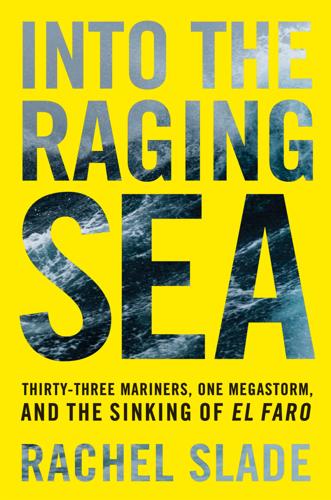
Into the Raging Sea
by
Rachel Slade
Published 4 Apr 2018
Tom was trained as a marine engineer and once served on ships laying cable around Puerto Rico, but most of his decades-long career has been spent solving complex mysteries for the US government. Surrounded by traces of the dead captured in black boxes, twisted hulls, oil spills, and mountains of data, Tom and his team track the human errors and engineering mistakes that lead to devastating losses. When describing his life, he uses headline cases—Deepwater Horizon or Exxon Valdez—to mark time the way most people use births, deaths, weddings, and anniversaries. Tom was given the job of leading the NTSB’s investigation of the El Faro mystery. Five days after the disappearance of the ship, Tom joined Neubauer aboard a plane from DC to Jacksonville. The US Coast Guard and the NTSB would be working together to gather information about El Faro, but they would issue separate reports.
…
See European Centre for Medium-Range Weather Forecasts Edmund Fitzgerald (ship), 260, 272–73 El Faro (ship) ABS’s oversights and, 362 age of, 15, 35 anemometer of dysfunctional, 72–73, 178, 187 autopilot alarm of, 178, 186 baffles of, 282 barometric pressure drop, 181, 186, 188, 192 bilge alarms of, 179–80, 340 boilers of, 152, 174, 180 cargo of, 7, 37, 165, 171–76, 182, 196–97 on collision course with Joaquin, 69–79, 121 collision with ocean floor, 5, 214 crane of, 12–13 crew list, 365–66 damage stability index of, 314 Davidson appointed captain of, 112–13, 120 delay leaving port, 8–9 in disrepair, 98, 152, 176 earlier names of (see Northern Lights (ship); Puerto Rico (ship)) elevator of, 14–15 engine of, 148–49, 150–52, 180–81, 187 English translation of name, 347 environmental standards and, 35, 116 EPIRB alert from, 210 fire dampers of, 314–15 fire pump of, 196–97 flooding of, 189–92, 195–97, 339–41 fuel costs of, 24 Glanfield’s analysis of casualty (see Glanfield, John) hearings on (see Marine Board hearings) Hearn’s fondness for, 35–36 insurance on, 34, 357 intoxicated crew member incident, 119–20 investigation of casualty (see investigation) lashings of, 25–26 last minutes on, 339–43 lifeboats of, 94, 95, 152, 173–74, 197, 247, 249, 359 El Faro (ship) listing of, 178, 182, 190, 198, 307, 308 lube system of, 182–83, 187–88 media coverage of casualty, 267–68 modifications of, 94–95, 171–74, 314, 359 number of casualties, 285, 348 officers of, 39, 125, 285–86 officially designated a major marine casualty, 263 oil level at departure, 183 onboard technology of, 16 pinger of, 269–70, 362 Polish contractors of, 60, 69, 70, 73, 304 propulsion lost by, 193, 195, 213, 308 reason for building, 143 remains of found, 249–51, 313 replacement of, 35 report findings on casualty, 356–60 returned to service, 37 scuttles of, 127–29, 181, 189, 192, 296, 359 search-and-rescue operation (see search-and-rescue operation) ship-in-a-bottle models of, 278 sinking of, 342–43 size of, 11 soul-searching in wake of casualty, 355–56 speed of, 11, 176 splash shape made by, 271, 312 travels into eye of Joaquin, 185–93, 352 unlicensed crew of, 20, 39–40, 117, 124–25, 285, 320 VDR of (see voyage data recorder) vulnerabilities of, 175, 313–15, 322 El Morro (ship) Davidson as captain of, 112 drug smuggling on, 32–34, 35, 37, 320 poor condition of, 35–37 Randolph’s service on, 60, 198 scrapping of, 176 El Salvador, 51 El Yunque (ship), 24, 132, 154, 268, 278, 294–97, 300, 304, 314, 356, 357–58 Davidson’s email to captain of, 71–72 in disrepair, 37, 176, 358 encounters remains of El Faro, 294–95, 297 during Joaquin, 100, 101–2 scrapping of, 358 speed of, 176 Emanuel, Kerry, 50 Emerald Express (ship), 211–12 emergency position-indicating radio beacon. See EPIRB Empire State (steamship), 325, 328 environmental regulations, 35, 115–16 EPIRB, 161, 205, 210, 273 Erika, Tropical Storm. See Tropical Storm Erika Essex Junto, 139 Estonia (ship), 91 European Centre for Medium-Range Weather Forecasts (ECMWF), 353–54 Exxon Valdez, 266 families, 266 Facebook page of, 267, 278 Glanfield’s gifts to, 278 Marine Board hearings and, 285–86, 321, 326 notification of, 229–39 reaction to end of search and rescue, 267 spiritual connection with loved ones, 345–49 TOTE’s settlement with, 288, 357 Fantome (schooner), 51 Fawcett, Keith, 296 Fisker-Andersen, Jim, 78, 118, 300–301 “flags of convenience,” 142 Florida, 124, 125, 203, 351 Franklin, James, 51–52 free surface effect, 281 fuel, 115–16, 148, 257 Fukushima nuclear plant meltdown, 170 George III, King of England, 138 Georgia, 203 Glanfield, John, 82–83, 85–86, 89, 92, 93, 277–82, 314 on downflooding angle, 278–79, 281–82 model-building hobby of, 277–78 tour of El Faro, 295 Global Forecast System, 353 global warming, 116 Gloria, Hurricane, 313 Gold Rush, 255 Gomorrah (Saviano), 32–33 Gonzales, Laurence, 273 GPS systems, 16, 18, 181, 185, 210 Great Bahama Bank, 22–23, 103 Great Inagua (GI), 206, 215–20, 248 Great Lakes, 272–73 Great Land (ship), 233 Green, Robert, 39, 40, 285, 347–48 Greene, Philip, 119–20, 302 Davidson interviewed by, 299 Marine Board hearing testimony of, 288–94 Griffin, Keith, 151, 180 Guatemala, 51 Gulf of Aden, 34 Gulf of Mexico, 23, 51, 132 Gulfstream IV, 52 Haiyan, Typhoon, 53 Haley, Paul, 32, 33, 153 Hamilton, Alexander, 139, 140, 254 Hamm, Frank, 102–5, 178, 195, 197–98, 285 Davidson’s encouragement of, 341–43 Davidson’s steering commands to, 186, 189, 190, 191, 192, 193 health problems of, 102 helmet of found, 347 Shultz’s discussion with, 126–27 Hamm, Rochelle, 102–3, 285, 347, 359 Hanjin, 34 Harvey, Hurricane, 351 Hawaii, 170 hearings.
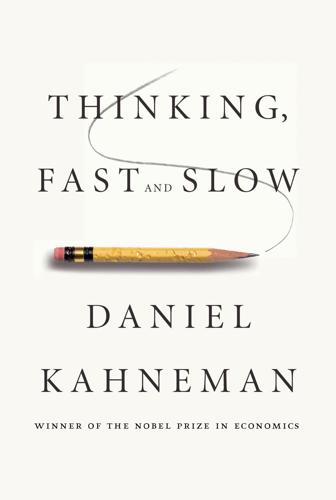
Thinking, Fast and Slow
by
Daniel Kahneman
Published 24 Oct 2011
Because System 1 represents categories by a prototype or a set of typical exemplars, it deals well with averages but poorly with sums. The size of the category, the number of instances it contains, tends to be ignored in judgments of what I will call sum-like variables. Participants in one of the numerous experiments that were prompted by the litigation following the disastrous Exxon Valdez oil spill were asked their willingness to pay for nets to cover oil ponds in which migratory birds often drown. Different groups of participants stated their willingness to pay to save 2,000, 20,000, or 200,000 birds. If saving birds is an economic good it should be a sum-like variable: saving 200,000 birds should be worth much more than saving 2,000 birds.
…
watch less television: Gabriel Lenz and Chappell Lawson, “Looking the Part: Television Leads Less Informed Citizens to Vote Based on Candidates’ Appearance,” American Journal of Political Science (forthcoming). absence of a specific task set: Amos Tversky and Daniel Kahneman, “Extensional Versus Intuitive Reasoning: The Conjunction Fallacy in Probability Judgment,” Psychological Review 90 (1983): 293–315. Exxon Valdez: William H. Desvousges et al., “Measuring Natural Resource Damages with Contingent Valuation: Tests of Validity and Reliability,” in Contingent Valuation: A Critical Assessment, ed. Jerry A. Hausman (Amsterdam: North-Holland, 1993), 91–159. sense of injustice: Stanley S. Stevens, Psychophysics: Introduction to Its Perceptual, Neural, and Social Prospect (New York: Wiley, 1975).
…
Statistical Prediction: A Theoretical Analysis and a Review of the Evidence (Meehl) Clinton, Bill Coelho, Marta coffee mug experiments cognitive busyness cognitive ease; in basic assessments; and illusions of remembering; and illusions of truth; mood and; and writing persuasive messages; WYSIATI (what you see is all there is) and cognitive illusions; confusing experiences with memories; of pundits; of remembering; of skill; of stock-picking skill; of truth; of understanding; of validity Cognitive Reflection Test (CRT) cognitive strain Cohen, David coherence; see also associative coherence Cohn, Beruria coincidence coin-on-the-machine experiment cold-hand experiment Collins, Jim colonoscopies colostomy patients competence, judging of competition neglect complex vs. simple language concentration cogndiv height="0%"> “Conditions for Intuitive Expertise: A Failure to Disagree” (Kahneman and Klein) confidence; bias of, over doubt; overconfidence; WYSIATI (what you see is all there is) and confirmation bias conjunction fallacy conjunctive events, evaluation of “Consequences of Erudite Vernacular Utilized Irrespective of Necessity: Problems with Using Long Words Needlessly” (Oppenheimer) contiguity in time and place control cookie experiment correlation; causation and; illusory; regression and; shared factors and correlation coefficient cost-benefit correlation costs creativity; associative memory and credibility Csikszentmihalyi, Mihaly curriculum team Damasio, Antonio dating question Dawes, Robyn Day Reconstruction Method (DRM) death: causes of; life stories and; organ donation and; reminders of Deaton, Angus decisions, decision making; broad framing in; and choice from description; and choice from experience; emotions and vividness in; expectation principle in; in gambles, see gambles; global impressions and; hindsight bias and; narrow framing in; optimistic bias in; planning fallacy and; poverty and; premortem and; reference points in; regret and; risk and, see risk assessment decision utility decision weights; overweighting; unlikely events and; in utility theory vs. prospect theory; vivid outcomes and; vivid probabilities and decorrelated errors default options denominator neglect depression Detroit/Michigan problem Diener, Ed die roll problem dinnerware problem disclosures disease threats disgust disjunctive events, evaluation of disposition effect DNA evidence dolphins Dosi, Giovanni doubt; bias of confidence over; premortem and; suppression of Duke University Duluth, Minn., bridge in duration neglect duration weighting earthquakes eating eBay Econometrica economics; behavioral; Chicago school of; neuroeconomics; preference reversals and; rational-agent model in economic transactions, fairness in Econs and Humans Edge Edgeworth, Francis education effectiveness of search sets effort; least, law of; in self-control ego depletion electricity electric shocks emotional coherence, see halo effect emotional learning emotions and mood: activities and; affect heuristic; availability biases and; in basic assessments; cognitive ease and; in decision making; in framing; mood heuristic for happiness; negative, measuring; and outcomes produced by action vs. inaction; paraplegics and; perception of; substitution of question on; in vivid outcomes; in vivid probabilities; weather and; work and employers, fairness rules and endangered species endowment effect; and thinking like a trader energy, mental engagement Enquiry Concerning Human Understanding, An (Hume) entrepreneurs; competition neglect by Epley, Nick Epstein, Seymour equal-weighting schemes Erev, Ido evaluability hypothesis evaluations: joint; joint vs. single; single evidence: one-sided; of witnesses executive control expectation principle expectations expected utility theory, see utility theory experienced utility experience sampling experiencing self; well-being of; see also well-being expert intuition; evaluating; illusions of validity of; overconfidence and; as recognition; risk assessment and; vs. statistical predictions; trust in expertise, see skill Expert Political Judgment: How Good Is It? How Can We Know? (Tetlock) Exxon Valdez oil spill eyes, pupil dilation in face reading fairness fallacies; conjunction; narrative; planning; sunk-cost familiarity Far Side, The (Larson) fast and frugal heuristic fast thinking fatigue fear Fechner, Gustav feedback Feller, William financial crisis of 2008 fi nancial advisers and forecasters firefighters first impressions Fischhoff, Baruch flight instructors flood monitor Florida effect flow flowers syllogism Flyvbjerg, Bent focus focusing illusion fonts forecasts, see predictions and forecasts football game Ford Motor Company formulas; algorithms; Apgar scores; hostility to; for interviews; multiple regression formulation effects Fortune fourfold pattern; in legal cases Fox, Craig Fox, Seymour frames, framing; in Asian disease problem; in child exemption problem; in disclosures; emotional; fuel economy and; good; in KEEP-LOSE study; organ donation and; regulations on; in survival-mortality experiment; in ticket problem Frederick, Shane Freedman, David freedom Free to Choose (Friedman) frequency representation Frey, Bruno Friedman, Milton frowning; availability heuristic and; representativeness and gains Galinsky, Adam Gallup-Healthways Well-Being Index Galton, Francis gambles; bundling of; certainty effect and; emotional framing in; loss aversion in; lottery; mixed; and outcomes produced by action vs. inaction; possibility effect and; psychological value of; regret and; simple; St.
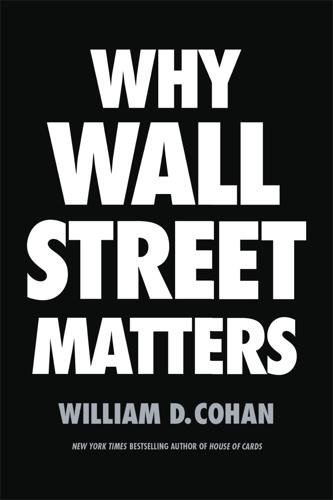
Why Wall Street Matters
by
William D. Cohan
Published 27 Feb 2017
One of the final innovations to emerge from this period of remarkable financial alchemy came in 1994, at the still venerable, if not nearly so powerful as it once was, J.P. Morgan & Co. Exxon, a longtime client, wanted a $5 billion line of credit to cover potential liabilities related to the massive 1989 oil spill from the Exxon Valdez oil tanker in Prince William Sound, Alaska. The conundrum? The bank did not want to disappoint Exxon, but neither did it want to tie up so much capital in one marginally profitable, very risky loan. That’s when the British-born Blythe Masters, then twenty-five years old, came up with the idea of off-loading the risk of the loan to a third party, in exchange for a fee, thus skirting the regulatory requirement that J.P.

Whole Earth Discipline: An Ecopragmatist Manifesto
by
Stewart Brand
Published 15 Mar 2009
Three fishery-preserving strategies that show promise are: ocean reserves that ban all fishing in designated areas and allow stocks to recover; a system of catch shares called “individual transferable quotas,” which has already saved the halibut fishery in Alaska; and carefully managed mariculture. As Jacques Cousteau told me in 1976, “Fishing is hunting. . . . It must be eliminated completely and replaced by farming if we are to be civilized. What we call civilization originated in farming. We are still barbarians in the sea.” Degrees of Disaster, the close-up story of the Exxon Valdez oil spill, is replete with awkward truths that didn’t make it into the warring scientific reports so sumptuously funded by both sides of the controversy. The massive cleanup efforts did more environmental harm than the spill itself, though they did provide an economic boom for the Prince William Sound region.
…
Earth Liberation Front Earthrise (Poole) E. coli ecological inheritance Ecologist Economist Eco-pragmatism (Farber) ecosystem engineering see also geoengineering ecosystem services ecotechnology Ecotrust Ehrlich, Paul Eighth Day of Creation, The (Judson) electric power nuclear power and elephants Elmqvist, Thomas EMBO Reports Empty Cradle, The (Longman) “Encyclopedia of Life, The” (Wilson) endangered and threatened species Ending the Energy Stalemate (Ehrlich) End of Nature, The (McKibben) endosymbiotic theory Endy, Drew Energy Policy Act (2005) environment, carrying capacity of environmental movement engineers and Nazism and politics and pragmatism and quality of judgment and romanticism and science and Environmental Protection Agency (EPA), U.S. Essay on the Principle of Population, An (Malthus) ETC Group Europe genetic engineering and urbanization in see also specific countries European Space Agency European Union (EU) eutrophication evolution Expert Political Judgment (Tetlock) “Extreme Genetic Engineering” (Thomas) Exxon Valdez Fagan, Brian famines Farber, Daniel Farmers of Forty Centuries (King) farmers’ markets favelas “Feasibility of Cooling the Earth with a Cloud of Small Spacecraft Near the Inner Lagrange Point (L1)” (Angel) Federoff, Nina Fedrizzi, Rick feedback loops fertilizers Fewer (Wattenberg) Fischer, Joschka Fisher, Brian fisheries “Fission Division, The” (Mark) Flannery, Tim Flettner sails Florida, Richard food, genetic engineering and Food and Drug Administration (FDA), U.S.
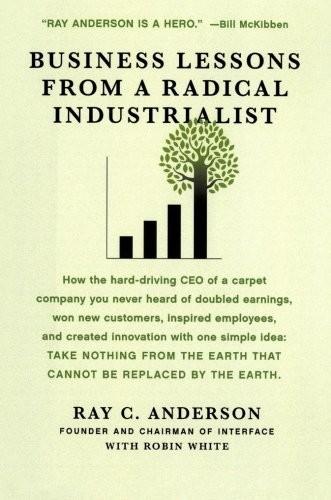
Business Lessons From a Radical Industrialist
by
Ray C. Anderson
Published 28 Mar 2011
If the old business practices are what got you into a fix, they probably won’t be much help in getting you out of it. Which business practices am I talking about? The ones that focus on producing, delivering, and discarding ever greater quantities of goods as a measure of our prosperity. You can see that something is just not right in the numbers when you realize that both Hurricane Katrina and the Exxon Valdez oil spill added to our gross domestic product. When a child falls so ill she must be taken to the emergency room (because she has no health insurance and no doctor), she’s increasing our GDP, too. How can any of that possibly make sense? If you bother to look, you will notice that the whole game of modern commerce is riddled with economic distortions that make it hard—even impossible—for markets to see, and respond to, the true costs of all that frantic producing and delivering and discarding.
…
See companies Covey, Stephen Craigavon, Northern Ireland, Interface facility creation care credit card debt curbside recycling programs customers attracted by environmental claims listening to cycles, nature’s way dams Dartmouth College debt Deering-Milliken deforestation Déjà vu carpet Dell Dell’Orco, Sergio dematerialization desert brine shrimp Diamond, Jared, Collapse dikes, failure of Dillon-Ridgley, Dianne dioxins Disney Corporation Diversity Connect Dodd, Bobby doing well by doing good dominion over the earth (biblical) Dow Chemicals Drake, Edwin Duke Energy DuPont Earth (planet) as Biblical garden danger faced by Eco Dream Team ecology Ecometrics economic logic economics, courses in Ecosense efficiency and fairness, linked and loss of resilience efficiency measures, useful, but limiting effluent pipes cutting emissions from inventory of inventory of emissions from Ehrlich, Paul and Anne, environmental impact equation of Einstein, Albert Eisenhower, Dwight electric transmission system electric utility industry embodied energy emissions, cutting Emory University end-of-pipe solutions Enel Latin America Energia Global energy clean (including solar) cutting back on use of government subsidies to price of renewable world demands engineering schools, sustainability courses in Enron entrepreneurship go/no-go decision point of training for Entropy carpet line entropy law environment, stewardship of environmental education environmental injustice zones environmentalism false claims suspicion of environmental laws and regulations Environmental Protection Agency environmental responsibility, and profit Epson Portland erosion, and floods ethanol fuels ethical sustainability ethics Evangelical Climate Initiative Evergreen Service Agreement evidence, waiting for last scrap of, before taking precautions externalities extracted minerals, must not increase in nature Exxon Valdez oil spill factories called “plants” (strangely) close to markets fairness, economic and efficiency, are linked Fairworks program faith farmers subsidies to Fastforward to 2020 program Fetz, Charles Fiji Water filtration financial industry, innovative instruments for energy saving financial meltdown of 2008 fish, polluted fishing industry Fitzgerald, Patrick Five P’s floods Fonterra food chain, concentration of contaminants in Ford, Henry forests, value of forever wild Forster, Piers fossil fuels counted as waste in Interface’s metrics dependence on end of age of energy from, not sustainable history of use of Framework Convention on Climate Change (UN) Friedman, Milton Frito-Lay division Fritts, Charles fuel economy mandates future embrace it (or be left behind) showing in the headlights future generations needs of their view of our present handling of the three crises Gallup Gandhi, Mahatma garden, Earth as (in Bible) Genentech General Electric (GE) Georgia Tech Institute for Sustainable Technology and Development (ISTD) Institute of Sustainable Systems (ISS) Germany GlasBac GlasBac RE global climate change doing nothing about, evil of skepticism about globalization, absurd supply chains in Global ReLeaf program global warming.
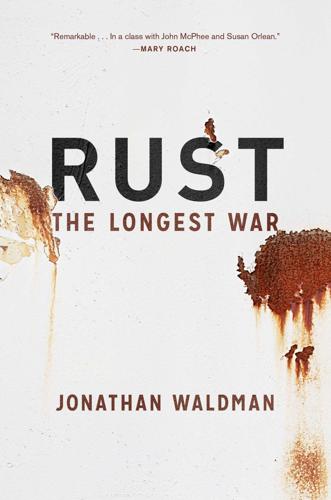
Rust: The Longest War
by
Jonathan Waldman
Published 10 Mar 2015
“We thought we wouldn’t have a problem with corrosion,” Alyeska’s pigging engineer at the time said, “but our world changed when the pigs told us otherwise.” Nineteen eighty-nine was rough from the outset. First, in January Alyeska dug up the pipe and installed thirty sleeves. Then, in March there was the Exxon Valdez oil tanker spill. Cleanup notwithstanding, it had little to do with Alyeska. If anything, it revealed the merits of shipment by pipelines over barges—but the result was increased scrutiny and ill will. In June Alyeska ran its first high-resolution ultrasonic pig. It was made by NKK, and it could measure 10 percent wall-thickness loss.
…
Severe corrosion in one of BP’s North Slope feeder lines caused a quarter-inch hole, and through it, five thousand barrels of crude spilled onto the tundra. Where Alaskans used to joke that BP stood for Big Provider, now they said it stood for Broken Pipeline, or Bad People, or even Bureaucratic Pandemonium. An Alyeska employee told me that BP was running a sprinkler system rather than a pipeline system. As with the Exxon Valdez, Alyeska had nothing to do with the goof-up, but it felt the ramification: heightened attention to corrosion. Under the spotlight, Alyeska decided to send a smart pig through TAPS immediately. That summer, Alyeska had just celebrated its thirtieth anniversary, having shipped more than 15 billion barrels of oil.
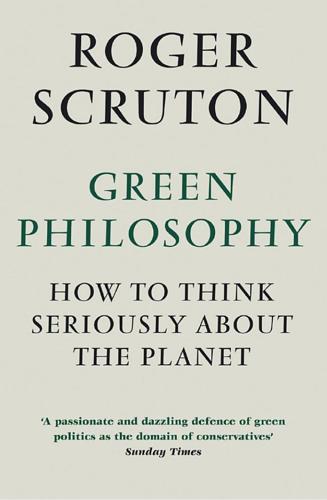
Green Philosophy: How to Think Seriously About the Planet
by
Roger Scruton
Published 30 Apr 2014
It is even called ‘enterprise liability’ in American law.171 Moreover, the case illustrates an important principle, which is that an active law of torts can protect the environment more effectively and more rapidly than any normal action by the legislature, provided only that there are property holders to act as plaintiffs, who can legitimately claim that the costs of some damaging activity have been passed on to them. This was how the notorious case of the Exxon-Valdez oil spill on the Alaskan coast was resolved, with Exxon compelled to assume the costs of restoring a precious habitat to its previous condition.172 The comparable case of the 2010 BP spill in the Gulf of Mexico was dealt with similarly, with BP admitting liability, and preparing to meet costs that may very well exhaust its reserves.
…
S., ref1 Emerson, Ralph Waldo, ref1, ref2, ref3 Empson, Sir William, ref1 endangered species legislation, ref1 endowment effect, ref1n England, ref1, ref2, ref3, ref4, ref5, ref6, ref7, ref8, ref9 English Law, ref1, ref2, ref3 Enlightenment, ref1, ref2, ref3 enterprise liability, ref1 entropy, ref1, ref2 Environmental Protection Agency (US), ref1, ref2, ref3, ref4, ref5, ref6, ref7 Epictetus, ref1 equity, ref1, ref2, ref3, ref4, ref5, ref6f Esterson, Aaron, ref1n Etherington, John, ref1 ethics, ref1, ref2, ref3, ref4 European Court of Human Rights, ref1, ref2 European Court of Justice, ref1, ref2 European Union, ref1, ref2, ref3, ref4, ref5, ref6, ref7, ref8, ref9, ref10, ref11, ref12, ref13, ref14, ref15, ref16, ref17, ref18 Evelyn, John, ref1, ref2, ref3, ref4 evolutionary psychology, ref1, ref2 externalising costs, ref1f, ref2, ref3, ref4, ref5, ref6f, ref7 externalities, ref1, ref2, ref3, ref4 Exxon-Valdez case, ref1, ref2 Factory Acts (UK), ref1 factory labour, ref1 Fairlie, Simon, ref1, ref2n, ref3 Family Farmers Association (UK), ref1 Fannie Mae and Freddie Mac, ref1 fatalism, ref1 Fattal, Antoine, ref1n Federal Emergency Management Agency, ref1 Feisbach, Murray, ref1n Fergusson, Adam, ref1n fisheries, ref1, ref2 Fleming, James Rodger, ref1n Food and Drug Administration (US), ref1 Food Family Farming Foundation (US), ref1 foot and mouth disease, ref1 Foreman, David, ref1 Forestry Commission (UK), ref1 forests, ref1, ref2, ref3, ref4 Forster, E.
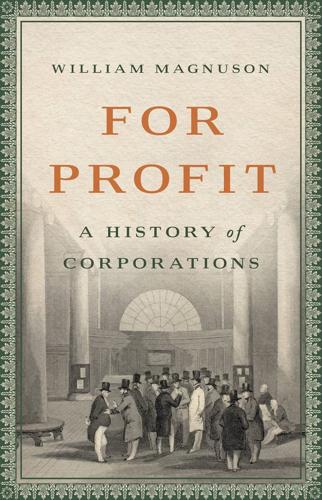
For Profit: A History of Corporations
by
William Magnuson
Published 8 Nov 2022
Friedman’s article was deeply influential in policy circles and led to renewed criticism of an already-unpopular group: the oil companies.10 It is hard to think of a class of companies so deeply reviled as Big Oil. In the minds of many, the very term “oil company” is synonymous with avarice, corruption, and environmental destruction. Oil companies are eternally connected with such disasters as the Exxon Valdez oil spill off the coast of Alaska, the Deepwater Horizon spill in the Gulf of Mexico, and global warming. They are accused of bolstering up kleptocrats and dictators around the world in return for priority access to their oil reserves. And somehow, despite all these problems, they remain some of the most profitable companies on earth.
…
The so-called Lucas Gusher at Spindletop in Texas, for example, shot out one hundred thousand barrels of oil a day and was only capped after nine days of effort. Exxon’s own strike at Baba Gurgur in Iraq in 1927 flowed at the rate of ninety-five thousand barrels a day. But it was one thing when oil leaked on the ground, where it would more or less stay where it fell. It was another when it happened at sea. In 1989, the oil tanker Exxon Valdez, carrying a load of oil that had been piped from Prudhoe Bay to the port at Valdez, Alaska, struck a reef in Prince William Sound. The resulting spill, estimated at around 10.8 million gallons of crude oil, spread quickly, lapping ashore on rocky beaches for hundreds of miles surrounding the area.
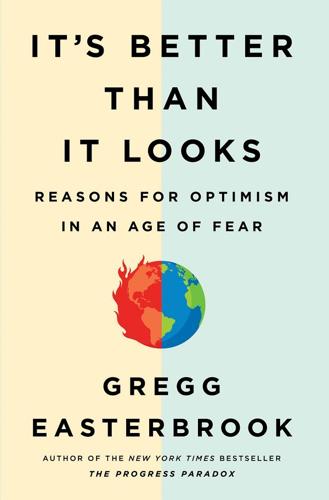
It's Better Than It Looks: Reasons for Optimism in an Age of Fear
by
Gregg Easterbrook
Published 20 Feb 2018
Watching the bald eagle soar did not make me feel complacent regarding the natural world, rather, made me feel that greenhouse gases can be brought to heel, just as other environmental problems have been. Climate change reforms will be the subject of a coming chapter. Here, let’s contemplate why nature did not collapse, despite ever more people consuming ever more resources. Man-made damage to nature can be atrocious. Think of the Exxon Valdez oil spill, which destroyed forever the wildlife in Prince William Sound, Alaska. At least that’s what was said in 1989 when the tanker struck Bligh Reef. Today most sea and intertidal life in Prince William Sound has returned to pre-spill numbers, while the sound’s combination of beauty and biology makes it a popular destination for whale-watching tours.
…
See war and combat Comey, James, 184, 217 Coming Apart (Murray), 89–90 communism, 66, 164–165 economy and, 174 industrial production and, 166–167 Communist Manifesto (Marx and Engels), 4–5 conservation of energy principle, 138 constitutions, 123–124 corruption, 178, 193 in Brazil, 176–177 construction contracts and, 181 internet and, 181–182 Nixon and, 179 in US, 179–181 Cowen, Tyler, 263, 264 crime capital punishment for, 116, 155–156 cash bail for, 115 cell phone and, 113–114 in Chicago, 112–113 Clinton, B., crime bill, 110–111 decline of, 109–111, 120, 137–139 global rates of, 106, 111 law enforcement and, 110–115 lead and violent, 111–112 media and, 105, 107 political campaigns and, 105–106 sentencing for, 115–116 violent, 106 See also terrorism crime-boss government, 182 The Culture of Narcissism (Lasch), 84 death air pollution and, 30 capital punishment, 116, 155–156 of law enforcement officers, 115 leading causes in US of, 24 by prescription drugs, 34 self-inflicted, 35 technology and workplace, 155 traffic deaths, 28, 142–143, 145–146 Deaton, Angus, 82 The Decline of the West (Spengler), 197, 198 declinism, 210, 285 academia and, 201 aging and, 203 anecdotes and, 218–220 Big Sort communities and, 222–223 blame and identity groups and, 218 blame-Washington attitude and, 207–209 Brexit referendum and, 204, 209, 217 freedom of association and, 222–223 history of panics of, 200 homogamy and, 223 Kaus on, 223–224 logic of, 92 luck and, 217–218 media and, 202 national bookkeeping switcheroo and, 208 natural selection and, 202 Obama and, 200–201, 221 opinionization of America and, 214–215 Plato and, 202–203 politics and, 84, 200–202, 206–209, 220–222 power and, 221 religious attendance and, 222 Sanders and, 84, 201–202 Sharkey on, 224–225 smartphones and, 212 Sputnik and, 200 victimhood and, 204–205, 217 Western civilization and, 201 See also Facebook and social media; Trump, Donald DeConto, Robert, 233–234 deindustrialization, 29 democracy China and, 170 creativity and, 167 Diamond, L., on, 165–166, 178, 183–184, 185–186 dictatorship and, 164–166 economy and, 167–168, 170, 173–174, 193 education and, 169–170 ethics and, 174 freedom of thought and, 168–169 internet and, 175–176 inventions and inventiveness in, 172–173 recession of, 165 short-selling strategy for, 175 slavery and oppression and, 174–175 Trump lying and, 184–185 World War I and, 170–171 World War II and, 171–173 See also corruption developing world positive change in, 17, 18 poverty in, 20, 280 sanitation infrastructure in, 30 traffic deaths in, 142–143 Diamond, Larry, 165–166, 178, 183–184 two-party duopoly for, 185–186 dictatorship, 193 Carnation Revolution and, 165 coup d’état and, 166 democracy and, 164–166 education and, 169 internet and, 175–176 World War II and, 171–173 dietary habits, of West, 25, 116 disability, 249, 257 education and, 37 veterans and, 36–37, 258 disease in Africa, 25, 39 avian and swine flu, 22 chemical and biological weapons and, 26–27 Ebola, 23, 25 films and, 28 influenza pandemic, 27–28 malaria, 39 media negativity and, 24–25 MERS, 23 mosquitoes and, 39 news coverage and, 24–25 obesity as, 5, 26, 35 smoking and, 24 unstoppable contagion, 27, 28 vaccinations and, 25, 39–40 weight gain and metabolic syndrome, 25–26 See also public health Dodd-Frank Act, 92–93 Dust Bowl, 5 dynamism catastrophism and, 20–21, 221, 283 food production and, 21 East of Eden (Steinbeck), 17–18, 58, 134 Easy Rider (movie), 198, 199 Ebola, 23, 25 echo chamber, 215–216 economy, 209–210 bulk transportation and, 80–81 buying power and, 85–86, 87, 246, 249 Clinton, H., on, 67 coal mining and, 61, 76–77, 233 collapse anxiety and, 68 communism and, 174 comparative advantage and, 79–80 control and, 65–66 currency and, 69 democracy and, 167–168, 170, 173–174, 193 Dodd-Frank Act and, 92–93 education and, 169 fascism and, 66 Feldstein on, 91 globalization and, 82 golden age of, 69–70 Great Recession and, 64, 68, 97 inequality and, 84–85 inflation and, 87 infrastructure and, 93–95 Keynes on, 98–99 marriage and, 267, 268 media negativity and, 77, 79, 87–88 modern monetary theory and, 96 Panasonic and, 68–69 paper mills and, 78–79 Piketty on, 84–85 predictions and, 64 pretax income and, 84–85, 91 regulations of, 92–93 retirement economics, 31, 273–274 slow growth and, 90–92 Soviet and American, 167 state pension accounts and, 97–98 trade boosting, 79, 245–246 Trump and, 70–71 US domestic production and, 77–78 US GDP and, 84, 90–91 war and, 93, 132–134 Washington Consensus and, 66–67 Western living standards and, 88 See also market economy; middle class, US; national debt, US education, 280 book reading and, 271 in China, 170 college as, 269–271 democracy and, 169–170 disability and, 37 economy and, 169 immigrants and, 269–270 jobs and, 89–90 longevity and, 37–38 marriage and, 267 public school system and, 38, 269 skilled trades and, 270 wage and, 89–90 The Education of Henry Adams (Adams), 197, 198 Ehrlich, Paul, 5 elections. See voting and elections, US The End of Equality (Kaus), 223–224 Engels, Friedrich, 4–5 Enlightenment system, 166–167, 197, 283 environmental threats acid rain as, 45–46, 49, 242 deforestation as, 44–45 environmental law and, 62–63 Exxon Valdez oil spill as, 43 flaring natural gas as, 45–46 improvements of, 42 of 1970s, 41 volcanoes as, 43, 278–279 See also resource depletion Essay on the Principle of Population (Malthus), 5 European Union, 51–52, 126–127, 133 Facebook and social media anecdotes and, 218–220 bad news and, 214 declinism and, 210–211, 213 as echo chamber, 215–216 fact checking and, 213, 220 FOMO and, 213 hyperzoned worlds and, 216 initial purpose of, 211–212 opinionization of America and, 214–215 smartphones and, 212 Farr, William, 266 fascism, 66, 164 Fear of Missing Out (FOMO), 213 federal budget, US, 103 Medicare and, 101–102 military spending and, 121 Social Security and, 36, 98, 102 welfare and subsidies for, 101 Feldstein, Martin, 91 feudalism, 66, 122 Fillon, François, 178 FOMO.
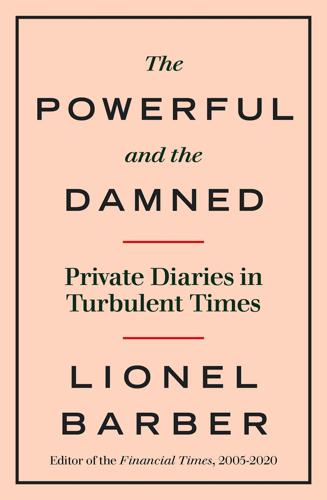
The Powerful and the Damned: Private Diaries in Turbulent Times
by
Lionel Barber
Published 5 Nov 2020
TUESDAY, 20 APRIL An explosion at a BP-operated oil rig called Deepwater Horizon in the Gulf of Mexico has killed eleven people and sent millions of gallons of oil into the coastal waters off Louisiana. My mind flashes to our award-winning investigation into BP’s poor safety record in the US. This ‘blowout’ accident is on a different scale, more like the Exxon Valdez spill. Exxon Valdez altered attitudes to environmental safety for a generation (and, incidentally, made the future Exxon Mobil combination a better, more safety-conscious company). This is a huge story for the FT: one of Britain’s most important companies is in deep trouble in America. I order extra reporters to be deployed.
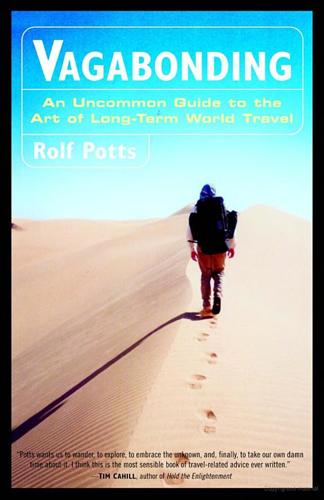
Vagabonding: An Uncommon Guide to the Art of Long-Term World Travel
by
Rolf Potts
Published 24 Dec 2002
And while his later travels took him to budding American outposts such as New Orleans and Denver, it is this celebration of simple movement and possibility that gives “Song of the Open Road” its visceral and inclusive energy: To see nothing anywhere but what you may reach it and pass it, To conceive no time, however distant, but what you may reach it and pass it, To look up or down no road but it stretches and waits for you, To know the universe itself as a road, as many roads, as roads for traveling souls. CHAPTER 3 From all your herds, a cup or two of milk, From all your granaries, a loaf of bread, In all your palace, only half a bed: Can man use more? And do you own the rest? — ANCIENT SANSKRIT POEM Keep It Simple In March 1989, the Exxon Valdez struck a reef off the coast of Alaska, resulting in the largest oil spill in U.S. history. Initially viewed as an ecological disaster, this catastrophe did wonders to raise environmental awareness among average Americans. As television images of oil-choked sea otters and dying shorebirds were beamed across the country, pop environmentalism grew into a national craze.
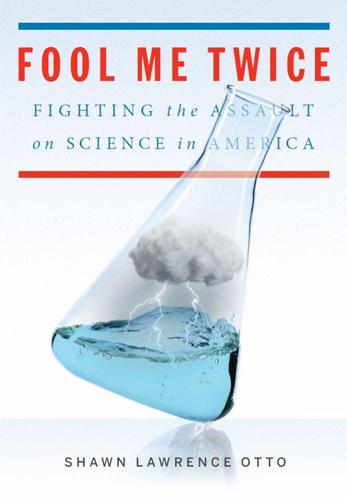
Fool Me Twice: Fighting the Assault on Science in America
by
Shawn Lawrence Otto
Published 10 Oct 2011
These kinds of vehicles cause private interests to internalize the risks they are undertaking and recognize them ahead of the fact, instead of dealing with them solely through law and litigation afterward—an idea that has been developing since the early 1980s as a market-based, more efficient alternative to the “command and control” method of law and litigation.29 The latter system is the one we currently use for mitigating environmental damage. It’s inefficient because it doesn’t motivate prevention, it requires costly government monitoring of behavior, it shifts the burden of proof to the public, and it seeks reparations only after the damage is done. The Exxon Valdez oil spill is a case in point: Litigation took decades to make it through the courts and was ultimately resolved for a fraction of the actual loss. A year after the Deepwater Horizon spill, during which BP CEO Tony Hayward said, “We will make this right,” the marshes were dead, dolphins were spontaneously aborting by the score, and the Gulf fishing industry was deeply threatened.
…
See also Climate change Environmental risks, covering, 265–67 Equality, 120–21 Ethics, 14–15, 25, 78–79, 93, 97, 101–2, 299, 302–3 Europe, 13, 261–62 Evangelical movement, 107–11 Evolution alternative theories to, 15, 18, 164–70, 178, 184–85 antiscience politics and, 60, 63–65 Bachmann and, 165–69 biology and, 164 contentiousness of, 163–64 Darrow and, 65 in Dover (Delaware) school, 173 facts and, 44, 164, 167 framing question about, 176–77 importance of teaching, 184–85 McPherson and, 63–65 medicine and, 164–65 Olson documentary discussing, 289 other science issues and, linking to, 178 Palin and, 165 public sentiment and, 173 Scopes Monkey Trial and, 60, 64–65, 164 Scott (Eugenie) and, 179–80 surveys about, 174–76 sweet spot in politics and, 174 theory, 44, 167 Westphal and, 184 Externalities, 253 Exxon Valdez oil spill lawsuit, 266 F Fairness doctrine, 143–46 Fallout shelters, 84–85 Falsifiability of theory and, 278–79 Feedback loop, 286 Feely, Richard, 263–65 Feinberg, Matthew, 283–85 Ferris, Timothy, 30, 38, 56 Feyerabend, Paul, 121–22 Feynman, Richard, 177, 273 Field-dependent personalities, 144–45 Field-independent personalities, 144–45 Fire, concept of, 118–19 Fish, Stanley, 130, 312 Fitzgerald, F.

Masters of Management: How the Business Gurus and Their Ideas Have Changed the World—for Better and for Worse
by
Adrian Wooldridge
Published 29 Nov 2011
Some consultancies sell nothing but CSR: a group called the Ethical Corporation provides “business intelligence” on CSR to more than three thousand multinational companies, publishes a CSR-themed magazine and website, puts on a huge conference every year, and compiles an ever-expanding library of case studies on corporate irresponsibility, including studies of Exxon Valdez, Toyota, and McDonald’s.7 There are CSR performance indexes (such as the Dow Jones Sustainability Index); CSR professorships (more than half of U.S. MBA programs require their students to know something about the subject); CSR websites, newsletters, and professional organizations; and year in and year out, hundreds of CSR conferences, discussion groups, and other jamborees.
…
See Electronic Data Systems The Effective Executive in Action (Drucker), 76 Eisner, Michael, 298, 302 Electrolux, 275 Electronic Data Systems (EDS), 62, 258 Eli Lilly, 244 Employees contract workers, 343–344 exploitation of, 177 freelancers, 344 knowledge workers, 233–249 paid leave, 235 salaries of MBAs, 60–61 self-management, 83–85 Employees First, Customers Second (Nayar), 67 Encarta, 124 The End of the Nation State (Ohmae), 277 Engels, F., 347 Enron, xv, 10, 165, 261, 297, 309, 364, 365, 415 Entrepreneurs, 136–137, 169–201 anchor-firm model, 198 crisis-driven model, 198 definition of, 193–194 European egalitarianism and, 177–178 global spread of, 178–179, 186–188 Internet and, 188 rise of, 171–173 social, 47–48, 417 success of, 193–201 Environmental Defense Fund, 45 ePrize, 235, 353 Erlich, Craig, 235 Ernst & Young, 354 Europe, business schools in, 55–56 European Union, 41, 176, 345 Eustace, Alan, 383 Executives. See also Chief executive officer salaries and bonuses, 299–303 Exxon, 299 Exxon Valdez, 34 EyeView, 187 Facebook, 147, 173, 184, 200 Fad Surfing in the Boardroom: Managing in the Age of Instant Answers (Shapiro), xiii Fairbank, Rich, 377 Fairlie, Henry, 235–236 Fannie Mae, 298, 299 Fanon, Frantz, 226–227 Fast Company, 118, 150–151 FasTracKids, 58 Federal Express, 260 The Feminine Mystique (Friedan), 345 Ferrazzi, Keith, 54, 404 Fiat, 91 Films, 118, 157, 332 corporate-bashing, 35 humanistic, 80 knowledge workers and, 238–239 Filos, David, 358 Financial Times, 2, 14, 58, 60, 414 Fiorina, Carly, 298, 309 Firms of Endearment (Sisodia, Wolfe, and Sheth), 262 The First 90 Days (Watkins), 308 First Break All the Rules (Buckingham), 65 Five Minds for the Future (Gardner), 133, 137 Five-year plans, 4 Flickr, 157 Florida, Richard, 113, 129–135, 384 Follett, Mary Parker, 79 Forbes, 52 Forbes 100, 266 Ford, Henry, 4, 174, 207, 211, 233–234 Ford, Henry II, 228 Ford Motor Company, 43, 82, 106, 234, 273, 282 Foreign Corrupt Practices Act, 280 Foreign Direct Investment, 274 Fortress Investment Group, 299 Fortune, 11, 276, 289, 365 Fortune 500, 82, 90, 151, 392 Fortune 1000, 392 Fortune at the Bottom of the Pyramid (Prahalad), 226 Frames of Mind (Gardner), 133 FranklinCovey, 391 Freecycle, 156 Free: The Future of a Radical Price (Anderson), 124–125 Freud, Sigmund, 81, 396 Friedan, Betty, 340, 345 Friedman, Milton, 40 Friedman, Tom, 4–5, 56, 112, 136, 271 as journo-guru, 115–118 Frito-Lay, 243 From Beirut to Jerusalem (Friedman), 115 Fry, Art, 235 FTSE 100, 30, 304 Fuld, Dick, xv, 11 The Future of Success (Reich), 127 Gaddafi, Muammar, 316 Gaebler, Ted, 318 Gaghan, Stephen, 118 Galbraith, John Kenneth, 125, 170, 171, 300 Gallup Organization, 64, 394 Galton, Francis, 382 Gantt, Henry, 4 The Gap, 172 Gardner, Howard, 112, 132–135, 137 Garmin, 195 Garnett, Tony, 314 Gates, Bill, 88, 112–113, 116, 121, 171–172, 174, 194–195, 236, 260, 309, 311, 383, 388, 398 GE.
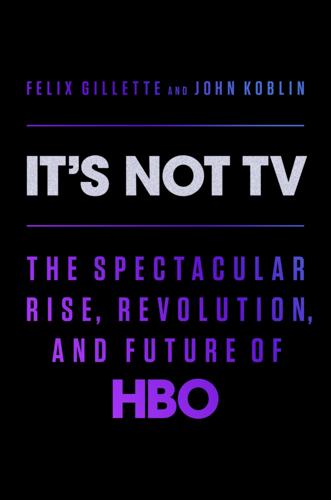
It's Not TV: The Spectacular Rise, Revolution, and Future of HBO
by
Felix Gillette
and
John Koblin
Published 1 Nov 2022
Back in New York, the network was plowing additional money into HBO Showcase, its East Coast programming unit, which was headed by Colin Callender, an erudite British producer who’d grown up in a Jewish family in London and spent his early professional years working in the theater. He joined HBO in 1987. Like his West Coast counterparts, Callender’s team in New York gravitated toward dramatic movies that filtered real-world events through a prism of progressive righteousness. In Dead Ahead: The Exxon Valdez Disaster, HBO provided a withering portrayal of the events surrounding the massive oil spill of 1989. The film, starring John Heard as a scrupulous Alaskan wildlife officer, mixed the drama with real archival footage from the environmental disaster, showing coastlines rimmed with black sludge and dying seabirds, their wings smothered in oil.
…
J., 344 Clear History, 321 Cleveland, Rick, 163 Clinton, Bill, 107, 108 Clinton, Hillary, 107 CNN, 297 Coady, Montana, 244 Coates, Ta-Nehisi, 300–301, 329–30 Cobb, Randall, 35 Coel, Michaela, 340 Cohen, Anne, 351 Cohen, Michael, 298 Cohn, Roy, 59 Collier, Charlie, 211 Columbia Pictures, 13–14, 17, 297 Comcast, 183, 186 Comeback, The, 137, 187 comedy, 25–30, 293–95 Comic Relief, 29–30 communications center, in Hauppauge, New York, 16, 323–24 Condal, Ryan, 344 Condon, Bill, 345 Confederate, 300–301 Cook, Tim, 278 Cooper, Bob, 60, 61 coproductions, 66–67 The Corner (TV series), 105 The Corner: A Year in the Life of an Inner-City Neighborhood (Simon), 104, 105 Cortesi, Kate, 365 Cosell, Howard, 35 Costanzo, Saverio, 344 COVID-19, 338, 340 Crane, David, 48–49, 63–64 Crown, The, 292 Crystal, Billy, 29 Cue, Eddy, 277 Curb Your Enthusiasm, 135–36 D D’Addario, Daniel, 291 Daly, Bob, 63, 73–74 D’Amato, Cus, 36 David, Larry, 26–27, 120–21, 135–36, 321 Davidson, Steve, 18, 185 Dead Ahead: The Exxon Valdez Disaster, 62 Dead Until Dark (Harris), 220 Deadwood, 174–76, 188 DeGeneres, Ellen, 27 De La Hoya, Oscar, 190 De La Hoya/Mayweather 24/7, 190–93 De Matteo, Drea, 169 Dern, Laura, 284, 344 Desperate Housewives, 171 Desroches, Pascal, 358 Deuce, The, 284–85, 289–90 DeVito, Danny, 163, 164 Dexter, 187, 211 Diary of a Manhattan Call Girl, 212 Diller, Barry, 16, 358 DirecTV, 78, 328 Disco Beaver from Outer Space, 13 Discovery, 353–55 Discovery+, 355 Disney, 237, 295, 301 Disney+, 338 Disney Channel, 18 Divorce, 342 documentaries, 30–32, 69–71, 82–84 Dolan, Charles, 2–3, 4 Douglas, Buster, 54–55 Down the Shore, 56 Dream On, 49–50 Duk-Koo, Kim, 34–35 Dunham, Lena, 229–31, 252–53, 254 Dutton, Charles, 47 Duvall, Robert, 62 DVDs/DVD industry, 131–33 Blockbuster bankruptcy and, 234 flattening sales, 2007, 293 HBO’s DVD sales, 159 Netflix and, 132–33, 234–40 E Echols, Damien, 82, 83, 249–50 Edis, Jamyn, 239 Ekelund, Peter, 259 Ellenberg, Michael, 283 Eller, Claudia, 197 Ellin, Doug, 350, 351–52 Elliott Management, 325 Ellsberg, Daniel, 115 Emerson, Sasha affair with and assault by Albrecht, 56–58, 126, 197–99 anthology series projects of, 46–47 background of, 45–46 as head of HBO Independent Productions, 47 as mentor to playwrights, directors, and actors, 364–66 post-HBO career, 245–46, 364–66 Emmy Awards 2004, 169 2015, 281–82 Chernobyl and, 368 for “It’s Not TV” commercial, 85 of Nevins, 248 Succession and, 359 Watchmen and, 331 encryption of satellite signal, 33–34 Enlightened, 284 Entourage, 136–37, 187, 349–52, 350 Eros America, 22 ESPN, 215 Essex, Andrew, 336 Euphoria, 342 F Falco, Edie, 101 Field, Patricia, 117 Fincher, David, 241–42, 243 1st & Ten, 21, 29 Fitzgerald, Susie, 49, 53–54, 100, 109, 111–12 Floyd, George, 340 Fontana, Tom, 79–81, 102–4 Fox, 96 Fraggle Rock, 21 Frankenbach, Linda, 53 Frazier, Joe, 1, 4, 5 Friedland, Jonathan, 239, 265–66 Friedman, Budd, 26 Friends, 64 Friends reunion special, 326, 338 From the Earth to the Moon, 106–7 Fry, Naomi, 363 Fuchs, Michael, 209–10 background of, 14–15 Biondi and, 41 as CEO of HBO, 24–25 as chairman of Warner Music, 72–73 company parties and retreats and, 52–54 on darker biopics, 59, 61 dismissal of, 73–74 Emerson/Albrecht situation and, 57–58 hired as director of special programming, 15 management style of, 51–54 opposition to scripted series, 44–45 Plepler and, 67–68 programming strategy of, 15, 21–22 sale of Interscope Records and, 73 FX, 187, 237, 283, 292 G Gabo, Chris, 365 Gabriel, Michael, 182 Gaffigan, Jim, 294 Gaines, William M., 42 Game of Thrones, 223–25, 240–41, 269, 278–79, 281 Gandolfini, James, 100, 161–62 Gandolfini, Michael, 348–49 Garbus, Liz, 303, 341–42 Garofolo, Janeane, 110 Gary Shandling: Alone in Vegas, 27 Generation Kill, 220 George, Terry, 115 Gere, Richard, 60 Gersh, Kenny, 276–77, 277 Getty Oil, 13–14 Ghostbusters, 23, 24 Giamatti, Paul, 220 Gibbons, Dave, 329 Gibney, Alex, 320 Gilbert, Matthew, 209 Ginsberg, Gary, 295, 297 Giorgis, Hannah, 300 Girls, 229–31, 251–54 Givens, Robin, 54 Goldberg, Whoopi, 29 Goldberger, Paul, 24 Goldman, Andrew, 142 Goldman, Jane, 344 Goldman, William, 133 Gossett, Louis, Jr., 330 Gravitt, Amy, 342, 368 Grazer, Brian, 106 Greatest Space, The, 326 Greenblatt, Bob, 96, 188, 211, 322, 346 Greenburg, Ross, 35–37, 38, 59–60, 141 Green Channel, 2–3 Greenfield, Richard, 348 Grey, Brad, 97, 108–9, 151 Gross, Terry, 254 G String Divas, 22 Gutowitz, Jill, 351 Gyllenhaal, Maggie, 290 H Halberstam, David, 115 Hall, Michael C., 187 Hanks, Tom, 42, 106 Hauppauge, New York, communications center, 16, 323–24 Harris, Charlaine, 220 Hastings, Reed, 131, 132–33, 179–80, 186, 212, 234, 239–40, 333, 334 Hatton, Ricky, 214 HBO (Home Box Office) Albrecht assault of Emerson, handling of, 57–58, 126, 197–99 Albrecht assault of Jensen, handling of, 195–97, 199 Berkes’s Project Halley plan to overhaul streaming services and, 261–63 budget for programming (See budget) churn and, 20–21 collective effort behind success of, 367–68 company retreats, 52–53 debut of, 3 direct to consumer streaming service as part of AT&T (HBO Max) (See HBO Max) direct to consumer streaming service (HBO GO) plans of (See HBO GO) disarray and discontent at, 2006–2007, 203–18 DVD sales and, 159 Emmy Award wins, 169, 281–82 expansion into Scandinavia, 258–60 female executives, lack of promotions for, 267 global strategy of profits over brand awareness, 279 Green Channel, 2–3 Hollywood problem of, 13–14, 16 initial lack of demand for, 3–4 licensing strategy of, 23–24 male-oriented culture at, 51–54 management structure, 2007, 204 marketing (See marketing) MLB Advanced Media hired to provide streaming platform, 277–78 Netflix buyout proposed by, 179–82 Netflix licensing of shows for streaming rejected by, 237–38 permanent campaign strategy of, 67–68, 107–8, 206 premiere screenings of, 113–14 programming strategy (See programming strategy) progressive values of, 333–34 Project Halley scrapped by, 277 regional offices of, 18, 24, 28 safe-TV-sex mission at, 343 satellite technology investment of, 4–5, 16 subscribers (See subscribers/subscription growth) subscription fees, cable operator’s cut of, 6 “Thrilla in Manila” and, 1, 4–5 Time Warner-AOL merger and, 141–43 TV network criticism of, 147–52 VCRs/home rental competition and, 20 Warner Bros. and, 63–64 HBO GO, 183–86, 204, 260–63, 274, 276 Berkes’s Project Halley plan to overhaul, 261–63 critical crashes of, 268–69, 275 HBO Independent Productions, 47, 56 HBO Max, 322–26, 367 advertising for, 336–37 brain drain at, 324–25 closing of Hauppauge satellite communications center, 323–24 launch of, 338 naming of, 322–23 new headquarters of, 324 programming for, 325–26 subscriber difficulty in activating, 337 on TikTok, 346 HBO Nordic, 259–60 HBO Now, 275 HBO Pictures, 60–61 HBO Showcase, 61–62 HBO Sports, 36, 38 Heard, John, 62 Heffernan, Virginia, 173 Hehir, Jason, 191–92, 193, 214–15 Heller, Lisa, 341, 368 Hero with a Thousand Faces, The (Campbell), 98–99 Hewitt, Don, 12 Hitchhiker, The, 17–18, 29 Hoffman, Dustin, 255 Holden, Stephen, 125 Holland, Cindy, 235, 236, 238, 242–43, 264–65, 266–67 Holland, Todd, 66, 111 Hollywood Reporter, The, 58 Holmes, Larry, 35 Holmes, Linda, 340 Home Box Office.

England: Seven Myths That Changed a Country – and How to Set Them Straight
by
Tom Baldwin
and
Marc Stears
Published 24 Apr 2024
There is an image of the portable spinning wheel for cotton designed by Mahatma Gandhi in resistance to the laws of the British Empire, as well as the loudhailer used by the first openly gay man to be elected to public office in California, Harvey Milk. Another chair shows the house in Yangon where Aung San Suu Kyi was held under house arrest in Myanmar and a xiezhi, a legendary figure in Chinese mythology symbolising justice. Still more show Nelson Mandela’s prison cell on Robben Island, the Exxon Valdez tanker whose oil spill led to new environmental principles, the emancipation of Russian serfs, a boat carrying refugees and another filled with slaves, a place used by British police to imprison indigenous Australians, protesters fighting for the release of political dissidents, the ancient Egyptian goddess of truth and some Chinese script describing Confucian principles of humanity.
…
S., here, here–here Elizabeth I, Queen, here, here, here, here–here, here Elizabeth II, Queen, here, here, here, here, here, here, here, here, here Runnymede statue, here–here Elton, Ben, here Elton, Sir Geoffrey, here–here Enclosure Acts, here Enfield, Harry, here Engels, Friedrich, here, here ‘English Atlantic’, here English Civil War, here–here, here, here, here, here, here English language, here, here, here English Tourist Board, here Enlightenment, here Epstein, Jeffrey, here Equiano, Olaudah, here Espírito Santo, Nuno, here Establishment, here, here, here, here, here, here, here, here, here, here–here, here–here, here–here, here–here, here, here–here, here–here, here Eton College, here, here–here European Convention, here, here European Economic Community, here, here, here–here European Parliament, here European Single Market, here European Union (EU), here, here–here, here, here–here, here, here, here, here, here, here–here, here, here–here, here, here, here, here, here, here see also Brexit Eurosceptics, here, here, here, here, here, here Evans, Tudor, here Everything But The Girl, here evolution, here, here–here Exxon Valdez, here Eyre, Edward, here Fairfax, Sir Thomas, here Falkland Islands, here Falklands War, here–here Farage, Nigel, here, here, here, here, here–here, here, here, here, here, here, here, here Ferens, Thomas, here Ferguson, Niall, here Festival of Britain, here–here Festival of Light, here Fields, Gracie, here Fifth Monarchists, here financial crash, here–here, here Finney, Albert, here First, Ruth, here First World War, here, here, here, here–here, here, here, here, here Floyd, George, here Foals, here Foot, Michael, here foot-and-mouth disease, here football, here–here, here, here–here, here, here–here hooliganism and racism, here–here, here–here see also Arsenal FC, Blackpool FC; Oxford United FC; Plymouth Argyle FC; West Bromwich Albion FC; Wolverhampton Wanderers FC Ford, Robert, here, here Foreign Policy Centre, here Formby, George, here Forsyth, Bruce, here ‘foundational’ jobs, here–here Fowler, Corinne, here fox hunting, here, here Foxe’s Book of Martyrs, here France, here–here, here, here Fraser, Giles, here free markets, here, here, here–here, here, here, here–here, here Freedman, Lawrence, here freedom of speech, here–here Freeman, Edward, here Freemen on the Land conspiracy, here French, Dawn, here French Revolution, here, here, here Fry, Elizabeth, here Fukuyama, Francis, here Gallagher, Noel, here Gallipoli, here Gandhi, Mahatma, here Gascoigne, Paul, here Gay Pride Week, here–here GB News, here, here General Strike, here, here George III, King, here Germany, here–here, here, here, here Gibb, Robbie, here Gibbon, Edward, here Gilbert, Dame Sarah, here, here–here, here Giuffre, Virginia, here Gladstone, William, here Glass Animals, here Global Britain, here, here, here, here, here globalisation, here, here, here, here–here, here, here Oxford University and, here, here Glorious Revolution, here, here Goering, Hermann, here Golden Hind, here–here Good Life, The, here Goodhart, David, here–here, here Goodwin, Matthew, here Gordon, General Charles, here Gordon Riots, here Gore, Al, here Gormley, Antony, here, here Gove, Michael, here, here, here–here, here, here, here–here Graham, James, here, here–here, here Grant, Hugh, here Graves, Robert, here Great Exhibition, here ‘Great Game’, here Greaves, Deborah, here Green, Catherine, here green technologies, here–here, here, here Greenwich, here–here and journalism, here, here Knight Dragon development, here–here, here, here–here Millennium Village, here Old Royal Naval College, here O2 Arena, here, here, here Pilot Inn, here–here Prime Meridian, here Ravensbourne University, here Royal Chapel, here Royal Observatory, here Griffiths, Peter, here Grubb, Isaac, here Guantánamo Bay, here Gunpowder Plot, here, here habeas corpus, here, here, here, here Hague, William, here, here, here, here Haig, Field Marshal Douglas, here Haitian slave rebellion, here–here Hakluyt, Richard, here Hall, David, here Hall, George, here Halsey, A.
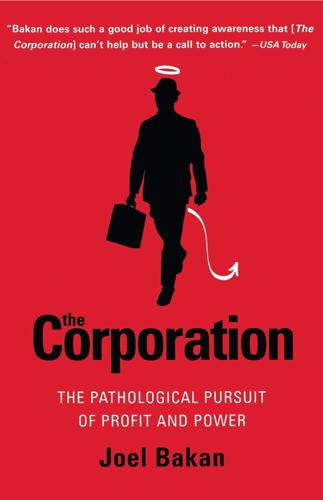
The Corporation: The Pathological Pursuit of Profit and Power
by
Joel Bakan
Published 1 Jan 2003
The corporation, as they say, is deliberately pro- Page 73 THE CORPORATION 7:: grammed, indeed legally compelled, to externalize costs without regard for the harm it may cause to people, communities, and the natural environment. Every cost it can unload onto someone else is a benefit to itself, a direct route to profit. Patricia Anderson's family's burns-externalities; Wendy D's exploitation and misery-externalities . These and a thousand other points of corporate darkness, from Bhopal and the Exxon Valdez to epidemic levels of worker injury and death and chronic destruction of the environment, are the price we all pay for the corporation's flawed character." The 1911 Triangle Shirtwaist Factory disaster stands as a notorious example of a company's callous disregard for its employees. The owners of the factory in lower Manhattan's garment district had kept their employees, mostly young immigrant women, locked in to prevent them from leaving their workstations and thus slowing production .
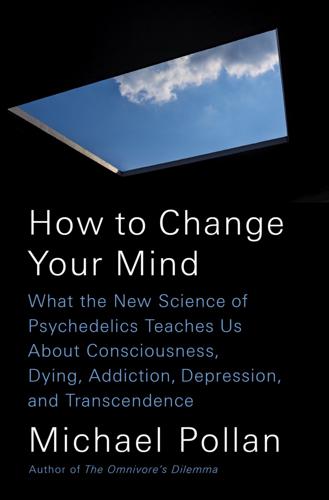
How to Change Your Mind: What the New Science of Psychedelics Teaches Us About Consciousness, Dying, Addiction, Depression, and Transcendence
by
Michael Pollan
Published 30 Apr 2018
I can remember the first time I heard Stamets talk about “mycoremediation”—his term for the use of mushrooms to clean up pollution and industrial waste. One of the jobs of fungi in nature is to break down complex organic molecules; without them, the earth would long ago have become a vast, uninhabitable waste heap of dead but undecomposed plants and animals. So after the Exxon Valdez ran aground off the coast of Alaska in 1989, spilling millions of gallons of crude oil into Prince William Sound, Stamets revived a long-standing idea of putting fungi to work breaking down petrochemical waste. He showed a slide of a steaming heap of oily black sludge before inoculating it with the spores of oyster mushrooms, and then a second photograph of the same pile taken four weeks later, when it was reduced by a third and covered in a thick mantle of snowy white oyster mushrooms.
…
S., 136 emergency room admissions, 14, 209–10 Emerson, Ralph Waldo, 136, 286 emotions access to difficult, 379–80 and cancer patient research, 351–52, 353 inhibited by default mode network, 307 and quieting of default mode network, 317 Engelbart, Doug, 179, 179n, 183–84 engineers’ use of psychedelics, 182 English, William, 179 entheogens, 19, 103 entropic brain theory and aging, 321 and children’s brains, 312, 323–28 and communications within brain, 316–20, 318–19 and evolution of default mode network, 312 and excess order in brain, 313, 315, 385 and expansion/contraction of consciousness, 322–23 and grand unified theory of mental illness, 385 and quieting of default mode network, 313–14, 316–20 and spectrum of cognitive states, 313, 315, 385 and value of psychedelics, 313–14, 315, 385 environment, attitudes toward, 315–16, 359 environment, personal, 372–73 environment of psychedelic experiences and bad trips, 152 and criticisms of psychedelic therapy, 207–8 Hubbard’s role in, 164, 169–70, 190 and Osmond and Hoffer’s research, 151, 152, 163–64 and “set and setting” concepts, 14, 53, 151, 190, 207–8 ergot, 22–23, 84 Esalen Institute, 47–48, 49–51 European Medicines Agency (EMA), 376–77 Evergreen State College, 101, 102 evolution, role of psilocybin in, 115–16 existential distress, 8, 78–79, 218, 223, 336–37, 353 expectancy effects and Cohen’s ambivalence about LSD, 158 and expectations of therapist, 347 and Griffiths’s psilocybin research, 62–63, 64 and Huxley, 143–44, 161–62 and LSD therapy for alcoholism, 150 Exxon Valdez disaster, 88 Fadiman, James and Alpert (later Ram Dass), 177 and Council on Spiritual Practices, 49 and creative dose of LSD, 184 and Hubbard, 172 at International Foundation for Advanced Study, 177–78, 183, 184 and Jesse, 43–44, 46, 49 as pioneer in field, 43–44 The Psychedelic Explorer’s Guide, 229 and research approval revoked by FDA, 57, 217–18 on Schuster, 50 and underground therapists, 228 Fahey, Todd Brendan, 165, 166, 181 fasting, 306 Federal Bureau of Investigation (FBI), 164 Feilding, Amanda background of, 297–99 and Carhart-Harris, 296, 297, 299 cerebral circulation theory of, 298, 299, 305n and research funding, 299, 300 Fischer, Roland, 97 5-HT2A receptors, 292–93, 354n 5-MeO-DMT (The Toad), 272–90, 291–92 flashbacks, 3, 209 Flashbacks (Leary), 139, 187, 190n flight instructions and cancer patient research at NYU, 338, 341 and Hopkins’s psilocybin research, 63, 64, 72 and Pollan’s psychedelic journeys, 246, 259–60 Fomes fomentarius, 87 Food of the Gods (McKenna), 115 forests, mycelial networks in, 91, 91n Frankl, Viktor, 352n Freud, Sigmund, 155, 294, 297, 307, 312, 314, 389 fungi Claviceps purpurea, 84 (see also LSD) Cordyceps, 89, 96–97 and forests, 91, 91n Galerina autumnalis, 94 mycelial networks of, 84n, 90–91, 118, 122 and mycoremediation, 88 Stamets’s advocacy for, 87–90 See also Psilocybes Fungi Perfecti operation of Stamets, 86n, 126 Gaia hypothesis, 359 Galerina autumnalis, 94 Gates, Bill, 175 Ginsberg, Allen, 193–94, 203, 205 Gitlin, Todd, 216 God experiences, 71, 343, 344, 345, 371–72 Goldsmith, George, 398–99, 400–401 Good Friday (Marsh Chapel) Experiment, 45–46, 60, 80–81, 191–92 Gopnik, Alison, 323–28, 329 Gottlieb, Sidney, 172n Grant, Cary, 157 Graves, Robert, 107 Grey, Alex, 125 Griffiths, Roland on applications for well people, 404–5 on authenticity questions, 76, 348–49 on authority of experiences, 365 awakening of, 33 background of, 31–34 career success of, 78 commitment to research, 77 on death, 79–80 and depression research, 375–76 and Jesse, 38, 51–52 on longterm changes in openness, 319–20 on meaning associated with psychedelic experiences, 75 mushroom medallions of, 82–83 mysteries and uncertainties embraced by, 75, 79, 80 on preparing volunteers for trials, 64 “Psilocybin Can Occasion Mystical-Type Experiences Having Substantial and Sustained Personal Meaning and Spiritual Significance,” 10–11, 29–30 and psilocybin trials at Hopkins, 60, 62, 65, 79, 360 on research at Spring Grove, 56 and Richards, 53 on Schuster, 50 spiritual emphasis of, 62 on “threats” of psychedelics, 59 Grinker, Roy, 208, 211 Grob, Charles on “applied mysticism,” 207, 334 on first wave research, 333 and MDMA trials, 48 and shamanic paradigm, 208, 334 Grof, Stanislav on American values, 58–59 on amplification effects of psychedelics, 159 on birth experiences, 155 and California Institute of Integral Studies, 232 at Esalen Institute, 47 and guides, 225, 230, 240 Realms of the Human Unconscious, 297 and Richards, 53 at Spring Grove, 57, 218 and terminal patients, 339 group settings, psychedelics in, 405 Guatemala, 114–15 guides and bad trips, 405 code of ethics, 229 and future of psychedelics, 402–3 guidelines and protocols of, 226–27, 230, 230n and integration of journey, 250–52, 269–71, 282, 364, 402, 405–6 interviews with, 231–35 personal experiences with psychedelics, 227 in Pollan’s psychedelic journeys, 237–41, 242, 254–57, 272–74 in psychedelic underground, 223–30 qualifications of, 224 risks assumed by, 224–25 role of, 215, 242, 364–65, 405–6 and second wave of research, 227 shrines or altars of, 231–32, 245–46, 254–55 training of, 225, 402 website for, 228–30 Guss, Jeffrey, 335, 352, 354, 369 habits, 360–64.
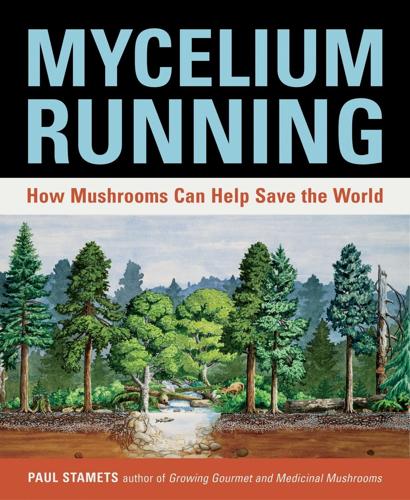
Mycelium Running: How Mushrooms Can Help Save the World
by
Paul Stamets
Published 14 Apr 2005
In lab experiments, we used one of my strains of oyster mushroom (Pleurotus ostreatus) to test its skill in breaking down dieselsaturated soil. In a series of mesocosm (midscale) tests, we obtained the best results by mixing sawdust spawn with soil and unsterilized alder chips. When combined with bunker C oil, the same petrochemical spilled by the Exxon Valdez tanker in Alaska, 97 percent of the oil’s polynuclear aromatic hydrocarbons (PAHs) degraded after 8 weeks. However, if we first sterilized the alder chips before mixing them into the spawn, only 65 percent of the PAHs were degraded. For a control, we omitted the spawn and used unsterilized chips, which caused the PAHs to decline only 38 percent (Thomas et al. 1999).
…
The Washington State Department of Transportation (WSDOT) in Bellingham, Washington, operated a maintenance yard for trucks for more than 30 years. Diesel and oil contaminated the soil at levels approaching 2 percent, or 20,000 parts per million (ppm) of total aromatic hydrocarbons, or TAHs. This is roughly the same concentration measured on the beaches of Prince William Sound in 1989 after the Exxon Valdez spilled its 11 million gallons of crude oil. In 1997 and 1998 the Washington State Department of Ecology (DOE) granted the Washington State Department of Transportation (WSDOT) a variance to permit our experiment. Our research group at Battelle Pacific Northwest Laboratories in Sequim, Washington (which included Susan Thomas, Meg Pinza, Pete Becker, Ann Drum, Jack Word, and others), decided to try mycoremediation techniques on this site.
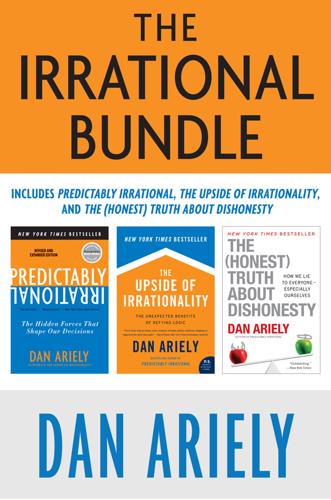
The Irrational Bundle
by
Dan Ariely
Published 3 Apr 2013
I’m sure Forgea was adorable and didn’t deserve to die, but one can ask whether, in the grand scheme of things, saving her was worth a twenty-five-day rescue mission that cost $48,000 of taxpayers’ money—an amount that might have been better spent caring for desperately needy humans. In a similar vein, consider the disastrous oil spill from the wrecked Exxon Valdez. The estimates for cleaning and rehabilitating a single bird were about $32,000 and for each otter about $80,000.19 Of course, it’s very hard to see a suffering dog, bird, or otter. But does it really make sense to spend so much money on an animal when doing so takes away resources from other things such as immunization, education, and health care?
…
Schelling, “The Life You Save May Be Your Own,” in Problems in Public Expenditure Analysis, ed. Samuel Chase (Washington, D.C.: Brookings Institution, 1968). 18. See Paul Slovic, “ ‘If I Look at the Mass I Will Never Act’: Psychic Numbing and Genocide,” Judgment and Decision Making 2, no. 2 (2007): 79–95. 19. James Estes, “Catastrophes and Conservation: Lessons from Sea Otters and the Exxon Valdez,” Science 254, no. 5038 (1991): 1596. 20. Samuel S. Epstein, “American Cancer Society: The World’s Wealthiest ‘Nonprofit’ Institution,” International Journal of Health Services 29, no. 3 (1999): 565–578. 21. Catherine Spence, “Mismatching Money and Need,” in Keith Epstein, “Crisis Mentality: Why Sudden Emergencies Attract More Funds than Do Chronic Conditions, and How Nonprofits Can Change That,” Stanford Social Innovation Review, spring 2006: 48–57. 22.
…
mismatching of money and need and, 250–51 motivating people to take action and, 252–56 Chat Circles, 225 cheating, 76 childbirth, pain of, 168, 169n children: in growing and preparing of food, 121 parents’ overvaluation of, 97–98 chimpanzees, sense of fairness in, 127 chores, taking breaks in, 177–79, 180 civil liberties, erosion of, 158 Clark, Andrew, 169 climate change, 251–52 closeness, empathy and, 243, 245, 254 clutch abilities, 39–41 CNN, 238 Coates, Dan, 170 cockroaches, social pressure in, 45–46 commercial breaks, enjoyment of television and, 181n comparisons, hedonic adaptation and, 189 compensation, 47 changes in, job satisfaction and, 169–70 see also bonuses completion: employees’ sense of, 77, 79–80 Loewenstein’s analysis of mountaineering and, 80–81 computers, 233 consumer purchases, 185–88 happiness derived from transient experiences vs., 187–88 hedonic treadmill and, 175 placing limits on, 186–87 reducing, 185–86 spacing of, 185, 186 contrafreeloading, 60–63 Jensen’s study of, 60–62, 63 standard economic view at odds with, 62–63 Converse, 95 cooking: children’s involvement in, 121 enjoyment factor and, 62n, 105–6 semi-preprepared food and, 85–88 CO2 emissions, 251–52 counting strategies, 282–83 Count of Monte Cristo, The (Dumas), 123 creation, pride of: ideas and, see Not-Invented-Here (NIH) bias self-made goods and, see IKEA effect creativity, bonuses and improvements in, 47–48 Csíkszentmihályi, Mihály, 49 cultures, organizational: acronyms and, 120 Not-Invented-Here bias and, 119–21 customer revenge, 131–51 against airlines, 142–43 apologies and, 149–51, 152 author’s experience with Audi customer service and, 131–36, 137, 147–49, 153–54 distinction between agents and principals and, 144–47 Farmer and Shane’s “Yours Is a Very Bad Hotel” and, 140–41, 146 fictional case study for Harvard Business Review on, 147–49 increase in, 143 Neistat brothers’ video on Apple’s customer service and, 141–42 passage of time and, 151 phone call interruption experiments on, 135–39, 145–46, 150–51 customization, 94–96 of cars, 88, 89, 94 effort expended in, 89, 95–96 overvaluation despite removing possibility of, 96 of shoes, 95, 96 D Dallaire, Roméo, 255 Darfur, 238, 253 Dart Ball game, 23, 34 Darwin, Charles, 157 dating, 191–235 market failures in, 213–15, 216–17, 220–21, 230–32, 233–35 playing hard to get and, 104 standard practice of, 224–25, 227–28 yentas (matchmakers) and, 213 see also assortative mating; online dating; speed dating decision making: author’s medical care and, 284–88 cooling off before, 257, 279 emotions and, 261–77 gender differences and, 274–76 irreversible decisions and, 285, 286 rationalization of choices in, 287 from rational perspective, 5–6 short-term, long-term decisions affected by, 264–65, 270–74, 276–77 stability of strategies for, 261–65; see also self-herding ultimatum game and, 265–70, 275–76 dentistry, adaptation to pain and, 161–62 design, taking people’s physical limitations into account in, 230–32 destroying work in front of workers, 74–76 Dichter, Ernest, 86 disease: adaptation to pain and, 165, 167 preventative health care and, 251, 256 “survivor” rhetoric and, 241–42 Disney, 154 distraction, performance-based incentives and, 30, 36 division of labor, 77–80 IT infrastructure and, 77, 79–80 Marx’s alienation notion and, 79 Smith’s observations on, 77–78 divorce, foreseeing outcome of, 173 Dodson, John, 18–20, 22, 31, 47 do-it-yourself projects, see IKEA effect Donath, Judith, 225 Dostoyevsky, Fyodor, 157 Doubletree Club, Houston, 140–41, 146 dreams, author’s self-image in, 182–83 DreamWorks SKG, 154 driving: momentary anger during, 261 safety precautions and, 6–7 texting during, 6, 7, 8 see also cars drop-in-the-bucket effect, 244–45, 252, 254–55 Dumas, Alexandre, 123 E Eastwick, Paul, 172–73 Edison, Thomas, 117–19, 122 effort: increase in value related to, 89, 90, 95–96, 105–6; see also IKEA effect joy derived from activity and, 71–72 meaningful work conditions and, 72 ownership of ideas and, 114–16 see also labor egg theory, 86–88 Eisner, Michael, 154 electric chair, 119 electricity, alternating current (AC) vs. direct current (DC), 117–19 emotional cascades, 265–78 gender differences and, 274–76 romantic relationships and, 277–78 ultimatum game and, 265–76 emotional priming: empathy for plight of others and, 246–48 ultimatum game and, 268–70 emotions, 43, 237–79 appeals to, willingness to help others and, 240–42, 248–50, 253–54, 256 decision making and, 261–77; see also decision making in past, humans’ poor memory of, 264 transience of, 257, 261, 270 see also empathy; negative feelings, acting on empathy: animals’ suffering and, 249, 252 apathy toward statistical victims and, 238–41, 242, 246, 247–49, 252–53 Baby Jessica saga and, 237–38 calculating vs. emotional priming and, 246–48 clear moral principles and, 255 closeness and, 243, 245, 254 drop-in-the-bucket effect and, 244–45, 252, 254–55 emotional appeals and, 240–42, 248–50, 253–54, 256 global warming and, 251–52 identifiable victim effect and, 239–42, 248, 256 overcoming barriers to, 252–56 rules to guide our behavior and, 254–55 thought experiment of drowning girl and, 242–43, 245 toward one person vs. many in need, 237–56 vividness and, 24, 243n, 244, 245 endowment effect, 285, 286 Enron, 216 evolution, mismatch between speed of technological development and, 8–9 experiments, 10–11, 288–95 business or public policy and, 292–94, 295 of Gideon, 288–89 medical practice and, 289–92 rational economists’ criticisms of, 49–51 see also specific topics Exxon Valdez oil spill, 249 F fairness, sense of: in chimpanzees, 127 decision making and, 266–67; see also ultimatum game gender differences and, 275–76 Fallows, James, 158 Farmer, Tom, 140–41, 146, 148–49 FedEx, 108–9 feedback, about work, 74–76 Feeks, John, 118–19 Fehr, Ernst, 125–26 financial incentives: meaning of labor and, 72–73, 76 see also bonuses financial markets, safety measures for, 7 financial meltdown of 2008, 7, 21, 216 chronology of events in, 129–30 desire for revenge in wake of, 128–31 lack of experimental approach to, 293 outraged public reaction to bailout in, 128–29, 130 Finkel, Eli, 172–73 First Knight, 50 fixation, pride in creation and ownership and, 89, 122 food: animals’ preference for working for, 59–63 semi-preprepared, 85–88 shortages of, identifiable victim effect and, 239–41 see also cooking Food and Drug Administration (FDA), 292 Ford, Henry, 78–79, 94 Forgea (white terrier), 249 Fox, Michael J., 254 “Fox and the Grapes, The” (Aesop), 198–99 Frank, Barney, 41 Frankl, Viktor, 45 free food, animals’ preference for working for food vs., 60–62 Frenk, Hanan, 161–65, 300 Friends, ultimatum game and, 269, 270–71, 272 frog experiment, 157–58 Frost, Jeana, 219–20, 229, 300 Fryer, Bronwyn, 148 furniture, do-it-yourself, 83–84, 96, 105, 106 future, foreseeing adaptation to changes in, 160, 171–74 G gardening: children growing food and, 121 enjoyment factor and, 105–6 gender differences: assortative mating and, 209, 211 decision making and, 274–76 pain threshold and tolerance and, 168–69 Gideon, 288–89 global warming, 158, 251–52 Gneezy, Ayelet, 135, 144–45, 150, 300–301 Gneezy, Uri, 21, 44, 301 Gore, Al, 158, 252 government policies, experimental approach to, 292–94, 295 H happiness: comparisons to other people and, 189 consumer purchases and, 175, 185–88 inaccurate predictions about, 170–71 return to baseline of, 170 transient vs. constant experiences and, 187–88 Harvard Business Review (HBR), 147–49 health care, see medical care hedonic adaptation, 160–84 to annoying experiences, 177–79, 180 author’s personal history and, 181–84, 189 blindness and, 172–74 breaking up experiences and, 177–81 changes in workers’ pay and, 169–70 comparisons to other people and, 189 consumer purchases and, 175, 185–88 extending pleasurable experiences and, 176–78, 179–81, 185, 186 in future, foreseeing of, 160, 171–74 happiness baseline and, 170 life-altering injuries and, 171–72, 174 moving to California and, 176 new houses and, 168–69 pain and, 160–67 romantic breakups and, 172–73 to transient vs. constant experiences, 187–88 using our understanding of, 176–81, 184–90 hedonic disruptions, 177–81 hedonic treadmill, 175 Heingartner, Alexander, 45–46 Henry, O., 98 herding, 262 see also self-herding Herman, Edward, 45–46 Hippocrates, 82 Hogerty, Megan, 81 homeostatic mechanisms, 81 Hong, James, 201, 203 HOT or NOT study, 201–5, 208 gender differences in, 209, 211 Meet Me feature and, 204–5, 208, 209 humor, sense of, 199, 200, 207, 208, 228 Hurricane Katrina, 250, 251 I ideas: attachment to, see Not-Invented-Here (NIH) bias idiosyncratic fit and, 111–12 identifiable victim effect, 239–42, 248, 256 American Cancer Society and, 241–42 identity, connection between work and, 53–55, 79 idiosyncratic fit, ideas and, 111–12 ignoring workers, 74–76 IKEA, 83–84, 106 IKEA effect, 83–106 author’s creations in rehabilitation center and, 100–101 completion of project and, 101–4, 105 do-it-yourself furniture and, 83–84, 96, 106 effort expended and, 89, 90, 95–96, 105–6 four principles in, 104–5 and lack of awareness of overvaluation, 99 Legos experiment and, 96, 97 Local Motors cars and, 88, 89 Not-Invented-Here (NIH) bias and, 109–10, 121 origami experiments and, 91–94, 97, 98–99, 102–4 parents’ overvaluation of their children and, 97–98 practical implications of, 121–22 relaxation notion and, 105–6 removal of individual customization and, 96 semi-preprepared food and, 85–88 shoe design and, 95, 96 immediate gratification, 5 Inconvenient Truth, An, 252 initiation into social groups, 89 injuries: association of pain with getting better after, 166–67 author’s dating prospects and, 191–96, 210–11 author’s decisions about his medical care and, 284–88 author’s personal history related to, 1–4, 13, 107, 160–62, 166–67, 181–84, 189, 191–96, 210–11, 281–88 battlefield vs. civilian, 167 foreseeing future after, 160 life-altering, adaptation to, 160, 171–72, 174 pain thresholds and tolerance related to severity of, 161–65 Institute for Evolutionary Anthropology, Leipzig, Germany, 126–27 insurance products, 233–34 interruptions: in pleasant vs. painful experiences, 177–81 TV commercials and, 181n see also phone call interruption experiments intuitions: bonuses and, 36–37 received medical wisdom and, 289–92 romantic, 172–73 testing of, 10n, 288–95 inverse-U relationship, defined, 19 iPods and iPhones, battery replacement in, 141–42 irrationality: summary of findings on, 288 upside as well as downside of, 11–12, 294 irreversible decisions, 285, 286 IT infrastructure, division and meaning of labor and, 77, 79–80 J Janoff-Bulman, Ronnie, 170 Jensen, Glen, 60–62, 63 Jensen, Keith, 127 Jewish tradition, 254–55 Johns Hopkins Bloomberg School of Public Health, Baltimore, 152 Joyless Economy, The (Scitovsky), 188 justice, see fairness, sense of K Kahneman, Danny, 32n, 175–76 Kamenica, Emir, 66, 301 Katzenberg, Jeffrey, 154 Kemmler, William, 119 kinship, empathy and, 243 Krishnamurti, Tamar, 172–73 Krzyzewski, Mike, 39 L labor: connection between identity and, 53–55, 79 contrafreeloading and, 60–63 economic model of, 55, 62–63, 105 financial incentives and, see bonuses meaning of, see meaning of labor overvaluation resulting from, see IKEA effect on projects without meaning, 56–57, 63–72 Labyrinth game, 23 Lee, Leonard, 132, 134, 197, 201–2, 301–2 Lee, Sandra, 87–88 leeches, medicinal use of, 290–91 Legos experiments: on IKEA effect, 96, 97 on reducing meaningfulness of work, 66–74, 77, 80 letter-pairs experiment, 74–76, 80 life-altering events, hedonic adaptation and, 170 Life as a House, ultimatum game and, 268, 269, 270, 272, 276 light, adaptation to changes in, 159 Local Motors, Inc., 88, 89 Loewenstein, George, 21, 44, 80–81, 172–73, 197, 201–2, 239–41, 246–48, 302 long-term objectives, short-term enjoyments vs., 4–5 loss aversion, 32–33, 285, 286 lottery winners, hedonic adaptation of, 170, 171 “Love the One You’re With,” 197, 211–12 M malaria, 250, 251 Man’s Search for Meaning (Frankl), 45 marketing, adaptation and, 158 market mechanisms, 215–16 dating and, 213–15, 216–17, 220–21, 230–32, 233–35 Marx, Karl, 79 massages, extending pleasure of, 179–80 matchmakers (yentas), 213 Mazar, Nina, 21, 30, 44, 302 McClure, Jessica (Baby Jessica), 237–38 meals, see cooking meaning of labor, 53–82 in acknowledged, ignored, and shredded conditions, 74–76 animals’ preference for working for food and, 59–63 blogging and, 65 division of labor and, 77–80 draining work of meaning and, 55–57, 63–77 financial incentives and, 72–73, 76 joy derived from activity and, 71–72 labor-identity connection and, 53–55, 79 Legos experiment and, 66–74, 76, 80 lessons for workplace on, 80–82 letter-pairs experiment and, 74–76, 80 “meaning” vs.
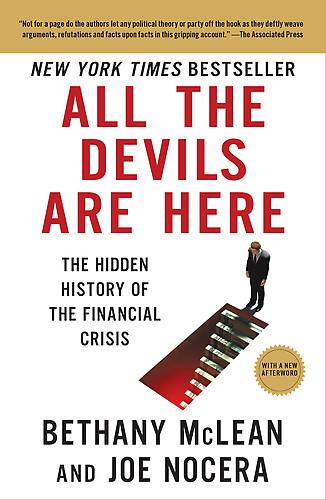
All the Devils Are Here
by
Bethany McLean
Published 19 Oct 2010
The market wouldn’t just be big; it would be huge. But for that to happen, the Federal Reserve would have to agree that credit default swaps did indeed transfer default risk. And who could say when, or even if, that would happen? In 1994, J.P. Morgan put together its first credit default swap. It came about as a result of the Exxon Valdez oil spill. The oil giant, facing the possibility of a $5 billion fine, drew down a $4.8 billion line of credit from J.P. Morgan. This put the bank in exactly the kind of position it didn’t want to be in. It couldn’t say no, because that would alienate Exxon. Yet the loan wasn’t going to make the bank much money, and it was going to tie up hundreds of millions of dollars in capital that would have to be placed in reserve.
…
Morgan LTCM collapse netting out quants’ development of regulatory efforts structured investment vehicles (SIVs) tranches of See also specific instruments Deutsche Bank, ABS index Dimon, Jamie Dodge, Patti Donilon, Tom Dooley, Bill Drexel Burnham Lambert Dubrish, Robert Dugan, John Dunne, Jimmy Dynamic hedging Dyron, Dick Edper Edwards, Jeff Eichel, Scott Eisman, Steve Empiris LLC Enron European Bank for Reconstruction and Development (EBRD) Evans, Gay Everquest Exception pricing system Exxon Valdez Fakahany, Ahmass Falcon, Armando, Jr. Fannie Mae accounting fraud, investigation of Bush era war with CEOs. See Johnson, Jim; Maxwell, David; Mudd, Daniel; Raines, Franklin Delano conforming mortgage market Countrywide mortgages sold to creation/functions of crisis of 1981 crisis of 2007 critics of debt acquisition, extent of (2007-2008) government bailout implicit government guarantee investor trust in lobbying by losses (2008) low-income persons, initiatives for mortgage stamping guarantee by OFHEO oversight.
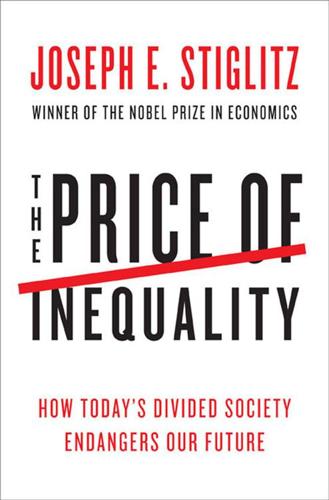
The Price of Inequality: How Today's Divided Society Endangers Our Future
by
Joseph E. Stiglitz
Published 10 Jun 2012
Our complex legal system contributes to the costs and uncertainty. The oil companies have tried (in part successfully) to limit their liability for, e.g., offshore oil disasters. Courts have limited liability for economic damages resulting from, say, an oil spill to those most directly affected. In the case of the Exxon Valdez oil spill, this meant that many of those who were injured by the destruction of the fishing industry couldn’t recover their lost profits. The Oil Pollution Act of 1990 tried to correct some of these limitations. But the full testing of the legal framework—with the legions of lawyers that likely will be mounted by BP, attempting to limit what it has to pay out—will take years.
…
.; voting emerging markets, 54, 143, 181, 233, 383 employment, 50, 69, 75, 76, 189, 211 parental circumstances’ effect on, 18, 76, 307 restoring, 222, 225, 257, 278–81, 284, 285, 380, 396 see also labor; unemployment energy industry, 51 corporate recklessness in, xviii, 99, 189, 339, 374 and global warming, xviii, 160 lobbying by, 95, 185, 338 rent seeking by, 40, 49–50, 99, 272, 367 subsidies to, 179, 180, 189, 214, 367 Enlightenment, 30, 156 Enron, 177–78 environment: costs to, 98–99, 100, 185, 188–89, 272, 339, 374 protection of, 122, 141, 178, 184, 217, 283 see also global warming; resources environmental justice movement, 184, 308 equilibrium fictions, 150, 157, 356, 358 Ericcson, 203 estate taxes, 73, 76, 88, 166, 167, 274, 361, 395 ethanol subsidy, 50–51, 180, 320 euro, 220, 391 Europe, 22, 55, 105, 141, 155, 280, 286 economic mobility in, 18, 117, 265 financial crisis in, 24, 138, 141, 182, 219, 220, 231, 235–36, 254–56, 369, 381, 389–91 globalization’s effect in, 63, 64 inequality in, xiv, 5, 23 inflation in, 241, 255, 259, 393 unemployment in, 278, 291 European Central Bank (ECB), 138, 182, 220, 249, 255, 256, 390, 391, 393 European Commission, 214 exchange rates, 280 Exxon, xviii, 160 Exxon Valdez, 374 fairness: changing views of, 67, 148, 153–55, 347 economists’ perceptions of, 161 importance of, xiv, 114, 117, 126–27, 135, 163, 214, 266 in labor, 103–4, 127 Fannie Mae, 158, 284, 356, 363, 397 Federal Bureau of Investigation (FBI), 197, 372 Federal Communications Commission (FCC), 47, 335 Federal Deposit Insurance Corporation (FDIC), 247 Federal Reserve, U.S., 71, 245, 248, 249, 252, 253, 258, 266 appointees to, 47, 48, 133, 249–50, 319, 388 bank lending by, 37, 49, 243, 245–46 financial sector’s favoring by, 37, 49, 243, 245–48, 249, 251–54, 258, 264, 324, 385–86 monetary policies of, 85, 86, 88, 133, 177, 208, 234, 239–40, 243–45, 248, 250, 251, 252, 254, 257–58, 259, 262, 264, 279, 380, 382, 385, 389, 392 Open Market Committee of, 252 oversight of, 251, 252 political nature of, 250, 251 regulatory position of, 246, 247, 248, 387, 388 Ferguson, Thomas, xxiv Fields, Alex, 283 filibusters, 132–33, 286, 350, 351 Financial Accounting Standards Board, 110 Financial Crisis Inquiry Commission, see Angelides, Phil; National Commission on the Causes of the Financial and Economic Crisis in the United States financial crisis of 2008, x, xiv, xvii, xix, xxii, xxiii, 1, 3, 13, 33, 49, 61, 77, 79, 91, 152, 155, 166, 167–69, 171, 174, 175, 180, 213, 232, 246, 254–55, 260, 314 causes of, xi, 33, 34, 37, 49, 90, 175, 213, 258, 264 criminal prosecution for, xv–xvi, 70, 119, 199, 372, 373 economic situation prior to, 53–54, 84–85 see also Great Recession; subprime crisis financial markets: deregulation of, 5, 49, 60, 81, 89–92, 102, 152, 157, 175–76, 177, 181–82, 240, 246–48, 249, 258, 387 distributive impact of, 173–74 equilibrium fictions in, 152, 175 failures in, xi–xiii, xvii, xviii, 6, 34, 41, 90, 107–8, 173, 241, 291, 313 globalization in, 59–61, 139–40, 141–42, 181–82, 277, 280, 324, 325 government regulation of, xiii, xx, xxi–xxii, 28, 33–34, 35, 36, 37, 38–39, 40, 44, 47–48, 80, 87, 119, 136–37, 141–42, 152, 155, 170, 173, 178–79, 192–93, 247, 248, 250, 269–70, 324, 369, 388 ideological perceptions of, 154, 155, 156–57, 158, 163–66, 172–79, 186, 257, 258, 261, 313, 317, 356 information asymmetries in, 36–37, 110, 124, 165–66, 313, 388 international debt in, 139 legal underpinnings of, 42, 43 price discovery in, 164–65 transparency in, 35–36, 247, 269, 390 see also bankers; business; economy, U.S.; stock market financial sector, 49, 87, 169, 170, 219, 226, 228, 382 abusive credit card practices in, 37, 40, 90, 96, 98, 119, 124, 164, 240, 246, 269, 270, 274, 314 anticompetitive behavior in, 35–36, 46–47, 247, 269, 270, 318; see also monopolies criminal behavior in, 198, 199, 200–201, 204–6, 372, 373 Federal Reserve’s favoring of, 37, 49, 243, 245–48, 249, 251–54, 258, 264, 324, 385–86 government bailouts in, xiv–xv, 37, 60, 74, 101, 155, 166–69, 171, 172, 175, 180, 193, 198, 213, 233, 234, 245–46, 252–53, 258, 269, 324, 361, 362 government lending to, 37, 49, 110, 243, 245–46 growth of, 79–81, 240, 246–48, 271 hidden subsidies to, 222, 223, 240, 247, 387 incentive pay in, 78–79, 87, 109–10, 342 international influence of, 181–82, 186–87 legal system’s favoring of, 191–202, 203, 204–6 moral deprivation in, xvii–xviii, xxiii, 37–38, 70, 197–98, 201, 314 political power of, 34, 37, 41, 48, 61, 135, 136–37, 193, 194, 200, 202, 319, 324, 338 predatory lending by, xvii, 37, 40, 58, 70, 90, 119, 124, 191–93, 194, 197–98, 201, 239, 246, 249, 269–70, 313, 314, 333, 369 purpose of, 62, 96, 142, 175, 281, 314 ratings agencies in, 192, 217, 219 rent seeking by, 36–39, 40, 41, 166, 270 securities fraud in, 204–6 student loan practices in, 94, 195, 196, 201, 323, 371 taxes on, 213–14, 215, 247, 248 trust in, 123–24, 346 undercapitalization in, 247, 256, 386 see also bankers Finland, 18, 19 fiscal policy, 278–79, 285 see also government, U.S., macroeconomic policies of flash trading, 165–66 food stamps, 74, 211, 277, 305, 306 foreclosures, x, xii, xv, 1, 10, 13, 23, 169–70, 197–202, 271, 293, 302, 362, 363, 369, 374, 388 see also mortgage restructuring; subprime crisis foreign policy, U.S., 101 framing, cognitive, 149–50, 160, 163, 186, 360 France, 18, 22, 97, 183, 214, 351, 385 Freddie Mac, 158, 284, 363 Friedman, Milton, 44, 157, 257, 258, 317, 391 Friedman, Stephen, 388 FUD, 45 G-8, 143 G-20, 143, 185 Galbraith, Jamie, 81 Galbraith, John Kenneth, 128 game theory, 44, 68 Gates, Bill, 42, 315 GE, 222, 330, 331 Geithner, Tim, 48 George, Henry, 212 Georgia, 191–92, 368 Germany, 18, 23, 214, 230, 259, 280, 351, 385 gerrymandering, 132, 135, 286 Gettysburg Address, 137 GI Bill, 5, 55 Gini coefficient, 23–24, 303, 309, 310 Glass-Steagall Act, 90, 387 globalization, 58–64, 79, 80, 156, 184, 259, 260 competition in, 60, 141, 142 democracy and, 138–45 drawbacks of, 60, 62, 63, 142, 324 financial, 59–61, 139–40, 141–42, 181–82, 277, 280, 324, 325 inequality and, 60, 63–64, 79, 80, 140, 142, 144, 145 labor and, 56, 59–60, 61, 63, 64, 80, 233, 277, 278, 280, 281, 324, 325 management of, xiii, 61, 64, 80, 137, 142, 144, 145, 277–78 taxes and, 62, 63, 142, 278 Globalization and Its Discontents (Stiglitz), 61, 181 global warming, xii, xiii, 144, 160, 341 see also environment Golden Rule (Ferguson), xxiv Goldman Sachs, 61, 124, 205, 253, 353, 388 Google, 174, 203 government, U.S.: bank bailouts by, xiv–xv, 37, 60, 74, 101, 155, 166–69, 171, 172, 175, 180, 193, 198, 213, 233, 234, 245–46, 252–53, 258, 269, 324, 361, 362 budget cuts in, 207, 216, 221, 226–28, 229, 230–36 budget of, 207–37 collective action through, 82, 93, 107, 117, 121, 125, 281–82 ideological perceptions of, 93–94, 154–55, 156–57, 158, 172–79, 186, 257, 258, 261, 356 inequality-supporting policies of, 6, 28, 31, 32, 52, 57–58, 74, 75–76, 77, 79, 81, 82, 153 investment by, 23, 40, 80, 84, 88, 92–94, 102, 114, 115, 155, 174, 216, 217, 218, 230, 232–33, 263, 267, 273, 279, 281, 282–83, 381 litigation by, 203, 204 macroeconomic policies of, 38, 62, 64, 80, 82, 85, 86, 102, 133, 225, 230, 231, 236, 237, 238–64, 279, 379, 392 market regulation by, xiii, xx, xxi–xxii, 5, 28, 34, 35, 36, 37, 38–39, 44, 47–48, 49, 60, 80, 81, 87, 89–92, 102, 119, 136–37, 141–42, 152, 170, 173, 175–76, 177–79, 192–93, 246–48, 250, 258, 269–70, 324, 369, 387, 388 media’s relationship with, 128, 135, 136, 252 military spending by, 40, 101, 176, 209, 210, 211, 216, 218, 224, 340 munificence of, 32, 40, 42, 48–51, 97, 99, 101, 136, 173, 176, 179–80, 189, 191, 210, 211, 213, 214, 215, 216, 222, 224, 228, 271–73 research funded by, 78, 92, 93, 102, 174, 216, 283, 337 size of, 93–94, 155, 156–57, 216, 221, 236–37, 251, 256, 257 social spending by, 2, 5, 14, 15, 16–17, 26, 63, 74, 77, 79, 84, 85, 86, 108, 173, 208, 210, 211, 215–16, 226–28, 231–32, 237, 276–77, 299, 365, 380 see also politics, U.S.

Into the Wild
by
Jon Krakauer
Published 2 Jan 1996
His ignorance, which could have been cured by a USGS quadrant and a Boy Scout manual, is what killed him. And while I feel for his parents, I have no sympathy for him. Such willful ignorance … amounts to disrespect for the land, and paradoxically demonstrates the same sort of arrogance that resulted in the Exxon Valdez spill—just another case of underprepared, overconfident men bumbling around out there and screwing up because they lacked the requisite humility. It’s all a matter of degree. McCandless’s contrived asceticism and a pseudoliterary stance compound rather than reduce the fault…. McCandless’s postcards, notes, and journals … read like the work of an above average, somewhat histrionic high school kid—or am I missing something?
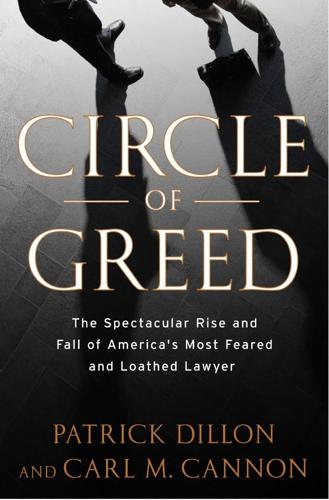
Circle of Greed: The Spectacular Rise and Fall of the Lawyer Who Brought Corporate America to Its Knees
by
Patrick Dillon
and
Carl M. Cannon
Published 2 Mar 2010
Judge Harmon was born in Port Arthur, Texas, the Gulf Coast oil refining town that had spawned rock legend Janis Joplin and Dallas Cowboys coach Jimmy Johnson. She attended Radcliffe College, graduating in 1969, before heading to the University of Texas Law School in Austin. After clerking for a Houston judge, she worked from 1975 to 1987 as an attorney for Exxon, leaving a year before the Exxon Valdez ran aground in Alaska, dumping ten million gallons of crude oil into Prince William Sound. After the initial judge recused herself as the Enron trial attorney because she had once owned Enron stock, the case had fallen into Harmon’s lap. She was aware of the leaks regarding the Los Angeles investigation of Milberg Weiss and was determined, for the time being, to set them aside in order to focus on determining the best organized, most coherent representative for the plaintiffs.
…
Lerach’s good-bye speech after the video ended had been upbeat, gracious, and filled with gratitude for his colleagues and the opportunities they’d shared as he recounted the victories, beginning with Pacific Homes, moving to Lincoln Savings and Loan, the sweatshop litigation his wife had worked on in the Marianas, Stringfellow, Big Tobacco, Exxon Valdez, and WorldCom, climaxing in Enron, and almost bagging Dick Cheney’s Halliburton. There was resilience in his voice, and a recognizable defiance as well. Tears were shed, and the guests recalled his generosity in times of need and his championing of victims he had never met in person. That party had run late.
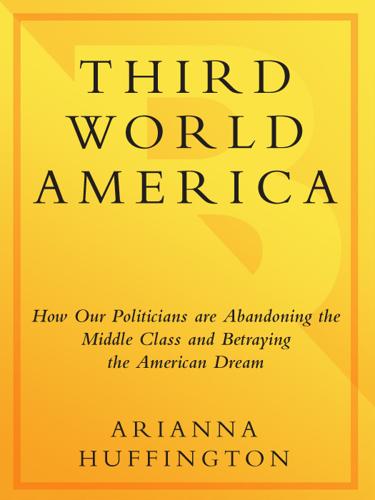
Third World America: How Our Politicians Are Abandoning the Middle Class and Betraying the American Dream
by
Arianna Huffington
Published 7 Sep 2010
The crooked firm’s chairman, Kenneth Lay, and his senior management doled out $2.4 million to federal candidates in the 2000 elections and were among George W.’s biggest donors.81 Enron also spent $3.45 million lobbying Congress in 1999 and 2000, all of which helped the outfit push its “deregulation” agenda—which really meant creating enough “wiggle room” to get away with wholesale fraud.82 “Kenny Boy” Lay was known to boast about his “friends at the White House”—friends who helped him engineer the replacement of the head of the Federal Energy Regulatory Commission, the agency charged with regulating Enron’s core business.83, 84 He also had a lot of input on energy policy at the Bush White House: Vice President Dick Cheney and his staff had six meetings with Enron representatives—including two with Lay—as part of their energy task force.85, 86 The last of those meetings took place six days before Enron was forced to reveal it had vastly overstated its earnings, starting the energy giant’s slide into bankruptcy.87 Another energy company, Upper Big Branch mine operator Massey Energy, has also realized the investment value of buying friends in high places. Back in 2000, Massey was responsible for a coal slurry spill in Kentucky that was three times larger than the Exxon Valdez oil spill.88 The company very successfully limited the damage—not to the environment, but to its bottom line.89 According to Jack Spadaro, a Mine Safety and Health Administration engineer investigating the spill, once Kentucky senator Mitch McConnell’s wife, Elaine Chao, became secretary of labor—the labor department oversees the MSHA—she put on the brakes.90 Two years after the spill, Massey was assessed a slap-on-the-wrist $5,600 fine.
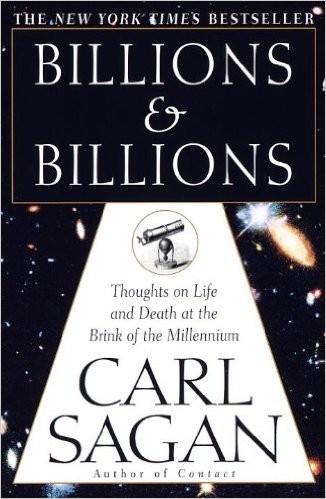
Billions & Billions: Thoughts on Life and Death at the Brink of the Millennium
by
Carl Sagan
Published 11 May 1998
The cost of crude oil in recent years has been about $20 a barrel. But U.S. military forces have been assigned to protect foreign sources of oil, and considerable foreign aid is granted to nations largely because of oil. Why should we pretend this isn't part of the cost of oil? We abide ecologically disastrous petroleum spills (such as the Exxon Valdez) because of our appetite for oil. Why pretend this isn't part of the cost of oil? If we add in these additional expenses, the estimated price becomes something like $80 a barrel. If we now add the environmental costs that using this oil levies on the local and global environments, the real price might be hundreds of dollars a barrel.
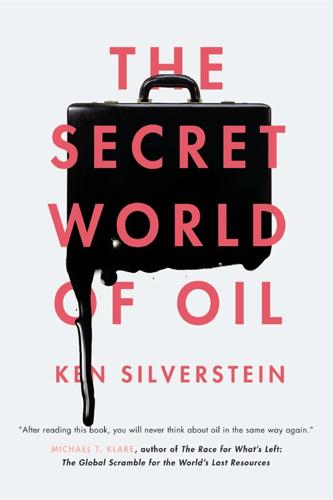
The Secret World of Oil
by
Ken Silverstein
Published 30 Apr 2014
All told the industry enjoys significant exemptions from numerous environmental statutes, including the Clean Water Act, the Safe Drinking Water Act, the Clean Air Act, and the National Environmental Policy Act—the “Magna Carta” of environmental legislation passed in 1970. The Oil Pollution Act approved by Congress in the wake of the Exxon Valdez spill capped civil liability for oil companies at $75 million. Efforts to raise that figure to $75 billion after the BP Horizon spill were blocked in the Senate, with Louisiana Democrat Mary Landrieu leading the resistance. “It’s terribly difficult to get beyond denial, that’s the first step, and the big agony,” Oliver Houck told me when we met in New Orleans.
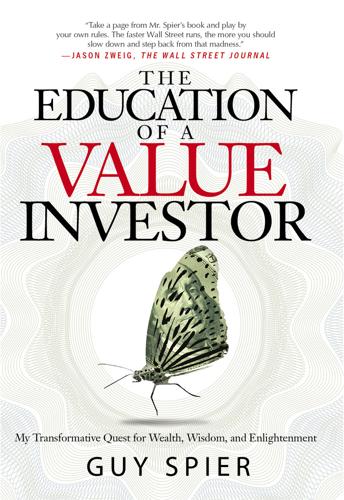
The Education of a Value Investor: My Transformative Quest for Wealth, Wisdom, and Enlightenment
by
Guy Spier
Published 8 Sep 2014
For good measure, at least half of Bank of America’s rivals had fallen by the wayside, leaving the company in an even stronger position. Smaller banks would struggle to compete, given the mounting cost of technology in the banking sector. And the legal risks facing the bank seemed lower than most people realized: after all, the litigation over the Exxon Valdez oil spill is still going on after 25 years. So it seemed likely to us that the banking sector could drag out any lawsuits for many years, providing ample time to cover the potential cost of any claims. I ended up investing heavily in an array of money-center banks whose stocks subsequently rebounded, much as Warren, Mohnish, and I had expected.
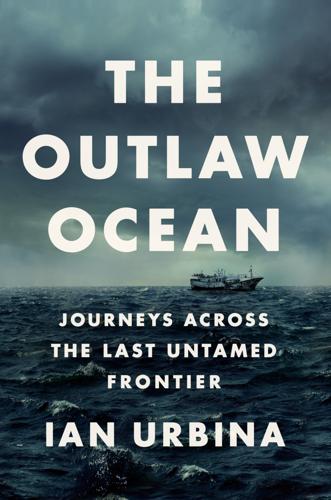
The Outlaw Ocean: Journeys Across the Last Untamed Frontier
by
Ian Urbina
Published 19 Aug 2019
Ships illegally discharge more than eighty million gallons of oily bilgewater and engine sludge into the oceans each year, often using magic pipes like the one found by Keays, according to research done at the University of Delaware. In the span of three years, that’s more than the amount spilled in the BP and Exxon Valdez accidents combined. Many governments give big industries permission to use the ocean for waste disposal on a grand scale. Off the southwest coast of Indonesia’s West Nusa Tenggara province near Bali, for example, a four-foot-diameter pipe runs from the Batu Hijau copper and gold mine into the Indian Ocean.
…
To understand how much oil wastewater and fuel sludge is routinely and intentionally dumped at sea, check a 2003 OECD Report, “Cost Savings Stemming from Non-compliance with International Environmental Regulations in the Maritime Sector,” Director for Science, Technology, and Industry Maritime Transport Committee, Jan. 30, 2003. That report says, “Put in another perspective, according to one recent study, the illegal discharge of oil into the sea through routine operations is equal to over eight times the Exxon Valdez oil spill or over 48 times the 1997 Nakhodka spill off the coast of Japan—every year.” Using that statistic of 84.6 million gallons deliberately dumped per year and projecting over three years would amount to 253.8 million gallons. After making these calculations, I verified the methodology and conclusions with Professor James M.
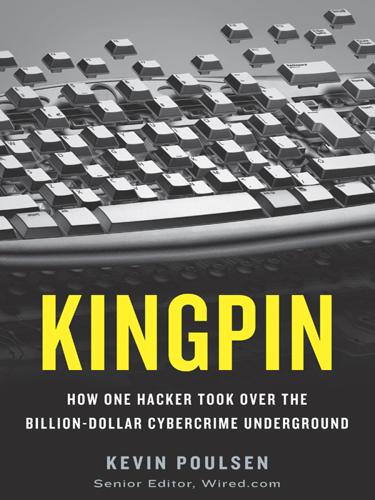
Kingpin: How One Hacker Took Over the Billion-Dollar Cybercrime Underground
by
Kevin Poulsen
Published 22 Feb 2011
It accepted an inquiry from the Internet, as it should, and copied it byte for byte into the temporary buffer “anbuf” in the server’s memory. But it didn’t properly check the size of the incoming data. Consequently, a hacker could transmit a deliberately overlong query to a BIND server, overflow the buffer, and spill data into the rest of the computer’s memory like oil from the Exxon Valdez. Performed haphazardly, such an attack would cause the program to crash. But a careful hacker could do much worse. He could load the buffer with his own small snippet of executable computer code, then he could keep going, tripping cautiously all the way to the top of the program’s memory space, where a special short-term storage area called the “stack” resides.
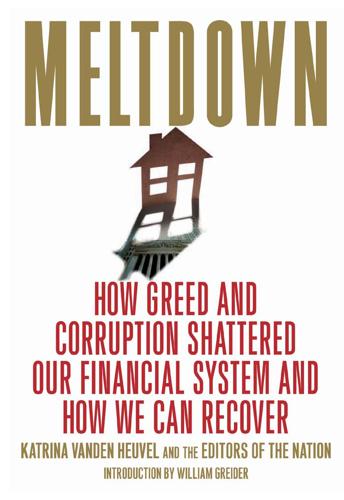
Meltdown: How Greed and Corruption Shattered Our Financial System and How We Can Recover
by
Katrina Vanden Heuvel
and
William Greider
Published 9 Jan 2009
By the time the bailout storm troops get through selling them off, the number is expected to be down around 1,500, with a corresponding drop in mortgage money. Most will have disappeared, via mergers, into super-S&Ls and superbanks whose social usefulness will be equivalent to supertankers like the Exxon Valdez. The moneylenders, who were willing to take any risk for big borrowers in the 1980s, are now reluctant to take any risk for small borrowers. This, by the way, makes them lawbreakers, but they don’t seem worried about that. The Community Reinvestment Act of 1977 declares that banks and S&Ls are chartered to serve the public and that they must help and give credit to low-and moderate-income citizens and small businesses.
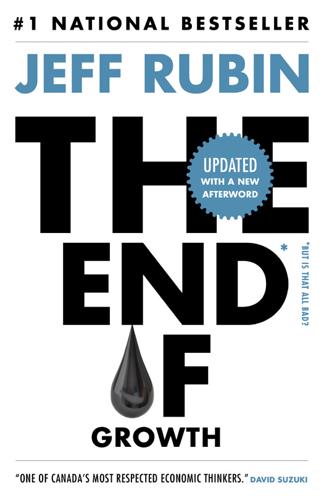
The End of Growth
by
Jeff Rubin
Published 2 Sep 2013
The industry is quick to assure anyone who will listen that Northern Gateway will adhere to the highest standards of environmental safety. All ships that enter the port, for instance, will be pulled by tugboats and guided by land-based radar. Only double-hulled tankers will be allowed into the terminal. I don’t doubt that the industry will fully deliver on these safety measures, but it only takes one Exxon Valdez and Jack and I won’t have a chance to fish those pristine waters ever again. And neither will anyone else. Opponents of the proposed pipeline don’t have to look far for a cautionary tale illustrating the likelihood that human error will someday enter the equation. Even now, the Queen of the North, part of the BC Ferries fleet, is resting underneath 1,400 feet of water not far from the northern edge of Princess Royal Island.
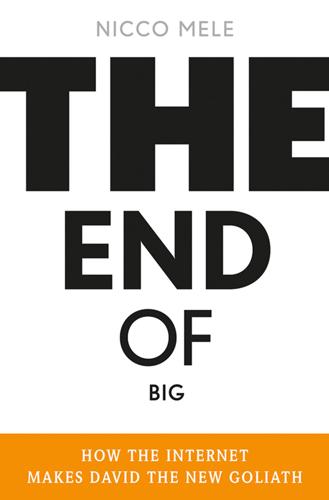
The End of Big: How the Internet Makes David the New Goliath
by
Nicco Mele
Published 14 Apr 2013
You click the appropriate button, and the next galaxy is automatically served to you.”30 In the first few months after its launch, 80,000 volunteers classified more than 10 million images of galaxies. The crowdsourcing of science uncovers fascinating opportunities. Almost twenty years after the Exxon Valdez oil spill, scientists working on the cleanup grappled with 20,000 gallons of oil that still lay at the bottom of the Prince William Sound. Because of Alaska’s cold temperatures, oil thickened and hardened to a cement-like consistency, confounding pumping equipment. The nonprofit Oil Spill Recovery Institute opened the problem up to anyone, offering a $20,000 prize for a viable solution.
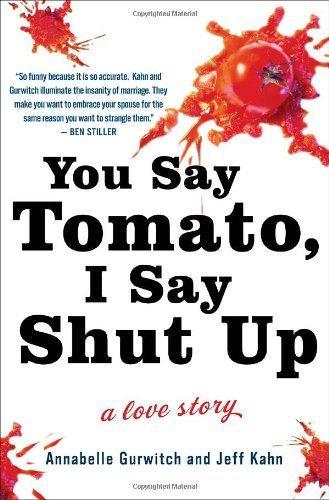
You Say Tomato, I Say Shut Up
by
Annabelle Gurwitch
Published 31 Aug 2010
Sadly, not being crafty in any way at all, I have been reduced to placing smoke detectors all over the house in case any of Jeff’s structures should ignite and reduce our home to a pile of ashes. JEFF First of all, 98.9 percent of the time I throw the right trash into the right recycle bin, so why does my accidentally putting one recyclable item into the wrong wastebasket make me, according to Annabelle, the captain of the Exxon Valdez? Let’s talk about how well all of her initiatives have worked out. One year she insisted on fruit-sweetened whole wheat cupcakes for Ezra’s birthday party. Some of the boys threw them on the ground in disgust while others used them as baseballs and batted them against the side of our house. They were so dense, they’re still decomposing in the backyard three years later.
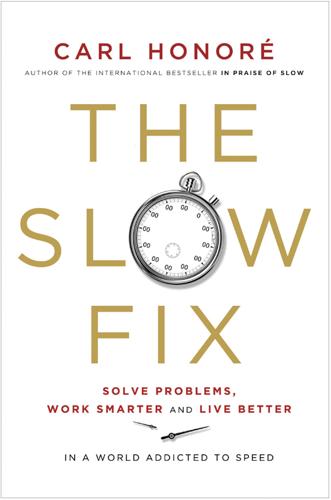
The Slow Fix: Solve Problems, Work Smarter, and Live Better in a World Addicted to Speed
by
Carl Honore
Published 29 Jan 2013
“Instead of putting a plaster over problems, we’re now going deeper and dealing with them at their root. We’re nipping problems in the bud by stopping them before they even happen.” Other air forces, from Israel to Australia, have taken notice. Adding the mea culpa to your problem-solving toolbox pays off beyond the military. Take ExxonMobil. After the epic Exxon Valdez oil spill off the coast of Alaska in 1989, the company set out to catch and investigate every screw-up, however small. It walked away from a large drilling project in the Gulf of Mexico because, unlike BP, it decided drilling there was too risky. Safety is now such a part of the corporate DNA that every buffet laid out for company events comes with signs warning not to consume the food after two hours.
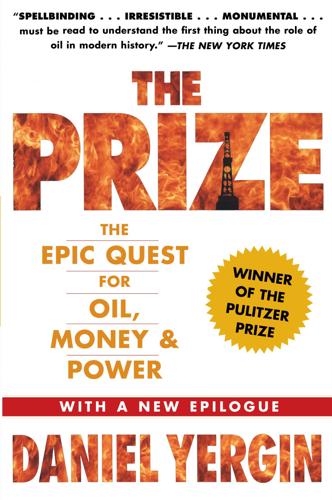
The Prize: The Epic Quest for Oil, Money & Power
by
Daniel Yergin
Published 23 Dec 2008
Chernobyl, with its threat of invisible but deadly danger and its warning of technology out of control, provided a great thrust to the new wave of environmentalism. In the United States, another event took on great importance—though without the same risk to human health or life. It occurred at four minutes after midnight, on Good Friday, March 24, 1989, when the supertanker Exxon Valdez rammed into the rocky Bligh Reef in Alaska's Prince William Sound, spilling 240,000 barrels of petroleum into those pristine waters. The expenditure of upwards of $2 billion on the cleanup did nothing to erase the Valdez spill from the political map. Coming as it did on top of a host of other concerns, the tanker accident strengthened the reborn environmental consciousness and the willingness on the part of many people to trade off energy production in favor of environmental protection.
…
[4] Thane Gustafson, Crisis Amid Plenty: The Politics of Soviet Energy Under Brezhnev and Gorbachev (Princeton: Princeton University Press, 1989), pp. 5-6. [5] Interview with Robert O. Anderson. [6] Cambridge Energy Research Associates, Energy and the Environment: The New Landscape of Public Opinion (1990). [7] National Response Team, The Exxon Valdez Oil Spill: A Report to the President from Samuel K. Skinner and William K. Reilly, May 1989. On oil production, Robert Esser, "The Capacity Race: The Future of World Oil Supply," (Cambridge: Cambridge Energy Research Associates, 1990). Notes Upstream, Downstream, All Around the Stream All of the oil world is divided into three.
…
Petroleum and Petroleum Equipment Commodity Study. Washington, D.C.: GPO, 1949. U.S. Federal Trade Commission. Foreign Ownership in the Petroleum Industry. Washington, D.C.: GPO, 1923. ---------. Prices, Profits, and Competition in the Petroleum Industry. Washington, D.C.: GPO, 1928. U.S. National Response Team. The Exxon Valdez Oil Spill: A Report to the President from Samuel K. Skinner and William K. Reilly. May 1989. U.S. National Security Council. Documents of the NSC, 1947-77. Ed. Paul Kesaris. Washington, D.C. and Frederick, Md.: University Publications of America, 1980-87. Microfilm. ---------. Minutes of Meetings of the NSC, with Special Advisory Reports.
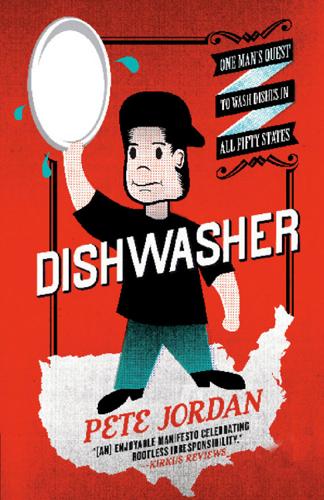
Dishwasher: One Man's Quest to Wash Dishes in All Fifty States (P.S.)
by
Pete Jordan
Published 1 May 2007
A couple days later, I studied dozens of three-by-five-inch index cards on the campus ride board. One read: “Two guys driving up to Alaska looking for a third person to help share the cost of gas.” I called them and was told they were heading up to find work in the oil spill cleanup. It was April 1989. A few weeks before, the oil tanker Exxon Valdez had struck a reef and dumped at least ten million gallons of crude oil into the Prince William Sound. It sounded intriguing, so I bought a fifteen-dollar tent and left with Jack and Ali a couple days later. It was dusk when we arrived in Valdez—namesake for the doomed oil tanker and epicenter for the cleanup effort.

Food and Fuel: Solutions for the Future
by
Andrew Heintzman
,
Evan Solomon
and
Eric Schlosser
Published 2 Feb 2009
And nowhere is this more evident than in the dismal science, economics. The economic models the world still uses to calculate value, like the GDP, do not account for damage to “natural capital” that results from human industry. This flaw in our economic model leads to many perverse results. In the classic example, the Exxon Valdez oil spill actually caused an increase in Alaska’s GDP. The cleanup caused profitable economic activity, but the cost of the pollution was not factored in. The distortion was tragic. Who sees an oil spill as a net gain for a local economy? Apparently, we do. Throughout our economy, we almost never factor in the ecological costs into our goods and services.

Cold: Adventures in the World's Frozen Places
by
Bill Streever
Published 21 Jul 2009
Imagination cannot extrapolate beyond the temperatures it has experienced. I stand in the sun, face upward, enjoying for the moment a latitudinal spring. MAY It is May fifth and hovering in the high forties on Prince William Sound, southeast of Anchorage, the site, seventeen years ago, of the 1989 Exxon Valdez oil spill. Prince William Sound is Alaska at its best: a piece of the ocean protected by snow-covered mountains, kelp and barnacles visible through clear water, puffins and otters on the surface, the occasional bear foraging along the shore, orcas and sea lions in the waves. Weather and time have washed away obvious remnants of the spill, but oil still sits beneath the gravel on certain beaches, and biologists continue to argue over evidence of residual damage.
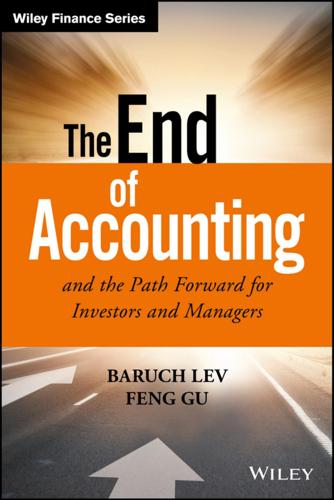
The End of Accounting and the Path Forward for Investors and Managers (Wiley Finance)
by
Feng Gu
Published 26 Jun 2016
Rockefeller, its heavy investment over decades in oil prospecting and explorations, as well as on the careful development of highly skilled personnel, global relationships with governments, satisfied customers, and trusting shareholders. All those past investments in physical and human capital charted an increasing path of development and growth for the company that can be expected to persist for a considerable time. Even major environmental disasters, like the Exxon Valdez spill (March 1989), were, in retrospect, just a hiccup in the relentless growth path of the company.6 Investors’ Fault or Accounting’s? 53 Given a certain degree of path dependence in the evolution of all business enterprises, historical financial reports presumably provide a basis for predicting their future performance, after allowing, of course, for foreseeable future changes in economic conditions (recessions) and circumstances (major restructuring).

Rigged: The True Story of an Ivy League Kid Who Changed the World of Oil, From Wall Street to Dubai
by
Ben Mezrich
Published 11 Aug 2008
David hurried toward the door. As he passed through, Giovanni shouted after him: “And, kid, I’m glad you didn’t die at the board meeting. Would have been a lot of fucking paperwork to fill out.” Chapter 13 Four hours later, David was so deep in oil, he felt like one of those ducks they used to show on TV after the Exxon Valdez destroyed the coast of Alaska. The task Giovanni had assigned—via Harriet, of course, who actually smiled as she dropped the offending material into the in-box that had miraculously appeared on the desk in his cubicle while he was at home recovering from his appendix bomb—was fascinating in theory.
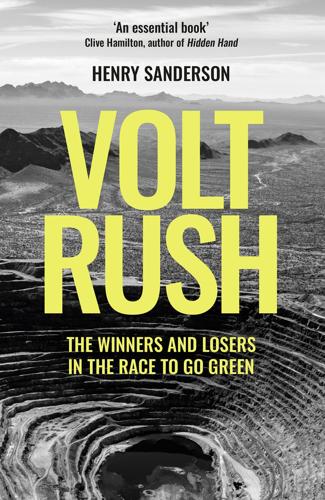
Volt Rush: The Winners and Losers in the Race to Go Green
by
Henry Sanderson
Published 12 Sep 2022
In the summer of 2020 over 21,000 tonnes of diesel oil leaked into the Ambarnaya River from a fuel tank at a power plant near the Russian Arctic city of Norilsk, turning the waters red. The spill was so severe that Russia’s President, Vladimir Putin, called a state of emergency. Greenpeace compared it to the 1989 Exxon Valdez disaster in Alaska. ‘The scale of the damage to Arctic waterways is unprecedented,’ Russia’s ecology minister, Dmitry Kobylkin, said. The impact of the diesel spill was likely to last for years, and spread through the water and soil into the food chain, affecting local animals and birds.11 A group of academics estimated it could take decades to clean up.
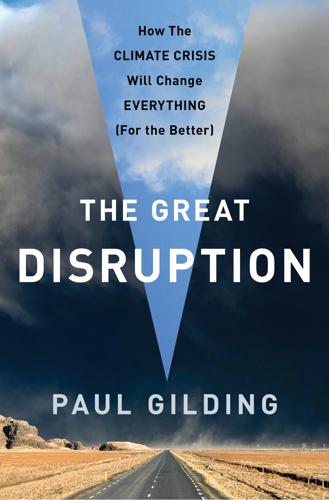
The Great Disruption: Why the Climate Crisis Will Bring on the End of Shopping and the Birth of a New World
by
Paul Gilding
Published 28 Mar 2011
The stories of this incident are still told and resonate in Sweden to this day. As well as locking in public skeptism of the safety of nuclear power, people had been given a palpable example of global interconnectedness. The 1980s also brought one of the world’s most famous oil spills by the world’s least favorite oil company, when the Exxon Valdez spilled 250,000 barrels of oil into the pristine waters of Alaska in 1989. A legal battle followed to hold Exxon accountable for the damage—they had placed in charge of the tanker a known alcoholic, who was drunk and not on the bridge at the time the vessel ran aground. At the initial trial, a jury levied $5 billion in punitive damages against Exxon.
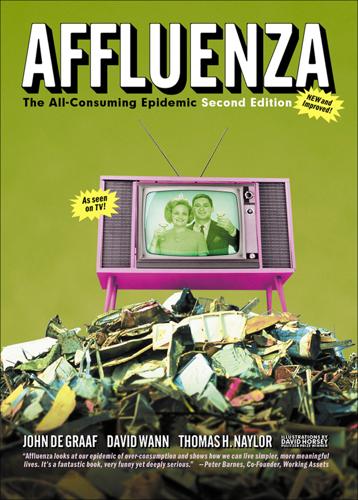
Affluenza: The All-Consuming Epidemic
by
John de Graaf
,
David Wann
,
Thomas H Naylor
and
David Horsey
Published 1 Jan 2001
They learn to “wipe out that germ” with Lysol, and study geothermal energy by eating Gusher’s Fruit Snacks (the “teachers’ guide” suggests that each student be given a Gusher to bite and to compare the sensation to a volcanic eruption!). They also learn the history of Tootsie Rolls, make shoes for Nike as an environmental lesson, count Lay’s potato chips in math class, and find out why the Exxon Valdez oil spill wasn’t really harmful at all (materials courtesy of— you guessed it—Exxon) or why clear-cutting is beneficial—with a little help from Georgia-Pacific. Maybe we could turn around the steady decline of our children’s SAT scores if we just asked them questions about good and bad hair days instead of world geography.
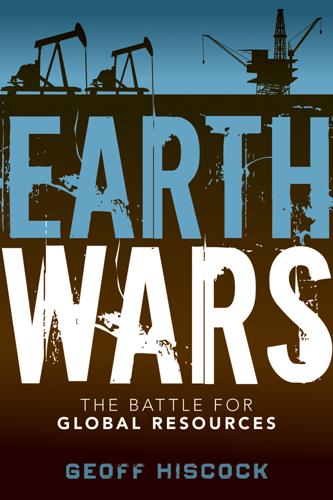
Earth Wars: The Battle for Global Resources
by
Geoff Hiscock
Published 23 Apr 2012
If Shell is successful and can bring oil ashore and into a proposed connection to the Trans Alaska pipeline by 2020, then the area’s economy will enjoy a significant boost. ConocoPhillips and Norway’s Statoil also aspire to drill in the Chukchi Sea, though in Statoil’s case it will be 2014 at the earliest. Overshadowing all Alaskan development is the memory of the 1989 Exxon Valdez tanker oil spill in Prince William Sound, which had devastating consequences for birds and marine life. Gulf of Mexico Prospects The Arctic is a relatively long-term play. There are more immediate prospects in the Gulf of Mexico, despite BP’s disastrous Macondo well blowout in April 2010 that set off an explosion on the Deepwater Horizon drilling rig.

This Will Make You Smarter: 150 New Scientific Concepts to Improve Your Thinking
by
John Brockman
Published 14 Feb 2012
Cancún follows Copenhagen follows Kyoto, but the more we dither and no extraordinary disaster follows, the more dithering seems just fine. Such behavior is not unique to climate change. It took the sinking of the Titanic to put sufficient lifeboats on passenger ships, the huge spill from the Amoco Cadiz to set international marine pollution rules, and the Exxon Valdez disaster to drive the switch to double-hulled tankers. The same pattern is seen in the oil industry, with the 2010 Gulf spill the latest chapter in the “Disaster first; regulations later” mind-set of Homo dilatus. There are a million similar stories from human history. So many great powers and once-dominant corporations slipped away as their fortunes declined without the necessary crisis to force change.

Pour Your Heart Into It: How Starbucks Built a Company One Cup at a Time
by
Howard Schultz
and
Dori Jones Yang
Perhaps the reason lies in our strong leaning toward individualism. Yet the more small business succeeds, the bigger it becomes. Does that make it suddenly worthy of scorn? If you asked people in a focus group, “Tell me what Big Business means,” you’d almost certainly get a series of negative statements. At one extreme they might mention the Exxon Valdez oil tanker crashing and ruining Alaska’s waters. You’d get “asbestos.” You’d get “Love Canal.” You’d get “people who lie.” You’d get Danny DeVito’s movie Other People’s Money. Big Business, the common thread would run, is capitalistic and therefore threatening. And what’s small business? Ask the same focus group, and they may well give you a set of completely opposite reactions.
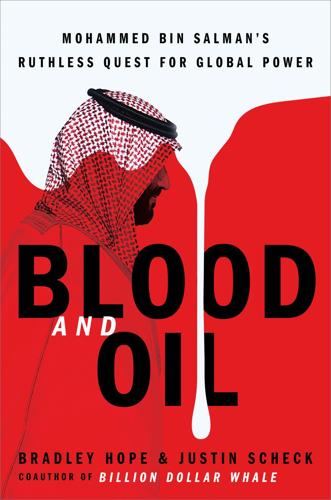
Blood and Oil: Mohammed Bin Salman's Ruthless Quest for Global Power
by
Bradley Hope
and
Justin Scheck
Published 14 Sep 2020
American and British engineers and accountants had higher salaries than those from India or Pakistan. Professionals from Africa made even less. And in an industry whose other big companies developed an obsession with safety after paying gigantic fines and legal settlements for disasters like the Exxon Valdez oil spill and BP’s Gulf of Mexico oil rig explosion, Aramco had never been held to the same kind of standards. It was governed by the Saudi courts, which were controlled by the same royal family that owned Aramco. So it lacked the same incentive to avoid costly and publicly humiliating accidents.

The Measure of Progress: Counting What Really Matters
by
Diane Coyle
Published 15 Apr 2025
These are widely used for individual studies in the fields of environmental and cultural economics. The extensive use of contingent valuation methods, in particular for environmental values, was boosted by the report of the expert commission led by Kenneth Arrow (Arrow et al. 1993) in the wake of the 1989 Exxon Valdez disaster (to better inform the subsequent lawsuits), which set out the prevailing understanding of best practice in contingent valuation exercises. However, sentiment in the economics profession t oward the method of surveying p eople to ask how much they would be willing to accept (WTA) to lose an amenity or willing to pay (WTP) to gain it is well exemplified by a pair of articles by Jerry Hausman.

Geography of Bliss
by
Eric Weiner
Published 1 Jan 2008
For the Bhutanese, happiness is a collective endeavor. The phrase “personal happiness” makes no sense to them or, as Karma Ura told me, “We don’t believe in this Robinson Crusoe happiness. All happiness is relational.” A quick quiz. What do the following events have in common? The war in Iraq. The Exxon Valdez oil spill. The rise in America’s prison population. The answer: They all contribute to our nation’s gross national product, or what’s now referred to as gross domestic product, or GDP, and therefore all are considered “good,” at least in the dismal eyes of economists. GDP is simply the sum of all goods and services a nation produces over a given time.
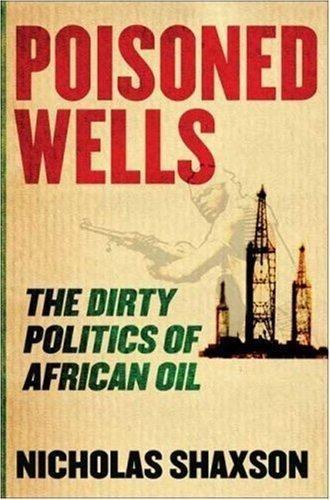
Poisoned Wells: The Dirty Politics of African Oil
by
Nicholas Shaxson
Published 20 Mar 2007
The pot of grievance was first brought to the boil not by Asari’s Ijaws but by a smaller group: half a million Ogonis, led by the firebrand politician and writer Ken Saro-Wiwa. When the Ogonis launched a bill of rights in 1990,21 rebuking the oil companies for polluting their land and sowing divisions, the plight of the Delta began to find sympathetic ears in the West, where the public had been sensitized to the horror of oil’s environmental impact by the Exxon Valdez oil spill disaster of 1989. Saro-Wiwa, like many Africans, understood western sensibilities far better than westerners understood Nigeria, and he exploited the environmentally sensitive mood. His book On a Darkling Plain, about the treatment of minority ethnic groups, added locally to the flammable mix.
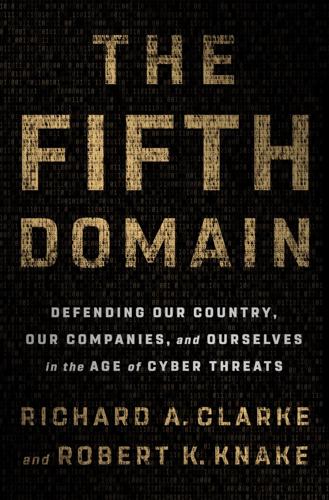
The Fifth Domain: Defending Our Country, Our Companies, and Ourselves in the Age of Cyber Threats
by
Richard A. Clarke
and
Robert K. Knake
Published 15 Jul 2019
Coast Guard National Pollution Funds Center showing that the vessel’s owner has the financial resources to cover the cost of cleaning up a spill. Such massive policies mean that the underwriters are going to want near certainty that they will never be paid out. Thus, we now have double-hulled ships and other improvements that have made spills such as the Exxon Valdez a thing of the past. If we treat data like oil spills and require companies to cover the full societal costs of losing data, the market will do the rest by ensuring that spills of data become exceedingly rare. These diverse regulatory models could be applied differently depending on the sector and the harm that government is trying to prevent.

Yoga Nidra: The Art of Transformational Sleep
by
Kamini Desai
Published 7 Mar 2017
Performance can be affected and mistakes can easily be made due to lack of sleep. Investigators ruled that sleep deprivation was a significant factor in the 1979 Three Mile Island nuclear accident, as well as the nuclear meltdown at Chernobyl in 1986. Extreme sleep deprivation played a crucial role in the grounding of the Exxon Valdez oil tanker, as well as the explosion of the Space Shuttle Challenger. In both instances, decision makers were required to make critical judgments while they may have been impaired because of lack of sleep. The practice of Yoga Nidra shows promising results. In 2010, a study was conducted to assess whether meditation can improve performance and offset the effects of sleep loss.
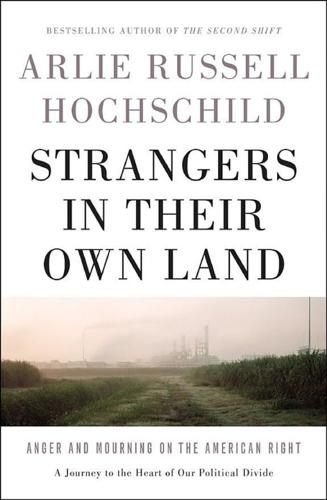
Strangers in Their Own Land: Anger and Mourning on the American Right
by
Arlie Russell Hochschild
Published 5 Sep 2016
President Obama called it “the worst environmental disaster America has ever faced.” The blowout killed eleven workers and injured seventeen. It ruptured an oil pipe 10,000 feet below the surface of the water, from which oil gushed into the Gulf continuously for three months. The spill released the equivalent of one Exxon Valdez–sized oil spill every three to four days—for 87 days. Highly trained engineers were helpless. Anxious experts testified on television. Louisiana’s 397-mile Gulf coast was critical, they said, to the life cycle of over 90 percent of all fish and 98 percent of all commercial species in the entire Gulf of Mexico.
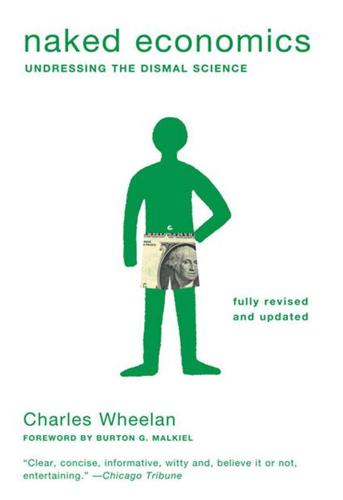
Naked Economics: Undressing the Dismal Science (Fully Revised and Updated)
by
Charles Wheelan
Published 18 Apr 2010
A private developer would never collect anything from these people and would therefore undervalue the open space. This is true for many of America’s natural resources. You have probably never been to Prince William Sound in Alaska and may never go there. Yet you almost certainly cared when the huge oil tanker Exxon Valdez ran aground and despoiled the area. Government can make us collectively better off by protecting these kinds of resources. Obviously not all collective endeavors require the hand of government. Wikipedia is a pretty handy resource, even for those who don’t make voluntary contributions to keep it up and running.
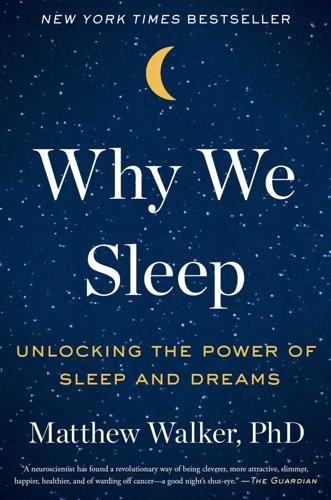
Why We Sleep: Unlocking the Power of Sleep and Dreams
by
Matthew Walker
Published 2 Oct 2017
It was the fault of sleep-deprived operators working an exhaustive shift, occurring, without coincidence, at one a.m. Thousands died from the long-term effects of radiation in the protracted decades following the event, and tens of thousands more suffered a lifetime of debilitating medical and developmental ill health. We can also recount the Exxon Valdez oil tanker that ran aground on Bligh Reef in Alaska on March 24, 1989, breaching its hull. An estimated 10 million to 40 million gallons of crude oil spilled across a 1,300-mile range of the surrounding shoreline. Left dead were more than 500,000 seabirds, 5,000 otters, 300 seals, over 200 bald eagles, and 20 orca whales.
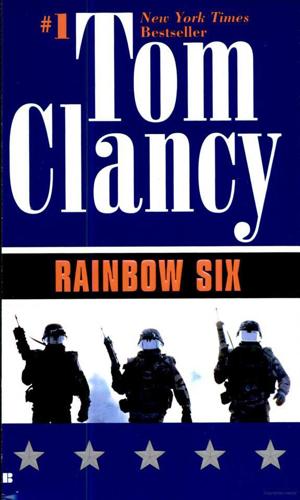
Rainbow Six
by
Tom Clancy
Published 2 Jan 1998
The map was spread on her coffee table: East of Alaska's Prudhoe Bay was a piece of tundra, over a thousand square miles of it, and geologists for British Petroleum and Atlantic Richfield - the two companies that had largely exploited the Alaskan North Slope, built the pipeline, and therefore helped cause the Exxon Valdez disaster-had made their public pronouncement. This oilfield, called AARM, was at least double the size of the North Slope. The report, still semi classified in the industrial sense, had come to the White House a week earlier, with confirming data from the United States Geological Survey, a federal agency tasked to the same sort of work, along with the opinion of the geologists that the field extended farther east, across the Canadian border-and exactly how far it extended they could only guess, because the Canadians had not yet begun their survey.
…
"They'll goddamned well say what I goddamned tell them to say!" "No, Kevin, they won't." Carol leaned back and rubbed her eyes. She'd read the entire report the previous night, and the sad truth was that the oil companies had gotten pretty damned smart about dealing with environmental issues. It was plain business sense. The Exxon Valdez had cost them a ton of money, in addition to the bad public relations. Three pages had been devoted to the changes in tanker safety procedures. Now, ships leaving the huge oil terminal at Valdez, Alaska, were escorted by tugs all the way to the open sea. A total of twenty pollution-control vessels were on constant standby, with a further number in reserve.

The Quest: Energy, Security, and the Remaking of the Modern World
by
Daniel Yergin
Published 14 May 2011
The marshy coastal waters of Louisiana were among the areas worst affected. As with the blowout itself, both government and industry were unprepared to deal with the environmental consequences. The Oil Pollution Act and the Oil Spill Liability Trust Fund had been established two decades earlier, in the aftermath of the Exxon Valdez accident in Alaska, to respond to an accident involving a tanker. But the loss of oil from a tanker, however serious, was a finite affair. A tanker only held so much oil. The response to a blowout on this scale had to be invented. A vast navy of ships of all sorts, 6,700 in all, were deployed to intercept and capture the oil; onshore, a small army was similarly raised to clean up the beaches.
…
(EPA) Environment Ministry, Indian enzymatic conversion “Era of the Super-Major” (Terreson) Estrella, Guilherme ethanol birth of of Brazil cellulosic cost of Europe antiwar demonstrations in biofuels in blackouts in Chernobyl and China compared with China’s relations with climate change and competition policy in economy and economic growth in energy efficiency in energy security of feed-in tariffs in fuel choice in gas market in gas prices in glaciers in global supply chains and Iran’s relations with Libya’s relations with LNG for natural gas for oil shortage in oil supplies for renewables in shale gas in Ukraine’s relations with Western in World War I, European Climate Exchange European Community European Union (EU) biofuels and climate change and competition directorate in energy efficiency in growth of Kyoto conference and non-Russian gas and renewables and Evans, Don Everett, Mass. EV1 electric vehicle exchange-traded funds Exelon Explorer I, externalities extra heavy oil (EHO) Exxon Mobil’s merger with solar energy and ExxonMobil Exxon Valdez accident F3DM plug-in hybrid Facebook factories Chinese Fahd, King of Saudi Arabia Faja Falih, Khalid al- Faraday, Michael “Farewell to Flashman, A” (Talbott) Federal Energy Policy Act (1992) Federal Energy Regulatory Commission (FERC) Federal Reserve Federal Trade Commission (FTC) FedEx feed-in law (feed-in tariff) Fell, Hans-Josef Fifth Fleet, U.S.
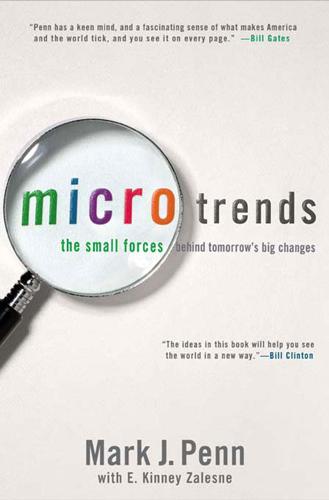
Microtrends: The Small Forces Behind Tomorrow's Big Changes
by
Mark Penn
and
E. Kinney Zalesne
Published 5 Sep 2007
In the 2005 Sleep in America poll, 60 percent of participants said they have driven drowsy in the last year, and 37 percent say they’ve nodded off or fallen asleep behind the wheel. The National Highway Traffic Safety Administration says drowsy driving is responsible for over 50,000 traffic accidents a year, including over 1,500 fatalities. Famous disasters like the Exxon Valdez grounding and the recent Staten Island Ferry crash were apparently caused by drivers asleep at the wheel. Less sleep also means less productivity. Two in 10 American adults say sleepiness caused them to make recent errors at work. Productivity costs have been estimated at $50 billion. And bad sleep threatens domestic harmony.

What Technology Wants
by
Kevin Kelly
Published 14 Jul 2010
Sociologist Charles Perrow calls these “normal accidents” because they “naturally” emerge from the dynamics of large systems. The system is to blame, not the operators. Perrow did an exhaustive minute-by-minute study of 50 large-scale technological accidents (such as Three Mile Island, the Bhopal disaster, Apollo 13, Exxon Valdez, Y2K, etc.) and concluded, “We have produced designs so complicated that we cannot anticipate all the possible interactions of the inevitable failures; we add safety devices that are deceived or avoided or defeated by hidden paths in the systems.” In fact, Perrow concludes, safety devices and safety procedures themselves often create new accidents.
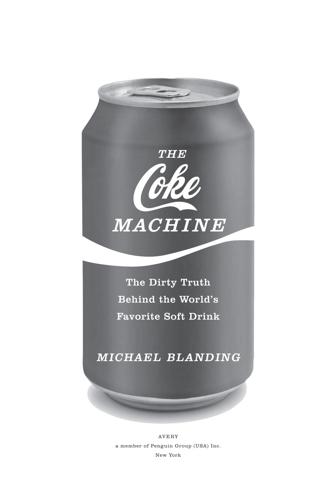
The Coke Machine: The Dirty Truth Behind the World's Favorite Soft Drink
by
Michael Blanding
Published 14 Jun 2010
Rather than use legislation or the courts, however, Rogers’s favored tactics have been loud and contentious activist campaigns that target companies’ financial connections and corporate image. In 2003, he was gearing up for his most ambitious campaign yet—an attempt to take on ExxonMobil over its failure to pay for the Exxon Valdez oil spill. Knowing Collingsworth had himself sued ExxonMobil in the past, he sent him an e-mail asking for help. Instead, Collingsworth called him with a very different proposal: develop ing a campaign against Coke. “Look, we’ve got a very serious life-and-death situation,” he said. “But we don’t have any money.”

Culture and Prosperity: The Truth About Markets - Why Some Nations Are Rich but Most Remain Poor
by
John Kay
Published 24 May 2004
And even with productivity twenty times Indian levels, Swedish wheat is not really economic: without the support of the European Union's Common Agricultural Policy, it is unlikely that wheat would be grown in Kivik at all (see chapter 26). 9. The Komi republic is about a thousand miles northeast of Moscow, with good skiing around its capital, Syktyvkar. In 1994-95 oil leaks from the KharyagaUsinsk pipeline produced a spill three times the size of Exxon Valdez's. 10. Nathan Rothschild died on July 28, 1836, probably from either staphylococcus or streptococcus septicemia, which came either from an abscess on his back or from the surgeons' knives used to treat it. This story is told in David Landes (1998), xvii-xviii. 11. Heston and Summers (1991); World Bank (1993).
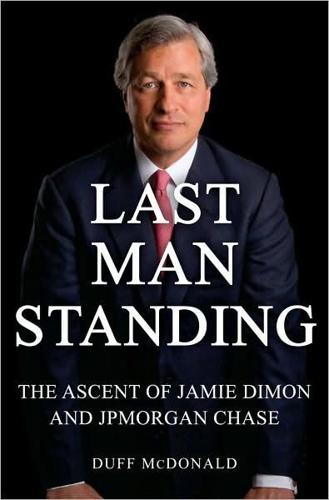
Last Man Standing: The Ascent of Jamie Dimon and JPMorgan Chase
by
Duff McDonald
Published 5 Oct 2009
Morgan team that had revolutionized credit derivatives in the late 1990s. The first innovation came to be known as a “credit default swap” (CDS). In looking for a way to reduce exposure to their client Exxon—which had recently tapped a multibillion-dollar credit line with the bank in anticipation of having to pay substantial fines for the Exxon Valdez’s oil spill—Winters’s colleague Blythe Masters had found another investor willing to insure the debt for the bank in exchange for an annual fee. In the process, J.P. Morgan was able to reduce its exposure to Exxon without having to sell the loan, thereby keeping client relations strong. (No corporate borrowers want to see their bank unloading their loans.)
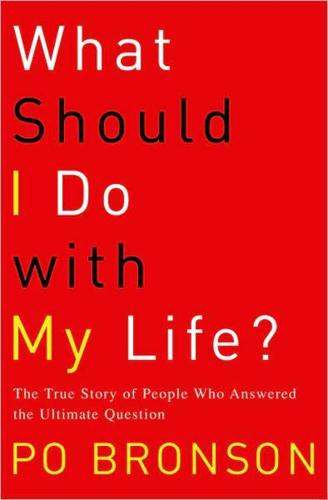
What Should I Do With My Life?
by
Po Bronson
Published 2 Jan 2001
Not kind of dead, like the computer industry, or almost dead, like the dot-com industry. There was no pretending. The laments of software engineers coming out of universities today have nothing on Bryce. In six months he was selling used cars off a lot in Lubbock, wondering, what happened? Cut to: 1989. The Exxon Valdez spilled eleven million gallons of heavy crude into Prince William Sound, Alaska, and in its wake a tiny new industry boomed: Environmental Consulting. Nobody trusted Big Oil to clean up its own mess. In most states, new laws forced oil companies to pay independent consulting firms to monitor their toxic land, and, when determined necessary, to oversee the cleanup.
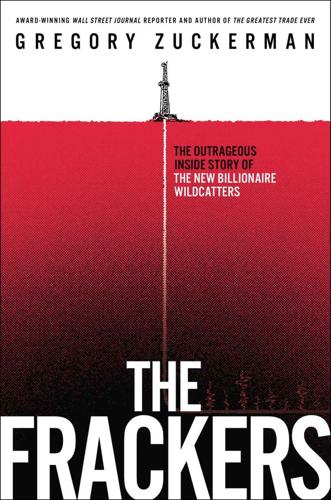
The Frackers: The Outrageous Inside Story of the New Billionaire Wildcatters
by
Gregory Zuckerman
Published 5 Nov 2013
He had spent more than three decades at the oil and gas giant and had reached the position of president of Exxon’s U.S. operations, one of the top jobs at the company. He was popular with the rank and file and in the middle of a long, successful career. But when the company’s grounded supertanker, the Exxon Valdez, began leaking oil in March 1989, Bill Stevens’s career also became ensnared. The oil tanker sent more than 250,000 barrels of crude pouring into icy Alaskan waters, one of the worst environmental disasters in U.S. history. Within forty-eight hours of the spill, Stevens, who ran the division overseeing Exxon’s crude shipments from Alaska, rushed to the site, trying his best to deal with the aftereffects.
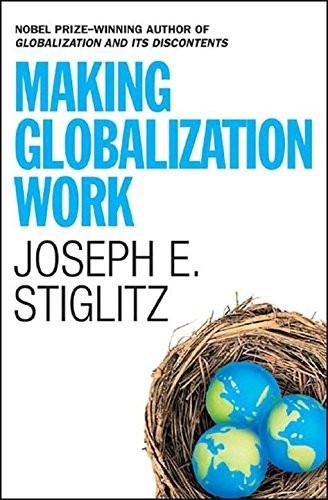
Making Globalization Work
by
Joseph E. Stiglitz
Published 16 Sep 2006
While they seldom reap the full value of the increase in profits that follow from their good decisions, even more seldom do they pay the full social costs of their bad decisions.10 It is too easy for corporate managers to hide behind the corporate veil. Even after he admitted that he had been drinking prior to boarding the ship, Joseph Hazelwood, the captain of the ship responsible for the 1989 Exxon Valdez oil spill—a spill which did environmental damage valued in the billions—was given only a slap on the wrist, with a fine of $51,000 and 1,000 hours picking up garbage along Anchorage-area highways. The Indian government did try to prosecute Union Carbide executives for the thousands of deaths at Bhopal, where a chemicals plant exploded in 1984, but Union Carbide was an American company and the United States refused to cooperate.

The Food Revolution: How Your Diet Can Help Save Your Life and Our World
by
John Robbins
Published 14 Sep 2010
Every place where the animal factories have located, neighbors have complained of falling sick."19 Learning how profound these problems have become, I've at times felt horrified and disgusted. But when we know the cause, we can work to solve the problems and prevent more from occurring. WHAT WE KNOW Gallons of oil spilled by the Exxon-Valdez: 12 million Gallons of putrefying hog urine and feces spilled into the New River in North Carolina on June 21, 1995, when a "lagoon" holding 8 acres of hog excrement burst: 25 millionZ° Fish killed as an immediate result: 10-14 millionZ' Fish whose breeding area was decimated by this disaster: Half of all mid-East Coast fish species22 Acres of coastal wetlands closed to shell fishing as a result: 364,00013 Amount of waste produced by North Carolina's 7 million factory-raised hogs (stored in open cesspools) compared to the amount produced by the state's 6.5 million people: 4 to 124 Relative concentration of pathogens in hog waste compared to human sewage: 10 to 100 times greater" As the pork industry has grown rapidly in North Carolina, so have problems with water pollution.
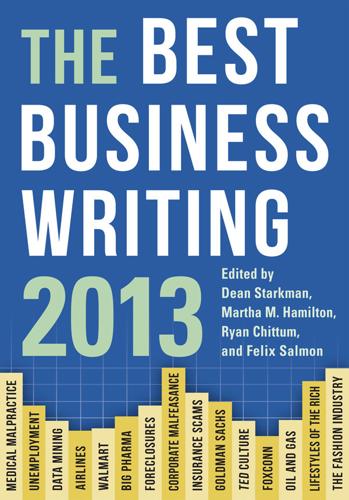
The Best Business Writing 2013
by
Dean Starkman
Published 1 Jan 2013
The company has a culture of secrecy—with nondisclosure agreements and internal security that can make it seem like an intelligence agency. Company executives deflect press coverage; they sometimes withhold cooperation from congressional investigators, if the letter of the law allows; and when they speak in public, they typically read out sanitized, carefully edited speeches or PowerPoint slides. On March 23, 1989, the Exxon Valdez, an oil tanker, ran aground on a reef in Alaska’s Prince William Sound. The captain had been drinking, and he left the bridge shortly before midnight, in violation of company policies. His crew members became confused, attempted to turn the ship, and lost track of their position altogether. At a few minutes past twelve, there was a terrible sound.
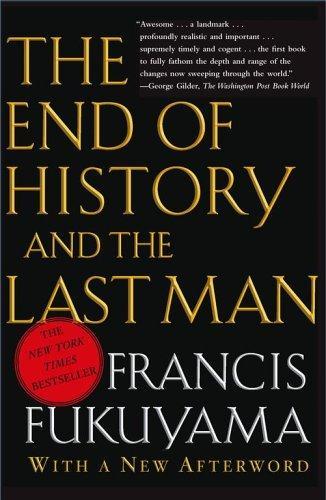
The end of history and the last man
by
Francis Fukuyama
Published 28 Feb 2006
Freedom could be had without democracy, but equality was the uniquely defining characteristic of democratic ages, and for that reason people clung to it more tenaciously. The excesses of freedom—the arrogant display of a Leona Helmsley or a Donald Trump, the crimes committed by an Ivan Boesky or Michael Milken, the damage done by the Exxon Valdez to Prudhoe Bay—are much more visible than the evils of extreme equality like creeping mediocrity or the tyranny of the majority. And while political freedom bestows exalted pleasures on a small number of citizens, equality provides the great mass of people with small enjoyments.9 Thus while the liberal project has been largely successful over the past four hundred years in excluding the more visible forms of megalothymia from political life, our society will continue to remain preoccupied with questions of equalizing dignity.

MacroWikinomics: Rebooting Business and the World
by
Don Tapscott
and
Anthony D. Williams
Published 28 Sep 2010
This kind of multidisciplinary cross-pollination is often central to producing breakthroughs. Indeed, InnoCentive solvers have been known to yield surprising results that lead organizations down paths they would never have considered. Take the Oil Spill Recovery Institute (OSRI), which was tasked by Congress with the responsibility for cleaning up the Exxon Valdez oil spill off the coast of Alaska. For twenty years it has been trying to figure out how to remove the eighty thousand barrels of oil still sitting at the bottom of Prince William Sound. The problem is these subarctic waters are extremely cold, which means the oil is almost solid and can’t be pumped out of the water using conventional technology.
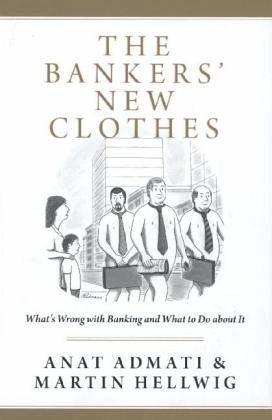
The Bankers' New Clothes: What's Wrong With Banking and What to Do About It
by
Anat Admati
and
Martin Hellwig
Published 15 Feb 2013
For example, on November 1, 1986, a huge fire broke out in a dye factory on the Rhine near the Swiss city of Basel. The water used to extinguish the fire mixed with the chemicals and flowed into the river, coloring it red and killing all fish over several hundred miles downstream (see Hernan 2010). The Exxon Valdez and, more recently, the BP Gulf of Mexico oil spills are other examples. 3. In the entire discussion we continue to ignore the benefit Kate derived from living in the house. Considering it would not change the discussion, because she lived in the house in all scenarios. 4. To simplify the discussion we are ignoring here again the potential losses if the house had been abandoned or lost value because of lack of maintenance. 5.
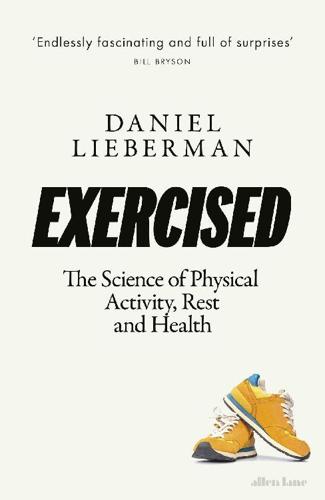
Exercised: The Science of Physical Activity, Rest and Health
by
Daniel Lieberman
Published 2 Sep 2020
The consensus opinion among experts is that sleep has declined in tandem with physical activity and that prior to the Industrial Revolution, people used to get more sleep, up to nine or ten hours a day, but the modern world’s “brutish treatment” of sleep has reduced this average to seven hours, with 5 percent of us sleeping less than five hours.2 The result is an “epidemic” of sleep deprivation that supposedly afflicts one in three people in industrial nations around the globe.3 You have probably heard that lack of sleep promotes obesity, shortens lives, causes more than 20 percent of auto accidents, and precipitates disasters like the Chernobyl nuclear meltdown, the crash of the Exxon Valdez, and lethal mistakes by sleepy doctors.4 Just as we are exhorted to exercise, we are admonished not to skimp on sleep, and millions of people spend billions of dollars on comfortable mattresses, earplugs to block out distracting noises, thick curtains to darken bedrooms, machines that lull us to sleep, and of course drugs that induce drowsiness.
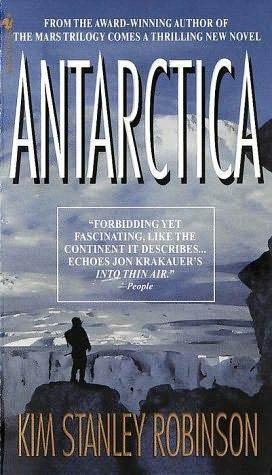
Antarctica
by
Kim Stanley Robinson
Published 6 Jul 1987
"Camp crackers?" "Just the Drambers, thanks, " Val said. Wade nodded his agreement; then tried one of the camp crackers. "What about shipping the oil out?" Wade asked. "Tankers. " "Dangerous?" "They ship a big load of oil down to McMurdo every summer. " "But if there was an accident, like the Exxon Valdez... " "Very messy. The Bahia dumped a big load of oil off the peninsula some decades back, and it was years and years before the coast cleaned itself. It did, however, eventually. The environment is pretty good with oil, if you take the long view. " "And add bacteria, " Misha said. "Yes, those bacteria. " Wade said, "We've heard rumors that the next generation of tankers might be submarines.
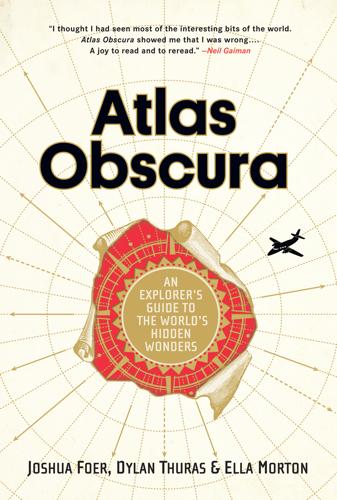
Atlas Obscura: An Explorer's Guide to the World's Hidden Wonders
by
Joshua Foer
,
Dylan Thuras
and
Ella Morton
Published 19 Sep 2016
Truk’s ghost fleet attracts much marine wildlife, including sharks, manta rays, turtles, and scuba divers. The ships continue to rust and deteriorate, causing ecological concerns—the three tankers on the lagoon floor contain about 32,000 tons (29 million kg) of oil, or about three-quarters of the amount spilled during the Exxon-Valdez disaster. Truk Lagoon is also known as Chuuk Lagoon. Flights from Guam arrive at Chuuk airport, on Weno Island in the middle of the lagoon. The trip takes about 90 minutes. 7.416667 151.783333 The world’s largest ship graveyard holds 47 vessels, 270 aircraft, and the remains of about 1,400 Japanese servicemen.
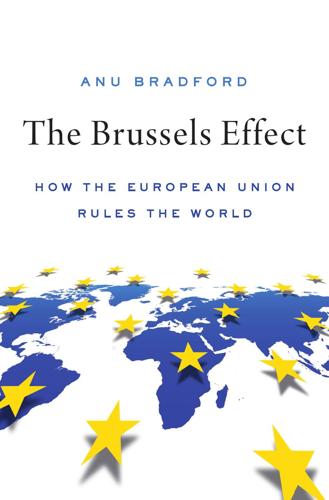
The Brussels Effect: How the European Union Rules the World
by
Anu Bradford
Published 14 Sep 2020
The International Maritime Organization’s (IMO’s) ban on single-hull oil tankers provides a somewhat different, yet distinctly intriguing, example.43 Compared to safer double-hull designs, single-hull oil tankers are more likely to lead to oil spills in the event of collision. Following the catastrophic Exxon Valdez oil spill of 1989 off the coast of Alaska, the United States moved in 1990 to ban single-hull tankers unilaterally. Yet, the United States did little to globalize the norm. Instead, it was the EU that successfully globalized the double-hull safety standard that originally emanated from the United States.
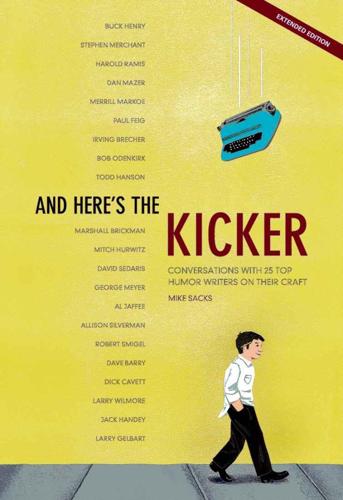
And Here's the Kicker: Conversations with 21 Top Humor Writers on Their Craft
by
Mike Sacks
Published 8 Jul 2009
But I kept working on it and honing it through the years. Eventually, the fold-in evolved into what we have now, more than forty years later, which is far more complicated. I've done more than four hundred. You took on a lot of serious issues with these fold-ins over the years, such as Vietnam, the Exxon Valdez, abusive parents, and homeless veterans. Was this an outlet for some of your concerns and anger over what was going on in the world? Not vehemently, but sometimes it became an outlet. But, you know, the fold-in is not supposed to be funny. Who knows what it is? It's a strange duck. One picture turns into another picture.
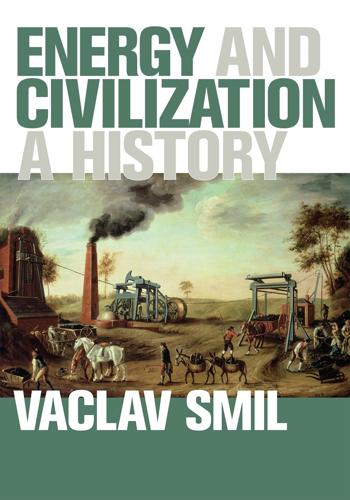
Energy and Civilization: A History
by
Vaclav Smil
Published 11 May 2017
Building ships capable of carrying a million tonnes of crude was technically possible but impractical for many reasons: their draft restricts their routes and ports of call (they cannot go through the Suez Canal or the Panama Canal), they need long distances to stop, they are very expensive to insure, and they have caused such catastrophic oil spills as those of the Amoco Cadiz (France 1978), Castillo de Belver (South Africa 1983), and the Exxon Valdez (Alaska 1989). The world’s largest tanker, the Seawise Giant, was built in 1979, enlarged to 564,763 dwt, hit in 1988 during the Iran-Iraq War, relaunched as the (nearly 459 m long) Jahre Viking (1991–2004), renamed Knock Nevis and used as a floating storage and offloading unit off Qatar (2004–2009), then sold to Indian ship-breakers and renamed Mont for its final journey to Alang in Gujarat (Konrad 2010).
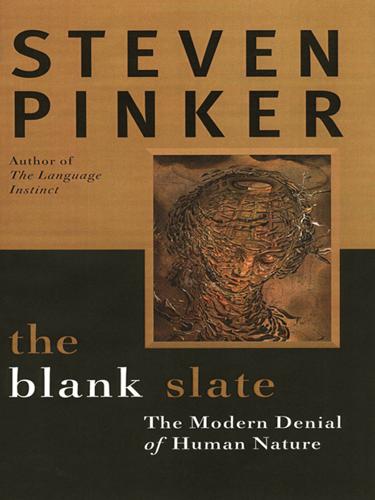
The Blank Slate: The Modern Denial of Human Nature
by
Steven Pinker
Published 1 Jan 2002
It turned out to cost millions of dollars to clean up the last 10 percent of the waste at a given site—money that could have been spent on cleaning up other sites or reducing other health risks. So the lavish fund went bankrupt before even a fraction of its sites could be decontaminated, and its effect on Americans’ health was debatable. After the Exxon Valdez oil spill, four-fifths of the respondents in one poll said that the country should pursue greater environmental protection “regardless of cost.” Taken literally, that meant they were prepared to shut down all schools, hospitals, and police and fire stations, stop funding social programs, medical research, foreign aid, and national defense, or raise the income tax rate to 99 percent, if that is what it would have cost to protect the environment.

Roller-Coaster: Europe, 1950-2017
by
Ian Kershaw
Published 29 Aug 2018
Various reports showed the damage from carbons produced, for example, by refrigerators, hairsprays and other domestic aerosols to the ozone layer (which filters out ultraviolet radiation from the sun); the poisoning of fisheries through outpourings of industrial chemicals; the ‘acid rain’ from chemical emissions that was destroying vegetation and polluting water supplies; the dangers of lead in petrol; the loss of Amazonian rainforests to produce timber for the developed world; and the immense harm to wildlife caused by huge spillage from oil tankers that ran aground (such as the Exxon Valdez in Alaska in March 1989, leaking ten million tons of crude oil and killing immense numbers of birds). Western governments could not ignore the warnings indefinitely. The environment was becoming a political issue. Green parties, reflecting the widening anxieties about environmental damage, started to proliferate.
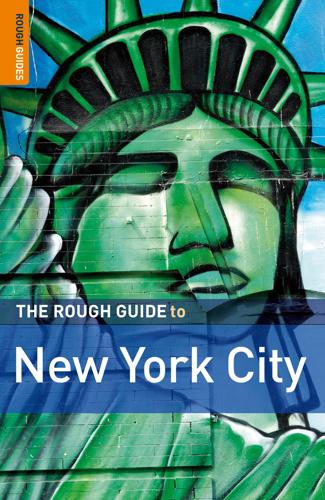
The Rough Guide to New York City
by
Martin Dunford
Published 2 Jan 2009
While Greenpoint and neighboring areas were originally known as Boswijck (later Bushwick), meaning “wooded district”, the Industrial Revolution took the “green” out of Greenpoint, as the area became home to the “Black Arts” – printing, pottery, gas, glass, and iron. In 1950, refineries caused a 17- to 30million-gallon underground oil spill, larger than the Exxon Valdez disaster in Alaska, which spilled “only” 11 million gallons. It’s not immediately visible except as an occasional slick on the surface of Newtown Creek, which separates Greenpoint from Queens, but it’s very much on the minds of residents who fear the toxic effects of the residue. Finally, in 2007, the city sued ExxonMobil and other companies to clean it up, if that is even possible at this point.

Enlightenment Now: The Case for Reason, Science, Humanism, and Progress
by
Steven Pinker
Published 13 Feb 2018
Two of the deadliest forms of pollution—contaminated drinking water and indoor cooking smoke—are afflictions of poor countries.27 But as poor countries have gotten richer in recent decades, they are escaping these blights: the proportion of the world’s population that drinks tainted water has fallen by five-eighths, the proportion breathing cooking smoke by a third.28 As Indira Gandhi said, “Poverty is the greatest polluter.”29 Figure 10-4: Deforestation, 1700–2010 Source: United Nations Food and Agriculture Organization 2012, p. 9. The epitome of environmental insults is the oil spill from tanker ships, which coats pristine beaches with toxic black sludge and fouls the plumage of seabirds and the fur of otters and seals. The most notorious accidents, such as the breakup of the Torrey Canyon in 1967 and the Exxon Valdez in 1989, linger in our collective memory, and few people are aware that seaborne oil transport has become vastly safer. Figure 10-5 shows that the annual number of oil spills has fallen from more than a hundred in 1973 to just five in 2016 (and the number of major spills fell from thirty-two in 1978 to one in 2016).

The Rough Guide to New York City
by
Rough Guides
Published 21 May 2018
While Greenpoint and neighbouring areas were originally known as Boswijck (later Bushwick), meaning “wooded district”, the Industrial Revolution took the “green” out of Greenpoint, as the area became home to the “Black Arts” – printing, pottery, gas, glass and iron. In 1950, refineries caused a 17- to 30-million-gallon underground oil spill, larger than the Exxon Valdez disaster in Alaska, which spilled “only” eleven million gallons. It’s not immediately visible except as an occasional slick on the surface of Newtown Creek, which separates Greenpoint from Queens, but it’s very much on the minds of residents who fear the toxic effects of the residue. Cleanup is ongoing, but still has years to finish – if that’s even possible at this point.
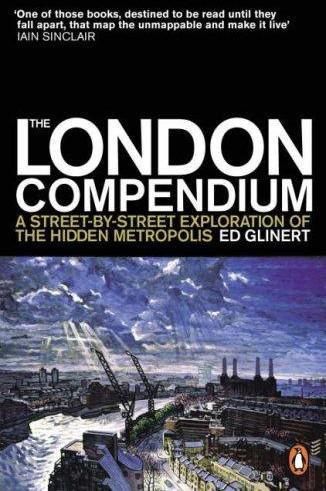
The London Compendium
by
Ed Glinert
Published 30 Jun 2004
The company sealed its reputation as a symbol of trust following the 1906 San Francisco earthquake, when Cuth-bert Evan Heath, a leading broker and underwriter, telegraphed instructions to his California representatives to pay all claims to Lloyd’s customers in full, immediately, whatever the terms of their policies. Twelve years later the sinking of the Titanic cost Lloyd’s underwriters more than $1 million, but decades of success followed until the end of the twentieth century when a series of cataclysmic events – asbestos poisoning, hurricanes, maritime disasters such as the Exxon Valdez oil spill – resulted in $12.4 billion in losses, losses exacerbated by the 2001 World Trade Center destruction. Some Lloyd’s ‘Names’ (those who had pledged a large sum to join a syndicate) refused to meet the losses, saying they had been cheated by those with inside information; the company’s solution was to offer the 34,000 Names a $5 billion package that would cut their losses in return for an agreement to end all litigation
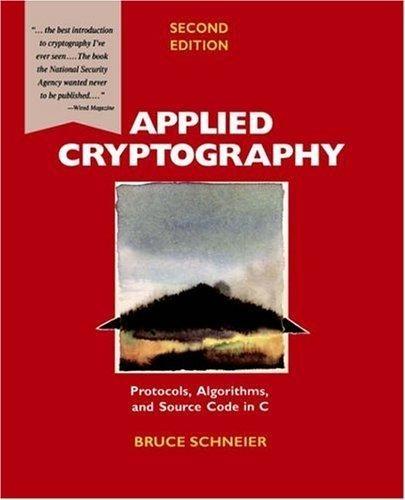
Applied Cryptography: Protocols, Algorithms, and Source Code in C
by
Bruce Schneier
Published 10 Nov 1993
Previous Table of Contents Next ----------- Assume the typical algae cell is the size of a cube 10 microns on a side (this is probably a large estimate), then 1015 of them can fill a cubic meter. Pump them into the ocean and cover 200 square miles (518 square kilometers) of water to a meter deep (you figure out how to do it—I’m just the idea man), and you’d have 1023 (over a hundred billion gallons) of them floating in the ocean. (For comparison, the Exxon Valdez spilled 10 million gallons of oil.) If each of them can try a million keys per second, they will recover the key for a 128-bit algorithm in just over 100 years. (The resulting algae bloom is your problem.) Breakthroughs in algae processing speed, algae diameter, or even the size puddle one could spread across the ocean, would reduce these numbers significantly.

Lonely Planet Turkey (Travel Guide)
by
Lonely Planet
,
James Bainbridge
,
Brett Atkinson
,
Steve Fallon
,
Jessica Lee
,
Virginia Maxwell
,
Hugh McNaughtan
and
John Noble
Published 31 Jan 2017
At that time, perhaps a few thousand ships a year passed through, but this has risen to over 45,000 vessels annually; around 10% are tankers, which carry over 100 million tonnes of hazardous substances through the strait every year.` There have already been serious accidents, such as the 1979 Independenta collision with another vessel, which killed 43 people and spilt and burnt some 95,000 tonnes of oil (around 2½ times the amount spilt by the famous Exxon Valdez in Alaska). Following the Gulf of Mexico disaster in 2010, the Turkish government renewed its efforts to find alternative routes for oil transportation. Its ambitious plans include a US$12 billion canal to divert tankers, which would see the creation of two new cities by the Bosphorus and the world's largest airport.

Lonely Planet Turkey
by
Lonely Planet
At that time, perhaps a few thousand ships a year passed through, but this has risen to over 45,000 vessels annually; around 10% are tankers, which carry over 100 million tonnes of hazardous substances through the strait every year.’ There have already been serious accidents, including the 1979 Independenta collision with another vessel, which killed 43 people and spilt and burnt some 95,000 tonnes of oil (around 2½ times the amount spilt by the infamous Exxon Valdez in Alaska). In 2018 a historic yalı on the Asian shore was extensively damaged when an out-of-control Maltese-flagged tanker crashed into it. Fortunately, no-one was injured. Following the Gulf of Mexico disaster in 2010, the Turkish government renewed its efforts to find alternative routes for oil transportation.